













Not to elicit a foreboding school principal kind of vibe here, but has that question ever popped up in your mind spontaneously at one time or another? On my end, it has on a few occasions, particularly because of my profession. Here we are in the motoring beat constantly in touch with our esteemed friends and contacts in the local automotive industry, heralding the latest news on their current offerings and catering to fellow car and motorcycle enthusiasts who ingest and actually count on the content we push out for more than just information and entertainment, but for reliable reference that will affect, if not improve, their daily lives in the aspect of motoring. Do we have even a tinge of guilt in promoting what would literally increase the greenhouse effect in our environment? Well, yes and no. We cannot afford to oversimplify such an issue, as motorized vehicles in a literal sense, still make the world go ‘round. Pardon me for that last oversimplification though.
We are all aware that the global auto industry is transitioning towards electrification for the sake of saving the environment (we’d like to think that is the primary goal). It is a slow, costly and complicated process, but it’s the decisive actions of those determined to make it happen sooner that will get things moving, and eventually implemented.
Not many are aware that RA11697 or the Electric Vehicle Industry Development Act (EVIDA) has already lapsed into law last April 15, which is a very welcome boost for the local auto industry’s push towards electrification. In a nutshell, the EVIDA law incentivizes the importation, manufacture, and the selling of electric vehicles and all the other facilities and services related to it, right down to of course- owning one, in terms of reduced tax duties and the expeditious processing of registration, applications, permits, franchises and licenses- a whole basket o’ plenty so to speak. It goes way beyond the benefits of the seller and the end user. Think of the employment opportunities from an entire industry built around it. Relax your smile
muscles a bit from the fact that Hybrids and EVs are exempt from the number coding scheme, will ya? Well they are, for nine years at least.
But while all that may be encouraging and exciting, we need to pull back our wide-eyed sunset-stares to what’s behind our steering wheels. We don’t need hybrids or EVs to reduce our carbon footprint. We don’t even need to be in the confines of four doors strapped in a seatbelt (or on a motorcycle seat for that matter) to make a positive impact on our environment. There’s no shame in going back to basics. We’ve discovered the beauty and cost-effectiveness of working from home, so let’s sustain what we can from it. Let’s trim down on those unnecessary drives and drive in a fuel-efficient and economical manner… let’s get on a bicycle, walk even. Avoid using disposable plastics, reuse what we can. Practice mindful consumption. The last one may be quite difficult especially this Christmas season. But hey, less holiday weight to smirk about next month.
We at C! Magazine would like to extend our huge gratitude to all our friends and supporters in the automotive industry, and especially to our readers and followers who’ve been with us through all these years. We also thank our counterparts in the motoring media for keeping us on our toes. I am grateful for my hardworking team, and that extends beyond Editorial- including my forward-thinking bosses of course. Lastly, I thank our Lord and Savior for another year of life. A good one. Merry Christmas everyone, remember that kindness and compassion go a long way.
Cheers!
Ardie O. Lopez EDITOR-IN-CHIEF
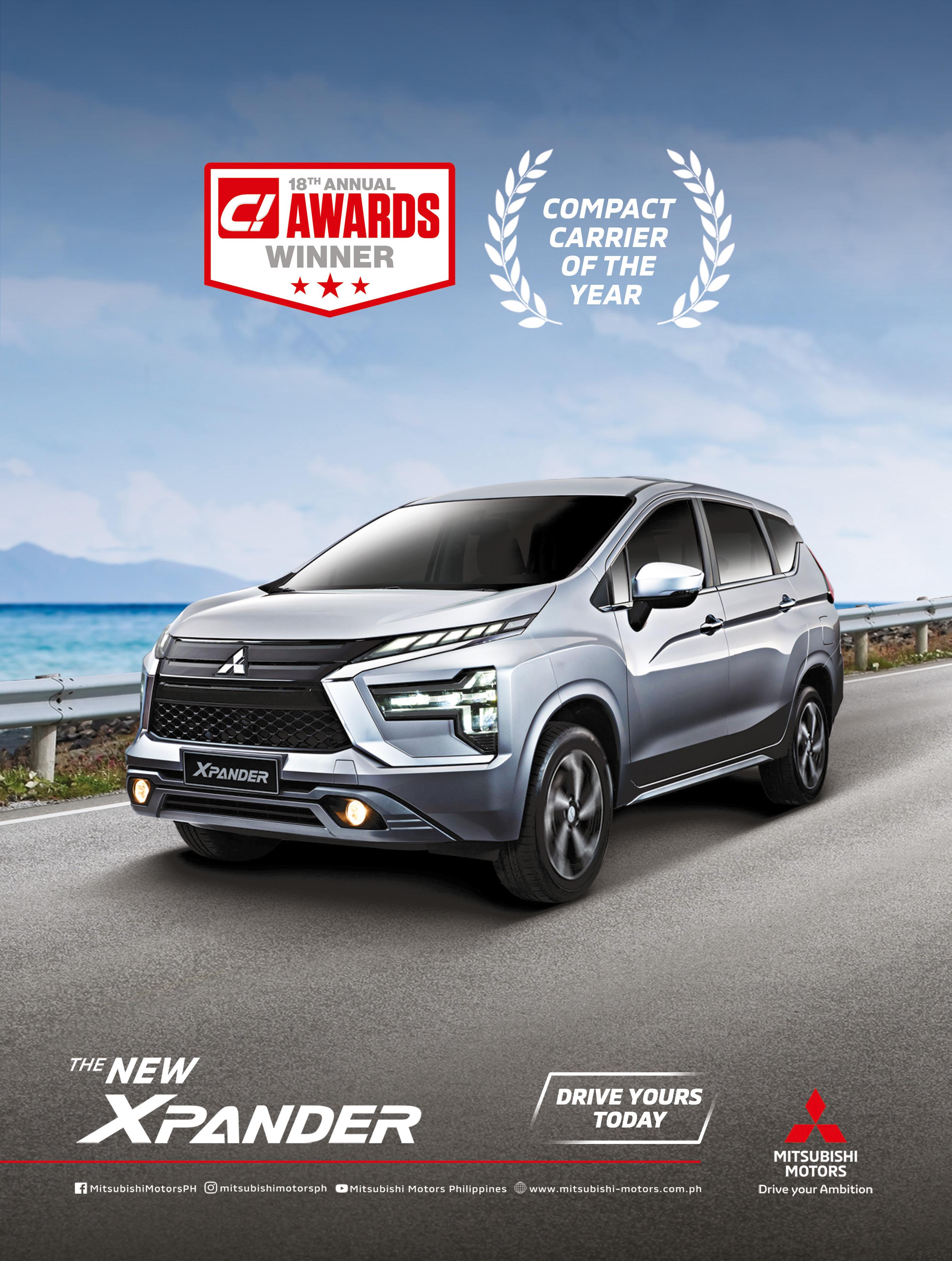
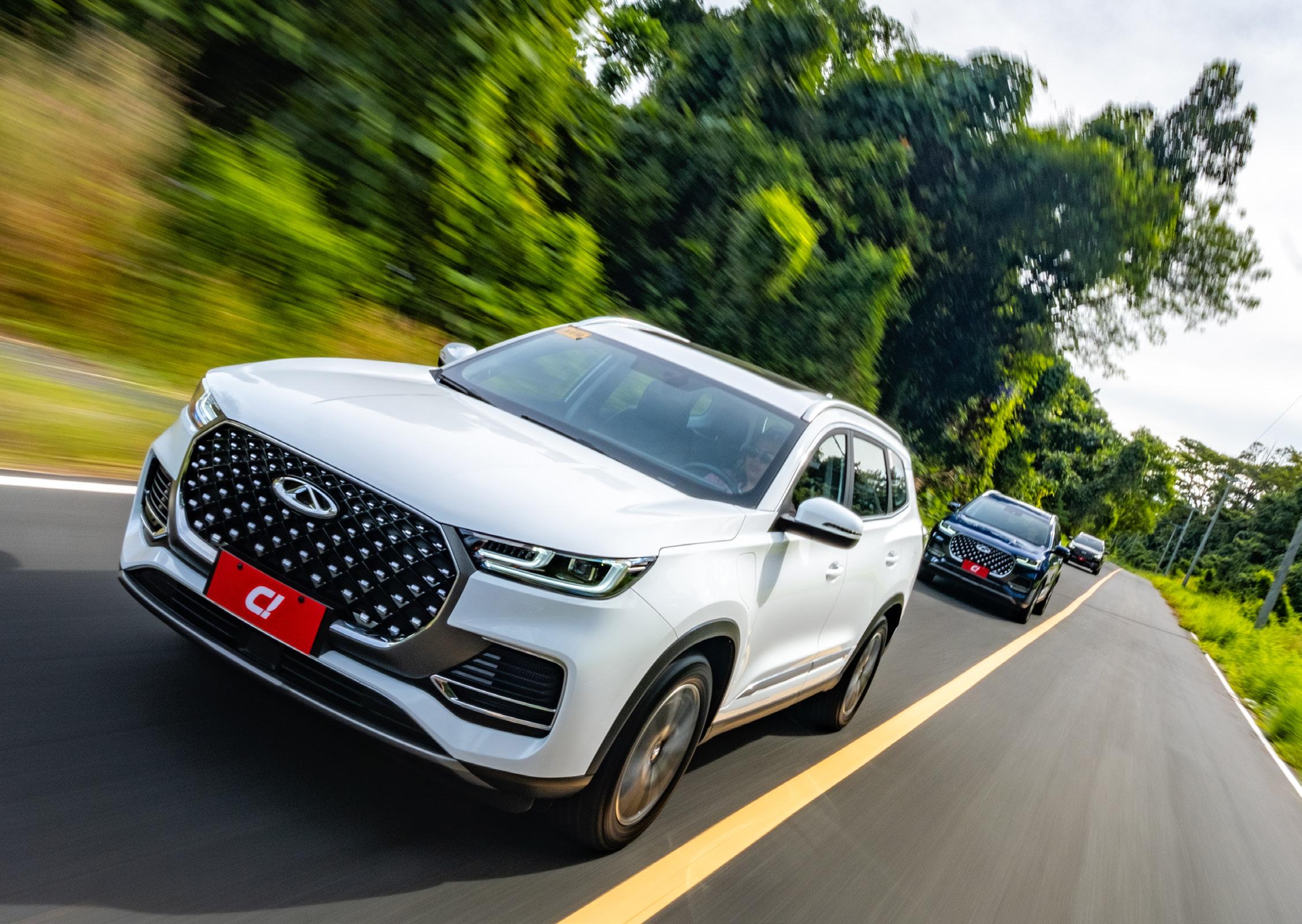 By Ardie O. Lopez
By Ardie O. Lopez
“Chery did not stop with eradicating what makes a hybrid vehicle feel passive, clinical, boring and geeky- that obviously was a given. Their headstrong direction with the Tiggo 8 Pro PHEV is clearly apparent, and it’s about elevating what a PHEV should be in several respects...”
 By Peter Lyon
By Peter Lyon
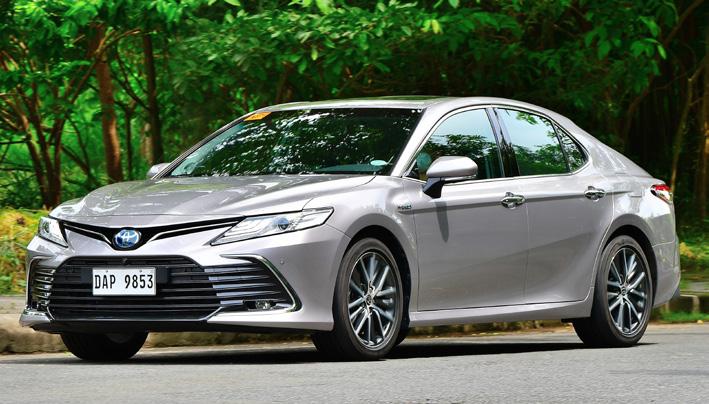



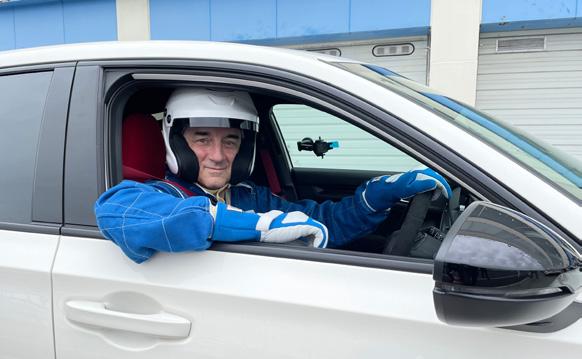



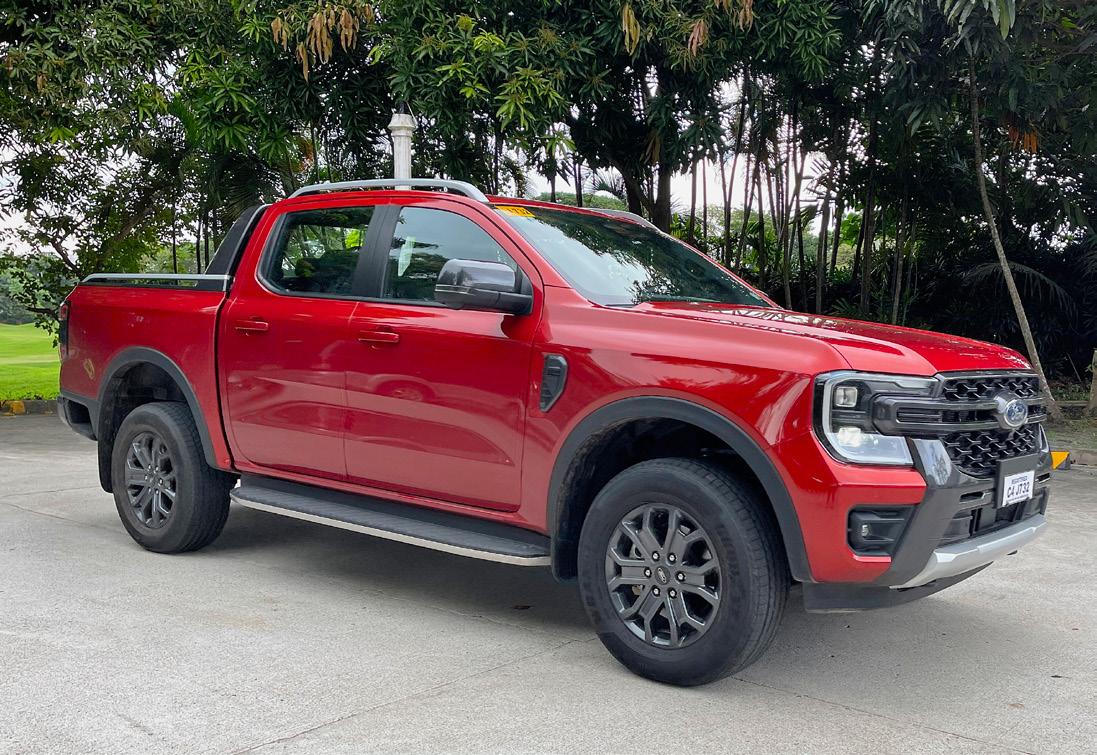
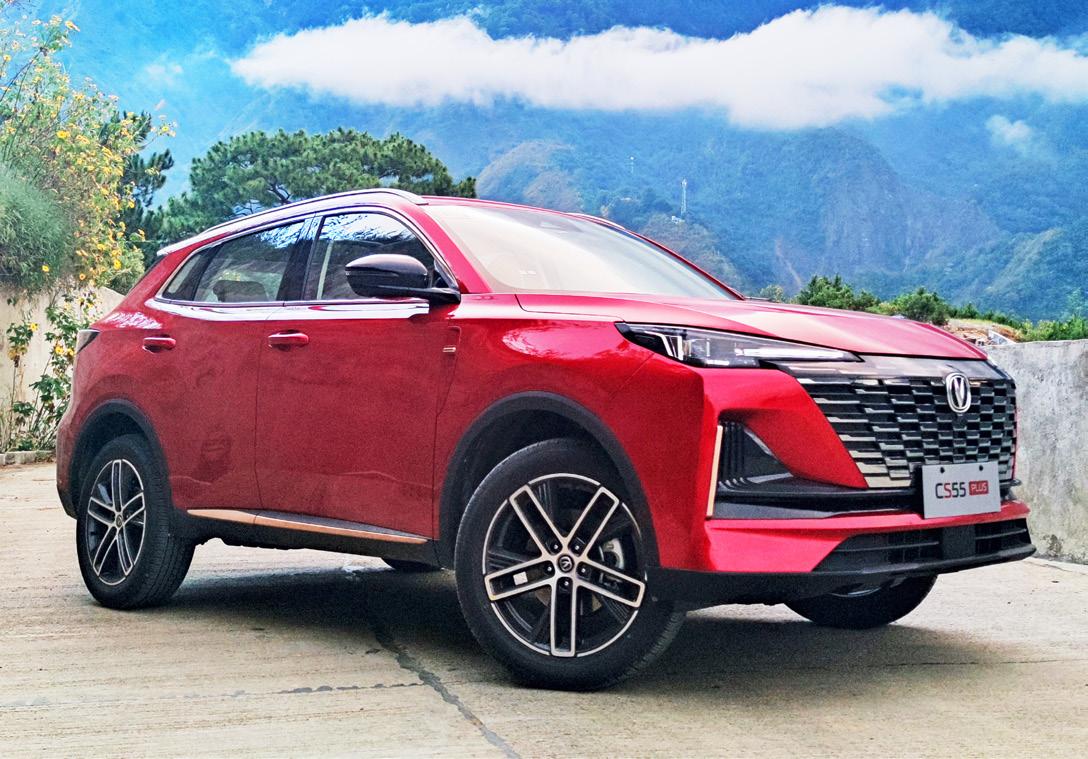
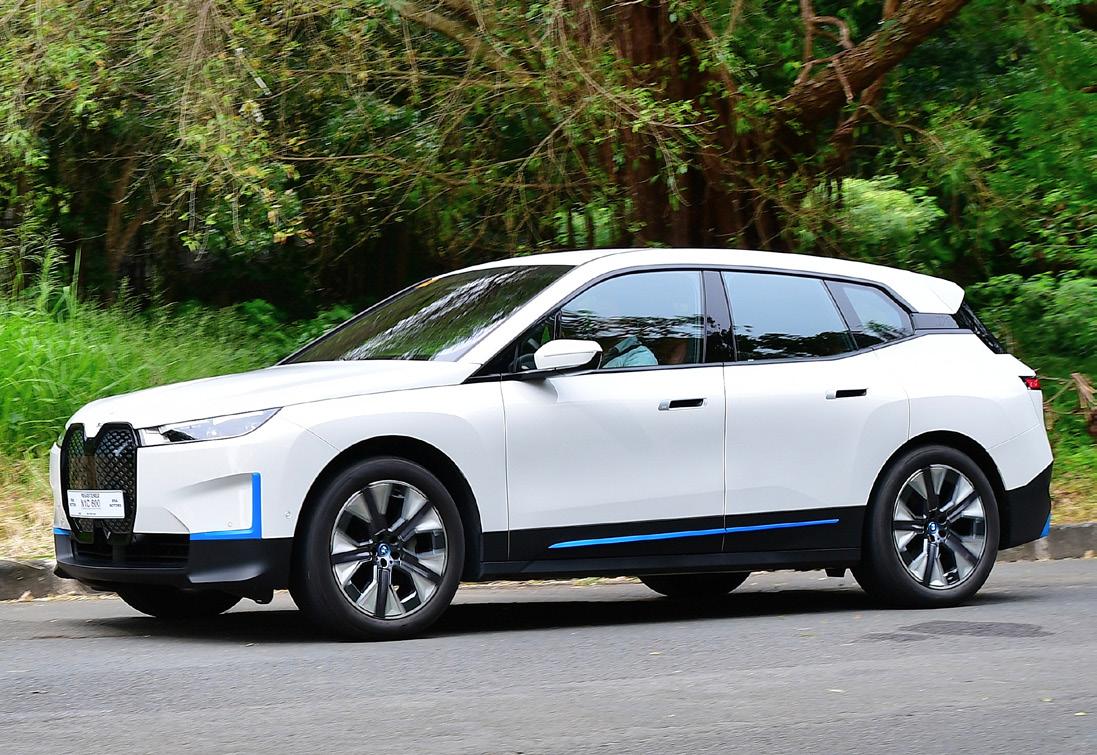
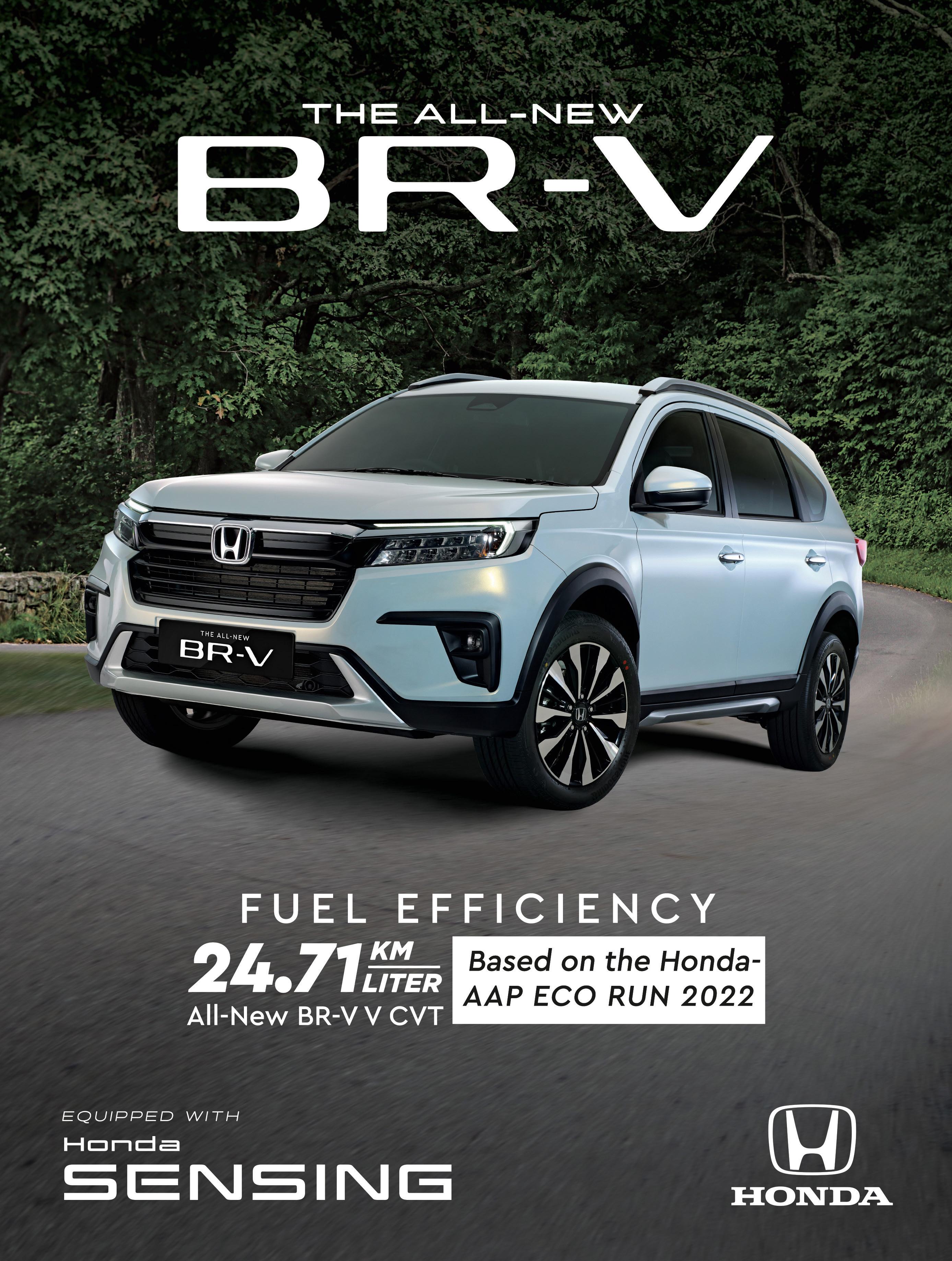

A look at how Palladium boots made a lasting impression on fashion, culture, and history.
By Wowie Go“The way Palladiums are engineered is something that’s often replicated but is nearly impossible to duplicate. Which is why it is still the shoe of choice of modern day explorers and hikers all over the world.”
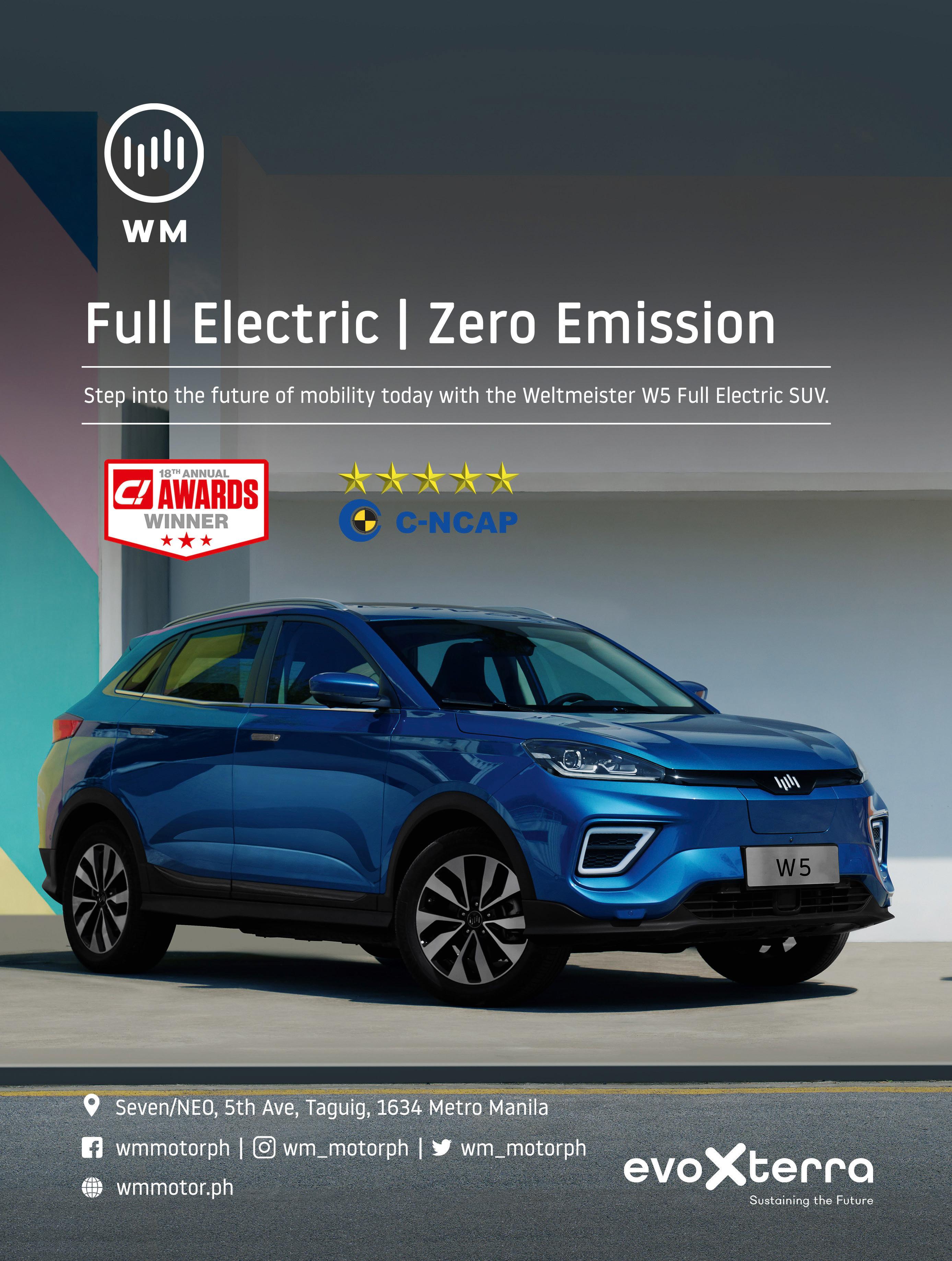
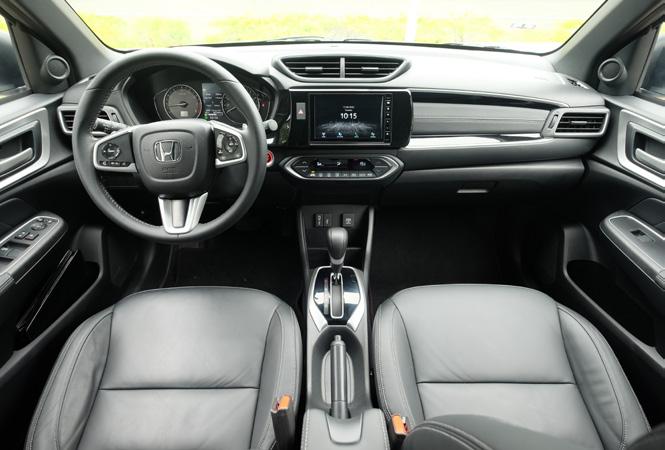
 By Chris Van Hoven
By Chris Van Hoven
“When the BR-V first launched, it created a new segment for itself, answering the needs that many car owners didn’t even know they had, and paving the way for others to follow.”
 By Francis G. Pallarco
By Francis G. Pallarco
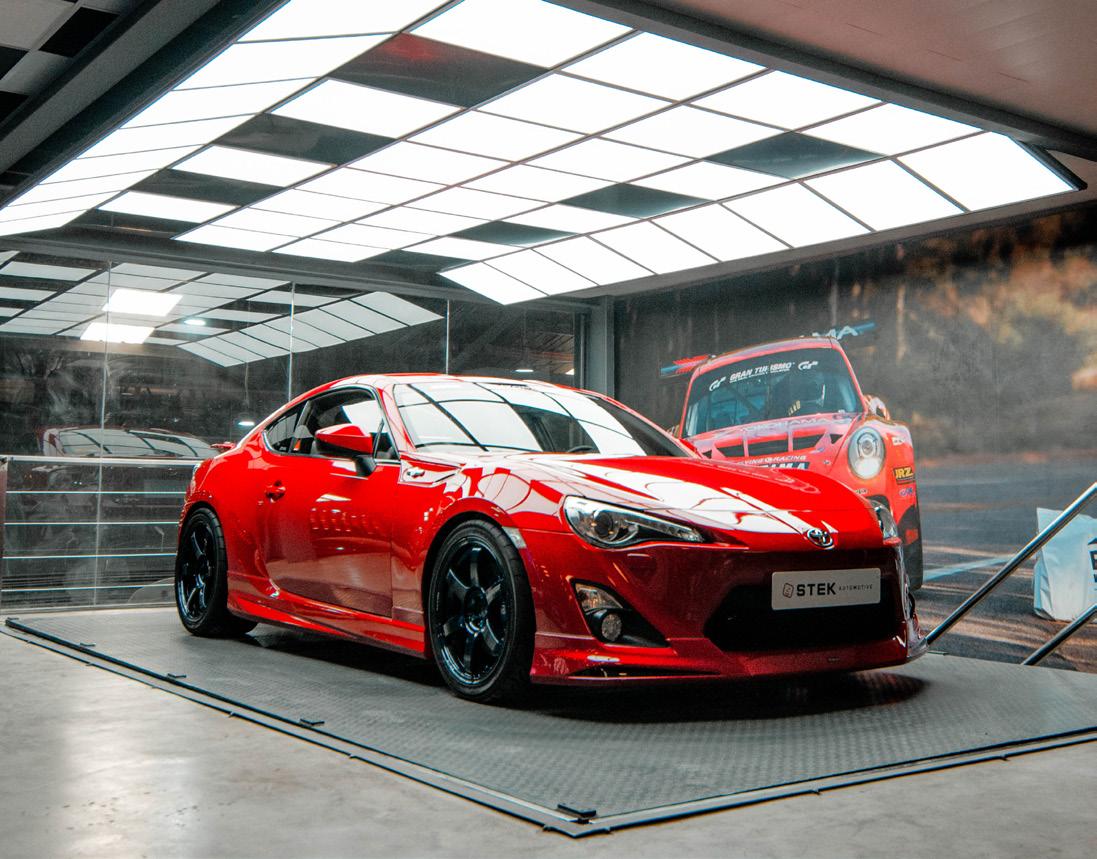

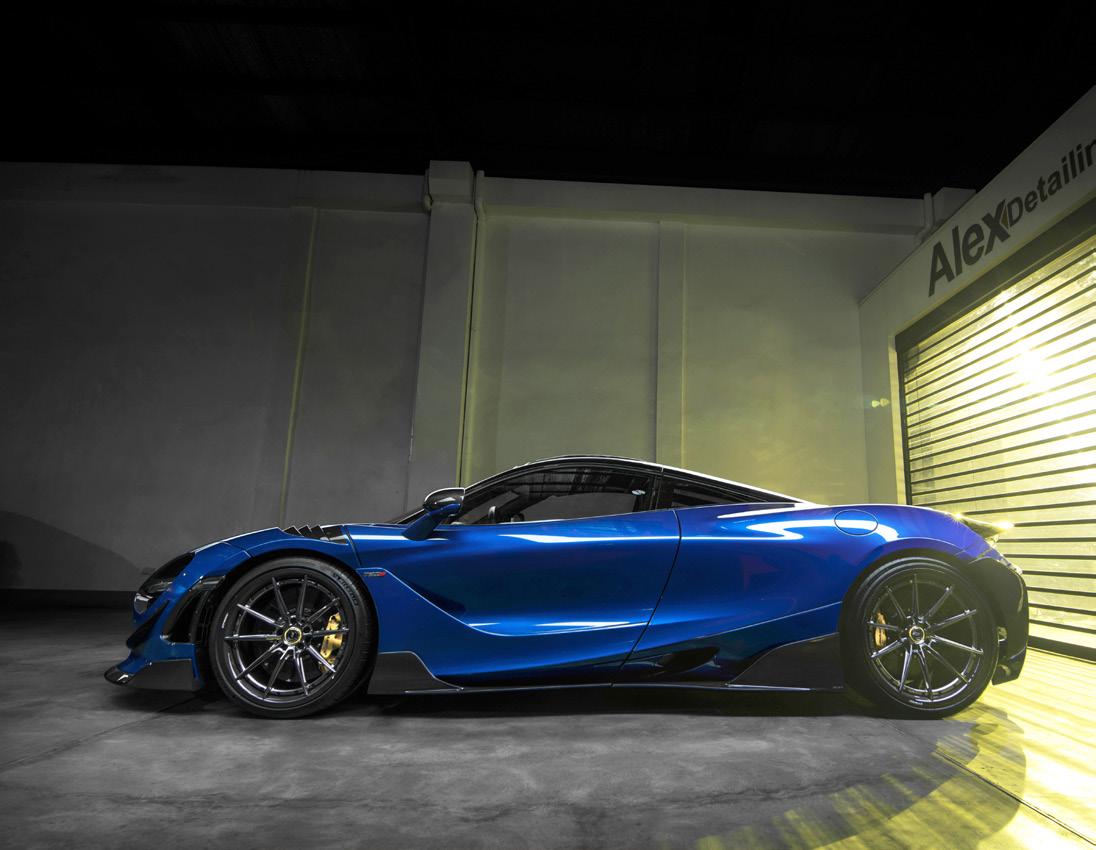

The addition of a Limited-Slip Differential (LSD); 19in forged alloy wheels; Blind-Spot Monitor (BSM); and Rear Cross Traffic Alert with Automatic Braking (RCTAB) on the IS 350 F Sport promises to elevate the driving experience to a more exciting—and confidence-inspiring—level.
The union between man and machine is the thrust of the Lexus Driving Signature (LDS). In its purest essence, it pursues linear operation faithful to the driver's intentions with the goal to amplify confidence, comfort, and overall love of driving.
The Lexus IS was born from the LDS philosophy. In fact, it is the very first model to be developed from the ground up to showcase it. Along with being a car that is the foundation of Lexus driving performance which serves like a whetstone for fine-tuning driving senses and skills, the IS has earned popularity through its high-level driving performance—and the fun of driving a rear-wheel-drive sport sedan.
For the driving enthusiast, there is no greater satisfaction that can come from being one with a vehicle as it tackles the corners with aplomb. Thus, to enhance the driving experience even
further, the Lexus IS 350 F Sport now comes standard with a Limited-Slip Differential (LSD). When paired with the 3.5-liter V6 motor that develops 315ps @ 6,600rpm and 380Nm @ 4,800 to 4,900rpm, the sophisticated LSD delivers power to the rear wheels in such a manner that will boost the confidence of every driver. Maximum acceleration out of a corner with full control are traits of an LSD tuned for enthusiasts. As such, the LSD is an integral part of any sport sedan’s arsenal and will bring a sense of enjoyment that cannot be readily found elsewhere.
Complementing this sporty and aggressive LSD is the availability of stunning 19-inch forged alloy wheels. Lightweight with a high rigidity appearance, it is 10% lighter compared to the previous F-Sport alloy wheels. With the Lexus IS 350 F Sport, you’ll conquer any
corner or straight line as you wish, staying fully in control of whatever lies ahead. And not only will you do it in style, but also with an unmatched level of comfort and confidence that you can only get while driving a Lexus.

There’s more to performance than speed alone. It’s about feeling truly connected to your vehicle, the road, and your senses. When you’re behind the wheel, your senses are constantly working to keep you safe. But what if they were augmented by your car’s ‘senses’, too?
The Blind-Spot Monitor (BSM) and Rear Cross Traffic Alert with Automatic Braking (RCTAB) now come standard with the Lexus IS 350 F Sport. These safety features are an essential addition to Lexus Safety System +2, a suite of safety features which include a Pre-Collision System (PCS); Dynamic Radar Cruise Control (DRCC) ; Automatic High Beam (AHB); Lane Tracing Assist (LTA); and Lane Departure Alert (LDA). Lexus’s advanced safety systems go beyond human perception, to care for you and your passengers, intuitively and intelligently.
After 30 years as a luxury automotive brand, it has established a unique Lexus identity, design language, and recognition in the overall luxury space. To continue reinforcing the Lexus brand identity, the company feels it is important to evolve its product development process to create vehicles that share dynamic behavior standards defined by Lexus Driving Signature. The Lexus IS 350 F Sport is a chief model among these.
Passion drives Lexus to create amazing cars that put a sensory experience and pleasure first. When man and machine merge to become one, the sensation is exhilarating, and the experience—amazing.
The Lexus IS is available in 3 variants: the IS300h Executive (P3,038,000), IS300h Premier (P3,398,000) and the IS 350 F-Sport (P4,178,000).
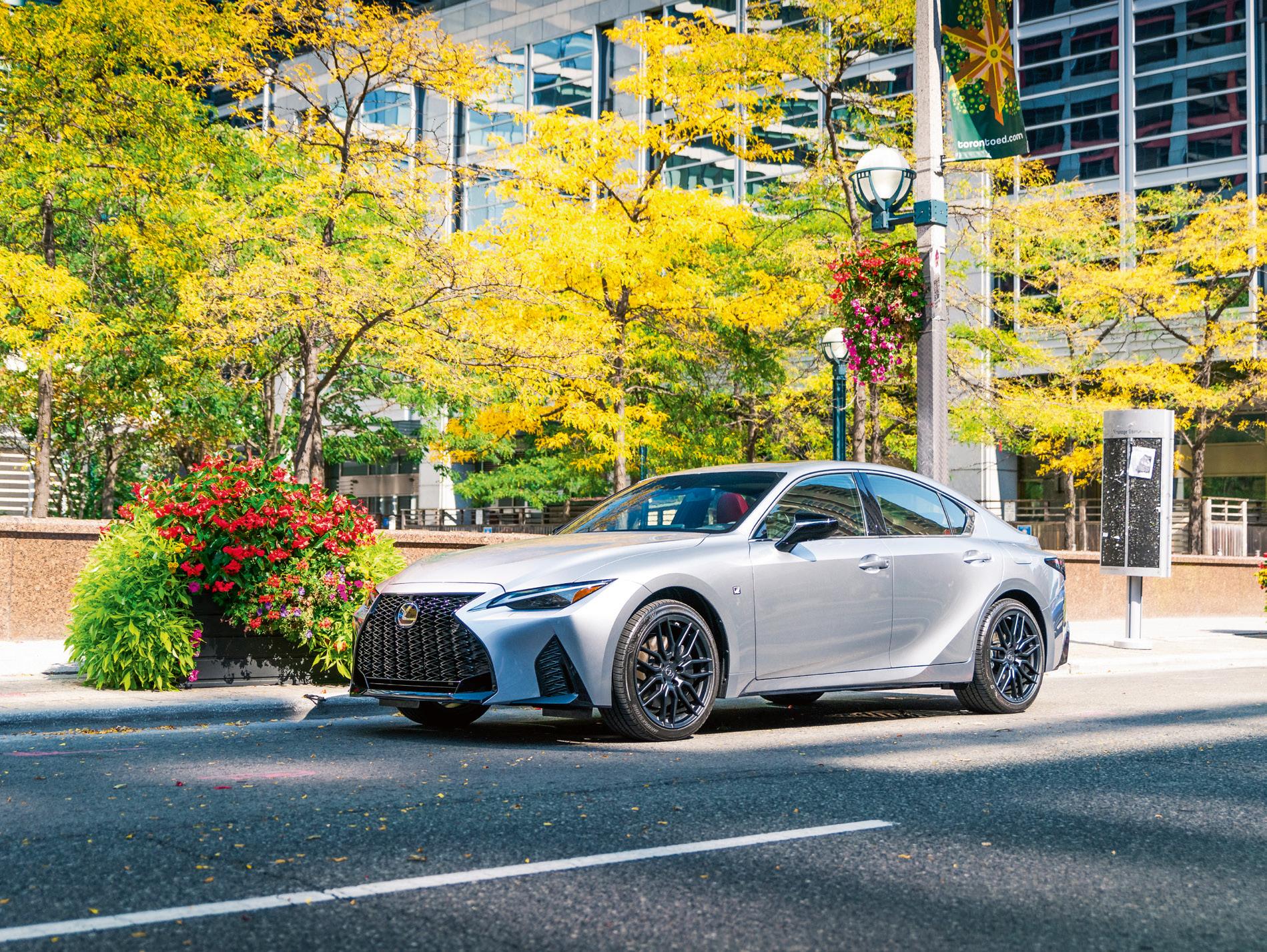


 By John O. Mendoza
By John O. Mendoza

 By Miguel Bichara
By Miguel Bichara
 By Ardie O. Lopez
By Ardie O. Lopez

 By Chris Van Hoven
By Chris Van Hoven
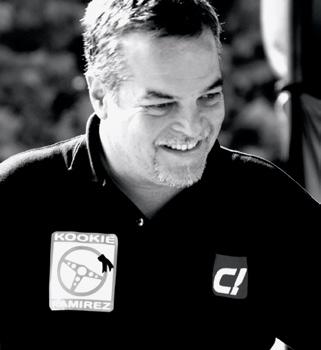
 By Wowie Go
By Wowie Go
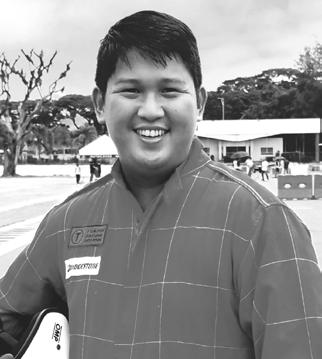
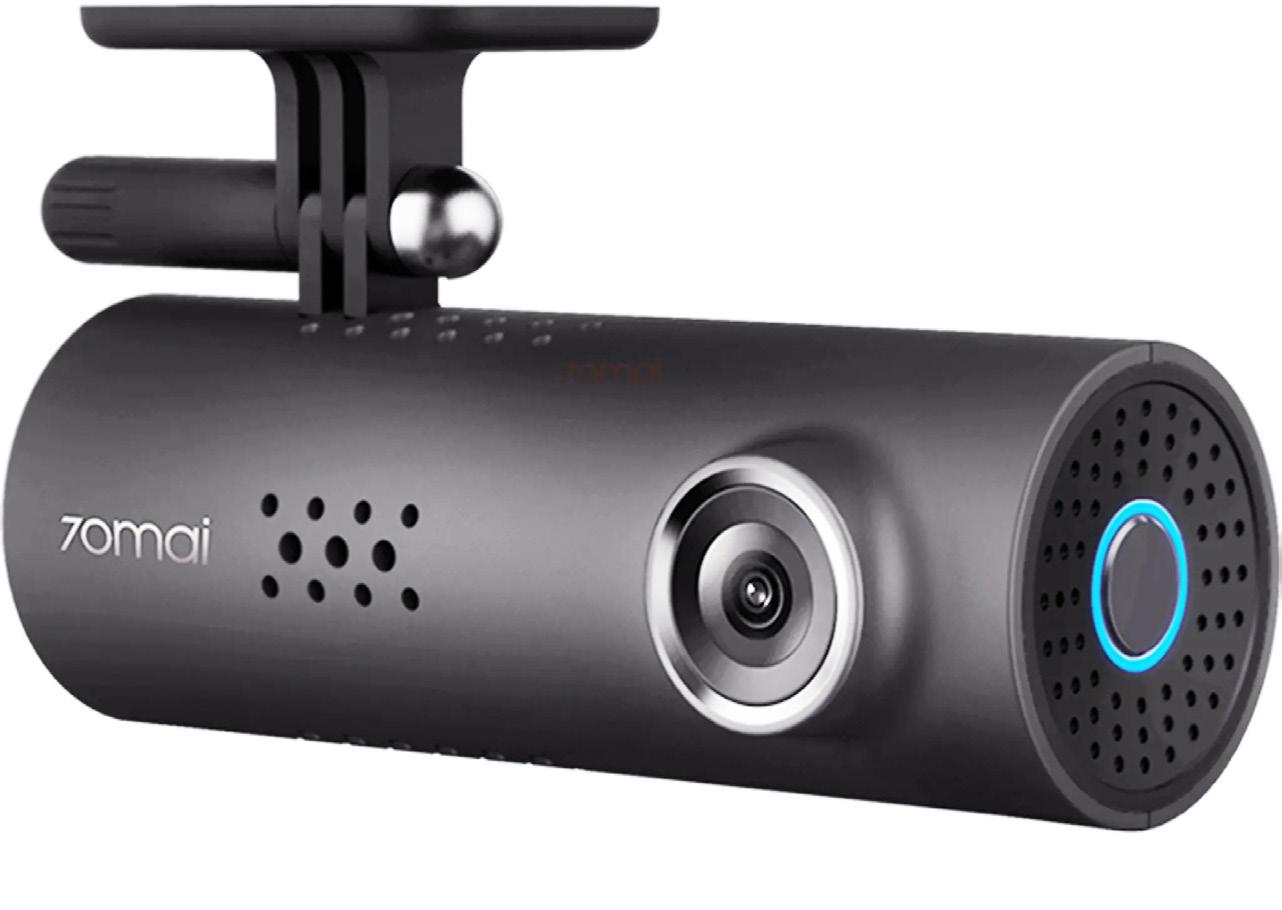 By Georges B. Ramirez
By Georges B. Ramirez
That one clip of the seatbelt can turn a fatal car accident into one you can walk away from. We think that is worth a little tug around the body, don’t you?
 A Safety Reminder From
A Safety Reminder From
was the year that felt that things were getting back to normal. Establishments lightened up on mask restrictions, and people were more at ease in general and were more willing to converse without masks. The automotive industry as a whole also saw sales finally come back to normal, with many manufacturers reporting sales figures hitting 2019 levels.

It certainly helps that 2022 saw some of the most significant new car releases in recent memory. The electric vehicle and hybrid push was stronger than ever, spearheaded by the likes of Toyota and their hybrid RAV4, Nissan and the Kicks e-Power, Mazda and the mild hybrid versions of the Mazda3 and CX-30, and newcomers Weltmeister and their W5 EV. Even China had a contribution, with Chery’s Tiggo 8 Pro PHEV. We also saw all-new releases of some fan favorites, such as the Ford Everest and Ranger, the Honda BR-V and HR-V, Toyota’s Avanza, and the Kia Carnival. Completely new model introductions were plentiful as well, with Toyota further closing all possible segment gaps with the Veloz and Raize, Nissan re-introducing the Livina, and a
EXECUTIVE EDITORwhole lineup of new cars, notably the Hyundai Stargazer, from newly appointed Hyundai Distributor, Hyundai Motor Philippines.
These are launches that didn’t just define 2022, but they shaped the automotive landscape as a whole. Segments have never been this hotly contested, and the products being offered have never been this good. It’s also a sign that manufacturers are indeed listening to their customers, bridging gaps in their product ladders at every opportunity, while improving on current offerings with more accessible safety and convenience features, even with their entry-level offerings. All this after the industry suffered one of the biggest blows in decades.
Seeing how the automotive industry bounced back after suffering huge losses makes me really excited for 2023. As the world continues to slowly go back to normal, I have a feeling we’re going to see some really interesting things down the line. And as always, we’ll be here to bring them to you.
2023 will bring some really interesting things from us at C! Magazine as well, and we hope you’re as excited about them as we are. Until then, may you all have a wonderful Christmas and the happiest of New Years!
Chris Van Hoven
“These are launches that didn’t just define 2022, but they shaped the automotive landscape as a whole.”
What the Future
Phones detract from your ability to concentrate on the road and increase your chance of a collision by nearly 400%.
 A Safety Reminder From
A Safety Reminder From
There was a time when automakers gave their vehicles some of the most badass names you could possibly think of. When you hear names like Challenger, Firebird, or Pantera you can’t help but feel your heart skip a beat with excitement. It was more than just a name though. It gave the cars an identity — a character to latch their quirks and features on — and that persona bleeds through whoever manages to sit in the driver’s seat. When you take the wheel, you are the Mustang, you are the Stingray, hell, you could even be the Tamaraw if you wanted to.
These days, however, it seems like the pool for cool car names has just about run dry. Today we’re left with vehicles with names you have to Google to understand — and even then it would still leave you scratching your head. Be honest now, off the top of your head, do you know what an Alsvin is? How about a Creta? A Ciaz? A Toano? Chances are you don’t because none of them are real words. I shudder to think that at some point, in boardrooms all over the world, well-respected executives were presented with these names and they all went: “Hmm.. What a brilliant name.”
And I get it, most of the names I just used as examples really do have actual origin stories, like the norse god Alsvior, or the city of Crete, or an abbreviation of the phrase “City Car from A to Z,” but was that really the right way to go about it? I mean, were those really the best sounding names available? As a writer by profession, I understand that the number of adjectives and verbs that properly describe a vehicle can only be finite, but did you know
that there are over 170,000 words in the English language? Even with this abundance of words, it escapes me why a growing number of automakers still feel the need to manufacture words for their cars, some of which have barely a semblance of etymology. I actually feel like the Europeans already have the right formula in this department: Give it
a letter and a number and no one ever has to drive around a car with a nonsensical name again. But if you must name it after something, the least you could do is use your words. You could name it after a person. You could name it after a place. You could even go the route of Ford and completely give up on verbs and adjectives and use a noun, like when they named their Territory. Brand name design is a legitimate business. There are large agencies all over the world that specialize in this field, getting paid millions every year. Being once deeply entrenched in the sphere of advertising and marketing, I find it hard to believe that an actual naming agency came up with the names that I mentioned earlier.
Wowie Go MANAGING EDITORBut with all that being said, what’s the big deal? The cars drive and ride great! What’s the issue here? Well you see, ownership is a very important part of the driving experience. It’s very difficult to take pride in a vehicle when it has a seemingly unintelligible name. One doesn’t have to be a car nerd to understand that there is a special bond between a person and his or her own vehicle. If you’ve ever spent a single cent on your own ride, you would know to treat it like it’s a pet or a part of your family. Admit it, at some point you’ve talked to your car like a stubborn mule when it wouldn’t start, feel pity for it when it hasn’t been washed in weeks, and you definitely slap a metaphorical badge of honor on it when it’s completed an incredibly long drive. Cars undoubtedly have personalities and, believe it or not, they’re 100% shaped by the names they go by. And their fates are sealed the minute you roll it out of the factory with a sillysounding badge.
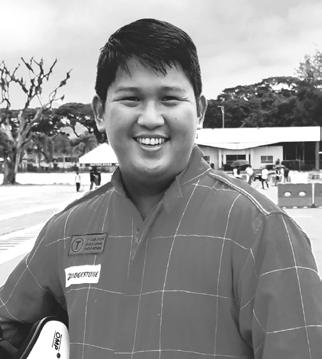
“Cars undoubtedly have personalities and, believe it or not, they’re 100% shaped by the names they go by.”
Sure having a few drinks can be fun, and it’s easy to get carried away. But remember that when you drink, you’re compromising your cognitive ability and responsiveness, which increases your risk for an accident. Don’t drink and drive. It’s simply not worth the risk to yourself and others.
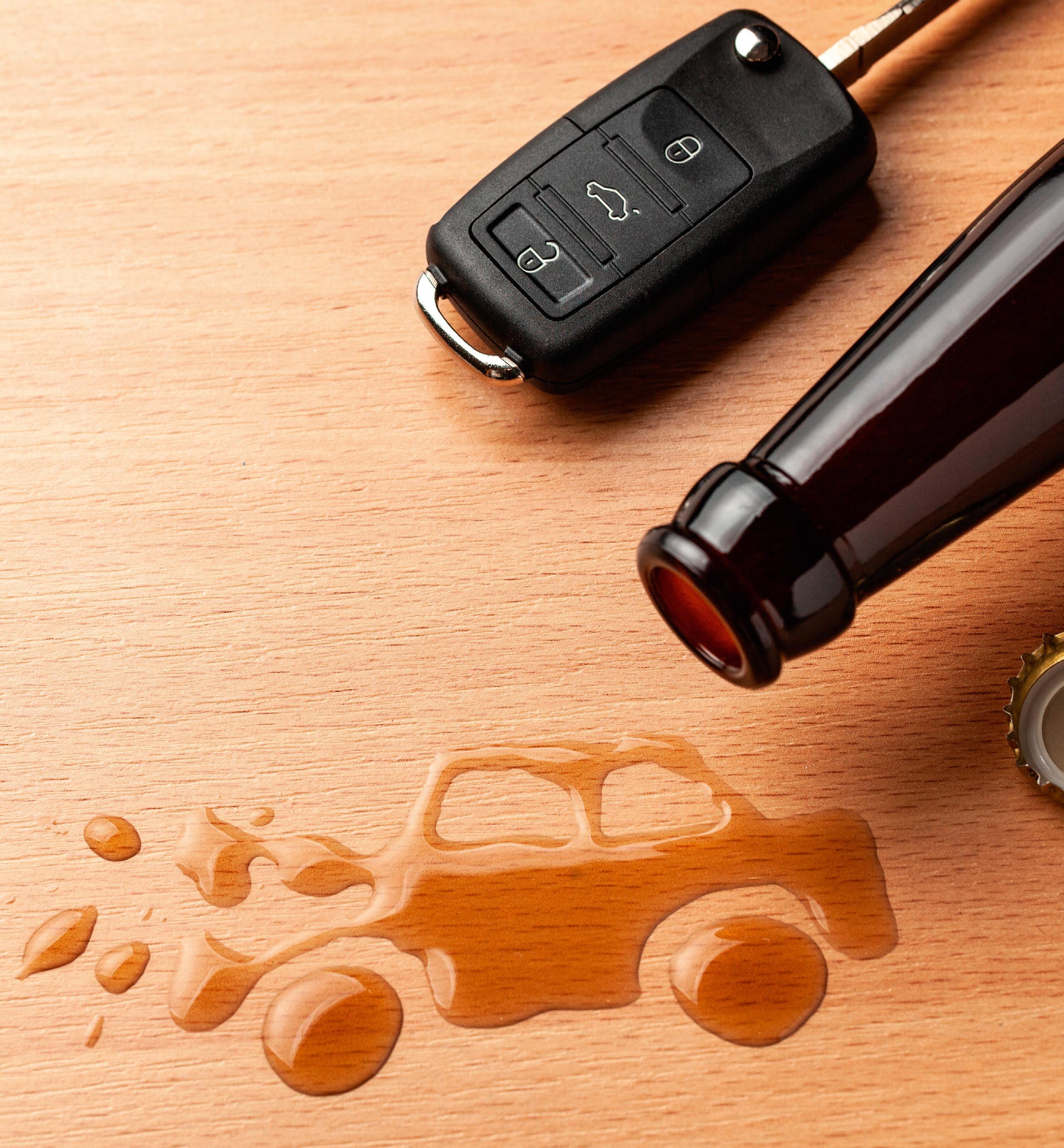
Know when to stop. Drink responsibly.
f my aging memory serves me right, it was my August editorial this year, entitled “Marquees and Maverick Merger,” where I focused on the young Croatian maverick Miro Zrnčević, who builds hypercars.

When it comes to acceleration records today, they are overwhelmingly dominated by electric vehicles. Electric motors put out vast amounts of torque all at once, redefining the saying “getting sucked into your seat.” But top speed or (v-max) maximum velocity is a different story.
Well, Miro shattered the record once again. His all-electric Rimac Nevera set the new top speed record for electric cars when it reached a blistering 415 km/h at the Papenburg testing facility in Germany. This is truly amazing!
Equally amazing were the four 1,408kW electric motors that developed a mindblowing 1,914PS. I can only imagine what it must have felt like being strapped into this car as it flew down the two-kilometer straight. Anytime you’re over 200 km/h, it is more of your aerodynamics keeping connected to the road and can be unnerving, to say the least. Now double that!
Georges B. Ramirez SENIOR EDITORFrom the reports I read, the brave test driver said it was composed and stable. He attributed this to the aerodynamic and vehicle dynamics team. This must have been quite a system they developed. Apparently, to achieve this record, they put it into “top speed” mode, which tunes its aerodynamics to keep it stable at very high speeds and pulls out the stops of those four motors to max out!
Like all good things, it didn’t come easy. It was a long and difficult process, over a million and half hours of development in a span of four years, to get it to the point where they felt it was production ready. As one would imagine, the production versions are restricted to 346 km/h, which is still an excessive amount of speed. Rimac can unleash the monster only during one of their special custom events.
Oh ya! In 2021 the Nevera broke the quarter-mile record with 8.58 seconds. So, it is not just the fastest accelerating production car but, actually, one of the fastest production cars at the moment. And just to think it wasn’t that long ago that electric vehicles were reputed for being slow. Now it’s a fix for those who have that “need for speed.”
“It was a long and difficult process, over a million and half hours of development in a span of four years.”
Ardie O. Lopez
EDITOR-IN-CHIEF
Chris Van Hoven
EXECUTIVE EDITOR
Wowie Go MANAGING EDITOR
Georges B. Ramirez
SENIOR EDITOR
Francis G. Pallarco
TUNER EDITOR
Monica N. Legarda
SENIOR COPY EDITOR
Angel S. Rivero
Miguel C. Bichara
Isabel N. Delos Reyes
CONTRIBUTING EDITORS
Michael L. Lhuillier
EDITOR-AT-LARGE
John O. Mendoza
WHEEL2WHEEL ASSOCIATE EDITOR
Kevin C. Limjoco
FOUNDING EDITOR / PRESIDENT /
EDITORIAL DIRECTOR
Charie L. Biaden DESIGN DIRECTOR Mark David A. See SENIOR DESIGNER Mary Ann E. Marcelo DESIGNERMayette L. Asis
VICE PRESIDENT
Mary Jane O. Salazar
ADVERTISING TRAFFIC MANAGER
Malyn L. Bautista
Francesca M. Leonardo
Hiroshi D. Paderagao
ACCOUNT MANAGERS
C! Publishing and Media Group, Inc.
PUBLISHER
Michael L. Lhuillier
CHAIRMAN
Paolo M. Puyat-Martel
MANAGING DIRECTOR
Carl S. Cunanan
Kevin C. Limjoco
Michael L. Lhuillier
Paolo M. Puyat-Martel
BOARD OF DIRECTORS
Merline B. Urdas
SENIOR ACCOUNTANT
Mary Ann M. Benito
CREDIT AND COLLECTION OFFICER
Paredes Garcia and Golez LEGAL COUNSEL
Tony
Elgie
Lawrence
Cherrey
Alfred
C! Publishing and Media Group, Inc. 10 Nathan St. White Plains Subdivision, White Plains, Quezon City, 1110 Philippines Tel: (+632) 7728 3720 to 21
Distributed by Alphastream Marketing, Inc. No.5 Everite St., Calumpang, Marikina City, Philippines, Tel: (+632) 7945 5089
Copyright © 2022
The Editors and Publishers of this magazine give no warranties, guarantees or assurances and make no representations regarding any goods or services advertised in this edition. No part of this magazine may be reproduced, in part or in whole without written permission of the publisher.

scene. And thanks to the new design language that they’ve adopted for all their new vehicles, save for the faux-twin exhaust in the rear presumably done to align it with the CS75 Plus’ design, not a line on the vehicle looks out of place nor is it trying its hardest to be rugged or sophisticated.
WHEN IT COMES to adopting a new market’s line of vehicles, it takes quite some time for consumers to place their full trust in it. We’ve seen this happen first with the Japanese, then with the Koreans, and now it’s the Chinese that have to deal with the scrutiny and nose-thumbing from prospective buyers, particularly those with archaic, preconceived notions. However it’s really difficult to ignore how compelling the argument the all-new Changan CS55 Plus puts up against this stigma as it provides the right combination of looks,

performance, and value that most car buyers are looking for today.
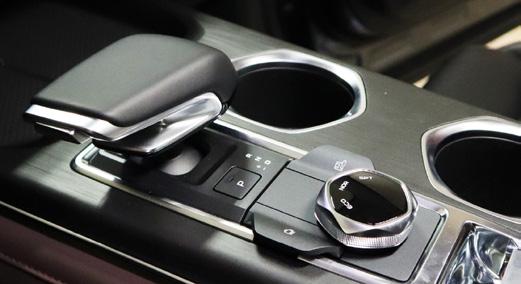
Changan Automobile as a company has been around for nearly 160 years, but it’s an extremely new marque here in the Philippines. Despite this, they’ve already gotten off to a great start with their initial offerings, the CS35 Plus and the CS75 Plus–both proving to be superior products with their features and durability for their respective price ranges. This latest addition to their growing family of vehicles looks to be much the same as it slots right in between the two models as their 5-seater compact crossover SUV.
The CS55 Plus’ exterior, in not so many words, can be described as worldly. The vehicle borrows a lot of design cues from various automakers from Europe, Japan, and the US which in a way gives the vehicle a brand new identity. Changan did a fantastic job of doing away with the floating roof that’s pretty much a cheesy trope in today’s SUV
Prospective buyers of the CS55 Plus will be pleased to learn that a lot of things touted by Changan that’s included in the car come standard in all the variants. The vehicle has the same 19” alloy wheels for all trims and every CS55 Plus will have LED lights installed in both the front and rear. The only added advantage when it comes to the lights on the top-of-theline model is the intelligent high beams that sense and aid on-coming traffic, adjusting the car’s headlight angle, preventing unwanted dazzling. It’s the same story for the panoramic sunroof, which is standard on all units, just with rain-sensing for the top-end variants that automatically closes the window at the first sign of rain.
Inside, the CS55 Plus is just as wellappointed. It’ll only take a quick second to discover that hardly any surface is covered in hard plastic. Everywhere from the dashboard to the door cards, the vehicle is lined with fine leather and is softly padded. And something that’s clearly been borrowed from luxury European car makers: 4-way electric seat adjustment in the passenger side seat. In the rear however, the details take a little bit of a backseat (no pun intended) with the stitching and fitment, but the riding experience is comfortable just the same.
Where the vehicle does come alive though are with all the high-tech features they’ve managed to install inside. The Hype and the Luxe variants come equipped with a 12.3” touchscreen infotainment system connected to six Pioneer Premium Speakers. All variants come generously enabled with Apple Carplay, while it's still quite a quandary why Android Auto is not. The CS55 Plus also comes equipped with a nifty voice control feature that lets you manage everything from the windows, the radio, to the air conditioning. Though it does take a bit of getting used to in order to operate as we’ve noticed its sensitivity can be a bit finicky, once you do manage to get it running, you’ll find it more intuitive than other conventional voice command systems out there. For added passenger comfort and safety, the vehicle comes standard with an automatic A/C system with a PM 0.1 air filter
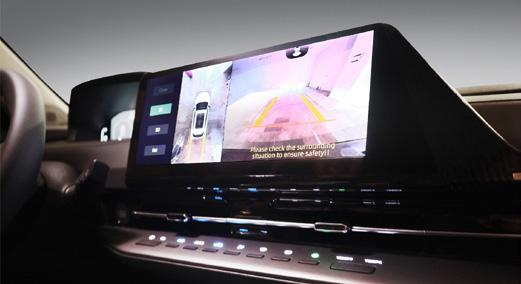
 Words and photos: Wowie Go
Words and photos: Wowie Go
that screens out unwanted bacteria and particles in the cabin. The two higher-end variants take this even a step further with an ion generator.
On the road, the CS55 Plus is a decently powered machine. Its 1.5 liter, gasoline 4-cylinder engine, which has since been the powerplant of choice on most Chinesebuilt vehicles, is given some much needed additional oomph with the help of a turbocharger. The Blue Core NE15 TGDi engine delivers 185 horsepower and a more-thancapable 221 lb-ft of torque. The 7-speed DCT that’s mated to the powertrain shifts smoothly–almost CVT-like–but throttle response can be a bit laggy at times. Rather than focus on 0-100 km/h and top speeds, what Changan is most proud of with the car’s engine is the fuel efficiency technology that’s baked into it. The company boasts its industry-leading low friction technology, and high-pressure direct injection at 350 bar, and an advanced thermal management system. Despite the added emphasis on efficiency, the CS55 Plus does come with three drive modes
for the driver to cycle through: Eco, Normal, and Sport which adjusts the engine response accordingly. The default mode the car stays on is its Eco mode, which although it maximizes the car’s efficiency, it noticeably diminishes the car’s performance most especially during up-hill driving and long straightaways.
For the most part, safety would seem to be the CS55 Plus’ party piece. For a company that has a name which literally translates to “Forever Safety,” the vehicle surpasses most of its competitors by leaps and bounds in this aspect. The Luxe and Hype variants come with a 360° panoramic camera with an HD driving recorder that constantly monitors each
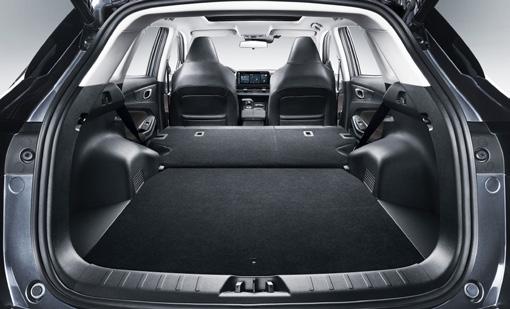
side of the vehicle. On the center console, there is a button that lets you save footage, recording the first and last 15 seconds on the cameras. Likewise, the cameras also save the footage when it senses a large impact. Another incredible feature of the vehicle’s camera is its ability to stitch together the vehicle's geography, giving you the ability to see what’s underneath your car in case you’ve managed to drive over an obstacle. Some more safety features include its lane departure warning and lane keep assist (exclusive only to the Luxe variant) that not only alert you when you’re deviating, but moves the steering wheel back as needed. Although, unlike more sophisticated systems, the CS55 Plus’ system is more of a quick judder than a smooth glide back to position.
But perhaps the car’s most interesting and talked about tech is the Integrated Adaptive Cruise Control (IACC) with Traffic Jam Assist (TJA) on the CS55 Plus’ Luxe variant. With its IACC turned on, the vehicle stops and goes automatically based on both the speed you’ve set and the distance you want your car to be from the vehicle in front of you. You can see obstacles, cars, and pedestrians show up on the instrument display in real-time, and the system even works during traffic jams helping alleviate the stress of pressing the gas and the brake repeatedly.
Admittedly, even the heads at Changan feel like they may have overdone the amount of features they’ve given to the CS55 Plus considering its P1,373,000 price tag–but that’s a good thing. While the manufacturers that have already managed to gain a foothold on our market grow more and more complacent by the year, it’s refreshing to see a bit of overengineering to keep them on their toes.
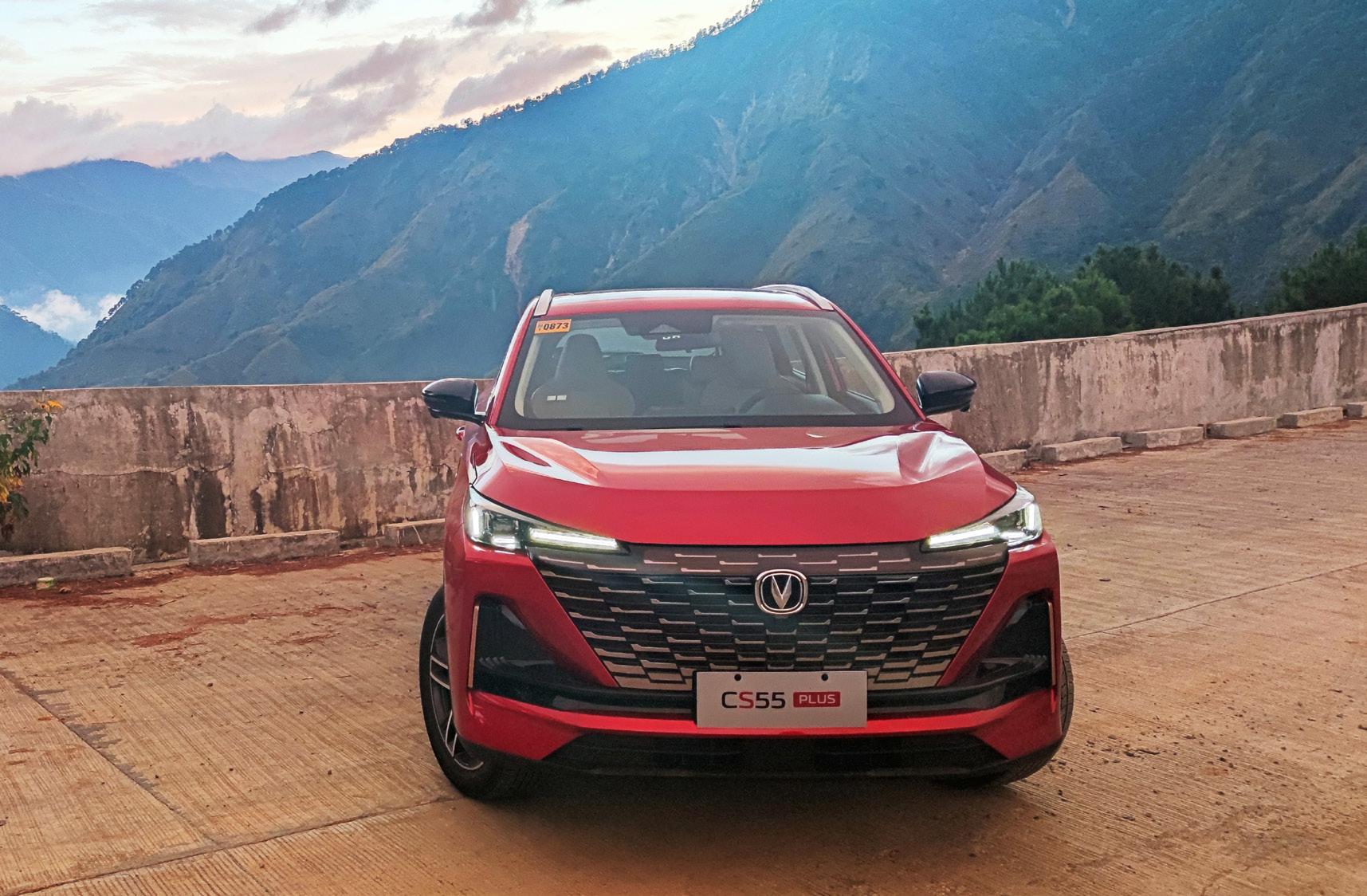
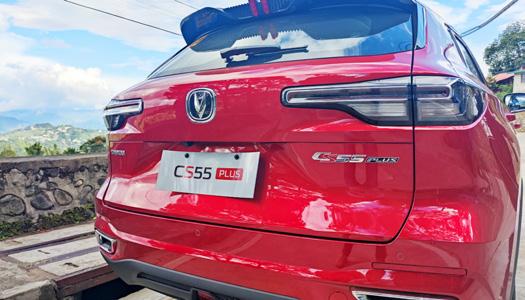
Plus: Best value for money in its class with all its standard features, the 360° panoramic camera is a godsend for those who live in tighter neighborhoods, PM 0.1 air filter and ion generator is a timely feature.
Rating 9/10
Minus: The adjustments made by the Integrated Adaptive Cruise Control and Lane Keep Assist can be abrupt at times, the responsiveness of the 7-speed DCT during climbing needs to be quicker, and the presence of a paddle shifter would greatly improve the driving experience.

Engine: Inline-4, 1499 cc, dohc 16V, Multi-point injection, Intercooled Turbo, 7-Speed DCT • Max power: 185 bhp @ 5500 rpm • Max torque: 221 lb-ft @ 1500-4000 rpm 0-100 km/h (0-62 mph): 11.8 seconds • Top Speed: 180 km/h (112 mph) • Fuel Mileage: 9 L/100km Overall
Price as tested: PhP 1,373,000.00 (Lite variant: PhP 1,179,000.00, Hype variant: PhP 1,283,000)
WHAT BETTER WAY to commemorate and highlight half a millennium of BMW M than to produce their first ever original M car since its legendary M1 mid-engined sports car from the 70’s? Truly a serious car enthusiast’s unicorn, the BMW M1 rose to that status from its original form in limited number as BMW’s ultimate expression of automotive art and unbridled performance, to its Motorsport versions that are even rarer. As its spiritual successor, the all-new BMW XM aggressively stakes its claim on the future of bleeding edge techdriven automotive performance by also being BMW’s very first high-performance car with an electrified system.
The BMW XM is a plug-in hybrid that’d deserve to be steeped in superlatives with the set of digits its powerplant churns out. From its high-revving 4.4-liter M TwinPower Turbo V8 gasoline engine that pushes out up to 489 hp and its advanced electric drive system



rated at up to 197 hp, the BMW XM unleashes a total combined output of 480 kW/653 hp. An electric motor is even integrated into its 8-speed M Steptronic transmission to aid its V8 engine in shifting as it peels the pavement in acceleration in conjunction with the M Hybrid system that’s instantly on tap, delivering a backrest-squishing 800 Nm/590 lb-fit of Torque, enabling the XM to sprint from 0 to 100 km/h in only 4.3 seconds.
The BMW XM in its XAV (Sports Activity Vehicle) configuration runs on in its all-wheeldrive M xDrive system that takes full advantage of its seamlessly combined power sources, delivering exceptional performance and dynamics worthy of the M. It has a rear-biased setup that is more apparent when utilizing its 4WD Sport Mode, and a fully variable M Sport differential in the rear axle. A 4WD Sand Mode is also available for a more extreme way to disturb the dunes.
As a true plug-in hybrid, the XM in its fully electric driving mode enables it to cruise at up to 140 km/h for up to 88 km, with zero emissions. It doesn’t follow though that sound emitted in the XM in this mode should also be at zero, since a very special soundtrack was developed by BMW IconicSounds Electric in collaboration with the BMW Group and famous film score composer Hans Zimmer for its
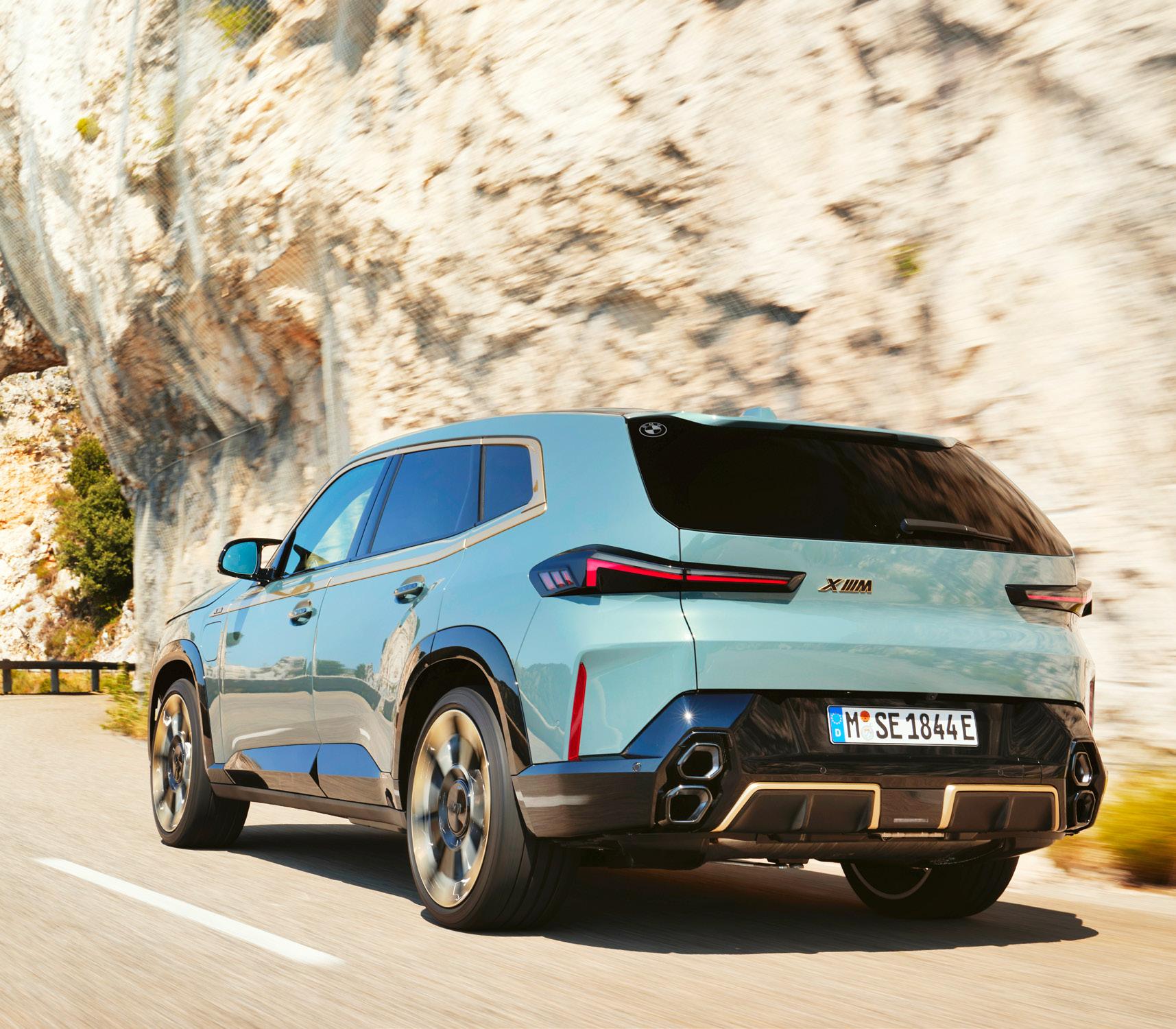
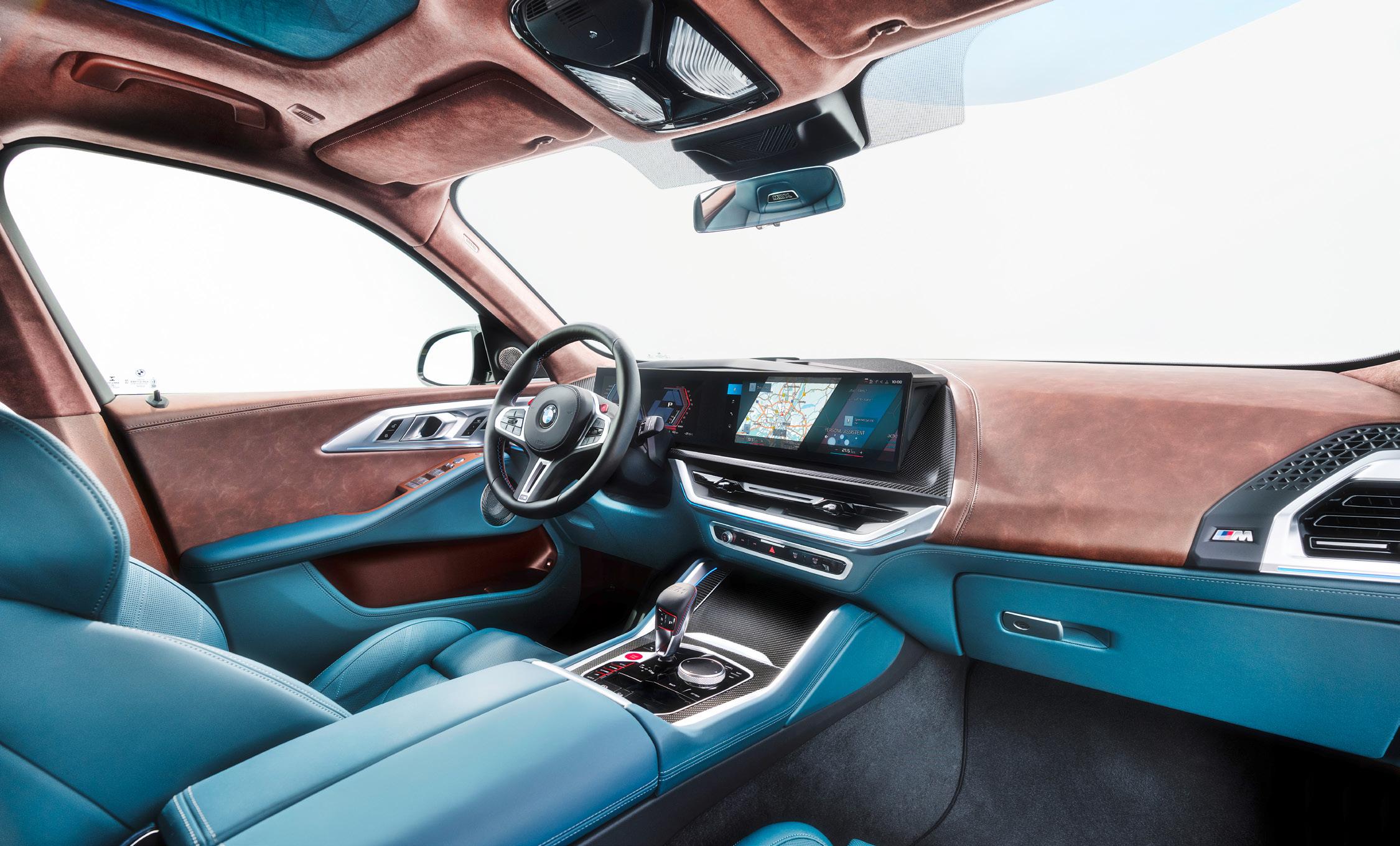

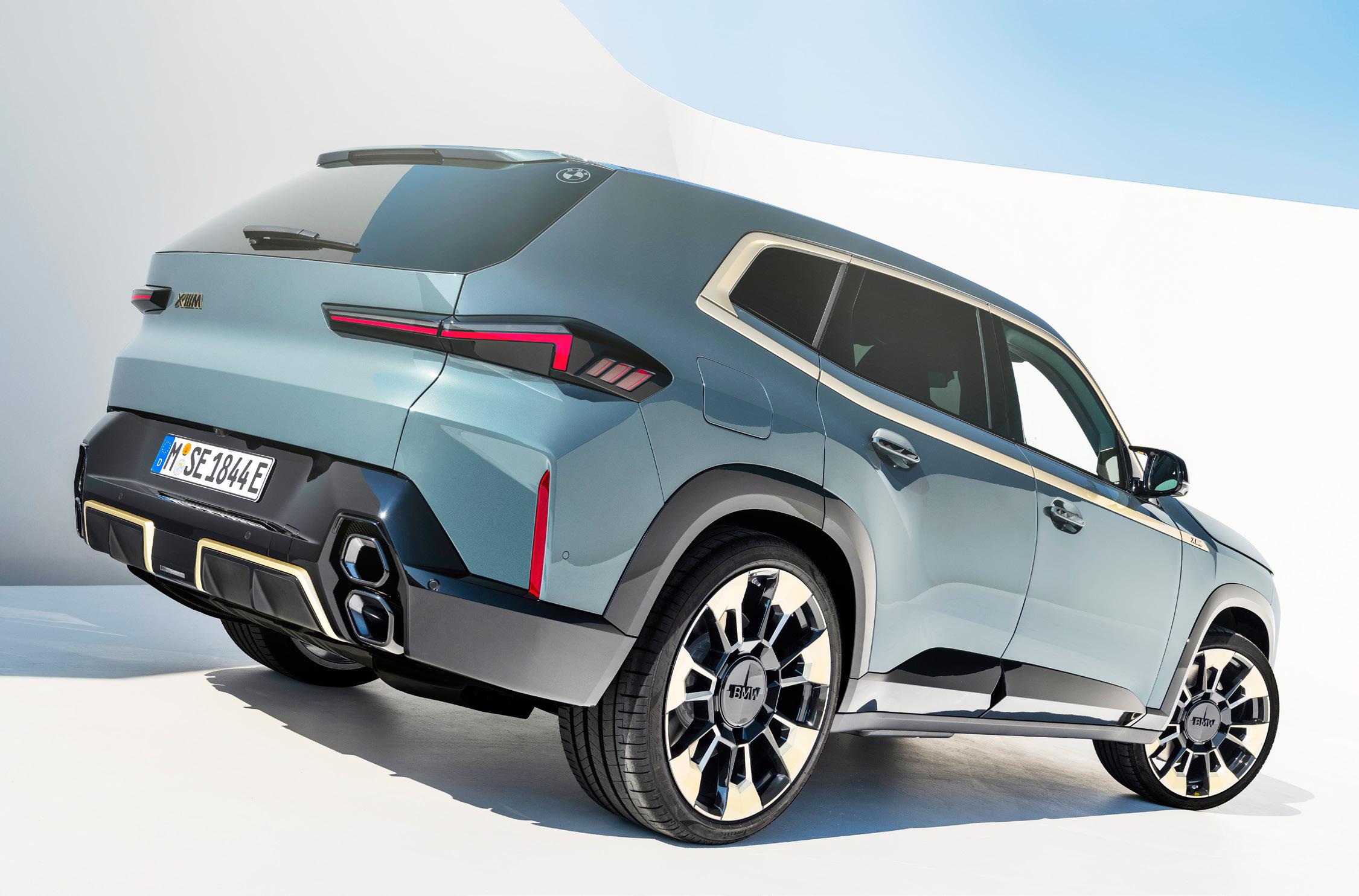
electric motor’s power delivery. M-specific drive sounds will accompany every movement of the accelerator pedal with authentic and accurate feedback when driving in full electric mode, and when the Sport or Sport Plus setting is selected while on Hybrid mode, an epic boost sound will emanate with every spirited push on the pedal.
Though BMW announced that the XM will go on production this month of December at their Spartanbrug Plant in the USA, the BMW XM Label Red will be added to its model line by late 2023, and it will be BMW’s fastest production car, hybrid or not. The combined output from its V8 engine and hybrid electric system is estimated (still in the final stages of development at this point) to reach a staggering
748 hp, and 1,000 Nm/737 lb-ft of Torque. Even with specifications like that, it’d be impossible to overlook the BMW XM’s stunning aesthetics. It’s got speed and performance emblazoned in all caps via its aggressive lines, through its expanded proportion in SAV form. It is in no way subtle, as design cues that are decidedly M-rated engulf it. The unmistakable BMW kidney grille gets gold-colored surrounds, complemented by continuous contour lighting. The gaping air intakes work with the split headlight clusters to create a striking fascia that is a clear indication of the XM’s demeanor. The gold wrap continues with a gold accent band that emphasizes its stretched silhouette. The rear end gives a nod to the famed M1, with engraved twin
BMW badges that flank the top end of its rear windshield. Its light 21-inch M-alloy wheels come standard, but XM variants up the tier are fitted with 23’s.
One might be conflicted as to deciding which is more enthralling- the outside, or the interior. Inside the XM, it’s definitely luxurious with style dialed up to the nines. The cockpit is decidedly driver-centric, and designed entirely around an active driving experience with M multifunction seats, a model specific M steering wheel and graphics, and shift lights for the BMW Curved Display and Heads-Up Display. A combination of top-notch materials and extravagant design are what makes the rear section of the BMW XM a stunningly exclusive M Lounge. Vintage Leather is one of four different trim combinations made available for customization. Heated backrests, a sculptured headliner and an array of 100 LED lights to set the ambience for a superb 1,500watt Bowers and Wilkins Diamond Surround Sound System.
On the aspect of precise control, the BMW XM is equipped with the BMW Live Cockpit Professional and Heads-Up Display. It is the interface for the M-specific version of BMW’s multi-sensory vehicle experience BMW iDrive, based on BMW’s latest Operating System 8, utilizing a curved display made up of a 12.3-inch information display and a 14.9-inch control display.
BMW has certainly pulled all the stops in the design, engineering, technology and equipment for the XM, pushing further the boundaries of form, comfort and performance that’s just apt for what is set to be an iconic nameplate, ultimately deserving to be the first all-new M original since the legendary M1.
Plus: All-New, the entire BMW gauntlet, the future is now.
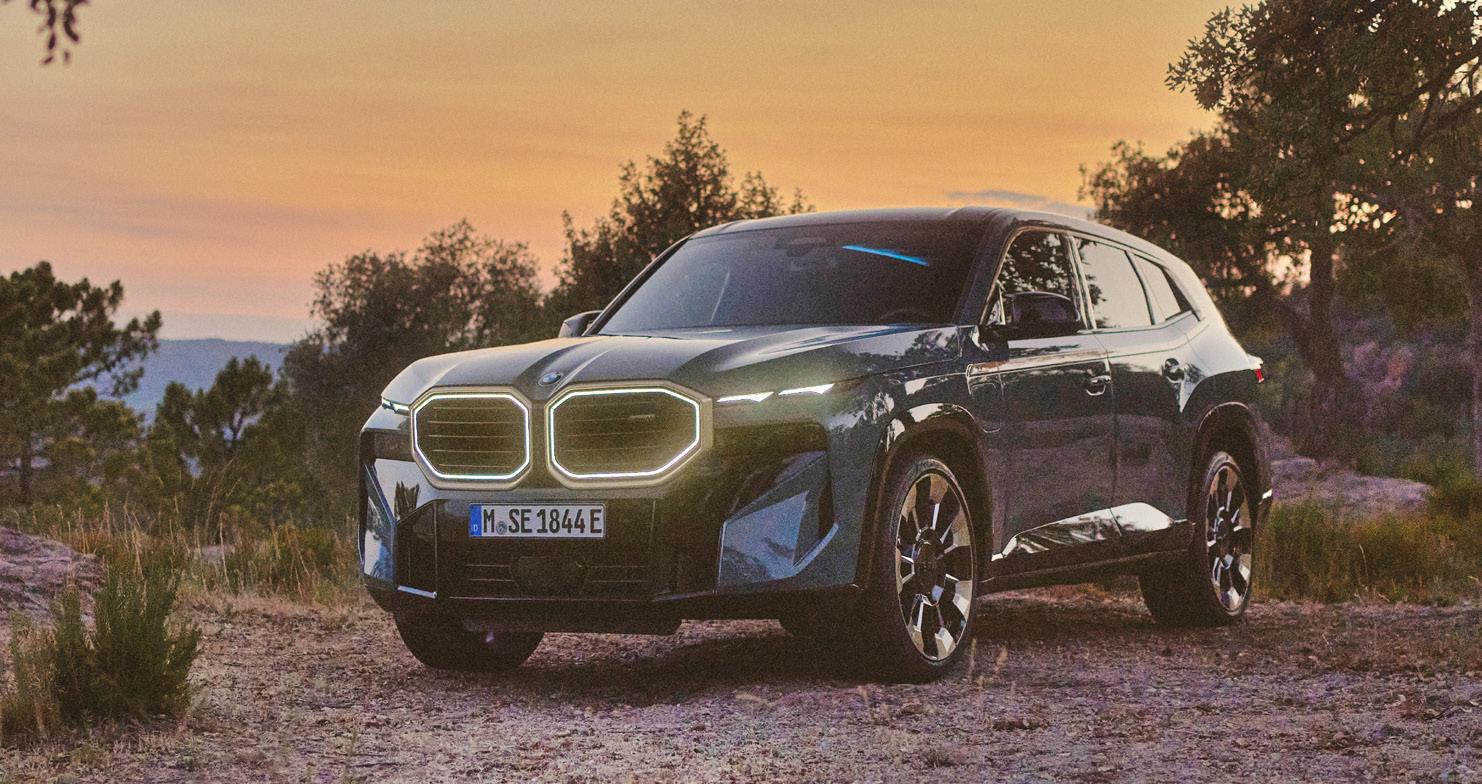
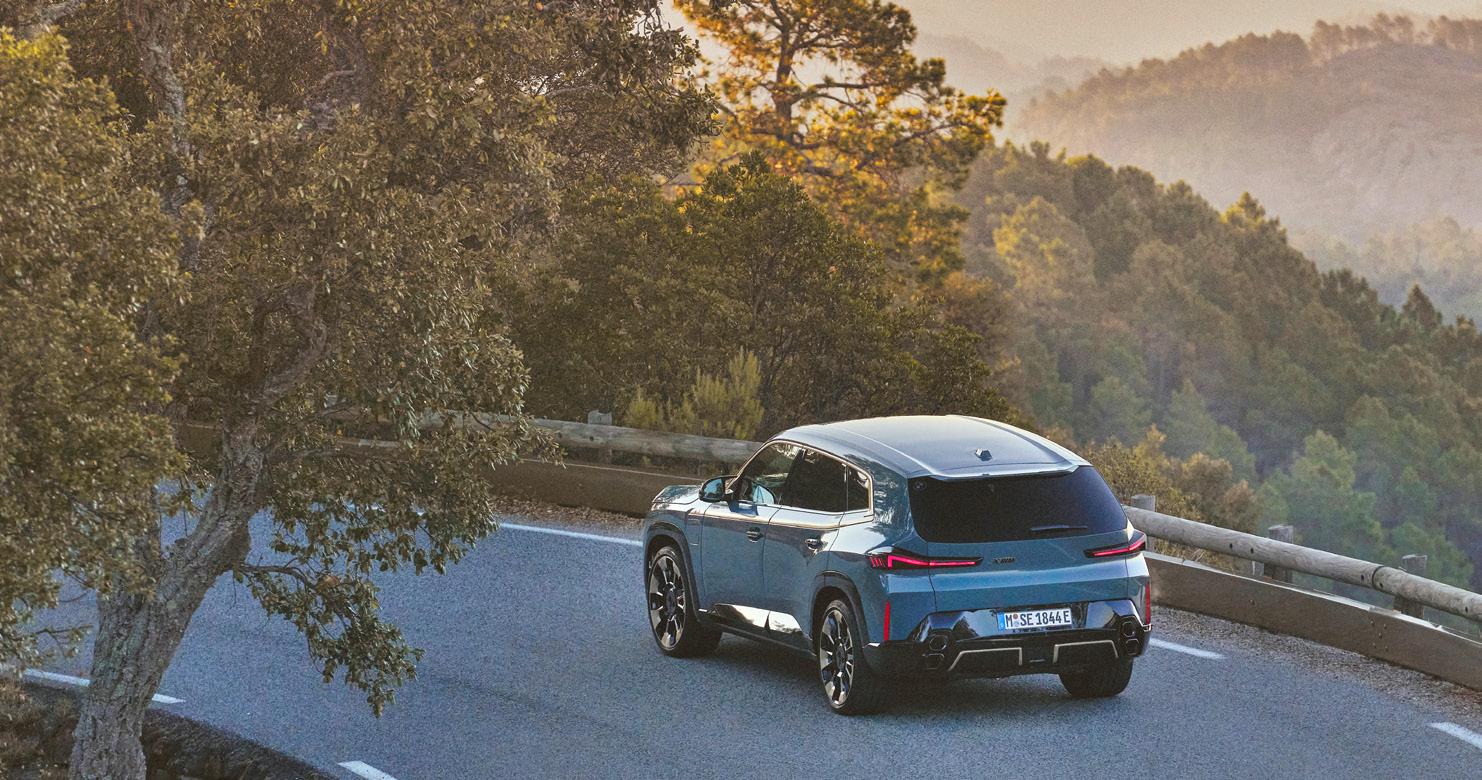
Minus: No fixed importation plan yet. 735 bhp/735 lb-ft Label Red model will carry a starting sticker price of over $185,000.00.
• Transmission: 8-speed automatic with integrated electric motor, All Wheel Drive (xDrive) • 0-100 km/h (0-62 mph): 4.3 seconds Top Speed (mph): 250 km/h (155 mph) Governed • Price as tested: Starts at US$ 159,995.00

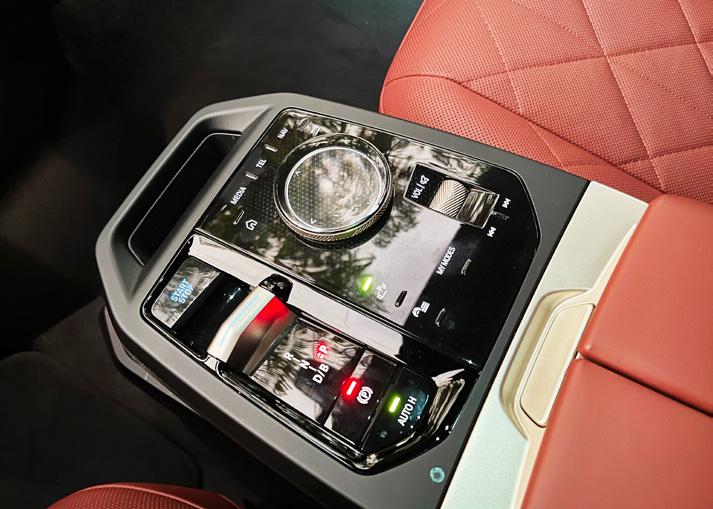 Words: Kevin C. Limjoco Photos: Isabel N. Delos Reyes
Words: Kevin C. Limjoco Photos: Isabel N. Delos Reyes
I THOUGHT THAT the Jaguar I-PACE could not be beat in our market for the “best premium EV” for a couple more years, but along came the all-new BMW iX in its “entry-level” xDrive40 variant, and it swiftly torpedoed it. I still love the silent luxury feline which is still quicker and a touch more agile since it is smaller and produces more power. But for less money,
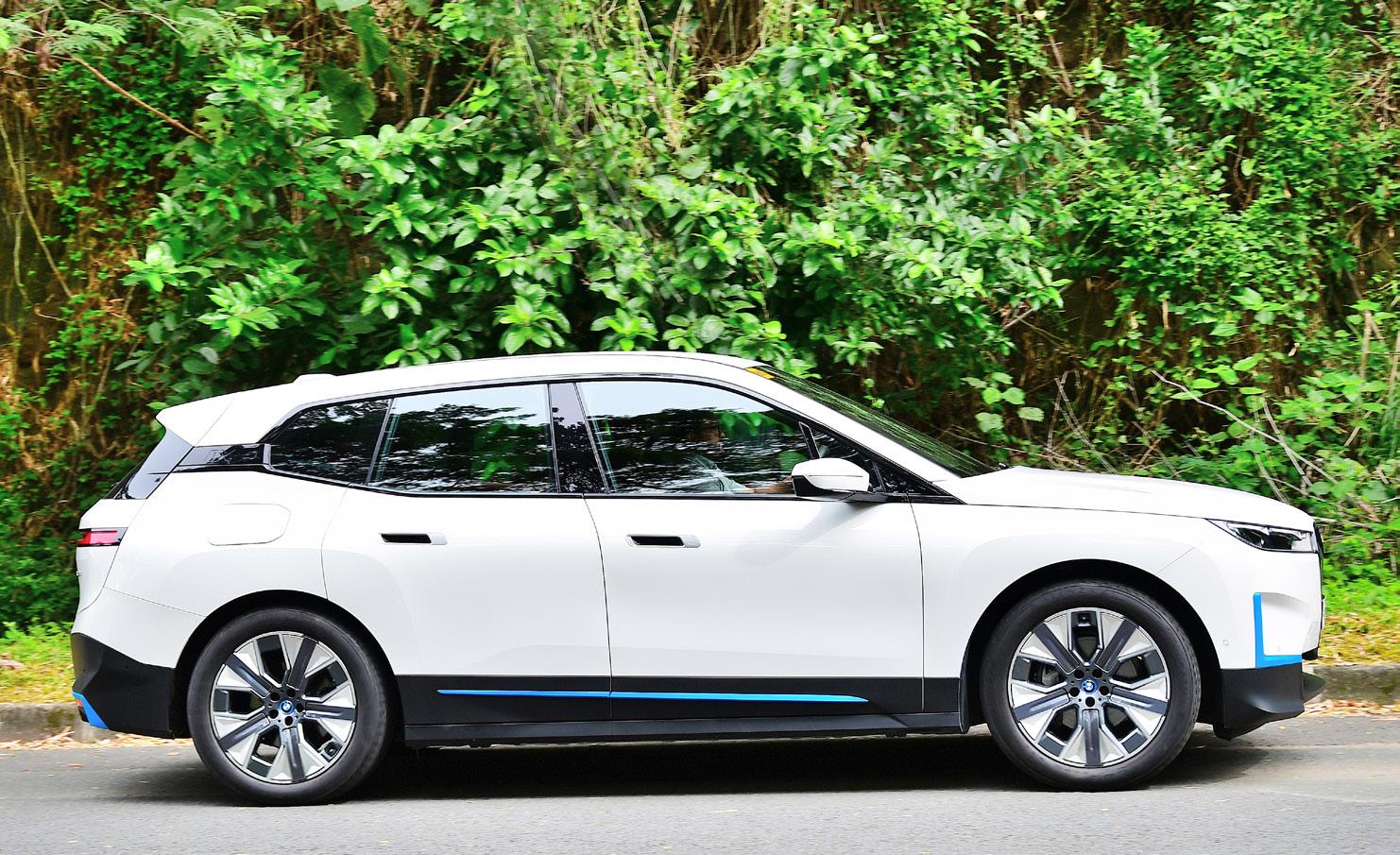

a whopping PhP1,300,000.00 less at its current promotional retail pricing, you get a significantly larger vehicle with even more interior capacity, more standard and unconventional features, more creature comforts, and more range.
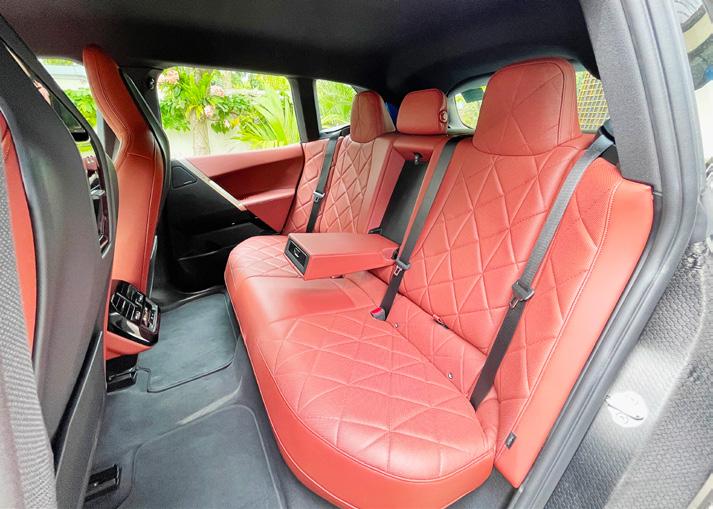
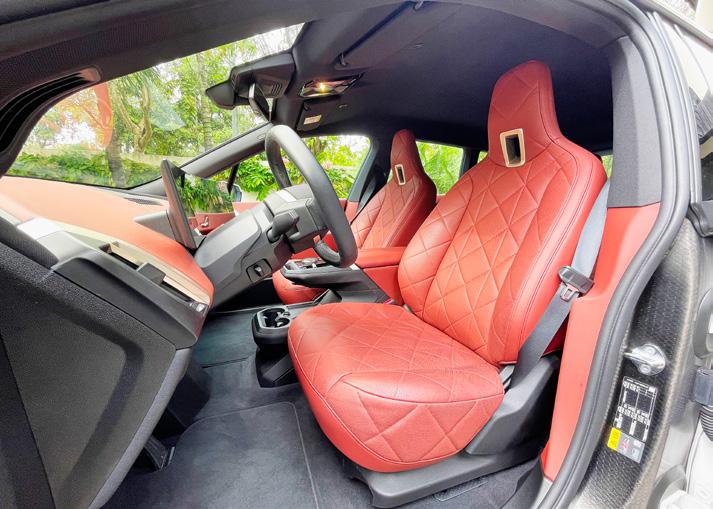
Sure, its exterior design may be polarizing but the biggest critics are not the actual buyers. Genuine buyers, experienced drivers, and BMW fans will love it because it more than retains the core characteristics of the brand. I love it! The all-new BMW iX xDrive40 is this year’s Best Premium EV in the 18th C! Awards for good reason. Yes, there are two more powerful and even more richly featured models available too, which you can indent order from BMW Philippines; the 516 bhp / 564 lb-ft xDrive50 with 518-kilometers of range that accelerates from 0-100 km/h in 4.3 seconds and the ferocious 610 bhp / 811 lb-ft M60 with 448-kilometers of range, standard adjustable air suspension and rear-wheel-steering that accelerates from 0-100 km/h in 3.6 seconds with a governed top speed of 250 km/h! On Sport mode with the M60 (not a full M-model but a stop-gap), BMW employed legendary award-winning composer Hans Zimmer to produce a model-specific soundtrack!
The BMW iX xDrive40 may not have the Zimmer support soundtrack but it already produces very compelling unique synthesized sounds through the magnificent standard 18-speaker Harman/Kardon stereo system (there is even an optional 30-speaker Bowers & Wilkins setup available for the iX-series) that make every moment in the capacious EV crossover a thrill like you are starring in your own action-adventure movie!
On Sport mode the iX xDrive40 catapults from 0-100 km/h in 6 seconds flat which is
still fantastic and plenty quick while you feel the torque from all four corners efficiently pressing you into the fabulous flamboyantly designed quilted genuine Olive-tanned leather seats as the electric motors spin to 12,100 rpm!
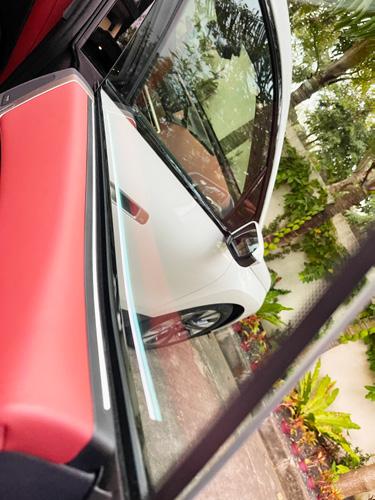
Despite its size, it is actually larger and more spacious than a BMW X5 albeit with a lower roofline, the iX has a drag coefficient of .25cd which bests the Jaguar I-PACE’s .29cd which is already very good. The iX xDrive40 rides on very stylish and massive 9-inch wide 21-inch alloys wrapped with excellent Bridgestone Alenza Enliten 001 255/50R21 109Y RFT tires.

Managing pace and weight are regenerative 13.7-inch vented discs up front squeezed by 4-piston fixed calipers and 13-inch vented discs at the rear handled by single-piston floating sliders.
Using the standard supplied home socket charging cable, the onboard 11 kW AC charger will charge the iX xDrive40 from a completely depleted battery to full capacity in 7 hours and 45 minutes. Much like the first i-series models, the i8 and i3, that we already loved and enjoyed, the all-new pure-EV crossover uses a trick carbon-fiber-intensive structure

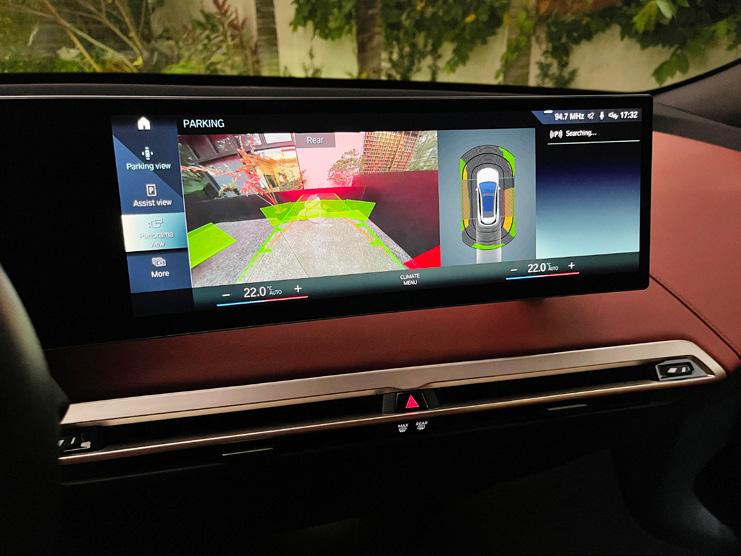
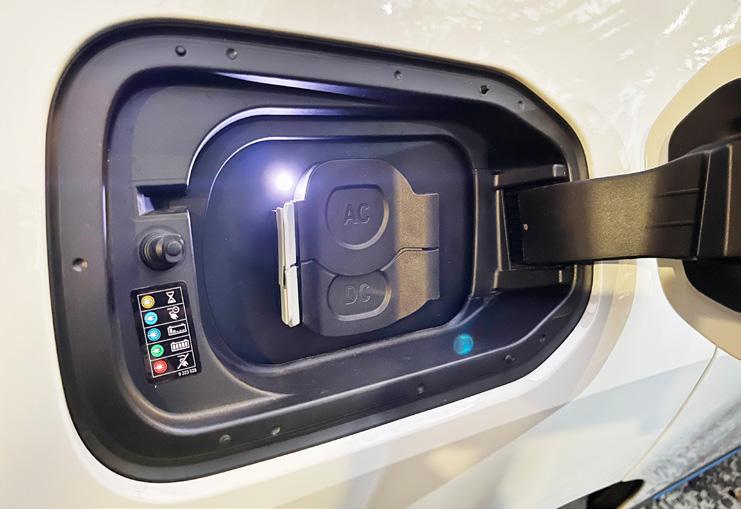
with generous amounts of aluminum and fully independent suspension (double wishbones up front and 5-link rears) to also offset the weight of the centrally located battery in the floor. The iX drives relentlessly like a much smaller and lighter wagon. By 2030, BMW’s goal is to have half of its worldwide sales to be electrified.
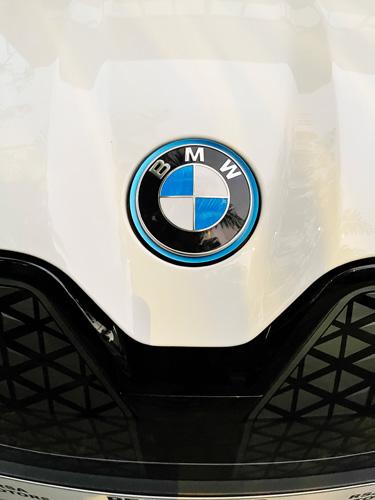
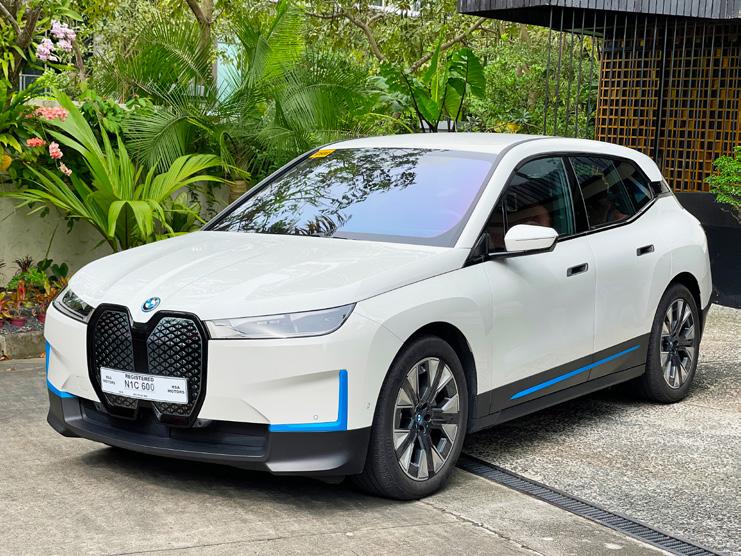


The awesome interior is truly brilliant and exciting. The new hexagonal-shaped steering wheel is complemented by the sensational unified curved frameless driver-centric instrument and iDrive 8 infotainment panel that houses two screens measuring 12.3 and 14.9 inches. The number of switchgears has been reduced significantly compared to non-electrified BMW models so the interior atmosphere is not as instantly familiar but you adapt very quickly as the layout feels organic and logical. Yes, even the new exterior door handles on the frameless doors and interior button locks become natural after a few minutes. I love how the leather wraps the dash and door panels too. Of course, Apple CarPlay and Android Auto are standard as well as the HUD system and wireless smartphone charger on top of a massive list of standard kit.
The 2023 BMW iX xDrive40 is supported by a 5-year / 200,000-kilometer warranty and represents a very bold year-ender model like the axiomatic mic-drop.
Plus Unique, hugely entertaining, achingly desirable with incredible athleticism, cool ambient lighting treatments, ultra-sophisticated and luxurious. More affordable and significantly more spacious, with more range, comfort, and standard equipment than the Jaguar I-PACE.
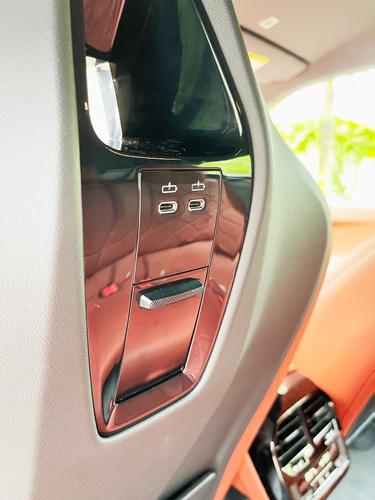
Rating 10/10
Minus Not as quick as the Jaguar I-Pace in xDrive40 form, the 610 hp BMW iX M60 is the Sultan of the model range.
Specifications — 2023 BMW iX xDrive40
Engine: Dual 3-phase electrically excited synchronous AC motors, front motor 268 hp / 260 lb-ft, rear motor 335 hp / 295 lb-ft, 76.6-kWh liquid-cooled lithium-ion battery pack, 330.3 Voltage, 1-Speed Direct Drive. • Max power: 322 bhp (240 kW Total Combined System Power) • Max torque: 465 lb-ft (630 Nm Total Combined System Torque) 0-100 km/h (0-62mph): 6 sec. • Top Speed: 200 km/h (125 mph) Governed • Fuel Mileage: 22.5 kWh/100 kms. Overall, 86 MPGe (372–425 kilometer / 231–264 miles range) Price as tested: PhP 6,290,000.00 (promotional price)
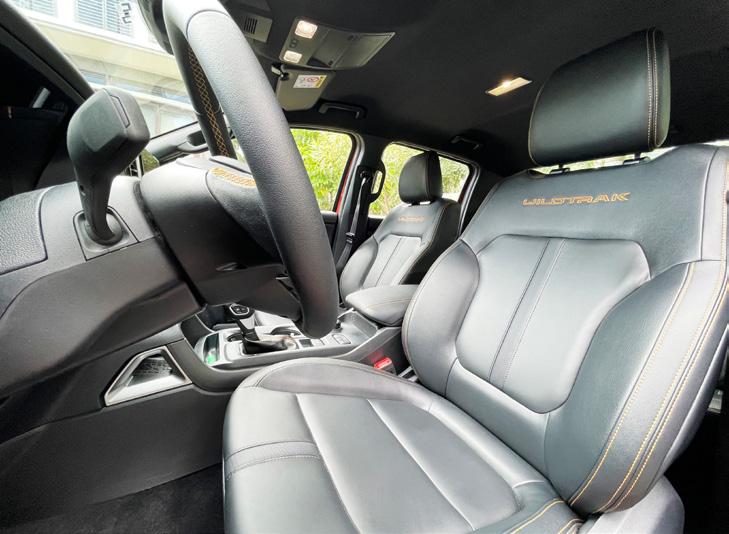
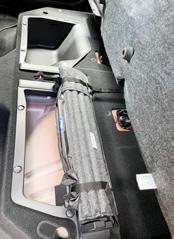
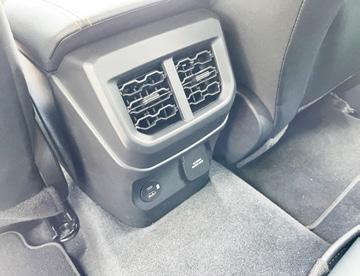
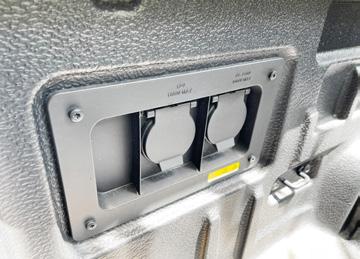

MUCH HAS BEEN said and celebrated already about the new Ford Ranger model family series, especially with the ferocious upcoming gasoline-fueled 392 bhp / 430 lb-ft twin-turbo 3.0-liter V6 Raptor. If that rabid model is too much for you, then the next rung 3.0-liter V6 twin-turbodiesel Wildtrak producing 247 bhp / 442 lb-ft of torque should surely light your fire. However, our market won’t receive either for quite a bit longer. Realistically, we estimate that the new Ranger Raptor will be released domestically by the 3rd quarter of 2023 at the earliest while the V6 turbodiesel may first be applied to the new Everest before the pickup about the same time as the release of the hugely desirable Sport Truck.
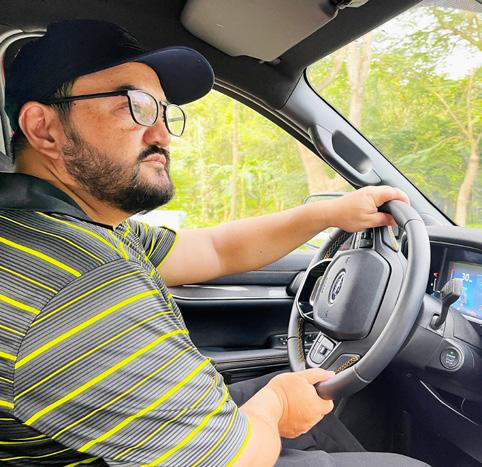


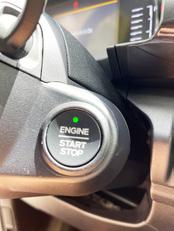
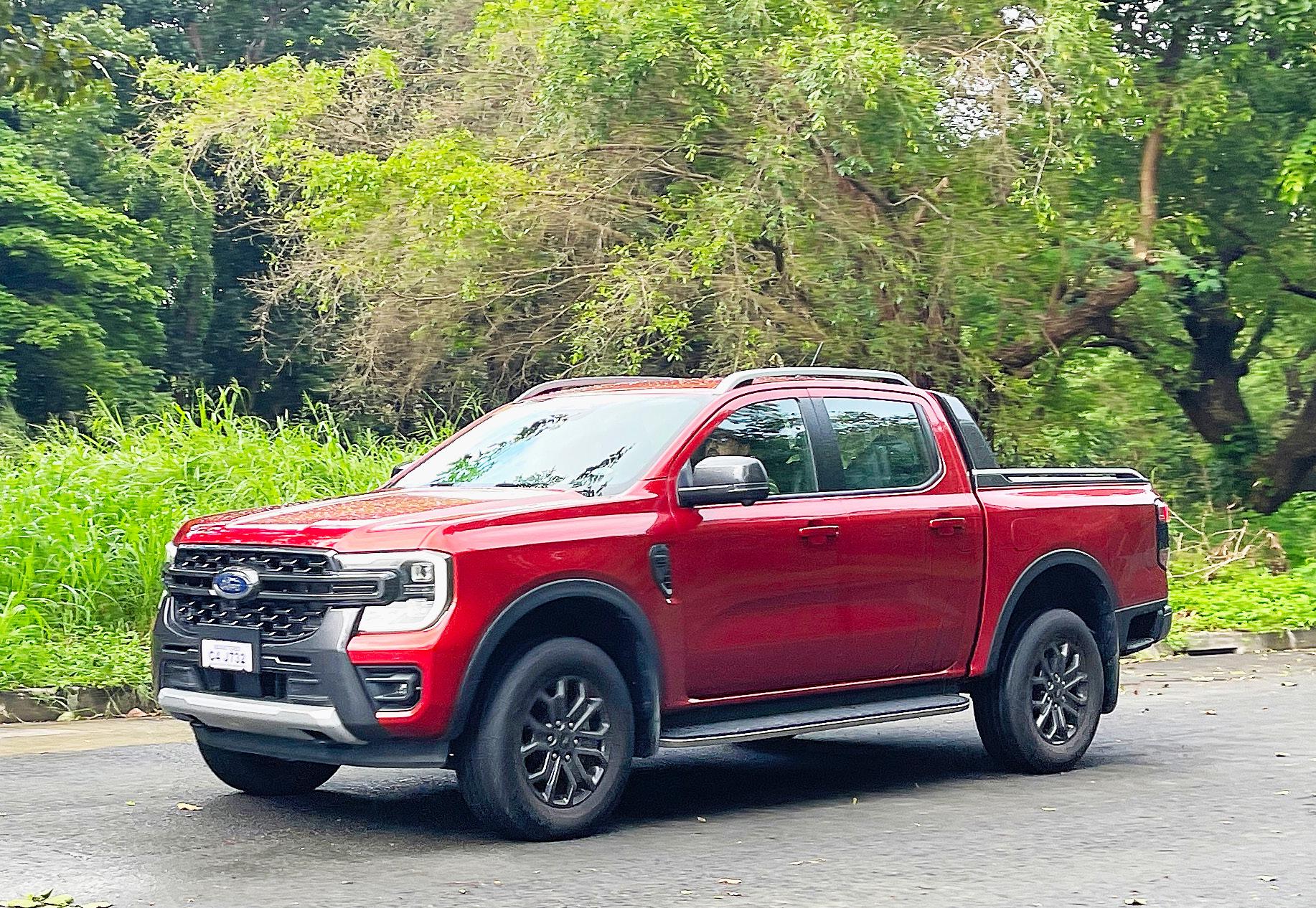
How ironic that the most capable offroad mid-size pickup truck in our Philippine market, the almost all-new 4th generation Ford Ranger Wildtrak 4x4, that also has the most commodious and versatile rear bed, will appeal most to new buyers who would spend the least amount of time off-road nor fully optimize the fabulous rear bed.

The new Wildtrak 4x4, despite its handsome purposeful looks, mildly retuned engines and transmissions (for better efficiency and smoothness but loses 4 bhp in the process yet retains the same 369 lb-ft @ 1750 to 2000 rpm of torque with the same 10-speed gear ratios but with revised shift points), significantly stronger and larger front brakes with rear vented disc brakes instead of drums on the Wildtrak Bi-Turbo model, has a 50 mm longer wheelbase, a 50 mm wider track, larger infotainment screens, new packaging, excellent rear bed configuration with sidesteps, and more was a very close thirdplacer at the 18th C! Awards.
The new Ford Ranger model series are great and they now finally have rear climate control vents but if you get past the very attractive 12-inch portrait SYNC®4A infotainment screen, 8-inch digital instrument cluster, and Cyber Orange interior stitching on the new interiors, the Isuzu/Mazda twins still have more refined straightforward interior cabins, especially
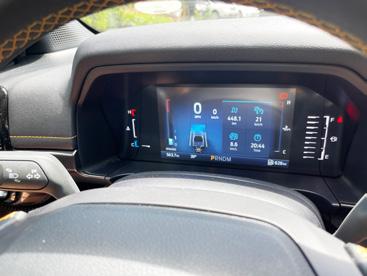
with the top-spec brown leather seats and 8-speaker audio systems that create a more car-like ambiance. The new electronic brake is great but I prefer using the conventional mechanical emergency brake found in the Isuzu twins. I also prefer the tastefully executed analog instruments on the Isuzu twins (each with their own unique designs) supported by a very thorough central 4.2-inch multiinformation TFT screen instead of the 8-inch fully digital screen of the Ford. The driving and off-road data on the Ford are great but how the information is displayed is distracting not because it is overwhelming but rather because of its uninspired and elementary presentation, especially when compared to the multitude of new vehicles available today that use fully digital instrumentation.

The new Ford Rangers have certainly grown in size, compliance, and ability building
on the robust T6 chassis supported with new suspension (with more spring/damper articulation for improved ride and handling on and off-road) and brakes hence why the updated chassis is described as version “T6.2” but you also feel the more pronounced weight increase of over 200 kilos. The off-road ability of the Ford is best-in-class where it feels peerlessly planted, effortless, and confident. The wealth of new gadgetry combined with focused engineering makes the Ranger Wildtrak 4x4 the most accomplished in its class off-road. The Ranger Wildtrak is more planted and rides with astoundingly more refinement than ever before while the electric steering is more precise and effortless. The active safety measures can take a bit of control away from the driver though, so you either adapt to it or disable independent features that you find too eager to please.
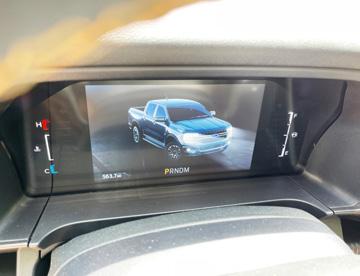
The new cabin has the most soft-surfaces and contrasting finishes in its class which will definitely attract new buyers especially those who are purchasing their first mid-size truck. The new cabin is the most sophisticated and most comfortable for the model series ever with abundant charging points that include secure wireless smartphone charging and a wealth of cup/drink holders. The front seat belts lost their height adjustment which is odd as it literally helps improve driver and front passenger comfort. Cabin volume remains essentially the same though as the extra dimensions were focused on improving rear bed capacity (a Euro pallet can now fit between the rear arches) and multi-surface dynamic handling. I wish the rear bench had a bit more recline angle though. It is better than before but not as comfortable as the competition. There are two extra hidden
storage compartments found beneath the rear bench, one larger and deeper using plastic protection for potential “wet” items while the other is longer but shallower with exposed sheet metal for “dry” items next to the properly protected toolkit. The jack is securely mounted behind the rear seat back which you can easily access and fold flat.
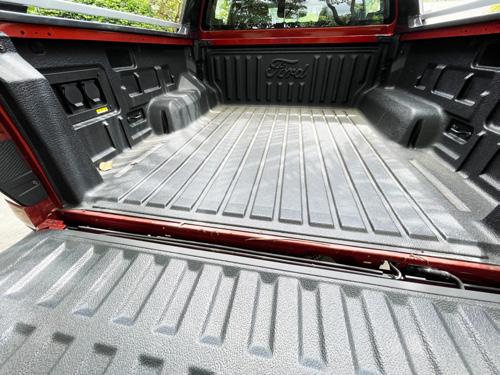
The 2022 Ford Ranger Wildtrak 4x2 variant may look the same and it costs P306,000.00 less however it loses a lot of essential standard equipment along with the 4x4 drivetrain (with its Terrain Management System) which includes the comprehensive safety suite (Advanced Driver Assist Technology), the stronger Adaptive Matrix LED Headlights (though the LED multi-reflector system is already better than its predecessor), the Electronic Locking Rear Differential, no front parking sonar, it uses a 6-speed automatic


instead of the 10-speed, and it uses the single turbo version of the 2.0-liter engine that produces 168 bhp @ 3500 rpm and 299 lb-ft @ 1750-2500 rpm which is actually less fuel efficient at 8L/100km overall consumption.
The hydro-formed front-end structure not only accommodates multiple engine sizes but helps make the turbodiesel engine the quietest in its class. The huge 12-inch touchscreen is fabulous but I do wish that Ford did not commit too many basic functions into the center touchscreen. The cool new short-throw e-shifter that is also back-lit is only available with the two V6 engines, which is a pity. If you do want to learn about the vast number of features of the new truck, the entire manual is available through the infotainment screen. For extra traction on 4L, the electronic rear differential lock can be activated but through the Sync4 infotainment touchscreen, I wish there was a dedicated physical toggle for this function though.
Ultimately, in the end, we are very certain that the new Ford Ranger family will be even more successful that its predecessor. I may be personally critical of a few standard functions and pine for more standard equipment that I feel would make the top-spec models even more desirable to more discerning buyers, but despite all that, I recognize the essential improvements and huge equipment upgrades.
Plus Superior to its predecessor, excellent adaptive matrix full-LED headlights and rear signature LED lights with LED front fog lamps, strong LED puddle lights, overall most attractive mid-size pickup in the market, quietest and most complete interior packaging, best off-road pickup ability, finally has rear passenger aircon vents, best rear bed features in the market, most comprehensive active safety equipment, best brakes in its class, largest infotainment screen at 12-inches in portrait form featuring SYNC®4A with Wireless Apple CarPlay® & Android Auto™ Compatibility and wireless smartphone charger.
Minus The active safety measures can be way too aggressive, the standard 6-speaker system does the large screen an aural disservice, no optional 10-speaker Bang & Olufsen audio, no 4A transmission mode, no Ambient Lighting, no 12.4-inch instrument screen option yet, limited 8-inch instrument screen configurations, no 3.0-liter V6 turbodiesel option yet, no option for a powered retractable aluminum tonneau bed cover either like its predecessor.
Specifications — 2022 Ford Ranger Wildtrak 4x4

Engine: Inline-4, 1996 cc, dohc 16V, Direct Commonrail Fuel Injection, Intercooled Twin Sequential Turbodiesel, 10-Speed AT • Max power: 207 bhp @ 3750 rpm
Max torque: 369 lb-ft @ 1750-2000 rpm • 0-100 km/h (0-62 mph): 9.2 seconds • Top Speed: 202 km/h (126 mph) • Fuel Mileage: 7.6 L/100km Overall Price as tested: PhP 1,885,000.00 (Wildtrak 4x2 variant: PhP 1,579,000.00)

 Words: Ardie O. Lopez Photos: Author and Isabel N. Delos Reyes
Words: Ardie O. Lopez Photos: Author and Isabel N. Delos Reyes

That’s most especially true with the automotive industry. Though ours may have been bit late in significantly adopting electrification, the pace of which our local auto industry is pushing towards it is encouraging. But while infrastructure remains as the most crucial aspect in terms of electrification garnering a wider and enthusiastic acceptance on top of a full EV’s cost and effective range, hybrids- or “semi-EVs” to casually categorize them, are certainly considered as the most viable in this stage that we’re in, for motorists, society in general, to begin embracing the electrified way of mobility.
Leveling up from being merely acceptable to strongly viable is more than a welcome development in the case of hybrids in the Philippines, hence the notable roll out of new hybrid variants from auto brands that aren’t at the premium luxury level. Chery went straight for the jugular, so to speak, by rolling out what is apparently the most engaging and compelling hybrid SUV around, and it’s a plug-in too… as the pièce de résistance of the triumvirate of their flagship 7-seater SUV: the Tiggo 8 Pro. While other brand nameplates are offered with mild variations within a model lineup, Chery released their Tiggo 8 Pro in three major variants: one equipped with a 1.6L Turbo gasoline engine, one with a 2.0L Turbo gasoline engine with an AWD configuration, and as a plug-in hybrid EV, or a PHEV. At this point I’d have to mention Chery’s two very significant wins at the 18th Annual C! Awards- as best Mid-sized Crossover for the Tiggo 8 Pro 1.6T, and of course the best in Hybrids for the Tiggo 8 Pro PHEV, which’ll take charge of our cover story, pun intended.
Chery has certainly endowed the Tiggo 8 Pro PHEV with the most value-oriented features to make it a standout in its category. For starters, it is equipped
with a highly efficient 1.5-liter Inline-4 Turbocharged internal combustion engine (ICE), mated to a pair of synchronous electric motors (55/70 kW respectively) that are powered by a 19.27-kWh Lithium-ion battery pack. While we know that Hybrid Electric Vehicles (HEV) utilize both a gasoline engine and an electric motor as a seamless system to propel your vehicle, the Tiggo 8 Pro PHEV is a Plug-in Hybrid, which positions it in between a full EV and an HEV, for it functions as both. In hybrid mode, it intelligently and seamlessly switches between using either the engine or the electric motors, or in conjunction with each other depending on the driving condition or requirement. It also has the capacity to function as a full EV to run for up to 95 kilometers when the battery is fully charged, without the aid of its gasoline engine whatsoever. So effectively, while you get extended mileage and savings on fuel from its hybrid function, the additional savings you’ll get just running on full EV mode for 95 kilometers is no small benefit.

If your commute to and from work on a typical day is under 40 kilometers, then theoretically you can safely run on battery power alone for 2 days on a single charge. What that racks up to in a month is a savings of thousands of pesos on your regular fuel expenses, not to mention reducing your carbon footprint significantly. And while it might sound like fun instilling a personal routine in which you’re totally independent of fossil fuels for about a week every month, you don’t have to literally plug in or charge the Tiggo 8 Pro PHEV’s battery routinely to top it up- it of course does it automatically via regenerative braking and engine braking, as you drive. How you utilize its effective range on full EV mode is totally up to you. Yes that’d be the perks you’d garner driving a PHEV, and the Tiggo 8 Pro
It's all in the details. From the impeccably designed leather seats to the overall spaciousness of the cabin, the Tiggo 8 Pro offers no compromises.


WITH EVERY NEW TECHNOLOGY THAT’S ADOPTED BY ANY MAJOR INDUSTRY, THERE HAS GOT TO BE A SET OF STAGES THAT SOCIETY GOES THROUGH THAT’D LEAD TO ITS ACCEPTANCE, THEN EVENTUALLY TO IT BEING AN INTEGRAL PART OF THE NORM.


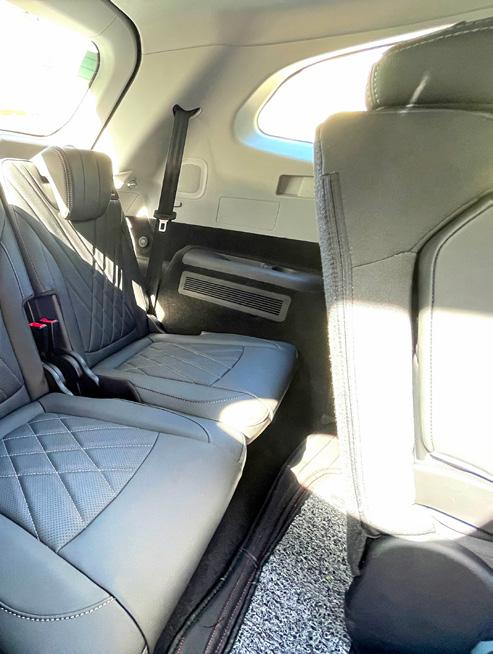




Engine: Inline-4
Location: Front, Transverse Displacement: 1598 cc
Cylinder block: Cast Aluminum
Cylinder head: Cast Aluminum, DOHC, 4 valves per cylinder
Fuel Injection: Direct Injection, Intercooled Turbo
Max power: 194 bhp @ 5500 rpm
Max torque: 214 lb-ft @ 2000-4000 rpm
Transmission: 7-speed Dual Clutch, FrontWheel-Drive
Front suspension: Independent MacPherson Strut with Gas-Pressurized dampers and anti-roll bar.
Rear suspension: Independent Multi-link, coil springs with Gas-Pressurized dampers and anti-roll bar.
Fuel Capacity: 51 liters (13.5 gallons)
Load Capacity: 889 liters with third-row fixed, 1179 liters with third-row folded, 2101 liters with 2nd-row folded
Ground Clearance: 190 mm L x W x H: 4722 mm x 1860 mm x 1745 mm
Wheelbase: 2710 mm
Brakes: Front 12.4-inch (316 mm) ventilated discs with single-piston calipers / Rear 12.3inch (314 mm) solid discs with single-piston calipers Integrated Electric Parking Brake, ABS, HAC, ESC, DBC, TSA
Wheels: 18”x 7.5J Multi-spoke Two-tone Aluminum Alloys
Tires: P235/55R18 100V Cooper Evolution CTT SUV
Weight: (kerb) 1565 kg. (3443 lbs.)
0-100 km/h (0-62 mph): 7.9 seconds
Top Speed (mph): 218 km/h (136 mph)
Fuel Mileage: 6.8 L/100 km Overall
Price as tested: PhP 1,698,000.00
Plus: The most dynamic in its class, very attractive, balanced ride, very comfortable seats, feature-rich.
Minus: No AWD. Wish the Sony audio was standard.
Engine: Inline-4
Location: Front, Transverse Displacement: 1498 cc
Cylinder block: Cast Aluminum Cylinder head: Cast Aluminum, DOHC, 4 valves per cylinder, Dual VVT
Fuel Injection: Multipoint Injection, Atkinsoncycle, One 33.5 hp (25kW) / 59 lb-ft @ 2984 rpm & One 54 hp (40 kW) / 52 lb-ft @ 5457 rpm Permanent-magnet synchronous AC motors, 19.27-kWh (55Ah) lithium-ion battery pack.
Max power: 155 bhp @ 5500 rpm (Combined power with EV: 242.5 hp with transient peaks of up to 320 hp)
Max torque: 170 lb-ft @ 1750-4000 rpm (approximately 281 lb-ft combined with EV with transient peaks of up to 402 lb-ft)
Transmission: DHT Super Hybrid CVT, Front Wheel Drive
Front suspension: Independent MacPherson Strut with Gas-Pressurized dampers and anti-roll bar.
Rear suspension: Independent Multi-link, coil springs with Gas-Pressurized dampers and anti-roll bar.
Fuel Capacity:45 liters (12 gallons)
Ground Clearance: 190 mm
Load Capacity: 889 liters with third-row fixed, 1179 liters with third-row folded, 2101 liters with second-row folded
L x W x H: 4722 mm x 1860 mm x 1747 mm
Wheelbase: 2710 mm
Brakes: Front 12.4-inch (316 mm) ventilated discs with dual-piston calipers / Rear 12.3inch (314 mm) solid discs with single-piston calipers
Wheels: 18”x 7.5J Multi-spoke Two-tone Aluminum Alloys Tires: P235/55R18 100V Cooper Evolution
CTT SUV
Weight (kerb): 1769 kg. (3892 lbs.)
0-100 km/h (0-62 mph): 8.6 seconds
Top Speed (mph): 212 km/h (132 mph)
Fuel Mileage: 6.4 L/100 kms. ICE Overall (95-kilometer Pure EV Range)
Price as tested: PhP 2,698,000.00
Plus: The most affordable and most versatile full-featured Plug-In PHEV in the market, balanced ride, desirable, good Sony audio, very efficient, remarkable cabin design and interior materials, very comfortable and peppy.
Minus: Price. No AWD.
Engine: Inline-4
Location: Front, Transverse Displacement: 1998 cc
Cylinder block: Cast Aluminum
Cylinder head: Cast Aluminum, DOHC, 4 valves per cylinder
Fuel Injection: Direct Injection, Intercooled Turbo
Max power: 251 bhp @ 5500 rpm
Max torque: 288 lb-ft @ 1750-4000 rpm
Transmission: 7-speed Dual Clutch, FrontWheel-Drive, Intelligent AWD
Front suspension: Independent MacPherson Strut with Gas-Pressurized dampers and anti-roll bar.
Rear suspension: Independent Multi-link, coil springs with Gas-Pressurized dampers and anti-roll bar.
Fuel Capacity: 51 liters (13.5 gallons)
Load Capacity: 889 liters with third-row fixed, 1179 liters with third-row folded, 2101 liters with 2nd-row folded
Ground Clearance: 190 mm
L x W x H: 4722 mm x 1860 mm x 1745 mm
Wheelbase: 2710 mm
Brakes: Front 12.4-inch (316 mm) ventilated discs with dual-piston calipers / Rear 12.3inch (314 mm) solid discs with single-piston calipers Integrated Electric Parking Brake, ABS, HAC, ESC, DBC, TSA
Wheels: 18”x 7.5J Multi-spoke Two-tone Aluminum Alloys
Tires: P235/55R18 100V Cooper Evolution CTT SUV
Weight (kerb): 1712 kg. (3766 lbs.) 0-100 km/h (0-62 mph): 6.5 seconds
Top Speed (mph): 227 km/h (142 mph)
Fuel Mileage: 6.7 L/100 km Overall
Price as tested: TBA
Plus: The most dynamic and most powerful in its class, very attractive and desirable, balanced plush ride, very comfortable seats, feature-rich.
Minus: Wish we had one in our C! Fastfleet.
PHEV is not the only PHEV in the market- but it’s how Tiggo’s PHEV is packaged and offered at an impressive value-for-price proposition based on its equipment and features that makes it take the cake, so to speak.
The Tiggo 8 Pro HEV engine and motor’s combined maximum power output is a tremendous 320hp and 402 lb. ft. of Torque, delivered with finesse and an innate smoothness that you’ll appreciate via its refined ride quality and dynamics. The Tiggo 8 Pro variants across the board are built on the T1X platform that’s shared by Jaguar and Land Rover, riding on an independent MacPherson Strut and Multi-link suspension system with gas dampers and anti-roll bars, that feels plush but quite planted in terms of handling. On a spirited long route test-drive run we had from Subic Bay to Bataan’s Samat Cross which was capped off by a technical hill-climb, the Tiggo 8 Pro (we drove all variants) revealed its athletic prowess. Sure, a lot of current model SUVs can cruise effortlessly on the straights with abundant power on tap, but the more we pushed the Tiggo 8 Pros at speed, the more secure and precise it felt keeping its composure even on the tightest of turns while going uphill. Sure the disparity between its 2.0T and 1.6T variants’ power is discernible, but the tenacity on the road and how solid and substantial they all felt was consistent.
The Tiggo 8 Pro lineup has all the bases covered, represented by the attainable 1.6T, the performance-oriented 2.0T AWD, and the environmentally friendly and hugely economical PHEV.
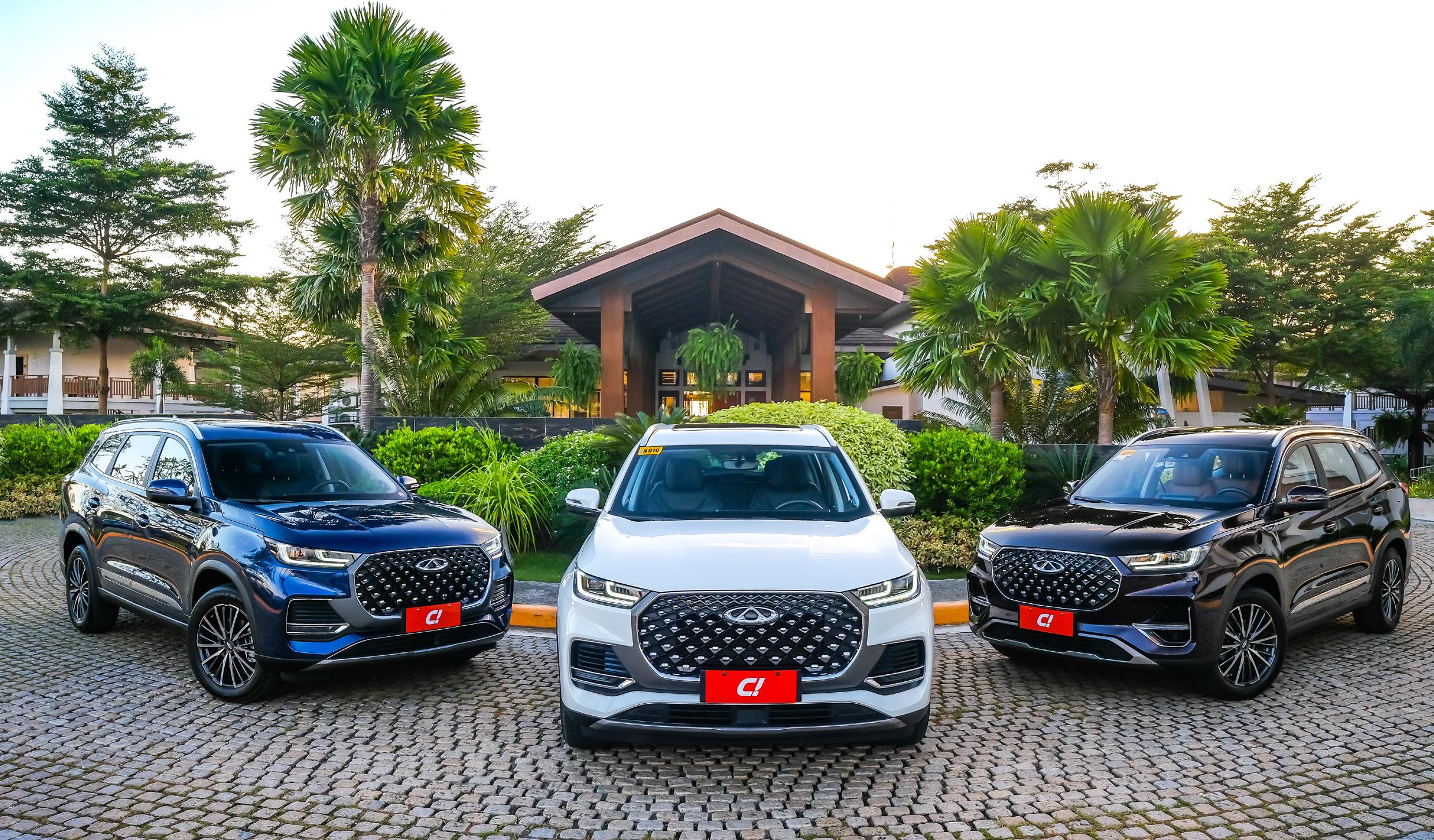
Sure, the Tiggo 8 Pro PHEV felt a little heavier than its siblings due to its configuration of having motors and a large battery to add to its payload, but this only contributed to its more luxurious ride characteristic. Speaking of, luxury is what the Tiggo 8 Pro PHEV was slathered with compared to its counterparts in the market. The attention to detail is impressive. Its highly ergonomic seats come with double-stitched Nappa leather-appointment, and the two up-front with 6-way electronic adjustment. The front passenger seat even has separate electronic controls that the rear passenger can conveniently access to adjust- a boss-level feature that’s quite notable. Its butterfly headrests pose an advantage when it comes to comfort.
The driving interface of the Tiggo 8 Pro PHEV is undoubtedly the interior’s centerpiece. With a 12.3-inch ultrawide aspect LCD touch-screen extending all the way to its virtual instrument binnacle uninterrupted as a single panel laid atop its stylish soft-touch dashboard is exceptional, along with the single strip of AC vents and tasteful monotone accents, the feel is
decidedly modernistic Zen. The entertainment system is Apple CarPlay compatible and has full Bluetooth functionality, and comes with a great sounding Sony 8-speaker system. The floating center console where its climate control functions are situated has this pianolacquer finish that complements the matte aluminum accents very well. Its multi-function steering wheel (as its steering feel) feels sporty and substantial. The graphics on the displays are sharp and vivid, as they are functional. The essential 360-degree all-around view is present along with a clear backing camera with dynamic trajectory guides. Variable ambient lighting also comes standard, which along with its truly panoramic sun/moon roof, make for a cabin that’s at a comfort and equipment level that’s touching on premium-luxury level.
Chery did not stop with eradicating what makes a hybrid vehicle feel passive, clinical, boring and geekythat obviously was a given. Their headstrong direction with the Tiggo 8 Pro PHEV is clearly apparent, and it’s about elevating what a PHEV should be in several respects- the satisfaction it provides in terms of style,
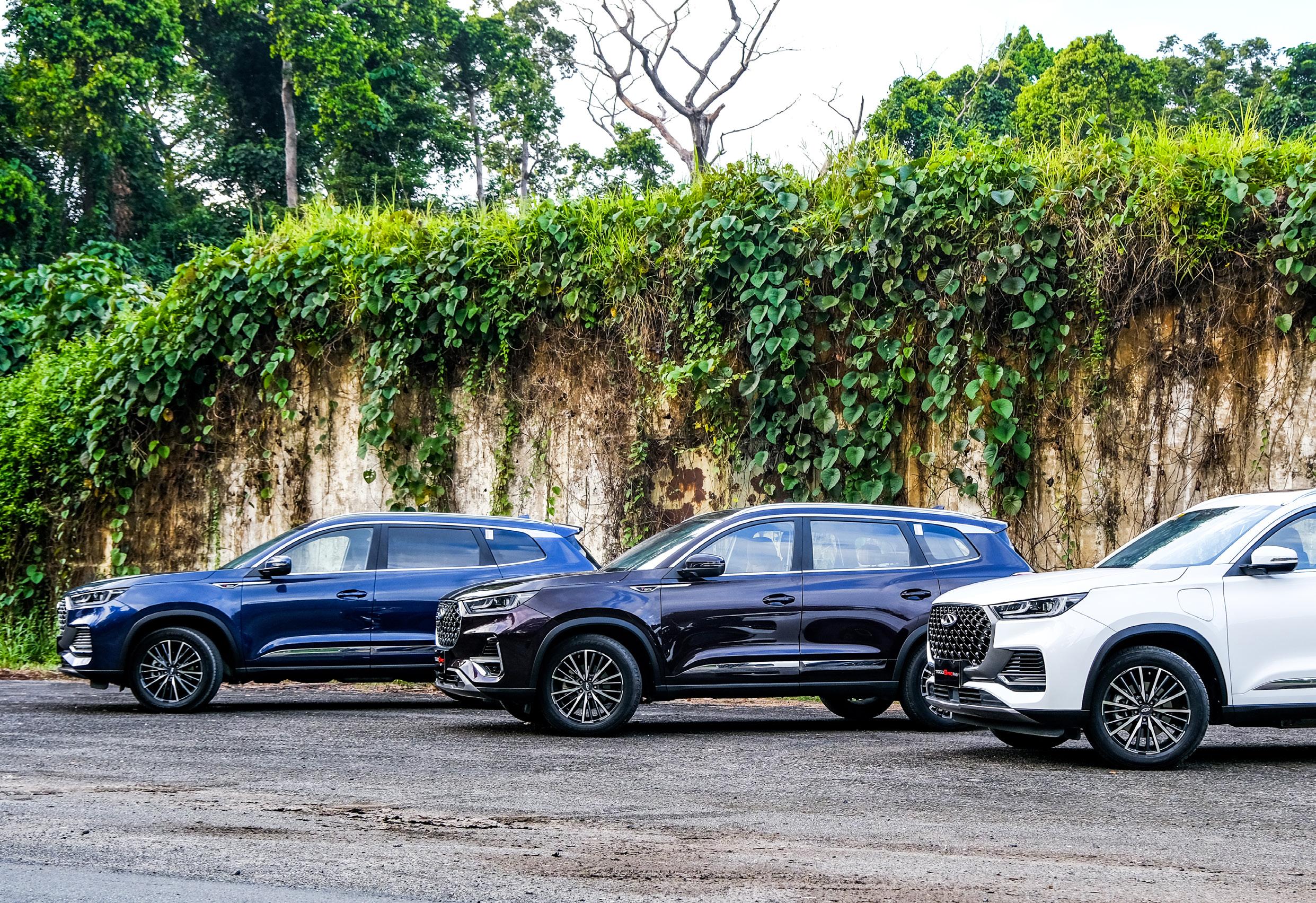
The 12.3-inch touchscreen has enough real estate to combine navigation, music, and call functions in one area.

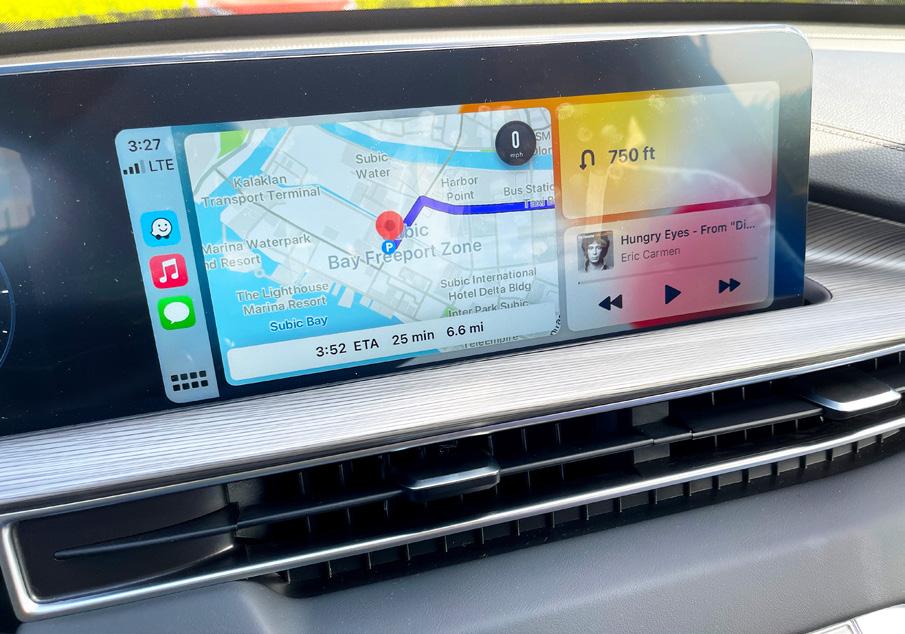
aesthetics and comfort, combining sophistication with tactile luxury; the enjoyment from the driving and handling performance it provides with more than ample power and precise dynamics; its cost-efficiency, practicality and flexibility as a PHEV, rewarding its owners with increased mileage, significant savings on fuel expenses and not to mention being kinder to the environment with less toxic emissions from it use. All this with a price tag of Php 2.698 Million, that goes head-to-head with top-tier variants of conventionally powered mid-sized SUVs. They also capped it with the security of their Chery Premium Preserv warranty package that includes a 7-year warranty on its electric motor and Lithium battery, a 7-year engine and general bumper to bumper warranty, and that includes 3 years of free preventive maintenance and roadside assistance as well.

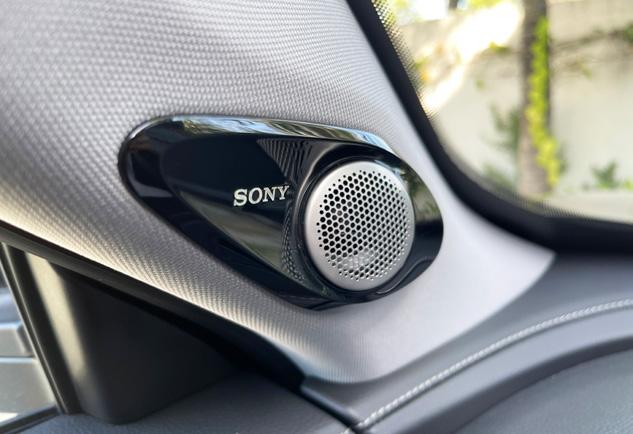

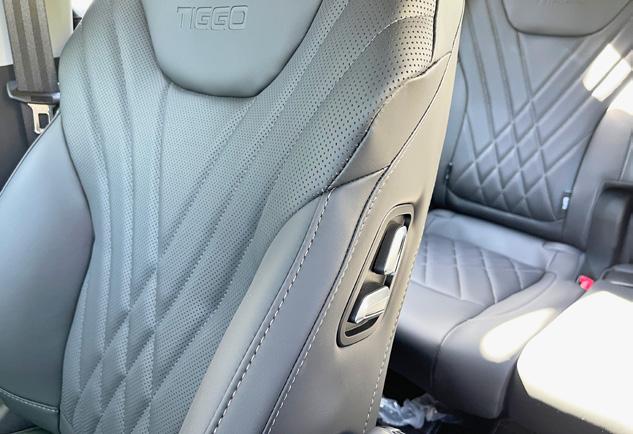

Bestowing it with the C! Award for best Hybrid was an easy decision based on all of its impressive facets, as the value it offers is definitely exceptional. The Chery Tiggo 8 Pro sets the new standard in hybrids, as the benchmark in its category.


“CHERY DID NOT STOP WITH ERADICATING WHAT MAKES A HYBRID VEHICLE FEEL PASSIVE, CLINICAL, BORING AND GEEKYTHAT OBVIOUSLY WAS A GIVEN. THEIR HEADSTRONG DIRECTION WITH THE TIGGO 8 PRO PHEV IS CLEARLY APPARENT, AND IT’S ABOUT ELEVATING WHAT A PHEV SHOULD BE IN SEVERAL RESPECTS- THE SATISFACTION IT PROVIDES IN TERMS OF STYLE, AESTHETICS AND COMFORT, COMBINING SOPHISTICATION WITH TACTILE LUXURY.”
s I stomped on the Civic Type R’s brakes and turned into Corner 3 at Autopolis Circuit in southern Japan, one thing was clear. This 2023 model Type R has higher cornering speeds than its predecessor and its so much easier to drive at the limits of adhesion. And that will help it to regain its title as the fastest front-drive sedan in the world when Honda takes it back to the Nurburgring soon.
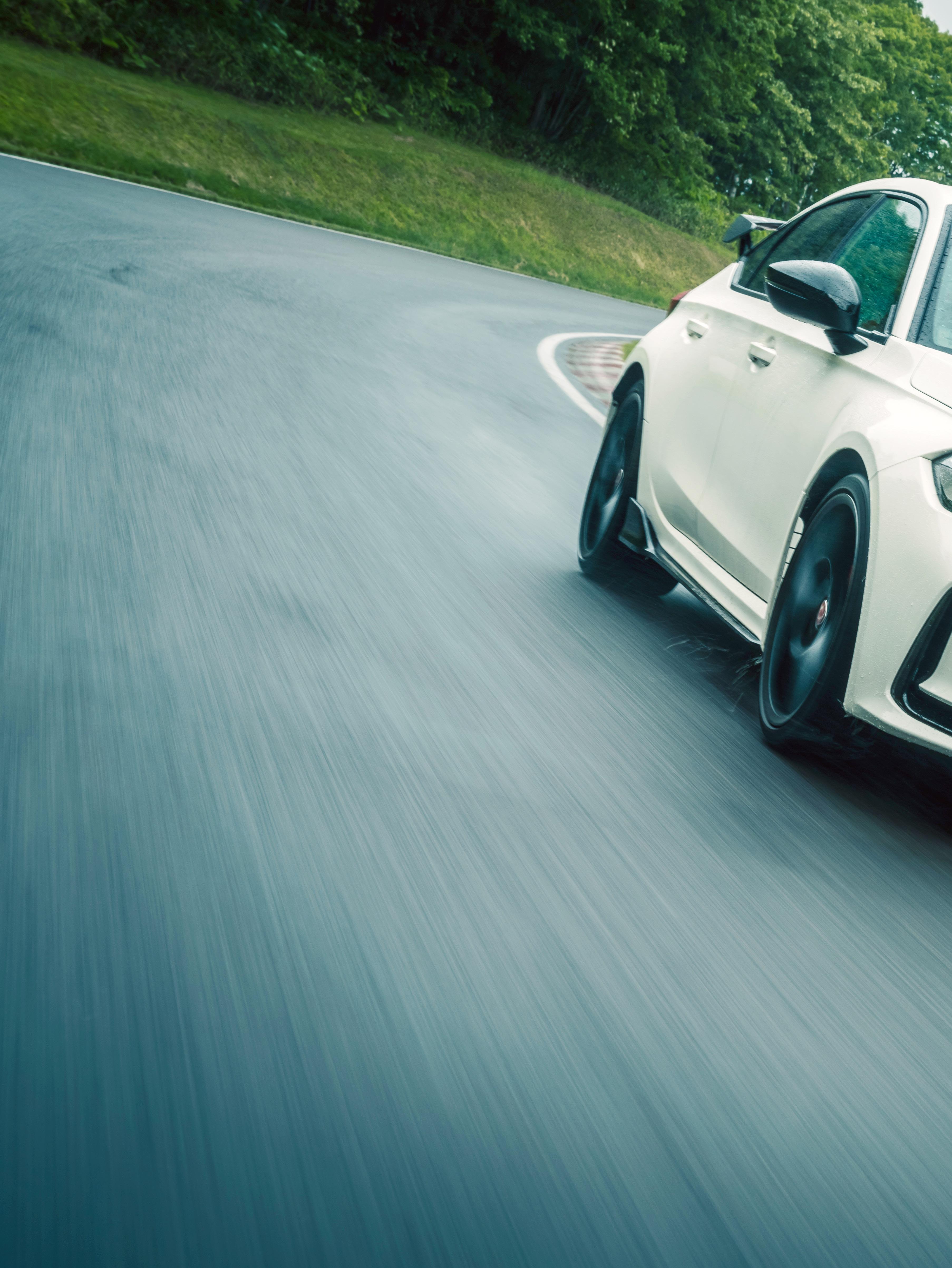
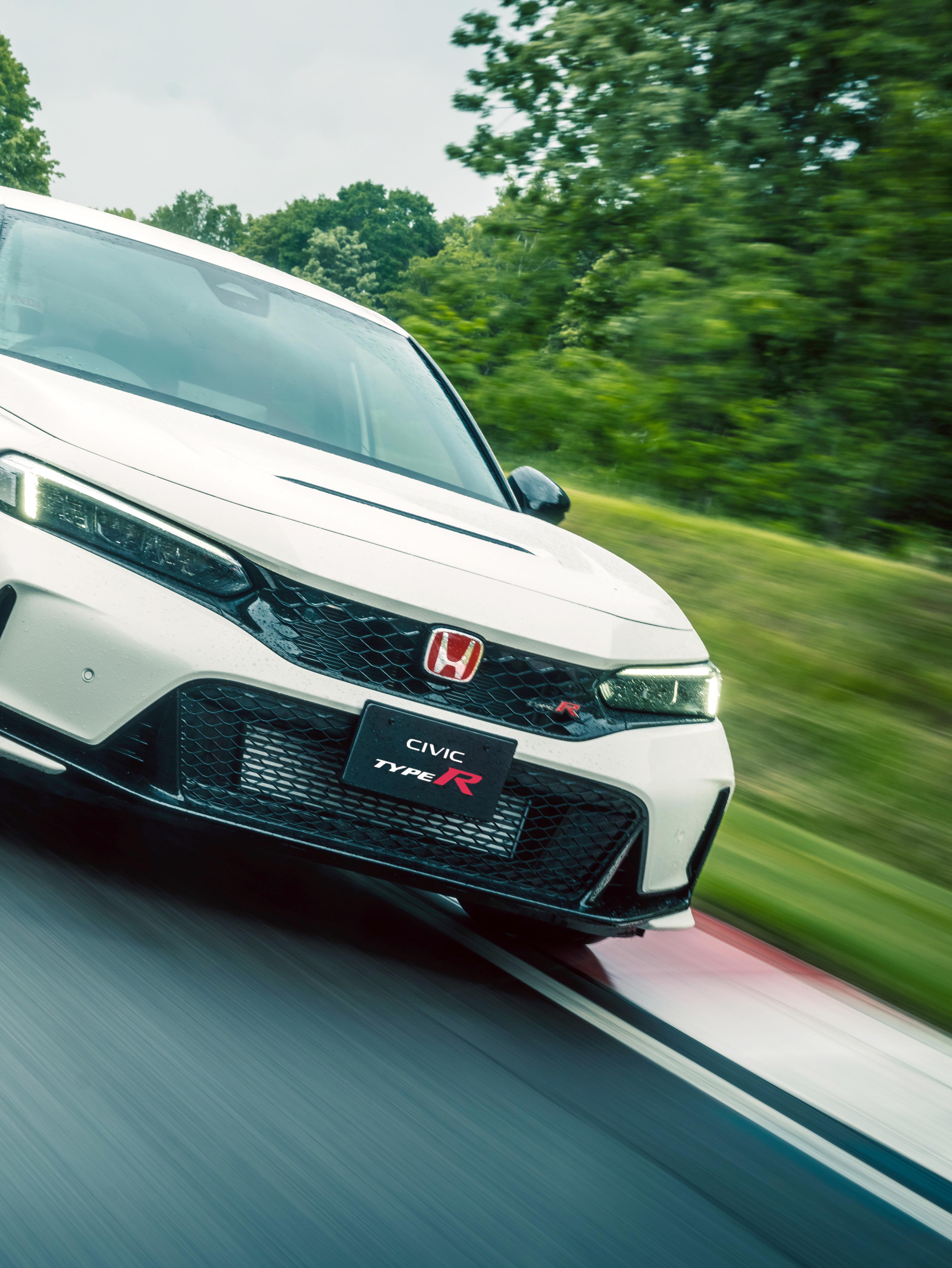
The weight balance is so good that you don’t have to provoke it into oversteer to get around a corner quickly. Steering response is pinpoint accurate and superbly weighted, and the 4 piston Brembo brakes wipe off speed prodigiously and with little fade.
But before we dive into the juicy bits, let’s check out the car’s fresh new styling. Firstly, it looks a whole lot better than the outgoing model. More mature. Gone is that edgy, boyracer styled, Transformer-inspired design, replaced by more subtle edges and a less angry face. Mind you, the Type R still has attitude, a lot of attitude. From its improved aero-body and triple exhaust pipes, to its brake-cooling front air intakes to its huge rear wing and rear diffuser, the Type R screams high performance.
Inside, the Type R hints strongly at what it was made for. With its bright red seats and

carpets, red stitching on black Alcantarawrapped steering wheel and center console and its aluminum accented dash, the R lifts the adrenalin level even before your fire up its engine. The compact aluminum gear knob, that fits perfectly in the palm of your hand, is vintage Honda and puts a smile on your face every time your flick through the gears. I’d argue that its mechanical precision and nice short throws are nearly as good as the 6-speed stick shift on the NSX, or at least as good as that on the now-out-of-production S2000.
Speaking of that engine, there is some good news about that too. The new Civic doesn’t just benefit from weight saving and beefier rigidity, it also employs the most powerful Type R powerplant ever courtesy of its uprated 2.0-liter turbocharged four-cylinder engine. This unit gets revised turbo geometry,
improved cooling and more exhaust back pressure to sharpen up its responsiveness. It’s married to that brilliant 6-speed manual gearbox and pumps out 315-hp and 310 lb-ft of torque, increases of 9 hp and 15 lb-ft over the old Type R.


Exercise your right boot generously and the tacho and digital rev bar climb quickly towards its 7000rpm redline, complete with blinking F1-style red gearshift lights. Power arrives in a constant, linear ascent, and almost feels naturally aspirated in the way it climbs. Keep the turbo spinning between 3000 and 7000 and you’ll have prodigious amounts of power ready for the taking.
The Type R continues to use Honda's automatic rev-matching tech, which is now 10% faster according to Honda. Of course, you can switch it off if you prefer to heel-and-toe

for real, but it works superbly when left on. Also, the rev-matching helps to make day-today driving smoother and is a helpful feature for those new to manuals.
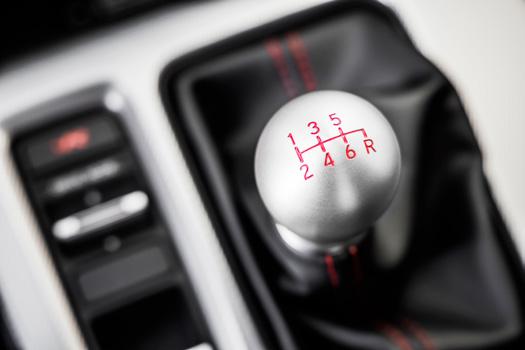
The Autopolis track was the ideal place to put this R through its paces. As I punched the brake pedal quickly and grabbed 3rd on entry to a 70mph right-hander, the R hunkered down with massive grip from the Michelin Pilot Sport 4S tires and then launched out of the exit with an almost overconfident “is that all you got?”
This car feels seriously quick, light, chuckable, and genre-beating. It just gets on with the business of driving as fast as the pilot wants, but making that driver feel like a production car series hero in the process.
It is very clearly in its element on a race track. But it does feel stiff. We took it for a one-hour drive on public roads too and while the car can cope with bumps and tram-lines and potholes, the Type R is definitely on the firm side.
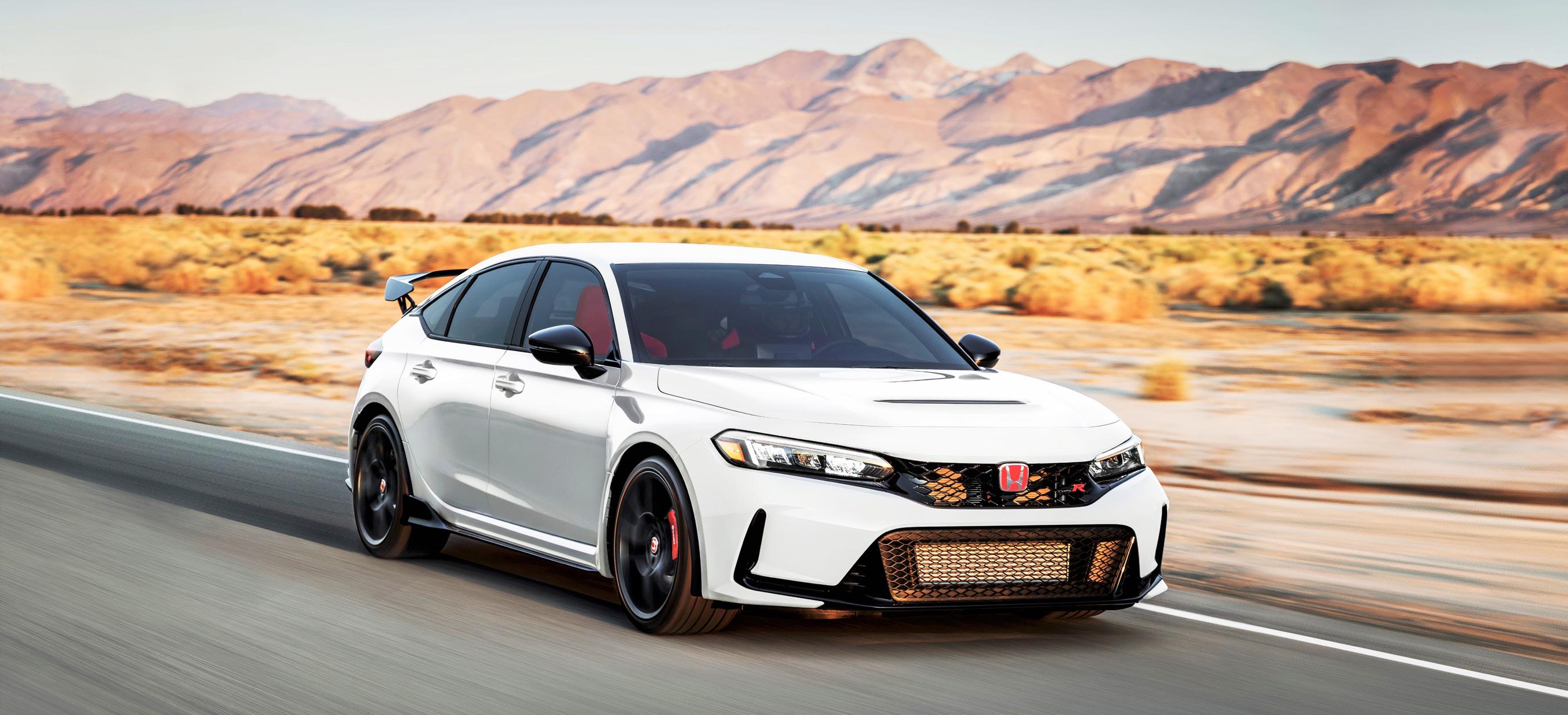
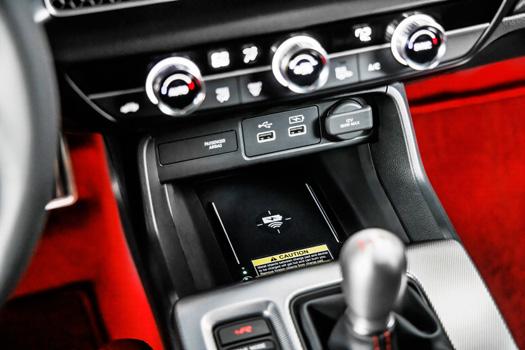

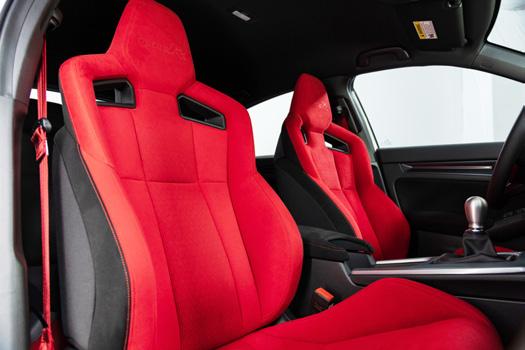
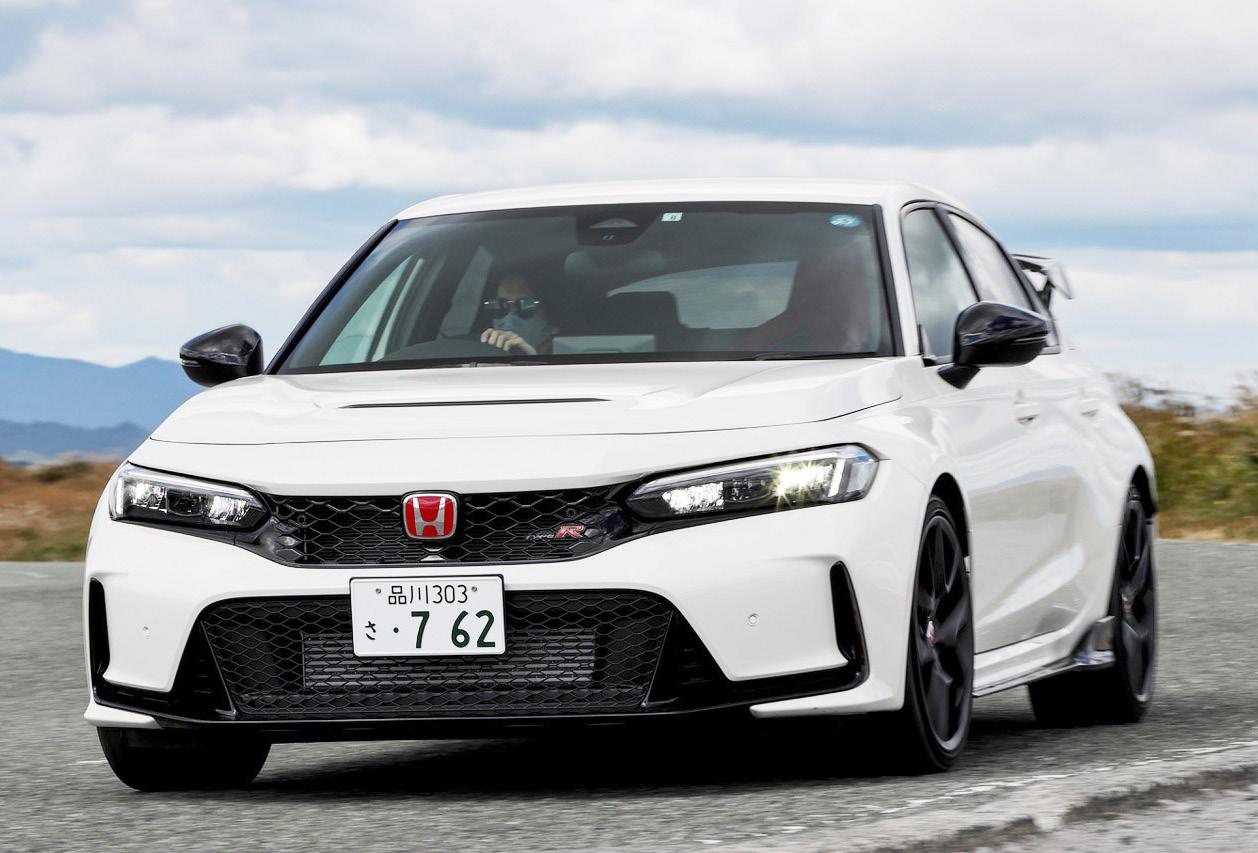
When you drive at full throttle on a circuit like this, it occurs to you that the "Fastest front-wheel-drive car in the world" (as Honda says it will be!) was made possible thanks to the development team's efforts in fine-tuning their Type R entry in Japan’s Super Endurance Series. The difference in acceleration and handling between the previous generation and the new model was eye-opening and grin-generating.
The front suspension has been modified to provide improved traction and turn-in at the limits, while the rears squat nicely thanks to their reinforced rear rigidity, providing better around grip and quicker exits from corners.
To elevate the thrill level on track, Honda has fitted a data logger, aptly named “LogR.” This device will time your laps, but more importantly, determine how good your driving technique is and then give you a score. During my test drive session, former Japan Touring Car and F3000 champion racer Akihiko Nakaya scored 96 points, the best score of the day. My score was a little lower as I was not as familiar with the track as he was, or at least that’s my excuse.
The only downside is that the Type R still doesn't sound as sporty as it should, even with the new model's improved exhaust flow and active valve design. If only the designers, or should we say engineers, had added as much aggression in the sound department as they have in the aerodynamics and interior styling departments. It doesn't bark, pop or crackle like a Toyota GR Corolla, Ford Focus RS or Hyundai Elantra N, and the synthetic exhaust note pumped inside through the speakers needs a tweak.
Expectations are high for the new model, as the previous generation became a hit, selling 47,200 units worldwide. I am half saddened by the thought that this will be the last gasoline version of the Type R that I will be able to test drive on the race track. I am half enthused though to see what the Type R electric version might look like.
Rivals from Toyota or Hyundai, for example, will be the Type R's strongest competitors, especially since they significantly undercut the Honda's $43,990 base price. But then again, if Honda can recapture the R’s ‘fastest frontdrive car’ title at the Nurburgring, then the extra status could be a deal-maker.


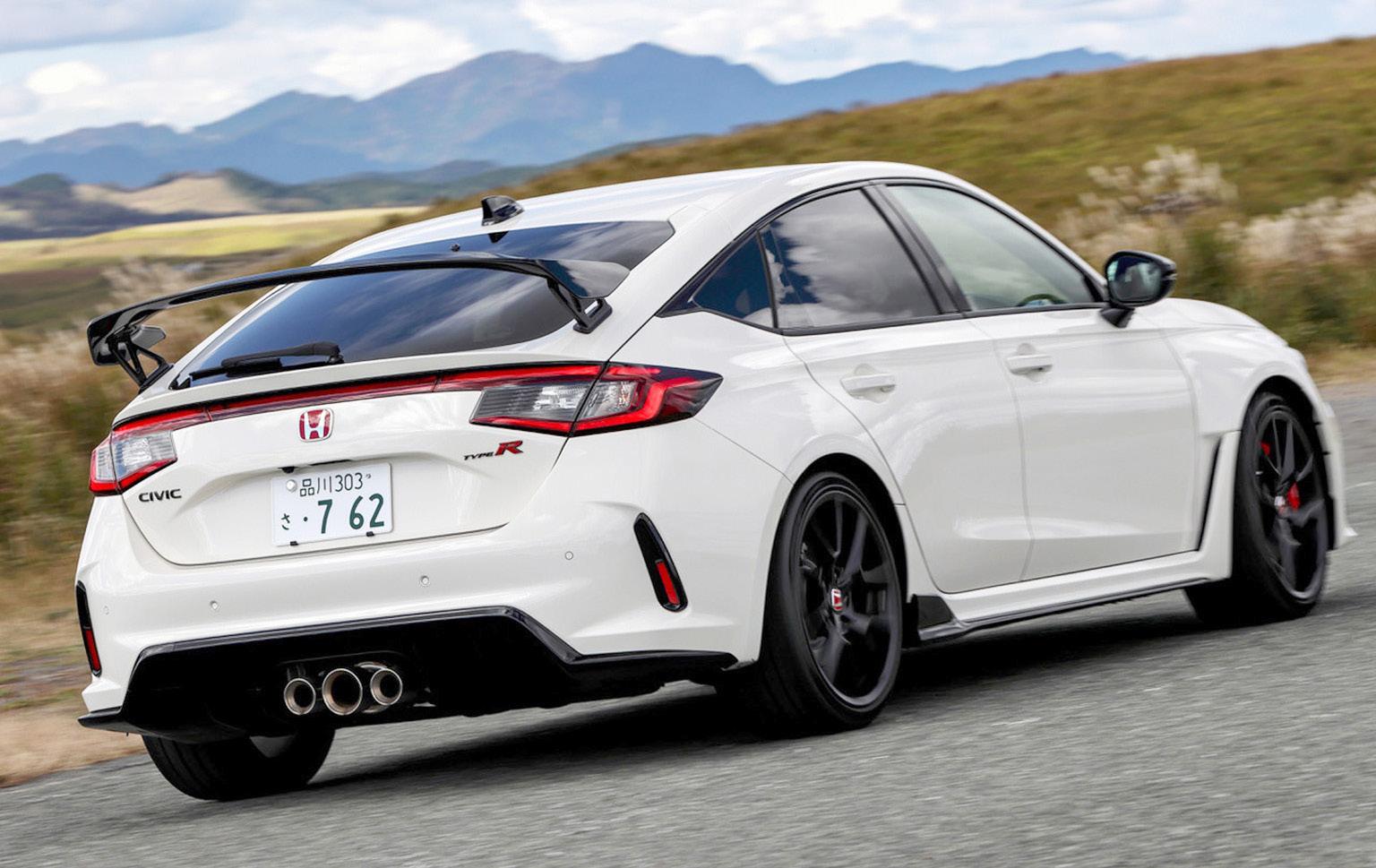


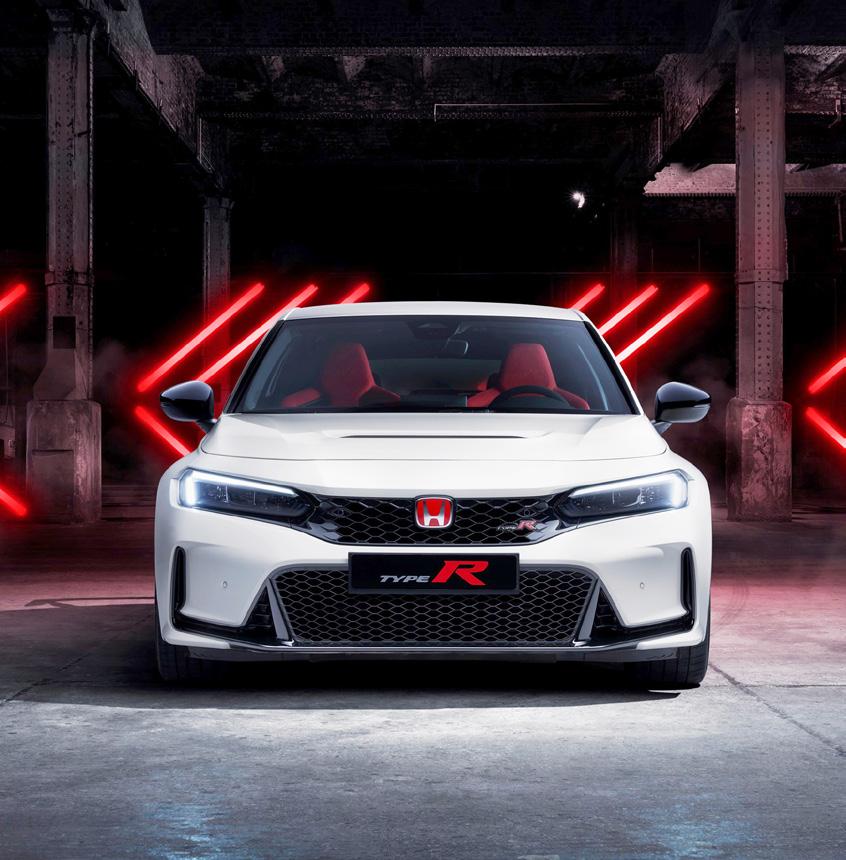


Welcome to this year’s C! Awards for motorcycles. The quality of bikes is getting better and better every year with stiff competition from new brands springing up in the local market producing ever more affordable products in every category. Choosing between such great bikes can be daunting as most of these are so good it feels like we’re just splitting hairs. This year, we’ve decided to revise and update the categories to best suit the current local market. Yes,
the choices can be very subjective but rest assured that these winners have been meticulously chosen without bias or prejudice. These decisions were based upon years of riding experience and dedication to the art that is motorcycling. Any of the nominees could have easily won as it ultimately boils down to personal preference. Sadly, we can only select one bike per category so please excuse us if your favorite motorcycle was not chosen. Without further ado, here are the winners of 2022’s C! Awards for Motorcycles. Enjoy!
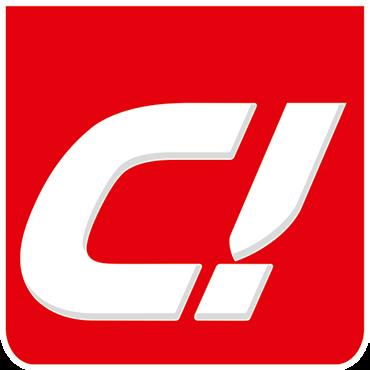





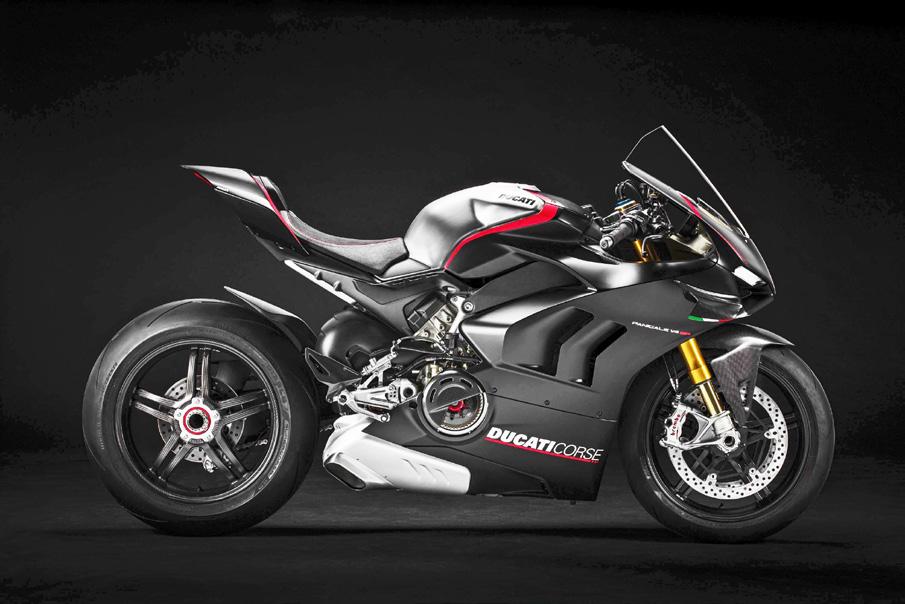





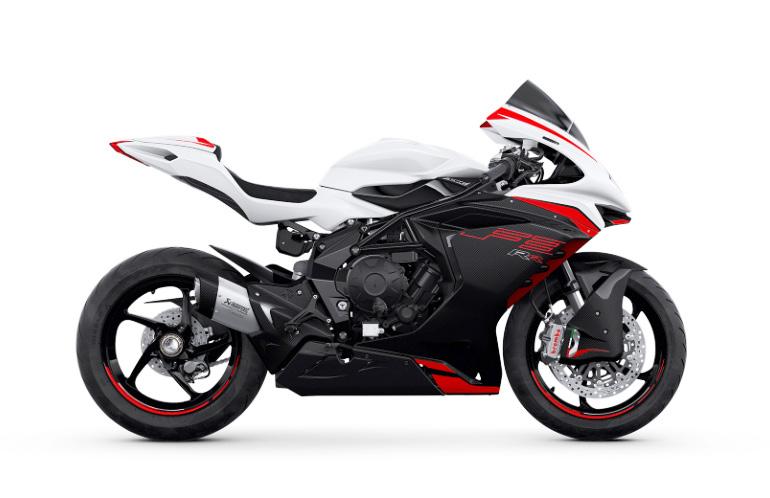



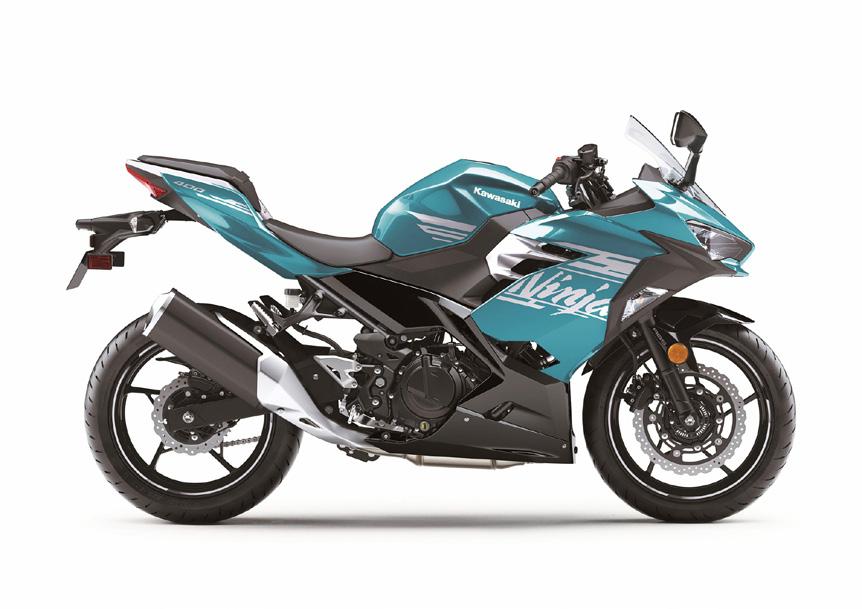



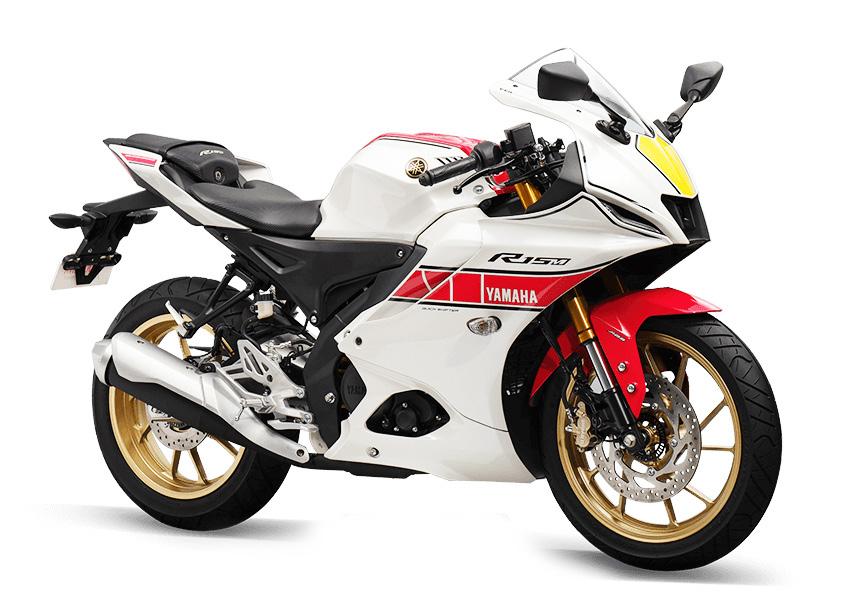
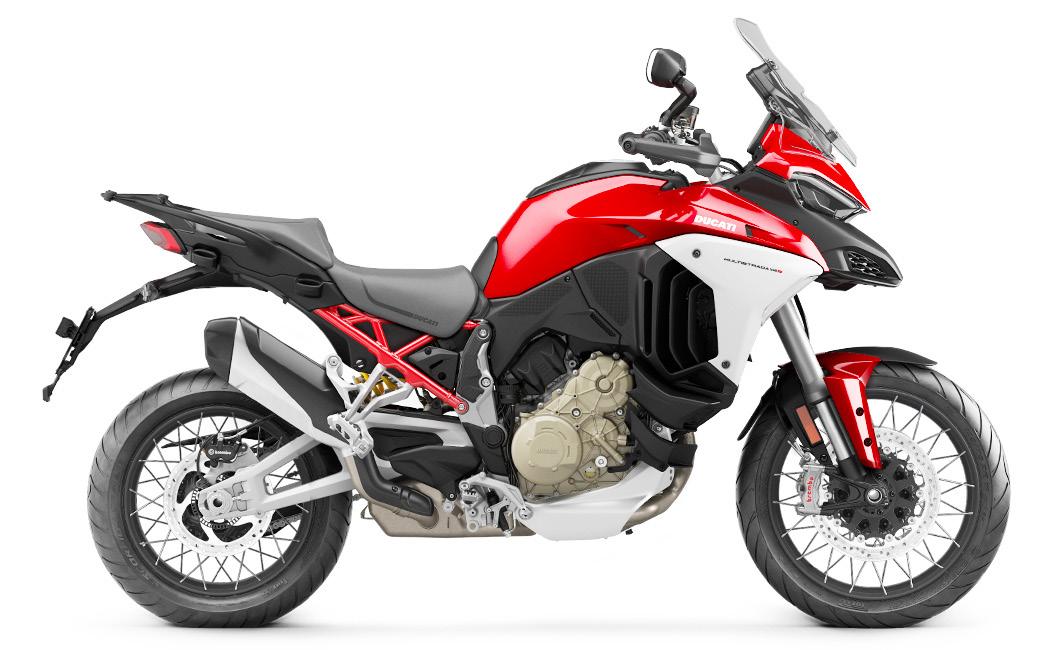

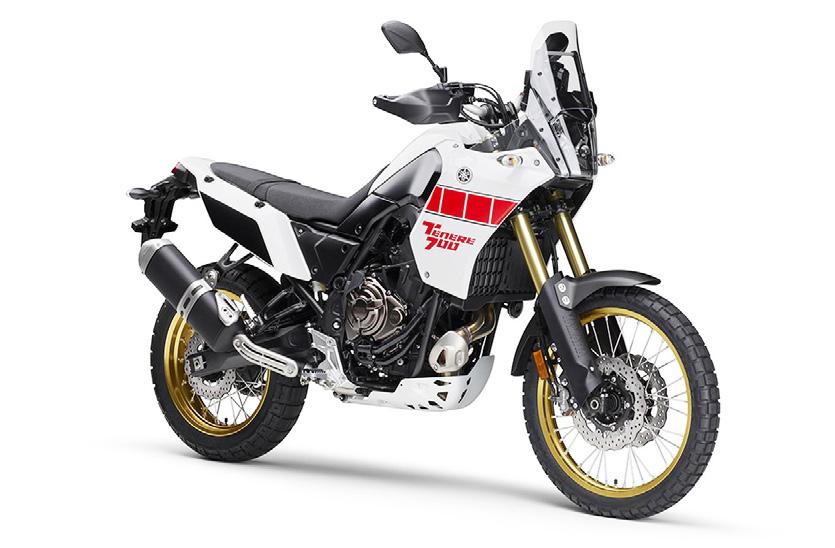
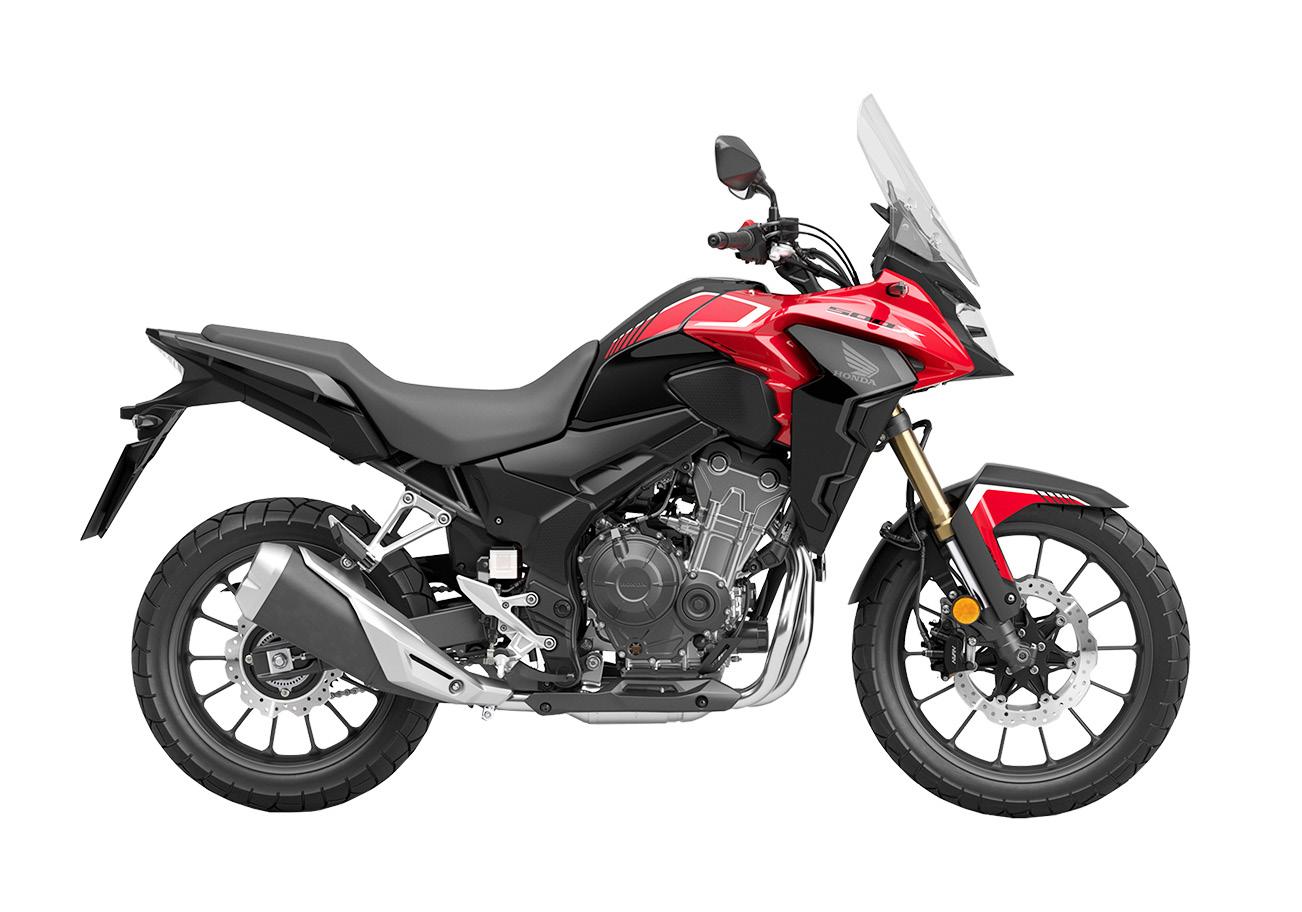


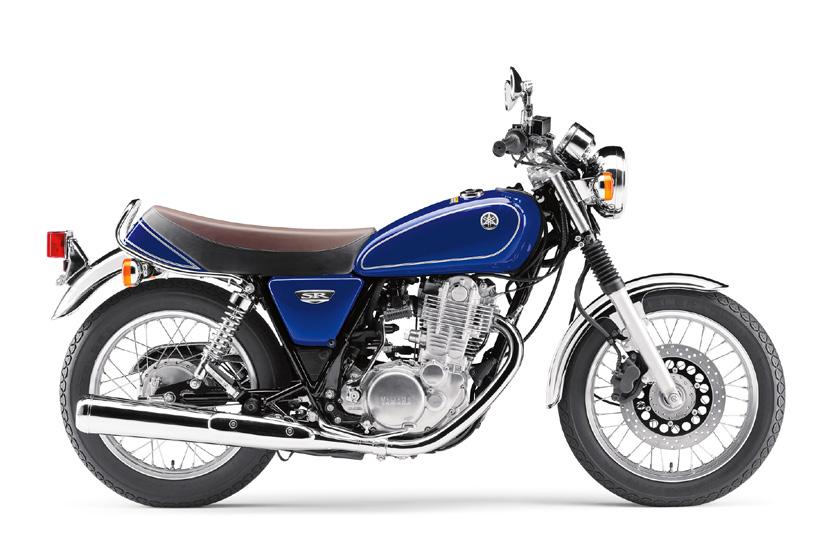
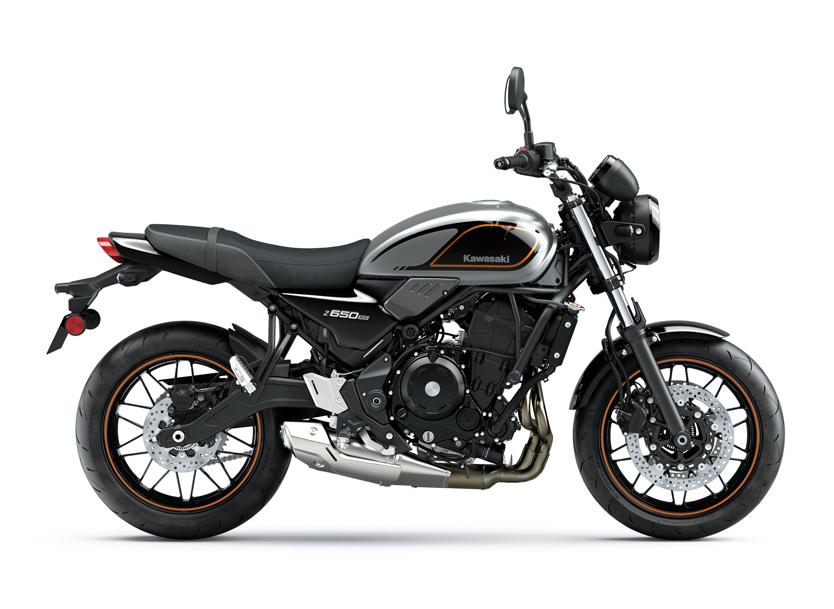

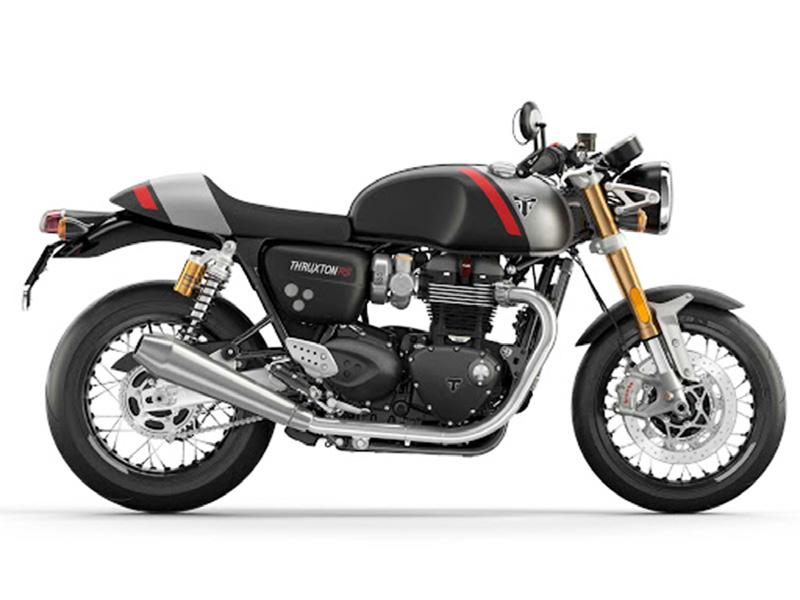
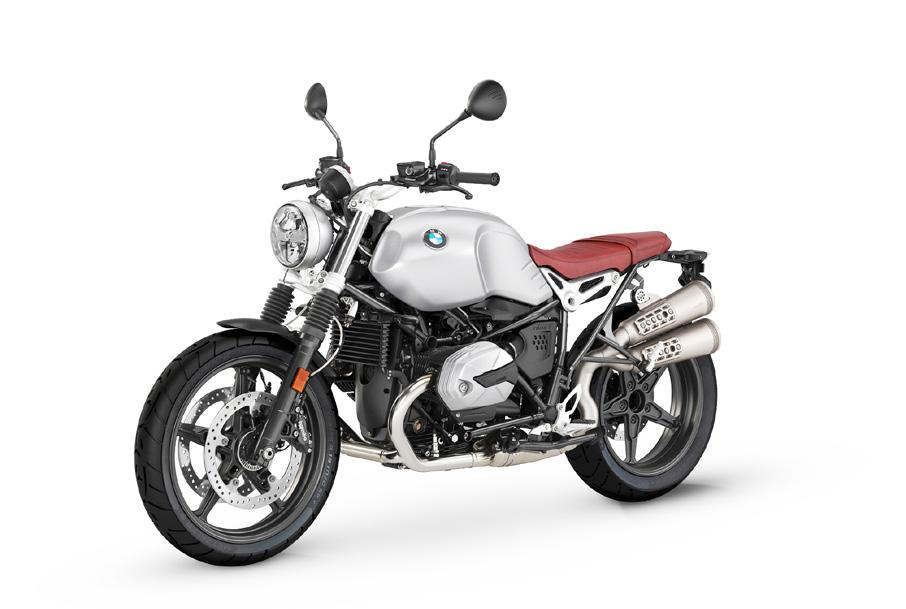
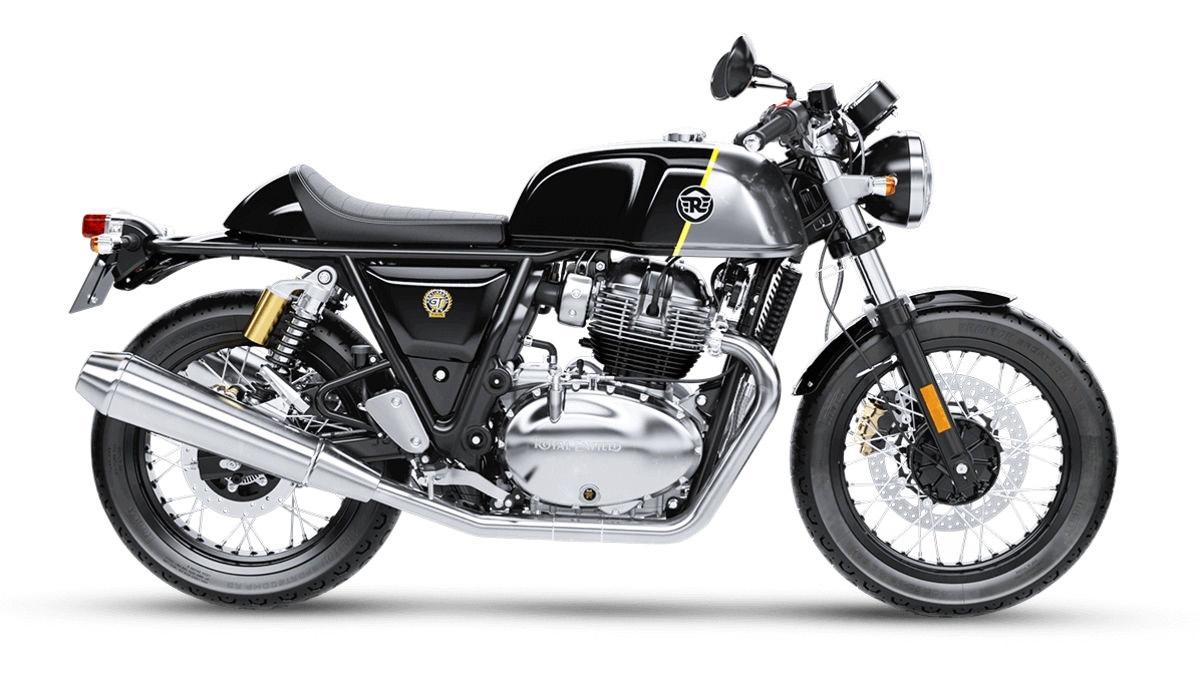



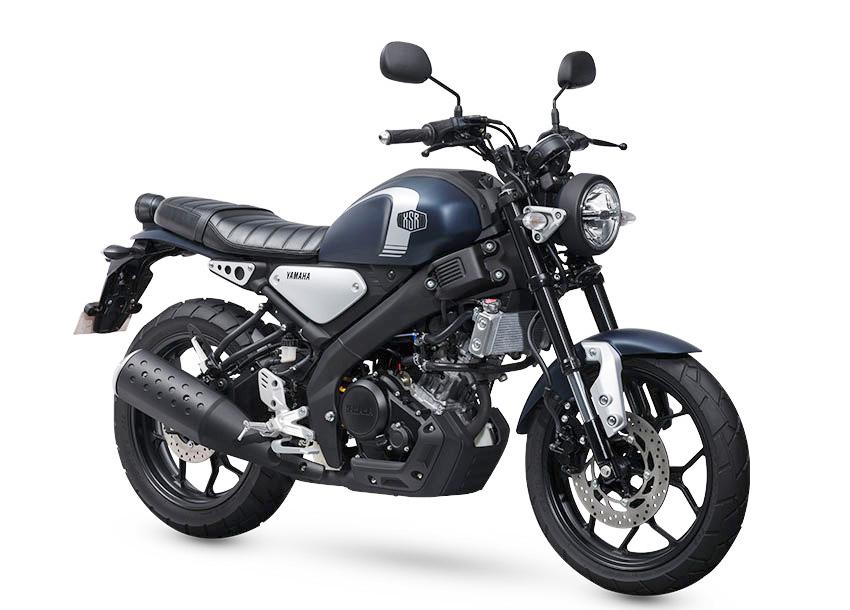


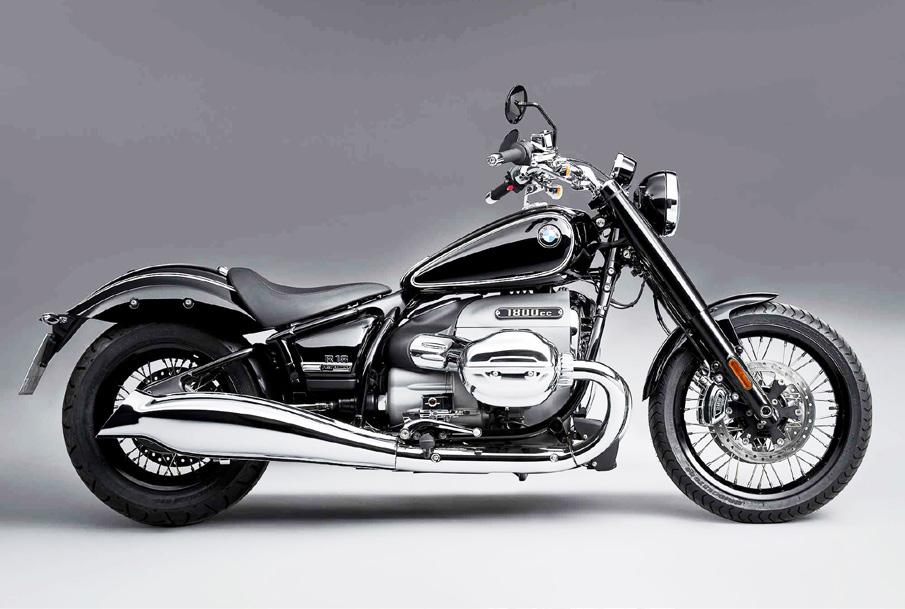
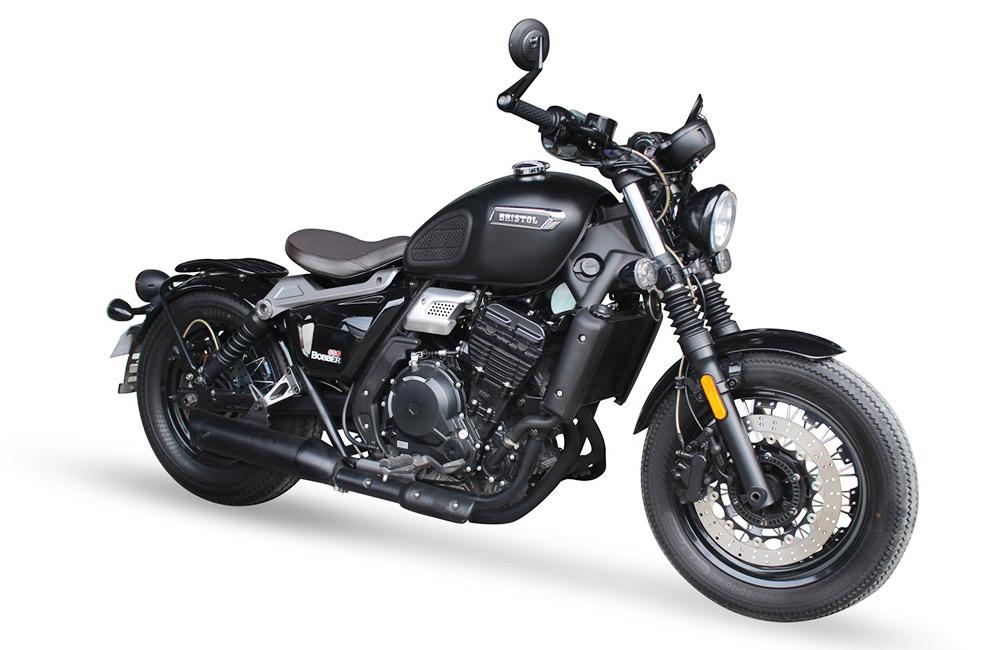



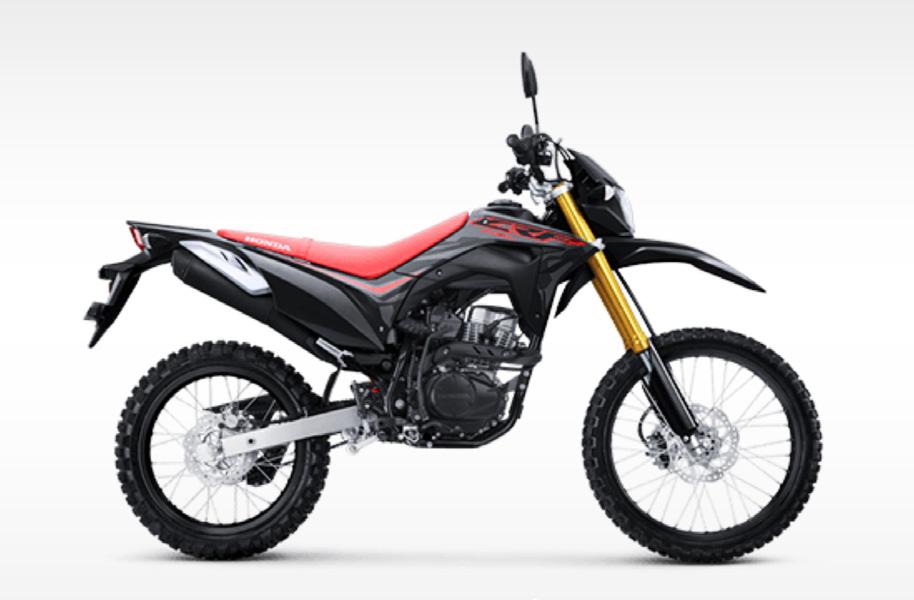
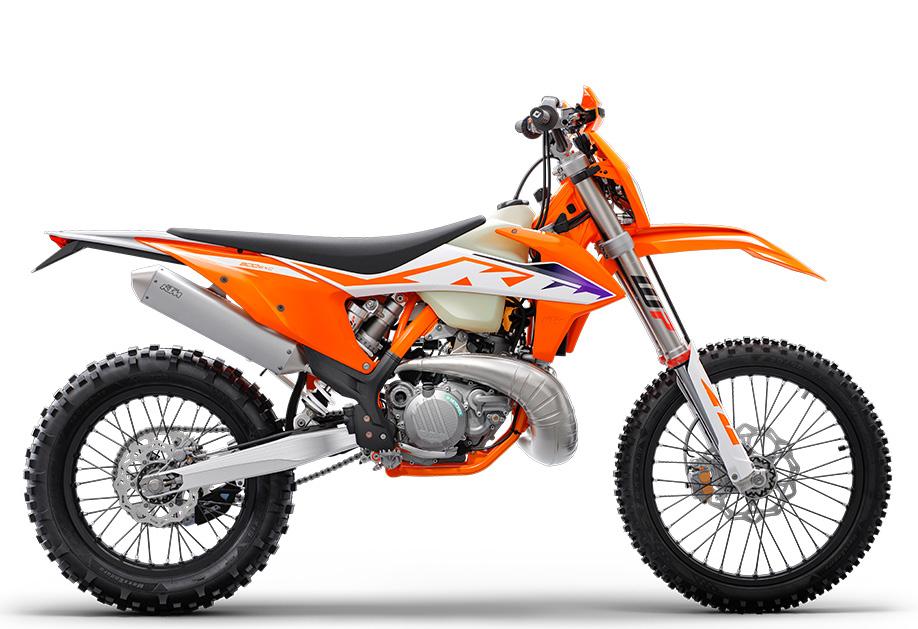


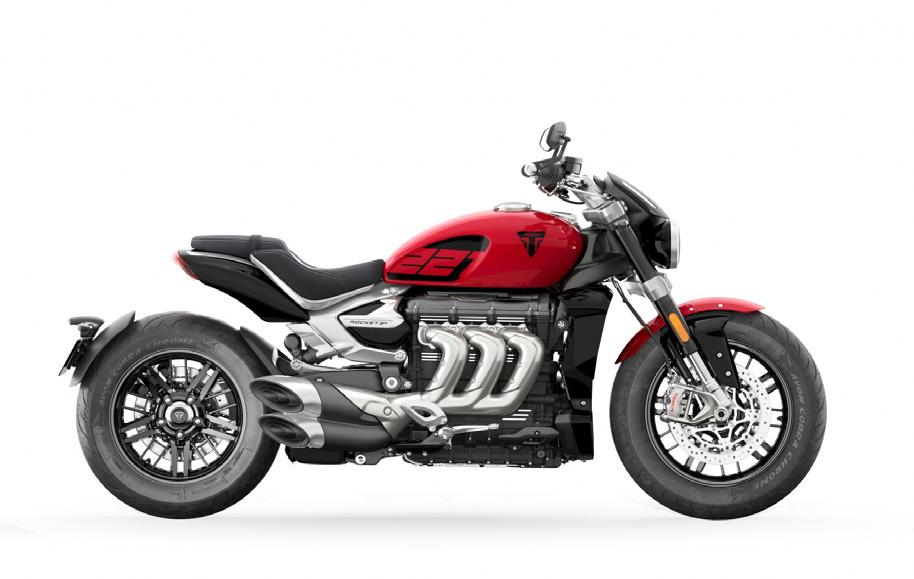



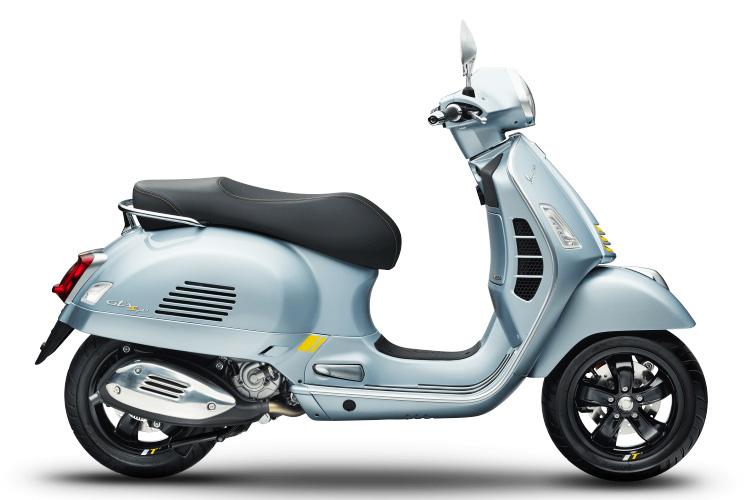





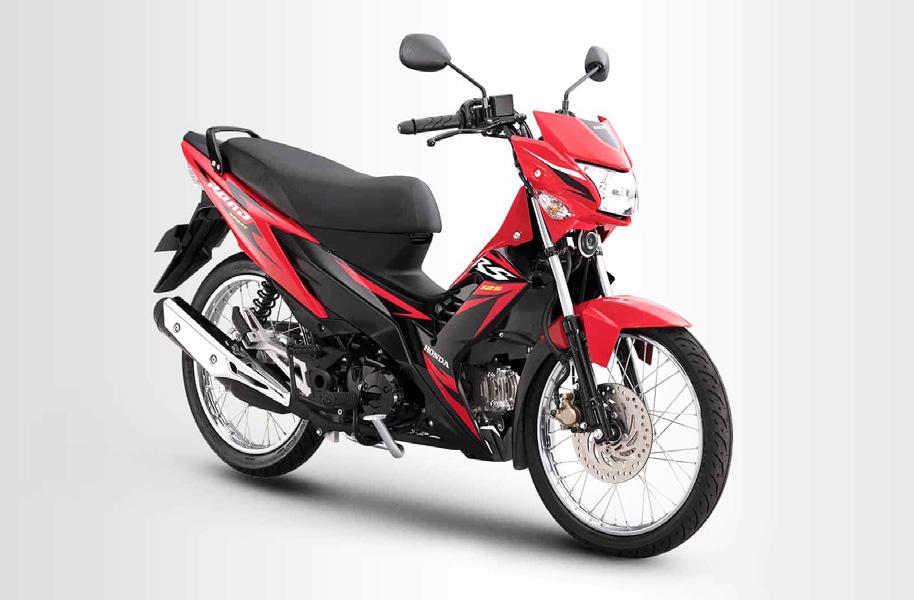

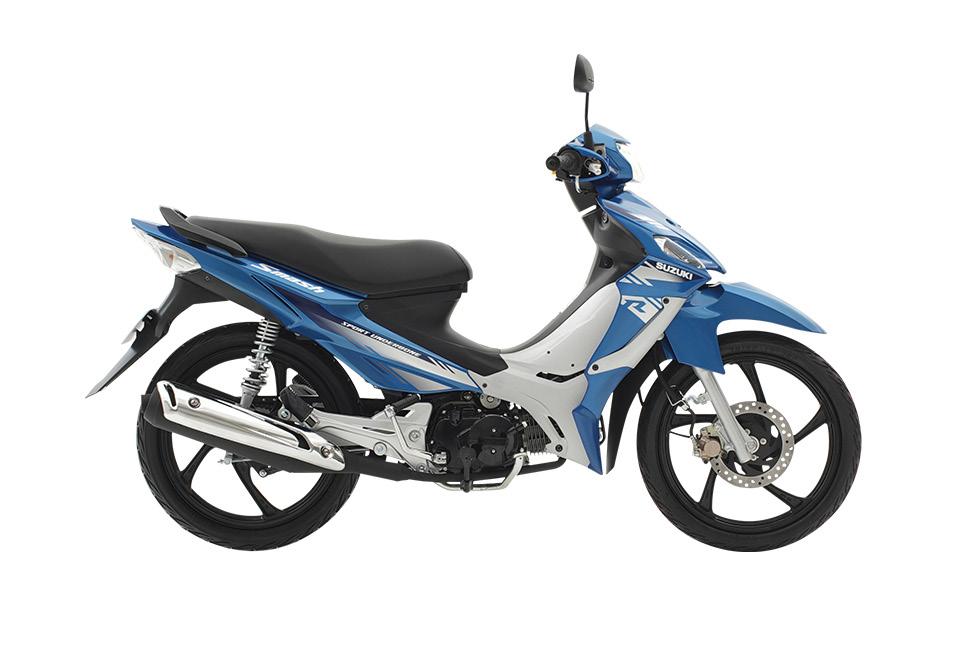

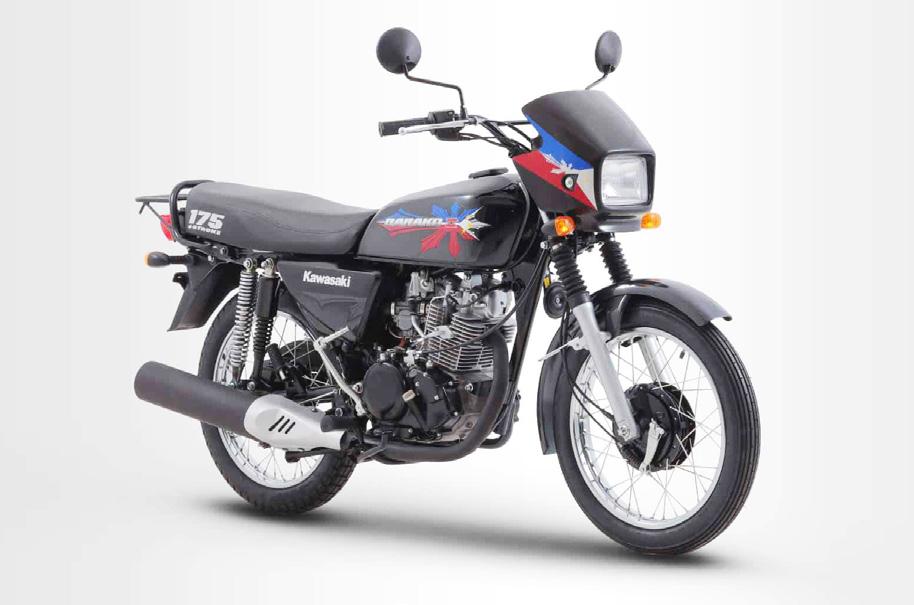

as Brand Head of Astara Philippines, directly handling Peugeot. Under Ms. Parco’s leadership, the Peugeot became the fastest growing auto brand in the local industry with growth exceeding 260% in just a matter of months, according to the Chamber of Philippine Automotive Manufacturers Inc. (CAMPI).


For the 18th Annual C! Awards, we have bestowed the honor of receiving the Pocholo Ramirez Lifetime Achievement Award to a stellar figure in the local automotive industry- an esteemed Lady with remarkable grace and a disarming smile: Ms. Maricar C. Parco. She is currently the Brand Head of Astara Philippines (also known as BA Motors Philippines) with 30 years in the industry.
Armed with a degree in Mass Communications from the University of the Philippines, Ms. Parco got her first job in the industry with Honda Philippines working directly under Mr. Arnel Doria, then the company’s VP. With Honda, she learned the Japanese exacting way of organization and discipline.

She would eventually move to Ford Philippines as their Public Affairs
Manager, and in a relatively short time was promoted to the position of AVP for Marketing and Public Affairs. A few years later, she joined the Prestige Cars BMW dealership as the VP for Marketing, eventually being promoted as the Marketing Director for the BMW country distributor Asian Carmakers Corporation in 2009. In just two years, she was appointed as the company’s president, handling the position for nine years, until she moved on to handle the BMW dealerships for RSA Motors.
A year later she started to work as consultant for Peugeot Philippines under the Alvarez Group, at the height of the pandemic in 2020.

She recounts the difficulty of the situation, setting up a joint venture with a large company based in Madrid, Spain. A solid business partnership was forged and in January of 2022, she was installed
Looking back, ‘Car (her very apt nickname as friends call her) lamented tearfully, a lot of lost family time she could have spent rearing her two young sons during her career’s early years due to the countless overseas travels and long hours it demanded. But it was her solid resolve and grit to just keep at it and balance work and family life the best she could to secure a good and stable future for them that made it work, and work very well it did. It’s absolutely fascinating how this power lady can be so candid, genuine and very human about sharing her amazing journey and incredible achievements in what may be considered a man’s world, inspiring many, and empowering women who look up to her, and more importantly, the positive impact her illustrious career has created in the Philippine automotive industry. At the helm of Peugeot, Maricar Parco definitely has the strong qualities of a lioness, with the exception of being able work it with a smile.
C! Pocholo Ramirez Lifetime AchievementToyota Motor Philippines Corporation received the C! Magazine Corporate Social Responsibility Award for Green Initiatives for their tireless efforts to be the auto industry leader in making environment-friendly, low-emissions vehicles available, affordable and acceptable.
Among the automobile brands available in the Philippines, Toyota has the oldest and broadest range of hybrid vehicles. Starting with the Prius in 2009, TMP’s current lineup of hybrids has grown to include five vehicles: the Corolla Altis, Corolla Cross, Camry, Prius, and RAV4. Of this writing, it is still not certain if the newly launched TNGA-C Innova Hybrid will be available in the Philippines, but if it is, it will only bolster Toyota’s efforts to bring their hybrid models where they will be of most benefit.
Toyota Motor Philippines is more committed to achieving its zero-carbon goal than any other manufacturer; this was confirmed at the recently concluded Philippine International Motor Show (PIMS), where TMP Senior Vice President and Overall Head of Marketing Jose Maria Atienza said, “Toyota answers the call to make vehicles that are kinder to the environment and reduce our dependence on fossil fuels. But
we understand that there is no single solution toward carbon neutrality. We choose the multi-path approach, exploring various electric vehicle technologies like HEVs, PHEVs, BEVs, FCEVs, and Synthetic and Alternative fuels like Hydrogen to realize this goal.”
This multi-path philosophy almost guarantees that Toyota will have its green vehicles in every country — in countries with charging infrastructure is commonplace, BEVs are practical; but in developing countries without a charging network, HEVs are the

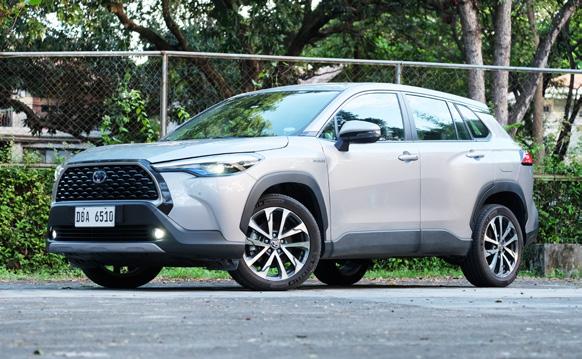

most practical green solution to the growing issue of environmentally conscious transportation.
C! Magazine recognizes Toyota Motor Philippines’ contributions to sustainable mobility and fully supports their endeavors by awarding them for their efforts and promoting their vehicles and featuring their hybrid technologies regularly.


Congratulations, Toyota Motor Philippines, and may this be the first of many Green Initiative awards you receive from us and other awarding bodies.
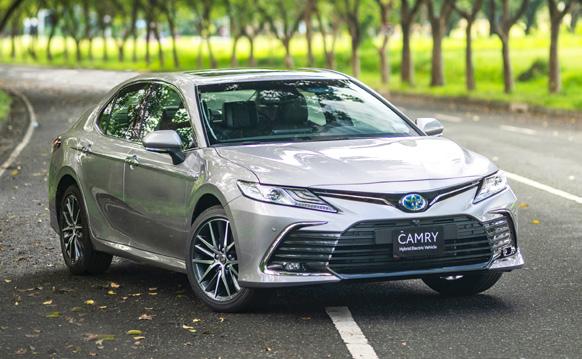
“Among the automobile brands available in the Philippines, Toyota has the oldest and broadest range of hybrid vehicles.”
THERE IS MORE TO LIFE THAN JUST CARS, SO WE'VE GOT YOU COVERED ON THE OTHER THINGS THAT MIGHT INTEREST YOU.

Words and photos: Wowie Go

rowing up during the mid-90s, everyone I knew was very particular with the kind of shoes they wore. This was during the rise of the shoe culture we know today. Copand-drops didn’t exist yet and the internet wasn’t around to let you know which styles will come with which colors. Despite that, I learned from a very young age that you can tell a lot about someone based on the kind of kicks that they wore. And if you lived through the turn of the millennium, at some point in your life, I’m pretty sure you yourself have rocked a pair of high-tops before.
I’ve always been a big fan of high-cut shoes. They’re stylish, they’re versatile, not to mention that they give you the best kind of lateral support, whether you’re hiking or just running around town. One might argue that the added height makes them somewhat cumbersome, but I think that it’s this extra heft that actually gives you more confidence when you wear one. I’ve owned many pairs in my life, but the one thing I’ve never owned until recently was a good pair of army boots. Enter, Palladium.
I first heard of the brand back in 2013 when SM Aura first opened. One of the first stores in the mall was a shop that sold Palladium boots on the top floor. I passed by the store a bunch of times and found their shoes to be quite interesting, and back then I had barely an inkling how rich of a history the company actually had. But after a recent trip I took, I learned that there was more to the company than just being



NOW ON ITS 75TH YEAR, THERE'S NO DENYING THAT PALLADIUM IS JUST AS TOUGH AS ITS BOOTS.
a mere curiosity. The renowned French shoe company had been making shoes since the 1940s thanks to a large uptick in enlistment that happened after the second world war.


Following the war, there was a large influx of men enlisting to be part of the French Foreign Legion. Veteran soldiers, most especially a large number of French-speaking soldiers from recently defeated Germany, were signing up in droves to be legionnaires. This was timely because just as the rest of the world was building itself back up, the First Indochina war broke out. Now, the number of troops wasn't a problem since there was indeed a surplus in enlistment for the French army. But with the rise in the number of soldiers came the lack of supply for equipment. And as fate would have it, right around the same time, a tire manufacturer from Lyon was also facing a shortage of its own.
Following the end of World War 2, Palladium, a pioneer tire manufacturer at the time who first started supplying aviators in the 1920s, saw a sharp decrease in the demand for their product. Though their tires were widely popular across the continent for their durability thanks to their technique of layering several bands of canvas under the tread, the ongoing reconstruction of most of Europe meant that the demand for tires was also on an all time low. With an abundance of rubber
“Like that of the Volkswagen Beetle or the Land Rover, the lasting design is simple but nearly bullet-proof.”
and canvas, and the knowledge of creating durable products out of it, Palladium was able to secure a contract from the French Foreign Legion. With inspiration from American jungle boots, Palladium designed and pivoted their manufacturing to produce the first French-made canvas and rubber military boots in 1947.
Because the shoes were made for a group composed of people from different parts of the world, the boots were made in such a way that it was easily cut to different foot sizes while maintaining the comfort required to last on your feet for the entire day. After the wars, Palladiums found a new purpose with adventurers and explorers who had to tackle the same kind of terrain as the French soldiers before them. One of those was Haroun Tazieff, a famous geologist and cinematographer who favored using Palladiums to actually climb down and film active volcanoes because they were light on his feet.
But throughout the years, Palladiums have also come in designs that are geared towards exploring the urban landscape too. Unlike their original shoes that were made to blend into their surroundings, designs now come in hundreds of different colors–and now even low-tops too. And that’s because Palladiums are more than just about the great outdoors now. Since the 1960s, Palladiums have also come to be a symbol of freedom and free-thinking. Eccentric personalities from beatniks all the way to grunge rockers have worn the brand to express their individuality. In 1968, the shoes were a central figure in the largest general strike ever attempted in France. Protesters, mostly clad in Palladium boots, took to the streets and their university campuses to protest imperialism and to disestablish the old system. Many of the participants claim that thanks to the boots, they were agile enough to be able to outrun the police. This one event is considered to be a major turning point in the artistic movement in the country and many attribute it to the boots which they then called the “uniform of the people.”
I got a pair of those legendary Palladiums during the official launch of their very first standalone store in SM Clark and found out first-hand that the dashingly-rugged good looks of their boots really were more than just aesthetics. In keeping with their 75th anniversary producing boots, I had on a pair of the Palladium Pampas. Not only were they comfy, the boots themselves indeed were toughas-nails. Since having laced them up that day, I’ve since worn the shoes for hiking, for lugging around heavy items on my work truck, and just for general driving around town.
The pair I’ve been donning were of the waxed canvas variety giving them even more lasting
protection against spills and scratches. Thanks to this protective layer, the upper was extremely easy to clean. I had someone fall back onto me during my hike and planted a good, solid footprint on my left shoe’s toe, but it was nothing some moist wipes couldn’t fix when I returned to my car. Absolutely immaculate, dirt and mud notwithstanding.
Their original Pampa design, made specifically to withstand desert-like conditions in Africa, and the Pallabrouse which literally translates to “for the bush,” has remained largely unchanged. Like that of the Volkswagen Beetle or the Land Rover, the lasting design is simple but nearly bullet-proof. And like the two iconic vehicles, the way Palladiums are engineered is something that’s often replicated but is nearly impossible to duplicate. Which is why it is still the shoe of choice of modern day explorers and hikers all over the world.
If there’s anything the last three quarters of a century has taught us, it’s that shoes like these hardly ever go out of style. From soldiers, to explorers, protesters, to punk rockers, a pair of Pallabrouses or Pampas are a reliable companion to the journey.

If there’s anything the last three quarters of a century has taught us, it’s that shoes like these hardly ever go out of style
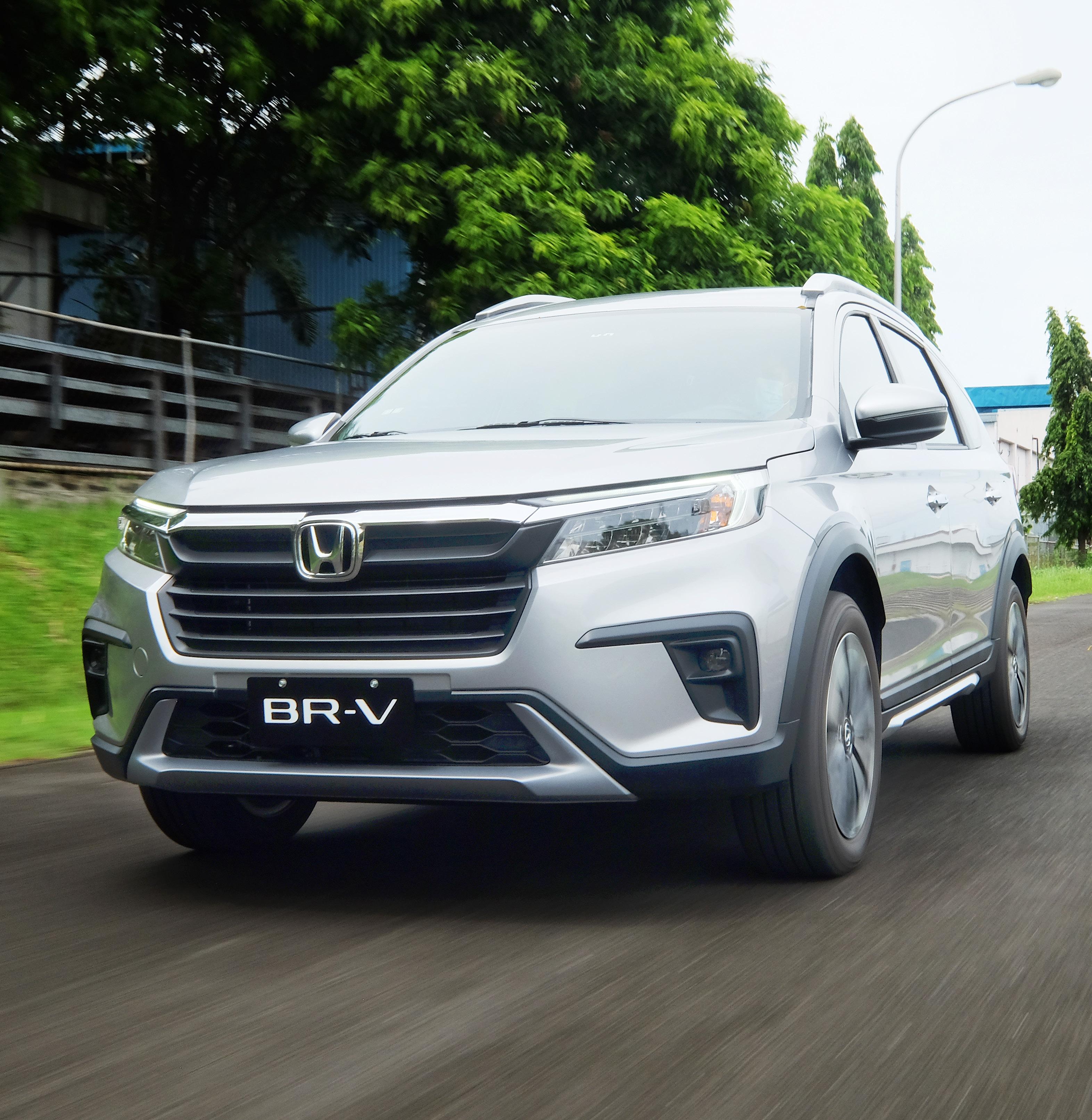

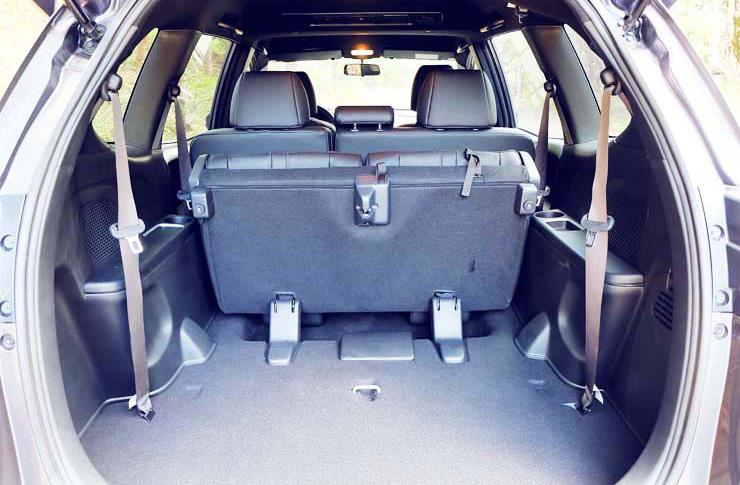 Words
Words
When the Honda BR-V was launched in the Philippines back in late 2016, I remember the confusion it caused prospective buyers at the time. Honda marketed it strongly as a “7-Seater SUV,” but besides its SUVlike appearance and slightly higher ground clearance, it clearly shared many attributes from the Honda Mobilio that sold alongside it, which was certainly no SUV. Adding to the confusion was the fact that everyone knew 7-seater SUVs to be your standard fare of pickup-based vehicles, such as the Toyota Fortuner or Mitsubishi Montero Sport. I also remember that since it was an SUV/crossover that sold under the P1-million mark, its only real competition at the time was the Ford EcoSport — a true subcompact SUV that was a segment-breaker in its own right. I would overhear discussions among motoring enthusiasts about what it entails to be called a true crossover/SUV. The BR-V was strictly a front-wheel drive car, but so were many larger crossovers in the market. Is it ride height? The Honda BR-V at the time had a ground clearance of 201mm vs the Ford EcoSport’s 200mm. Some crossover SUVs were way below that number. Was it the rugged, macho stance with flared wheel arches? The BR-V had those too. Heck, the BR-V had front and rear plastic skid guards, which is something you’d find on true off-roading cars. The 1st generation Honda BR-V did indeed share a platform with its Mobilio sibling, which itself is based on a stretched platform taken from the Honda Brio. BR-V stands for “Bold Roundabout Vehicle,” meant to tackle rising customer demands of an affordable crossover with ample ride height, and can seat seven passengers. Its 1.5-liter SOHC 4-cylinder engine produced 118 hp and 107 lb-ft of torque mated to a CVT transmission for improved fuel savings. In 2018, Honda began assembling the BR-V in their Santa Rosa, Laguna plant, and in 2019, the BR-V received a slight facelift which introduced new, even more muscular bumpers, LED daytime running lights fitted inside the headlight housing,
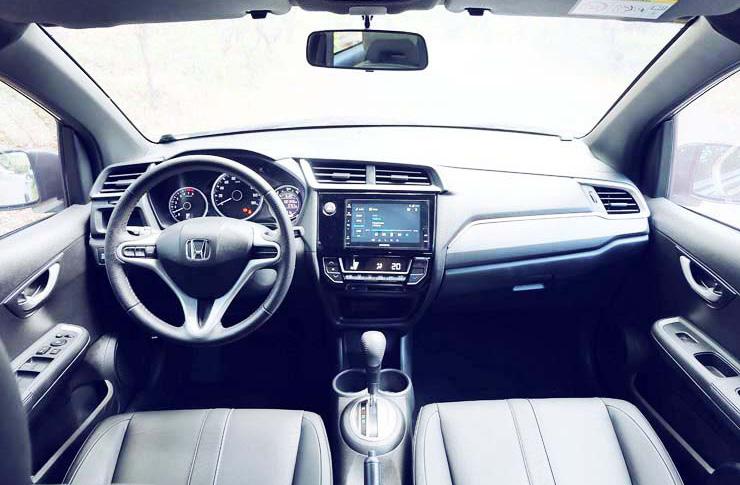
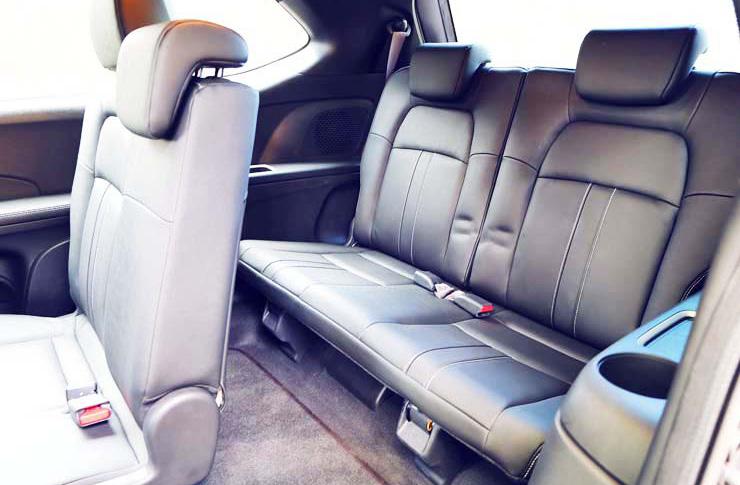
 The very first BR-V launched with a Modulo-equipped variant as seen here, with added wraparound skirts and other accessories, such as extra LEDs on the bumper.
The very first BR-V launched with a Modulo-equipped variant as seen here, with added wraparound skirts and other accessories, such as extra LEDs on the bumper.


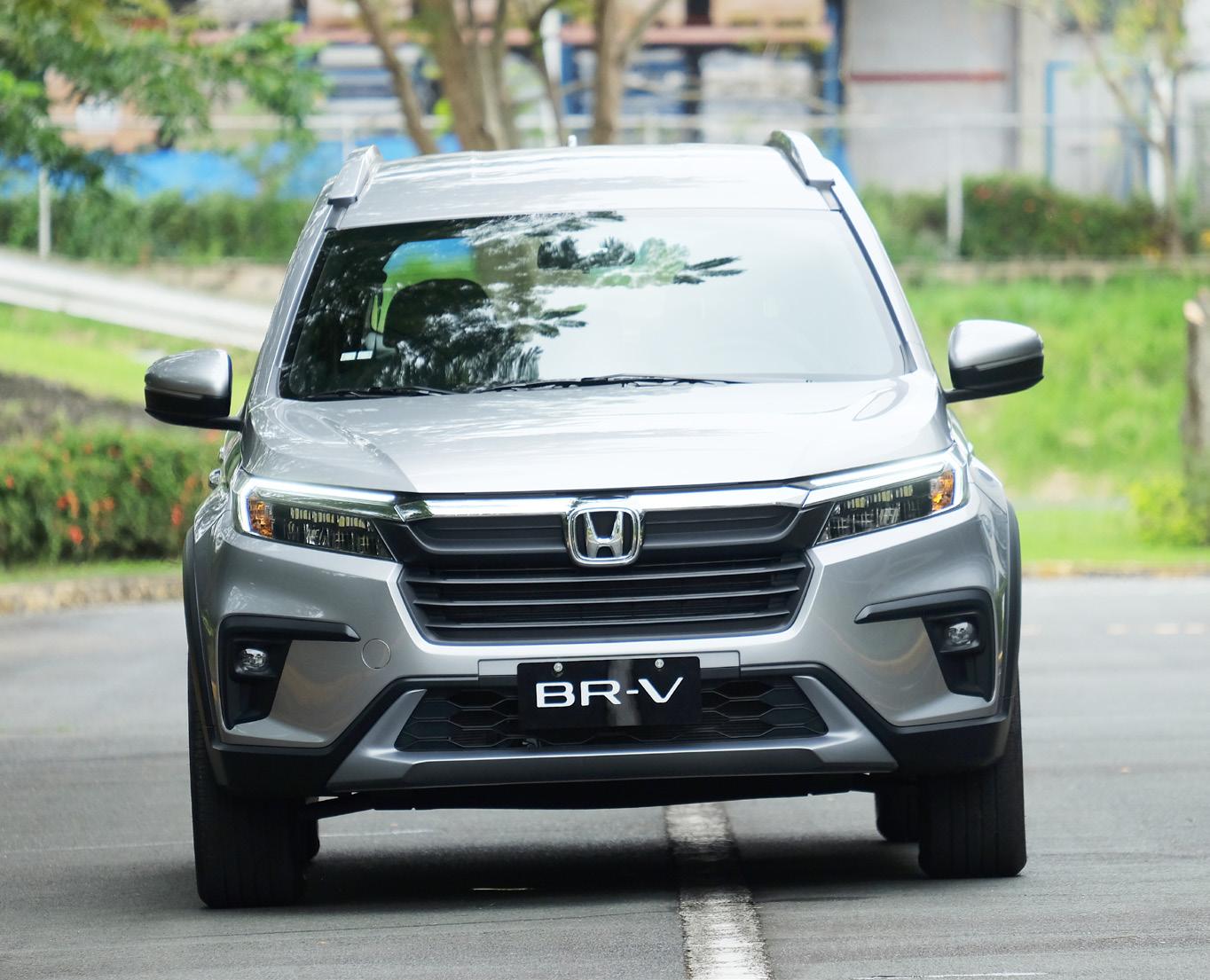

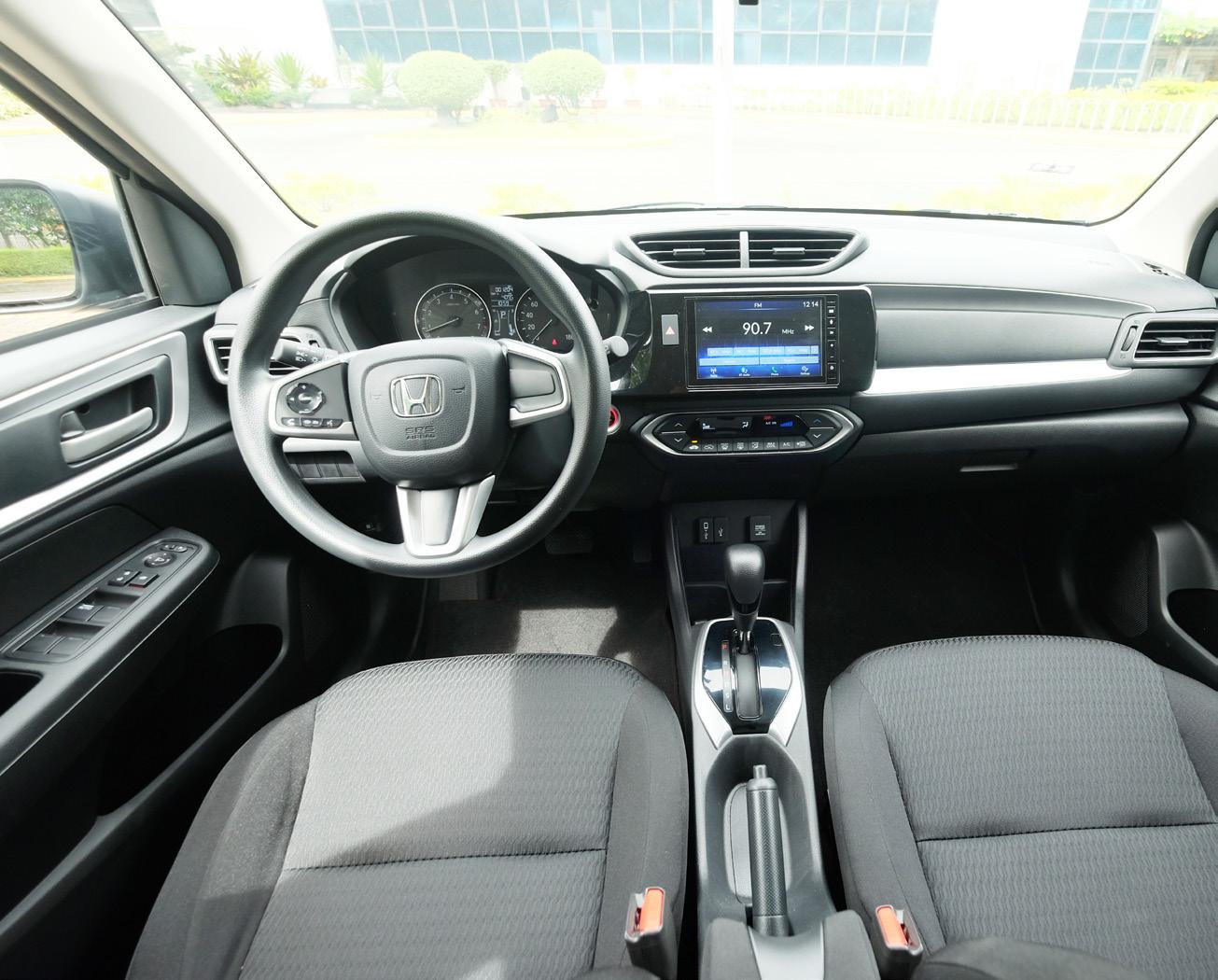


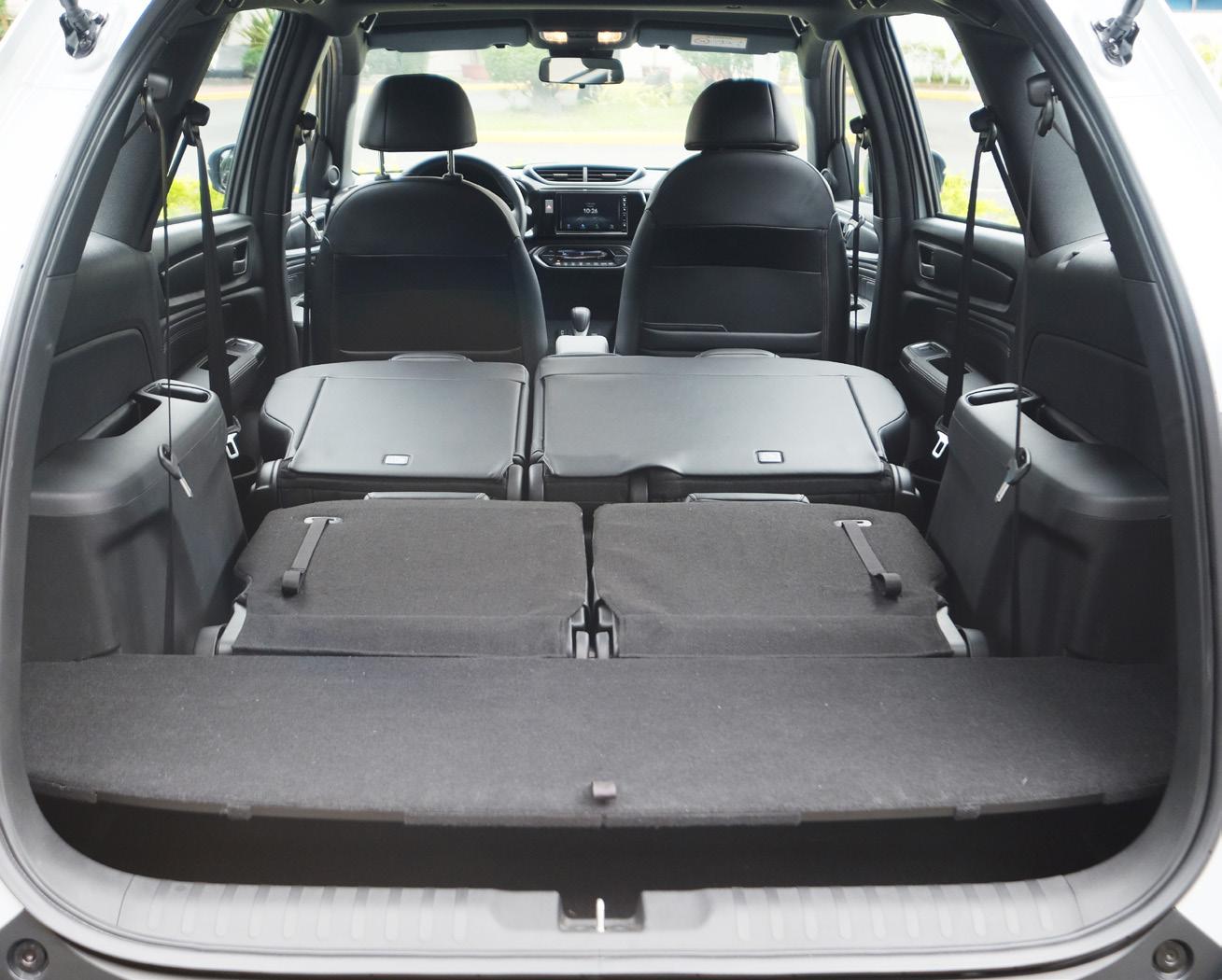
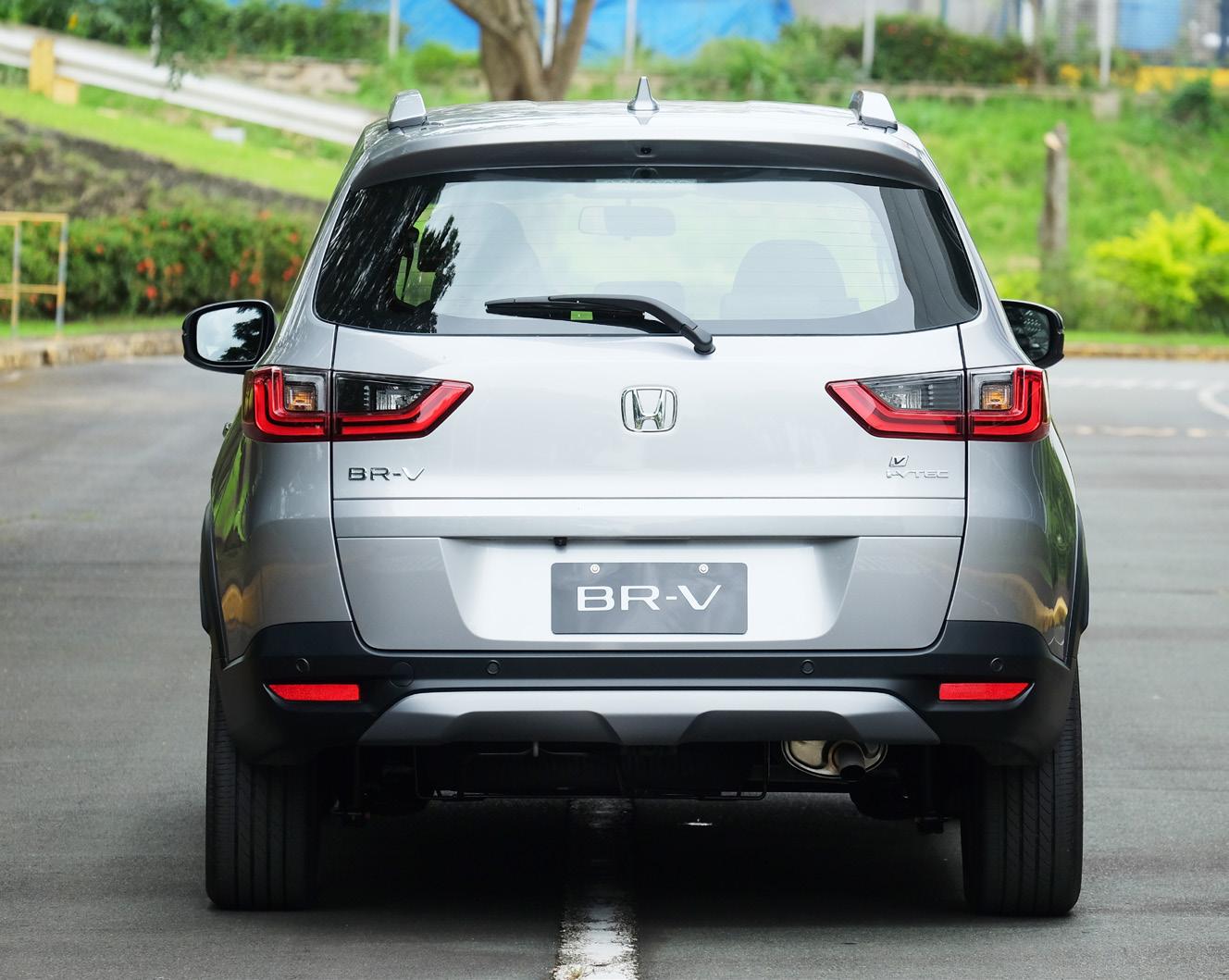

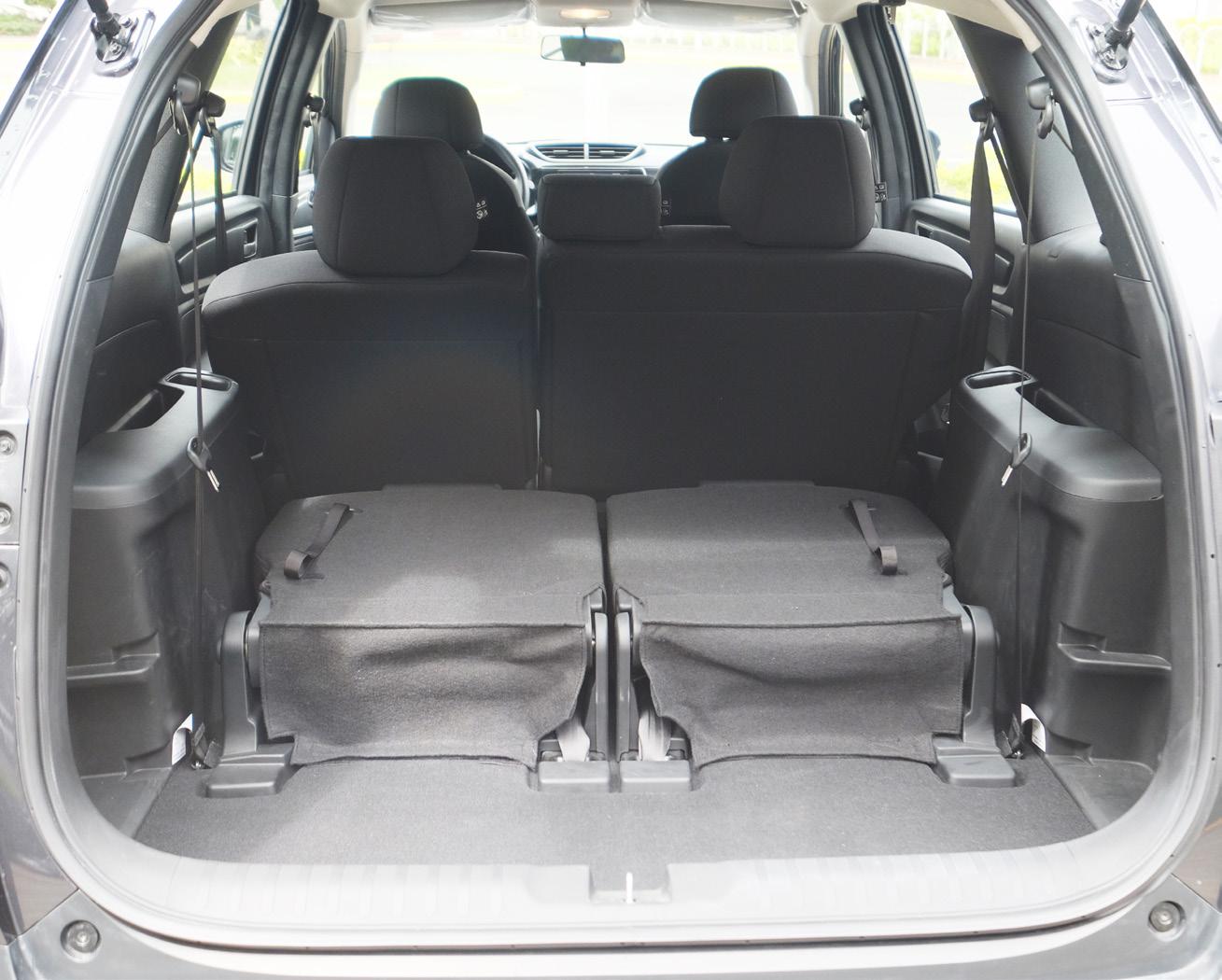

red accents for the interior, and a new 8-inch Kenwood infotainment system. Updates would be relatively quiet after that, with the notable addition being Apple CarPlay and Android Auto compatibility.
Since its introduction, manufacturers have scrambled to release their own competitors. Now we see the likes of the Suzuki XL7, Mitsubishi Xpander Cross, and the Toyota Rush and Veloz — all following the lead in a segment the Honda BR-V pioneered.
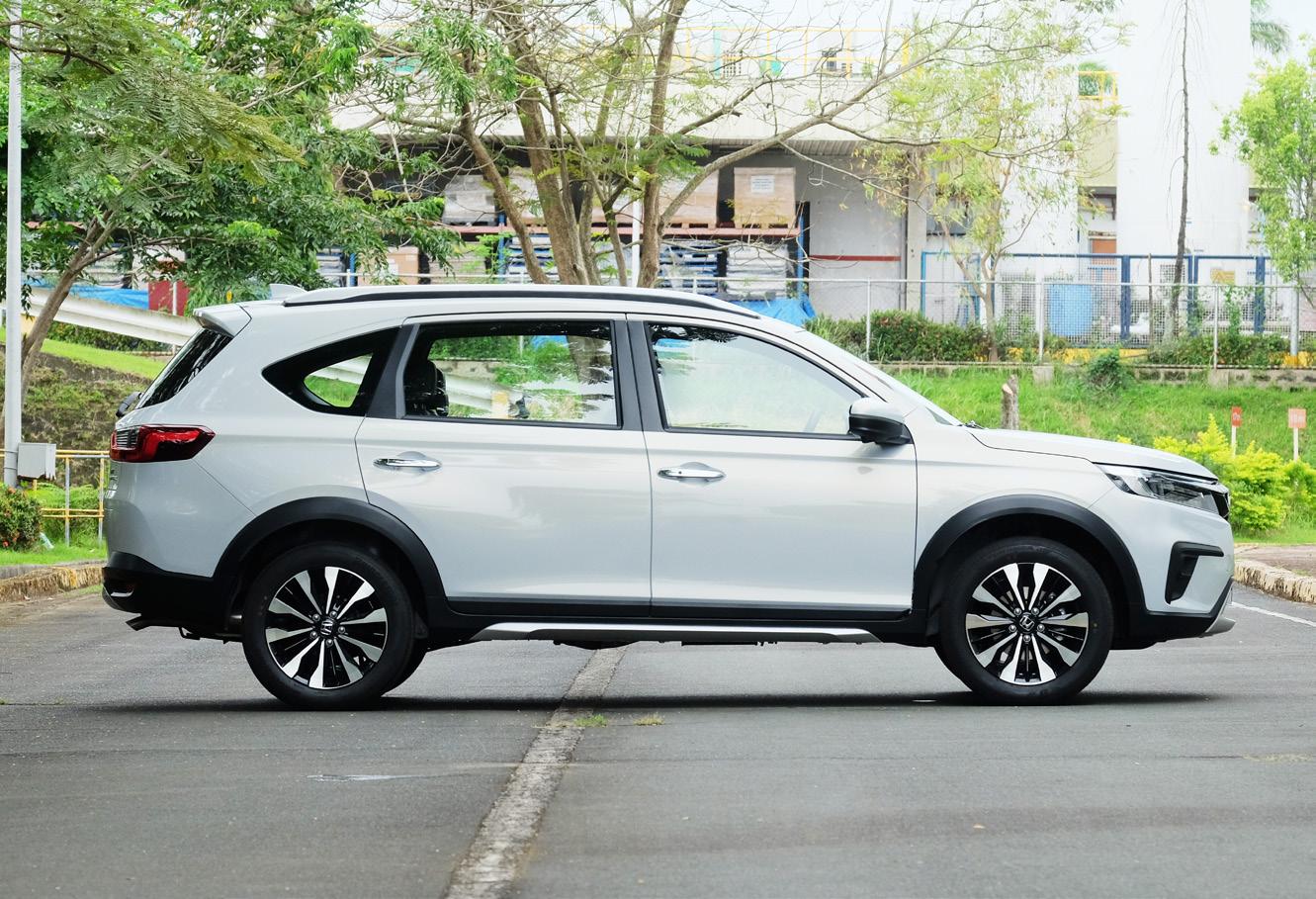


The term “all-new” tends to get overused a lot when a new car launches in the market, but few really hold up to the marketing. The term gets attached to everything from simple facelifts to slight redesigns, but in the case of the 2nd generation Honda BR-V, the adjective is well-deserved, with nearly every aspect of the car redesigned from the ground up. The 2nd generation BR-V was first teased in Indonesia in 2021 as a concept model called the “N7X Concept.” Thankfully, the 2nd generation BR-V retained much from the N7X concept, improving on nearly every aspect of the 1st generation BR-V.
No longer based on the stretched Brio platform, the 2nd generation BR-V gains some significant size over its predecessor. It’s longer (4490mm vs 4453mm), wider (1780mm vs 1735mm), and has a much longer wheelbase (2700mm vs 2662mm) which greatly improves interior and cargo space. Its ground clearance has been improved as well, now sitting at 207mm compared to the previous generation’s 201mm. Appearance-wise, it’s now more “SUV” than ever, with aggressive character lines and a bolder front fascia. It has larger wheels as well, with the top-of-the-line VX variant sporting larger 17-inch aluminum wheels. Despite it’s larger, well, everything, the new BR-V somehow manages a tighter turning radius, now at 5.3 meters from the 1st generation’s 5.6 meters. All variants now have fully LED headlights and taillights for increased visibility.
Going inside, the improvements continue. Gone is the cartoony shifter which has been a carry over from the older Brio models. The cockpit feels decidedly more upscale, with more attention being given to small details such as aluminum finishing on the door panels, and piano black finishing on the shifter. The seat designs have been improved, now with seat height adjustments and excellent side bolster support. Cabin space has been significantly improved for both second and third-row occupants, and the third-row seats now fold down 50/50 — a huge improvement over the previous generation’s fold and tumble third row. The second-row folds completely down as well; and after applying the riser, makes for a completely flat luggage space with both rows folded down. The result is more cargo space, with the ability to load a wider variety of cargo with the new BR-V’s added seat configurations.
While the new BR-V seems to sport a carried over powerplant from the previous generation at first glance, this isn’t the case. Yes, it’s still a 1.5-liter 4-cylinder engine that produces similar output (119 hp and 107 lb-ft), but the similarities end there. The new BR-V uses the newer L15ZF
Earth Dreams i-VTEC DOHC powerplant shared by the current Honda City and Honda HR-V, mated to a CVT. With a slightly higher compression ratio and full torque available earlier in the rev range, this means more responsive driving characteristics and improved fuel efficiency.
But perhaps the most notable addition to the new BR-V is the inclusion of Honda’s “Honda Sensing” safety suite to the top-of-the-line VX variant. Helpful safety features such as Adaptive Cruise Control, Auto High Beam, Collision Mitigation Braking, Lane Keep Assist, Road Departure Mitigation, and Lane Departure Warning are all present, complementing its standard set of safety features such as


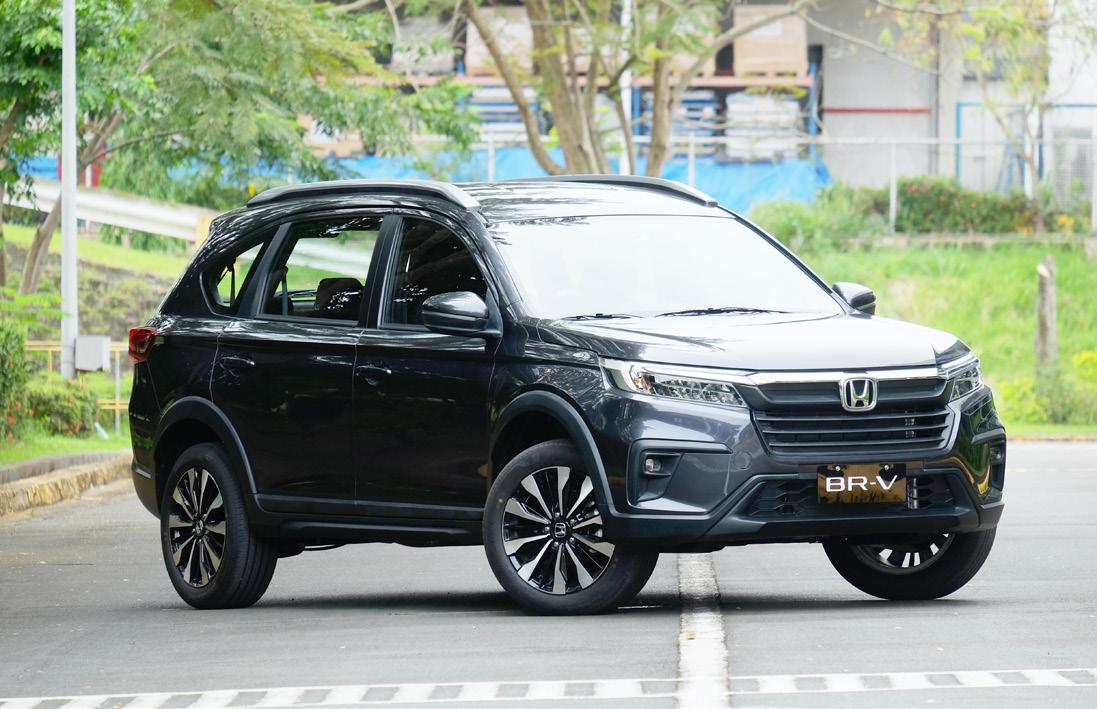
stability assist, hill start assist, and six airbags (for the VX variant). These new safety features provide tremendous value to the BR-V’s already-attainable price point, not to mention earning it a perfect 5-star safety rating from ASEAN NCAP (New Car Assessment Program for Southeast Asia) testing. When the BR-V first launched, it created a new segment for itself, answering the needs that many car owners didn’t even know they had, and paving the way for others to follow. It was a risky move on Honda’s part — one that paid off tremendously. But like any successful pioneer, Honda never stopped innovating and improving. Now, the catch-up game begins all over again.
Engine: Inline-4, 1498 cc, dohc 16V, Direct Injection i-VTEC, CVT
Max power: 119 bhp @ 6600 rpm
Max torque: 107 lb-ft @ 4300 rpm 0-100 km/h (0-62mph): 11.5 sec.
Top Speed: 190 km/h (118 mph)
Fuel Mileage: 4 L/100km Highway (claimed)
Price as tested: PhP 1,150,000 (S variant) PhP 1,295,000 (V variant) PhP 1,390,000 (VX variant)
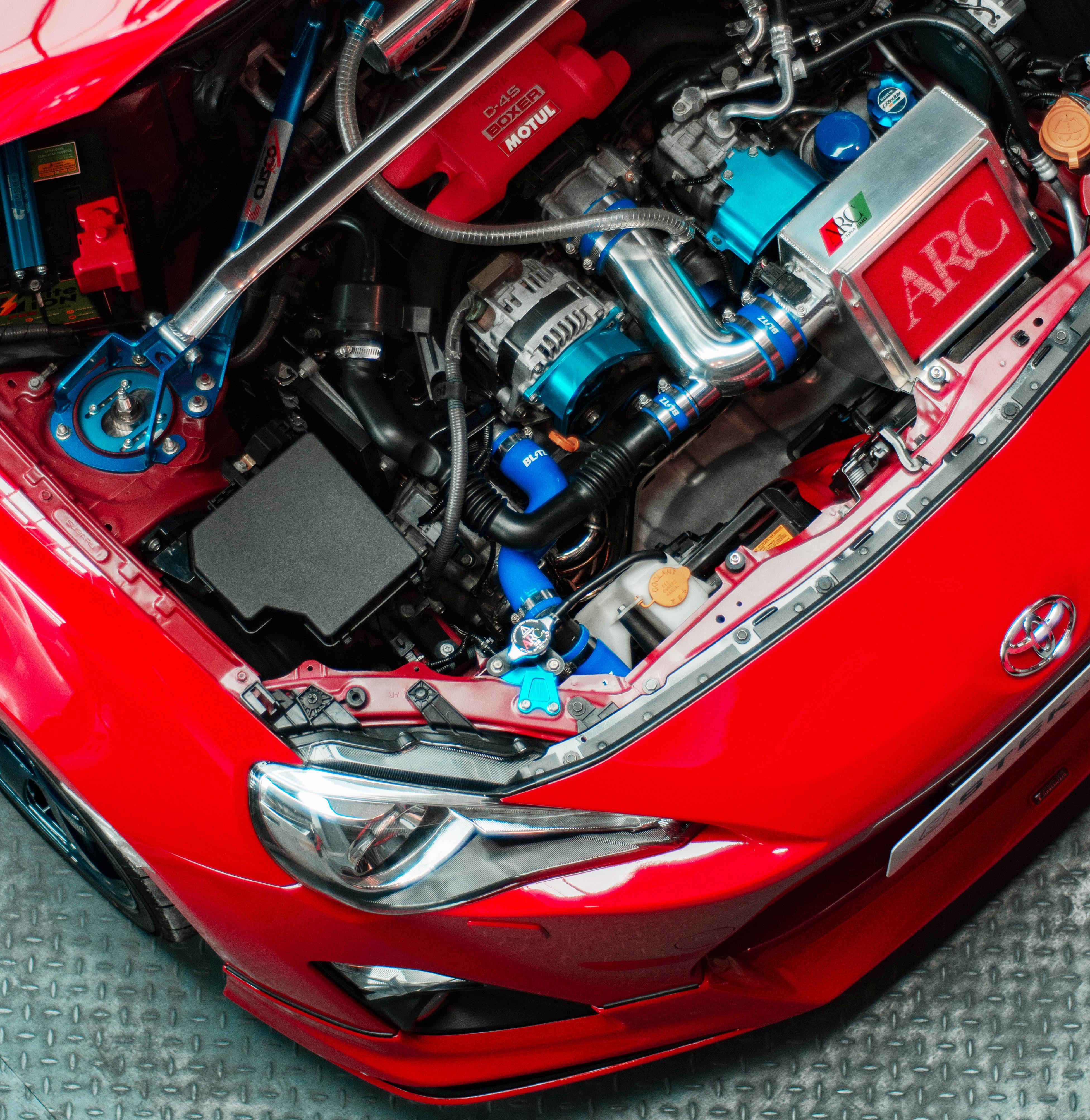
I’m sure most, if not all, will agree when I say that there’s just something about two-door coupés that clearly defines what a car should look like. For the most part, it could be attributed to their sleek, flowing bodylines. Or maybe it’s the curved hood that seems to go on for miles, with an exquisitely crafted engine underneath. Sure enough, there are a lot of evocative reasons a car enthusiast can think of in an instant. But whatever it may be, coupés simply exude superior automotive style and performance. What’s more, they are crafted in such a way that they evoke a strong sense of speed. It looks as if it’s going fast even while parked and that only adds to its appeal and mystique.
History tells us that the origin of the word coupé dates back to the 18th century when France used the term carrosse coupé, or ‘cut carriage’, to describe a shortened horse drawn carriage. But it wasn’t until 1916 when the Society of Automobile Engineers (SAE) recommended the names of car body styles that included the term coupe.
Simply put, a proper coupé must have twodoors and a fixed roof, period. To describe it would entail having a long hood, swept back A-pillar, low roofline, small trunk and twodoors. However, if you ask the ‘old folk’, real coupés are characterized by the absence of window frames on the doors as the majority
Francis G. Pallarco TUNER EDITOR
of four-door sedans have built-in window frames all around. Another strong coupé trait would be the size or the seemingly lack of a proper trunk. My guess is that much emphasis had been devoted to looking good that practical traits such as luggage space became non-existent. But ever since the evolution of the car, and depending on where it was manufactured, there have been numerous variations of the coupé. Additional classifications include the 2+2 coupé, the three and five-window coupé, business coupé, club coupé, Berlinetta, and Opera coupé. But the one that’s misleading and sparks an immediate debate among sports-car purists would be the so-called four-door coupé. First used by Rover in ’62, other car manufacturers also adopted its use, which still exists today. Blame it on plain old marketing I say.
Whatever the case, most coupés are valuable 4-wheeled contraptions. In the first place, this explains why they’re far more expensive than its four-door counterpart is. Lucky are those who own classic coupés as these only continue to increase in value. One look at any Stateside classic car auction and its bewildering to see just how much these 2-door cars are worth. But at the end of the day, a classic/modern coupé is a car you buy using your heart, rather than your head. Let’s face it, some cars are just cool to own, and some are just aren’t.
“A classic/modern coupé is a car you buy using your heart, rather than your head.”
It’s a coupé thing
The first-ever Philippine Motorsport Expo was recently concluded at Blue Bay Walk in Pasay City. The 2-day motorsports expo offered visitors a glance into the exhilarating world of racing through its numerous booths and activities.

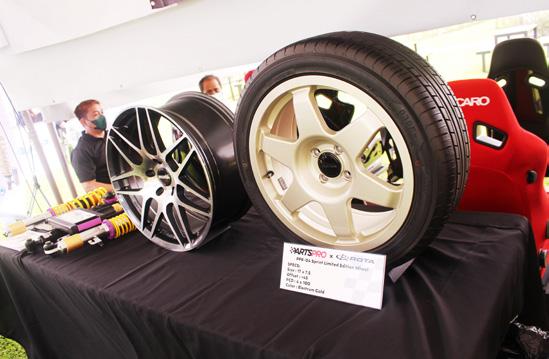



Among the highlights of the two-day event included the panel discussions moderated by champion racer Milo Rivera. The very first panel featured Radical Cars Race Director and former Lotus F1 young driver Marlon Stockinger, Tuason Racing CEO and entrepreneur JP Tuason, Automobile Association of the Philippines Motorsport Manager Ivan Isada, and AutoPerformance PH President Francis Aguila discussing the future of Philippine racing. Also well attended was the Women in Motorsport panel with W series driver and karting champion Bianca Bustamante, Team Philippines Gymkhana driver Gabie Desales, off-road racer and Vios Cup driver Maila Alivia, and karter and Vios Cup racer Julia delos Angeles.
The first panel on Sunday, October 16 had a stimulating discussion on How to Get into Motorsports with Super Sprint and Grupo Toyota founder Robert Tan, PartsPro General Manager Billy Billano, Ensport and Radical Cars driver Stefan Ramirez, Full Throttle Weekend founder and Race Director EZ Ligaya, Multi-Champion Inigo Anton, and AutoPerformance President Francis Aguila. The last panel of the weekend featured karters Akhina Santos, Axel Nocom, and Ethan Ong, as well as Vios Cup drivers Wakkeen Garrido, Russel Cabrera, and Jarond Mesina.
There were over 50 race cars and karts on display by racecar drivers, from drift cars, exotics, off roaders, several Toyota Vios Cup cars, and even a Radical SR1. Also on display, and well loved by racers and the general public, was the Mendokoro Ramenba food truck. Visitors also flocked to the sim-racing booth by Stregawo and tried their hand racing various disciplines on the 3 full-motion rigs. Kids and adults alike also had a go at riding the ekarts on display by Ekart Raceway. Race organizers Full Throttle Weekend, Philippine Rallycross Championship, National
Drift Championships by Backstage Events, Batangas Racing Circuit/Clark International Speedway, Slalom racing by Race Motorsports Club, Philippine Autocross Championships, ETCC, Radical, and Super Sprint were also all present for car enthusiasts to visit.

The numerous booths including Packy Auto Parts, Matthew Romuldez Photography, PartsPro, Island Automotive Solutions, Hublink, X-1R, European Touring Car Championship, Runstop, Carbon 101, FMS Molotov, Autoshocker, Ekart Raceway, GS Battery, and the Automobile Association of the Philippines had car guys shopping to their hearts’ content. Car club meets, and a die-cast car swap meet and bazaar by the Diecast Car Collectors Club of the Philippines
(DCPH) were also held next door at Met Live mall.
The two-day event was capped off by a short awarding ceremony presenting Plaques of Appreciation to the event partners and the winners of the Best Time at the Sim Racing Challenge.

Rallycross Challenge Best Time went to Russel Reyes while the top gun for the Radical Challenge was Luis Moreno.
The Philippine Motorsport Expo 2022 was powered by Toyota Motor Philippines, Eneos, Dynopro, Metropark, Blue Bay Walk, Met Live, and supported by Alpinestars by AutoPerformance Motorsport, Radical Ph, Recaro Philippines, All Terrain Garage, Stregawo Custom, Anzahl, Aguila Glass, and Walter Sound and Stage Lighting.


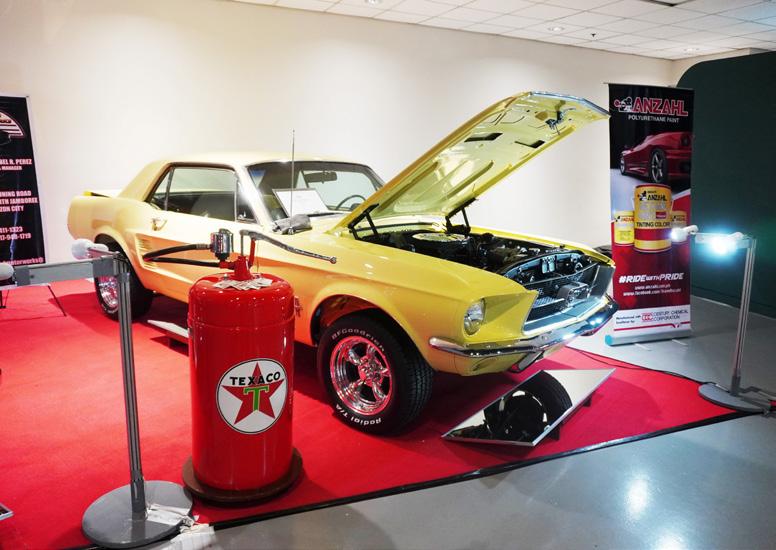
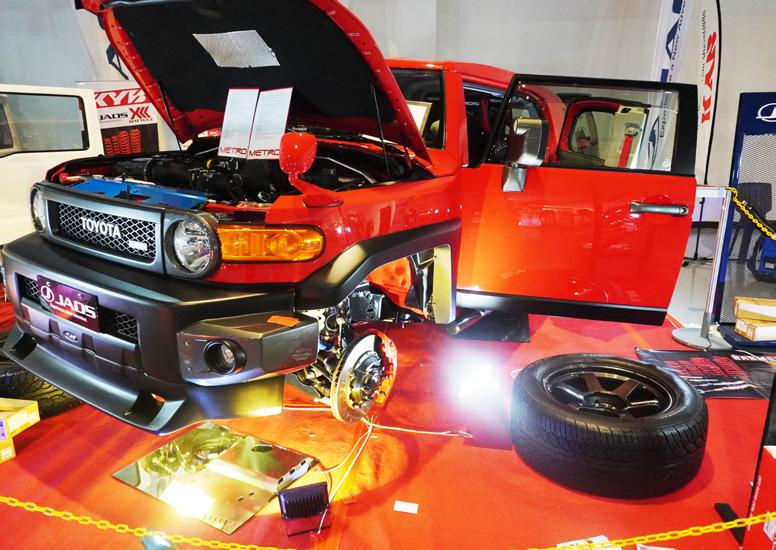 Words: Francis G. Pallarco Photos: Gian T. Pallarco Additional photos: Alex Car Restoration
Words: Francis G. Pallarco Photos: Gian T. Pallarco Additional photos: Alex Car Restoration
Going strong for 30 years now, the annual TransSportShow remains as the longest running car show in the Philippines. Organized by Ms. Sophie Delos Santos of Tradeshow International, Trans Sport Show continues to set the benchmark when it comes to car show competition by showcasing the world-class talents of local car restorers and tuners as she sums up this year’s highly successful event, “The 30th Motul Trans Sport Show Cup went on smoothly as expected. I thank my very able and hardworking panel of judges who left no stone unturned during the difficult deliberations. I am overwhelmed with the quality of work done in the project vehicles — a clear sign that Trans Sport Show has inspired the participants to raise their standards in vehicle restoration over the years.
Congratulations to everyone!”
Like always, this year’s Trans Sport Show saw an interesting mix of classic and modern cars, plus an impressive line-up of hyper cars and supercars that surely had something for every car enthusiast. I must say that the quality of the entries was simply top notch, proving why this car show continues to be regarded as the one to compete in. In case you missed it, here are some of the wonderful cars that took top spots in their respective categories.
The Best in Show Nostalgic Class and First Place European Class went to the immaculately restored 1970 Mercedes-Benz 280SL by Alex Isip of Alex Car Restoration. The Best of Show
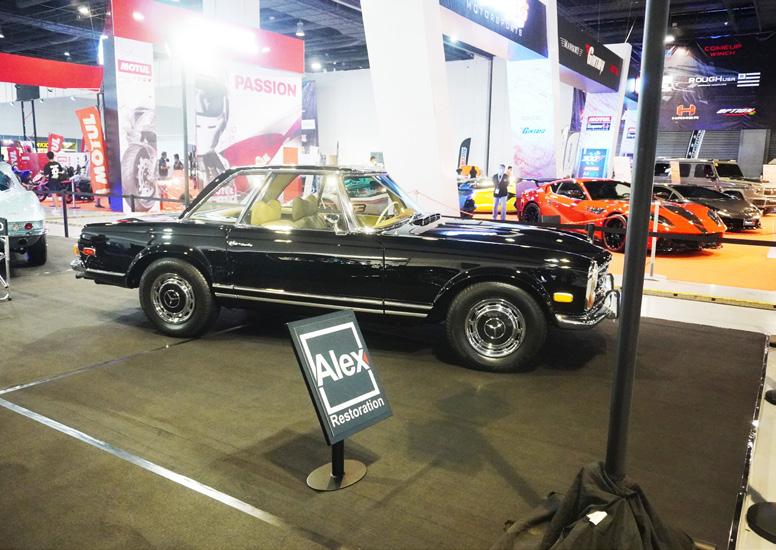
Contemporary Class and First Place European GT Class was awarded to the eye-catching 2021 Ferrari 812 Superfast of Emperor Motorsports. Taking the Best in Paint and Best Interior award was the stunning 1966 Chevrolet Corvette of Alex Isip of Alex Car Restoration that also got First Place in the Classic American Muscle Category.
Other awesome entries that would be impossible to miss include the MF Ghost Kanata-inspired Toyota 86 owned by Mark Anton David, winning the Best Contemporary Japanese Coupe. It wouldn’t be complete without some old school staples like the ’73 Toyota Corolla Trueno and ’66 Toyota Corolla (Notchback coupe) of Architect Mike Peña winning first and third place in the Japanese 2-Door Classic. Giving off a strong “Greenhills Era” Vibe was the ’73 Toyota Corolla Levin Coupe that was built by East HQ Auto that won first place in the Compact Resto-Mod Class.
Autogenix Carworx had a trio of built EK9 Honda’s that won first and third place in the Japanese Contemporary 2-Door Class. Mark Parel of Oanoan Auto Grooming Professionals won First Place in the Contemporary 4-Door class and also getting the Best Engine Display Award. The red 1971 Toyota Celica from Sushi Factory not only got a lot attention during the show but also Third place in the Japanese 2-Door Classic Class. Metro Mariwasa entered an all-out Suzuki Jimny which won First Place in the Jimny Class while the Ford Rangers of Autobot Off-Road dominated the Ford Ranger class by winning all three places.
the true

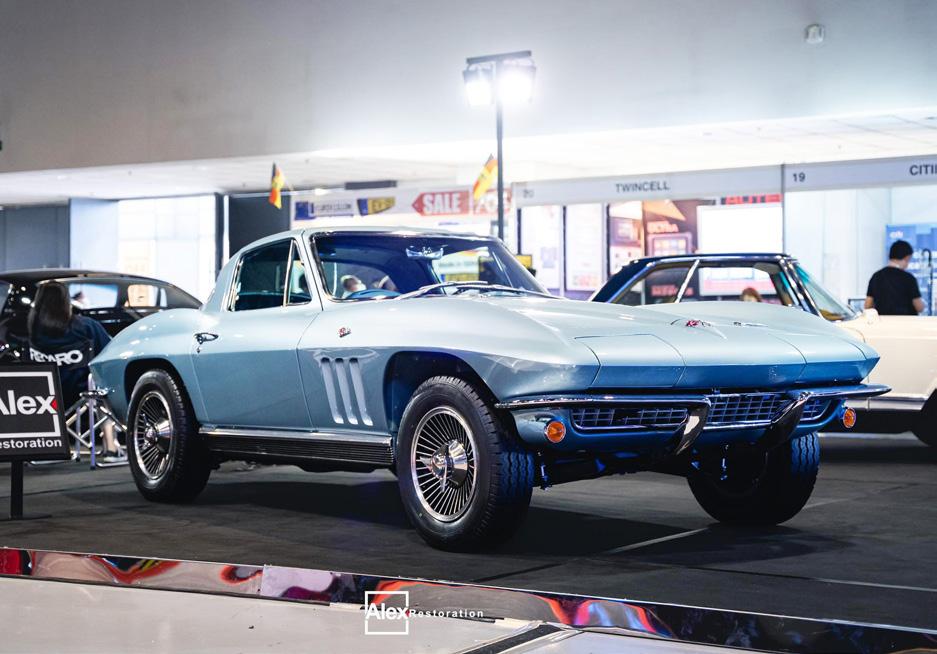

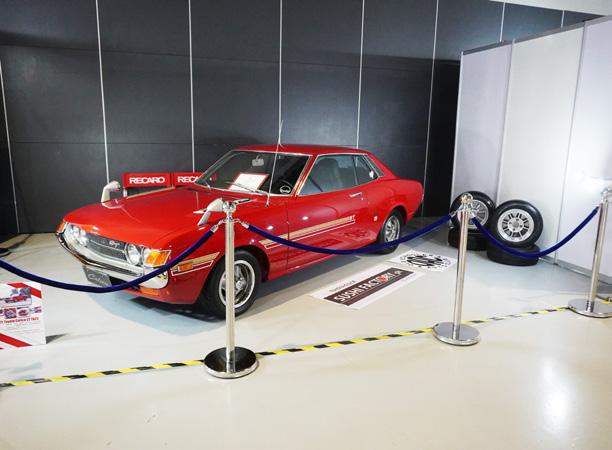

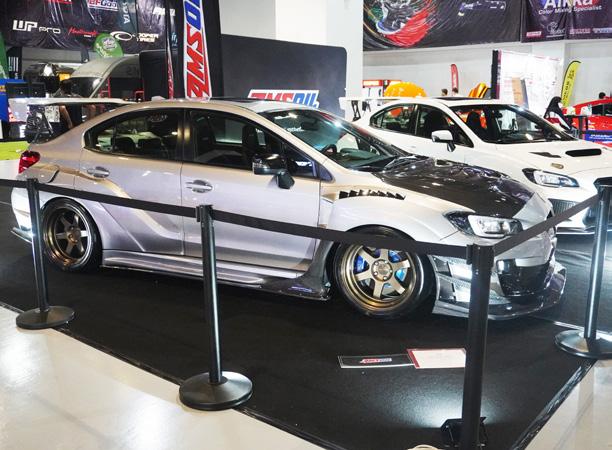


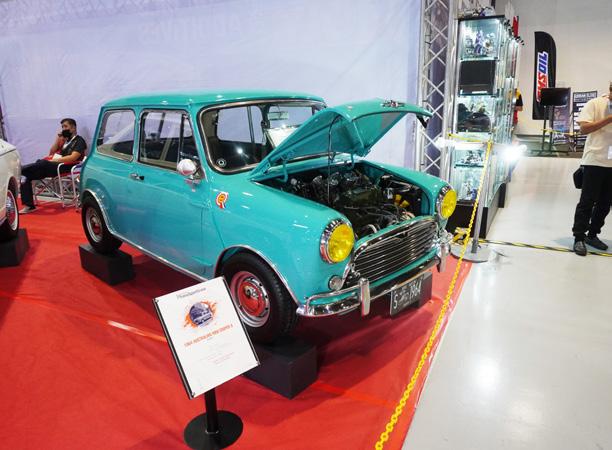
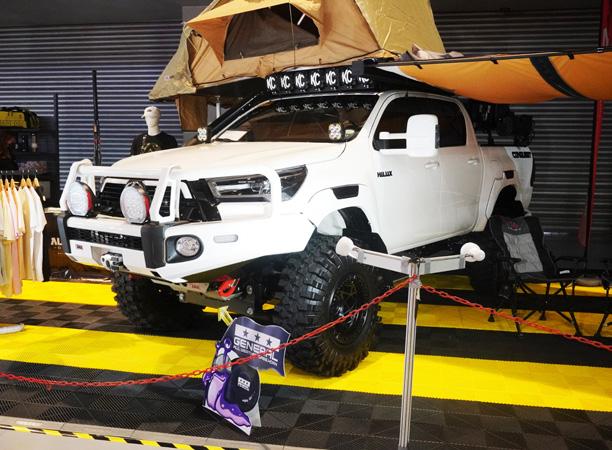


 Words: Francis G. Pallarco
Photos: Jordan Aparicio
Words: Francis G. Pallarco
Photos: Jordan Aparicio
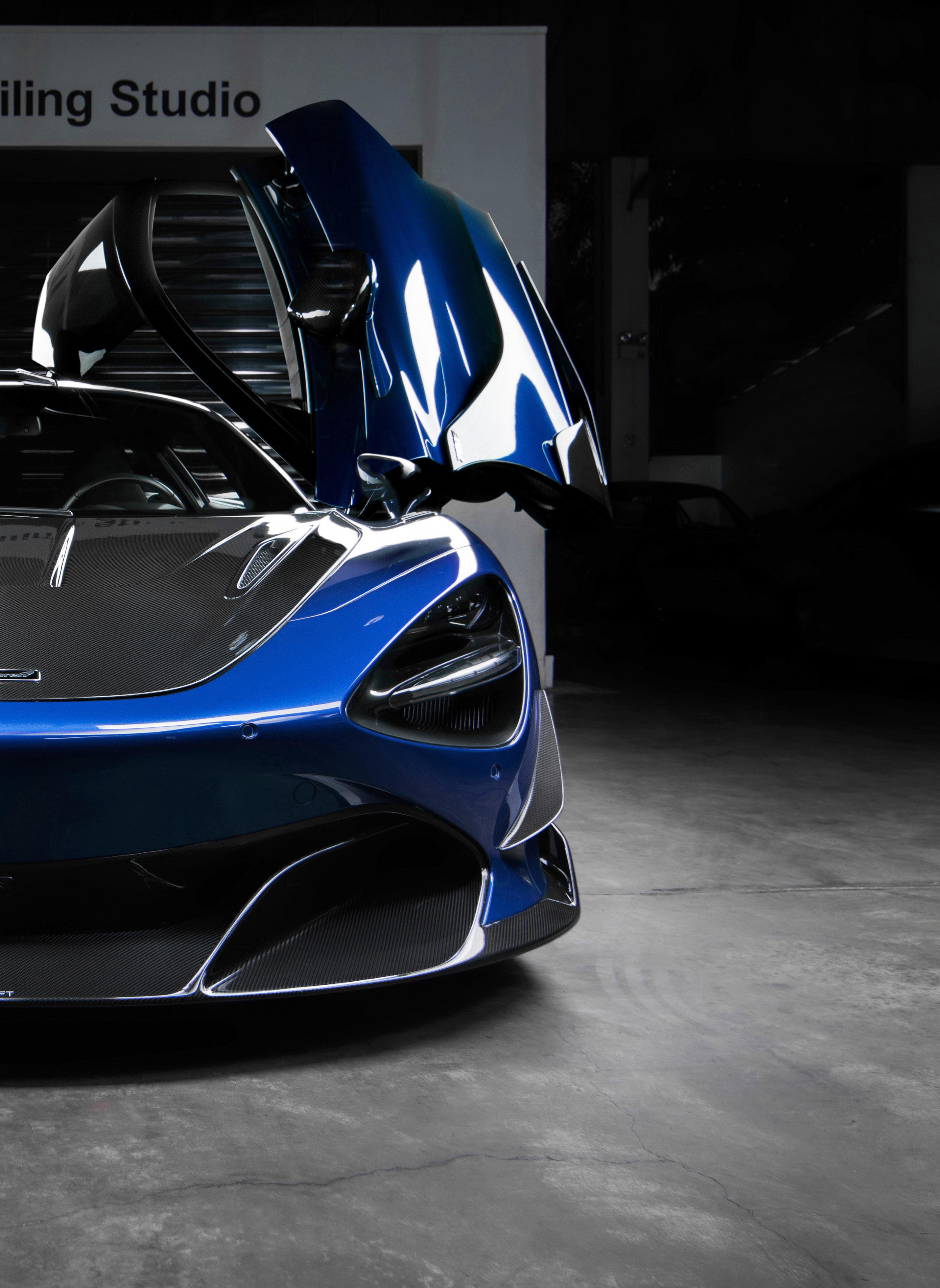
traight from McLaren Automotive in Surrey, England, the 720S has been called a lot of things, but slow surely isn’t one of them. In fact, McLaren characterizes it as having “Predator-Like” responses. True enough, as the 720S is capable of darting from 0-60 mph in just 2.8 seconds and sprinting through the quarter-mile in just 10.4 seconds. Now that’s faster than reading this entire sentence. As far as looks go, its mesmerizing, from its twin-hinged butterfly doors down to a wind cheating, super sleek exterior. Having established those two points, it does beg asking two questions. Is it possible to modify it to go even faster and make it look better than it already is?
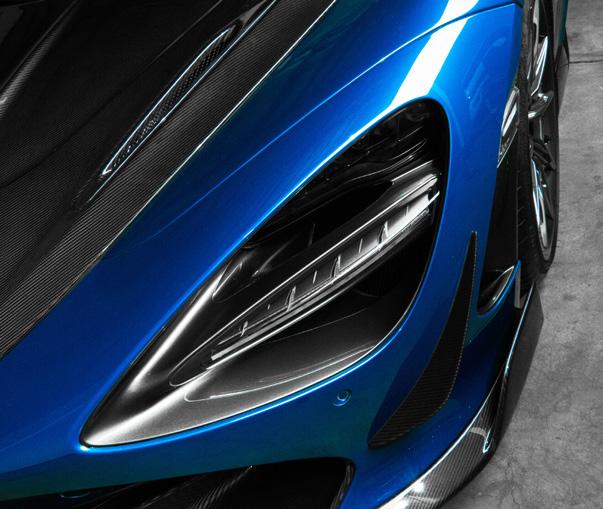
The answer is definitely yes. Most especially if you ask Keith Bryan Haw of Importhookup who lives by the mantra that “stock is always boring”. He’s the one responsible for the transformation of this year’s Transport Show-Winning McLaren 720S that’s packing more speed, looks and oh let’s not forget being able to spit out flames from the aftermarket exhaust. This 720S build started out when the owner simply asked Keith what could be done to his stock 720S. Having a stable of modified cars in his garage, the owner’s main objective was to turn it into a show winning hypercar or as Keith puts it, “Our approach is to build the best McLaren 720S without resorting to a widebody kit.”


Let’s start with the exterior, where the 720S utilizes a lot of carbon fiber. I mean a lot as it forms McLaren’s Carbon Lightweight Architecture (MCLA). This includes the finely sculpted exterior panels and the monocoque carbon tub and more. So, what better way to modify its looks and achieve lightness than by adding even more carbon fiber. Exclusively fabricating body kits for hyper cars, the Florida based company RYFT was chosen by Keith for its 720S carbon fiber body kit. In fact, this is more than just a body kit as the RYFT carbon fiber pieces on this 720S are so extensive. It covers the entire front end down to the sides, the rear portion and even a roof scoop. The body kit installation
and color matching were meticulously done over at Alex Car Restoration. What’s interesting to point out is that they opted not to paint over certain portions of the carbon fiber panels, greatly creating contrast. It’s those small details that count and only become evident the more you study the car. The end result is visually stunning, but what’s more important is that these carbon fiber panels have just as much function as it does form.
Since we’re in the subject of form, this modded 720S rolls on a set of staggered AL13 R010 Dymag X R-Series wheels. What makes them special and costly are the wheel barrels which are made of real carbon fiber, making them super strong and light weight. The spoked wheel centers are forged aluminum with titanium hardware and floating AL13 center caps in yellow that matches the color of the McLaren brake calipers. The staggered wheel setup consists of 20x10 and 21x12 wheel sizes and wrapped with corresponding sized Michelin PS4S Tires. The wheels were chosen after the RYFT body kit was

“Our approach is to build the best McLaren 720S without resorting to a widebody kit.”
— Keith Bryan Haw
installed as Keith adds, “He asked me to buy the most expensive wheels and these are the most expensive ones that I’m currently selling.” The suspension components were left as-is for now, as it offers exceptional levels of grip with McLaren’s Active Dynamics Panel. With Comfort, Sport, or Track modes to choose from, each one optimizing ride comfort, dynamic handling balance and outright cornering grip and performance. Same goes for
the massive carbon ceramic brakes, ensuring that the stopping power of the 720S is nothing but exceptional.
Codenamed M840T, this is the 4.0-liter, twin-turbocharged, V8 engine that catapults this 720S to triple-digit speeds in a matter of seconds. Thanks to lightweight turbines capable of 160,000rpm, the boosted V8 engine is capable of generating 720 ps or the equivalent of 710 horsepower. To coerce the fairly new engine to


make more power, the only logical choice in this case was to use proven aftermarket bolt-on parts. This is what makes modding supercars or hypercars possible and much easier. A lot of aftermarket companies are specializing in such cars, doing all the research and testing so enthusiasts can just take advantage of what they’ve learned. An awesome looking 720S like this needs a characterful soundtrack from its exhaust tips. For that reason, Keith chose a cat-delete downpipe and a titanium race exhaust with carbon fiber tips from Fi Exhaust. Manufactured from real titanium, the exhaust features smooth bends without any kinks or the need for lobster welds, it’s just smooth flowing, lightweight pipes. But one of its main features is the addicting sound it makes while pulling through the gears as the revs build up. To maximize the engine parameters and the freeflowing exhaust, a VF Engineering ECU Tune was also added to the list of mods. Guaranteed to give more power and torque, this 720S has yet to schedule a proper dyno session. But by just running the VF Engineering tune, the performance was like night and day according to Keith as he adds, “We figure it can push around 850, but it can already shoot backfires and flames.” Now that’s something worth watching. Making its debut appearance at this year’s Transport Show, this McLaren 720S won second in its class and took home the Best of Show Custom Car Category Award. This 720S build by Importhookup isn’t what you would call ordinary or easy. But you'd be totally insane not to think it isn’t fast enough or good looking in stock form. This just proves the notion that tuners will always try to get every bit of potential from just about anything that car manufacturers leave on the table.
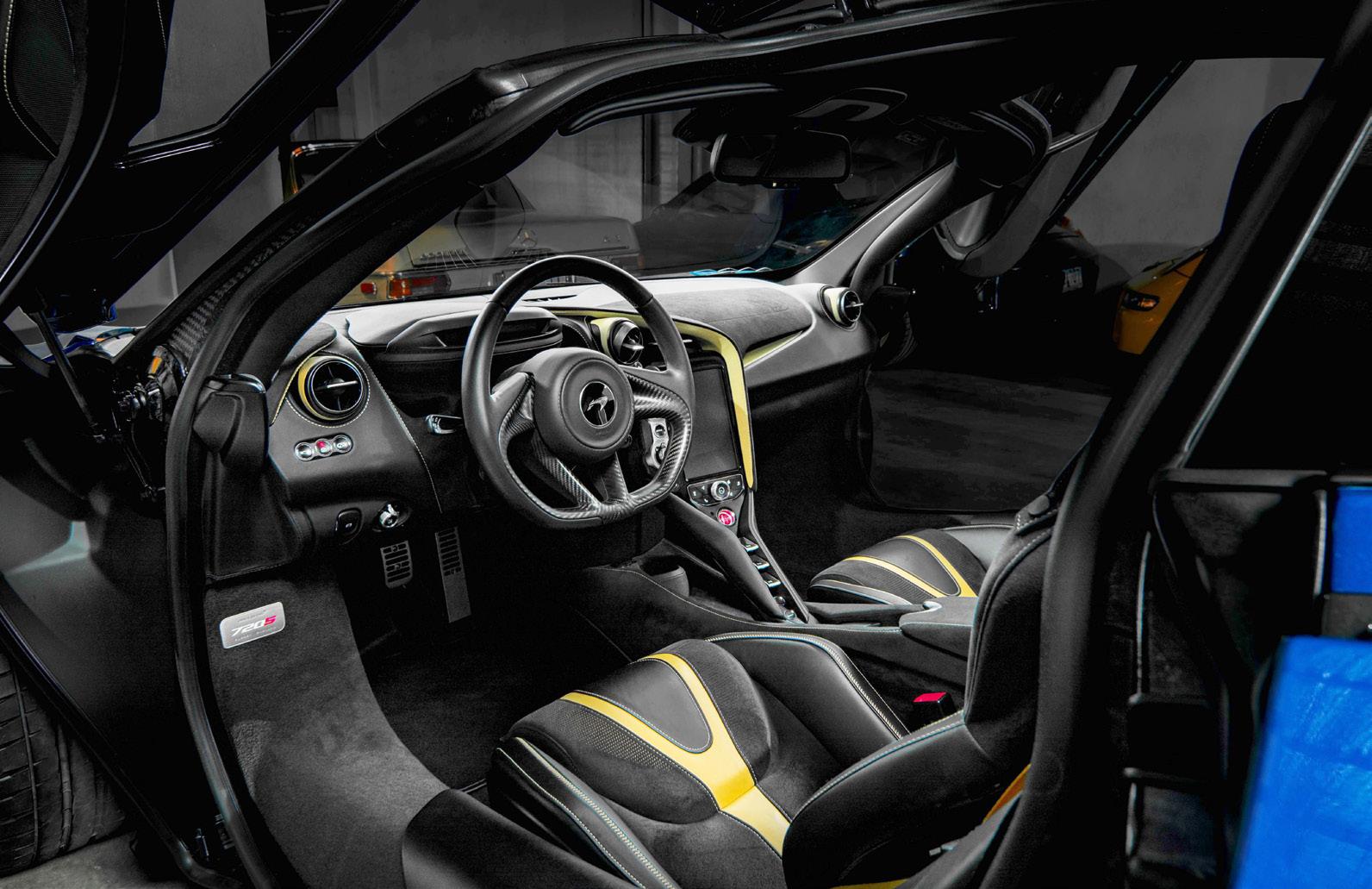
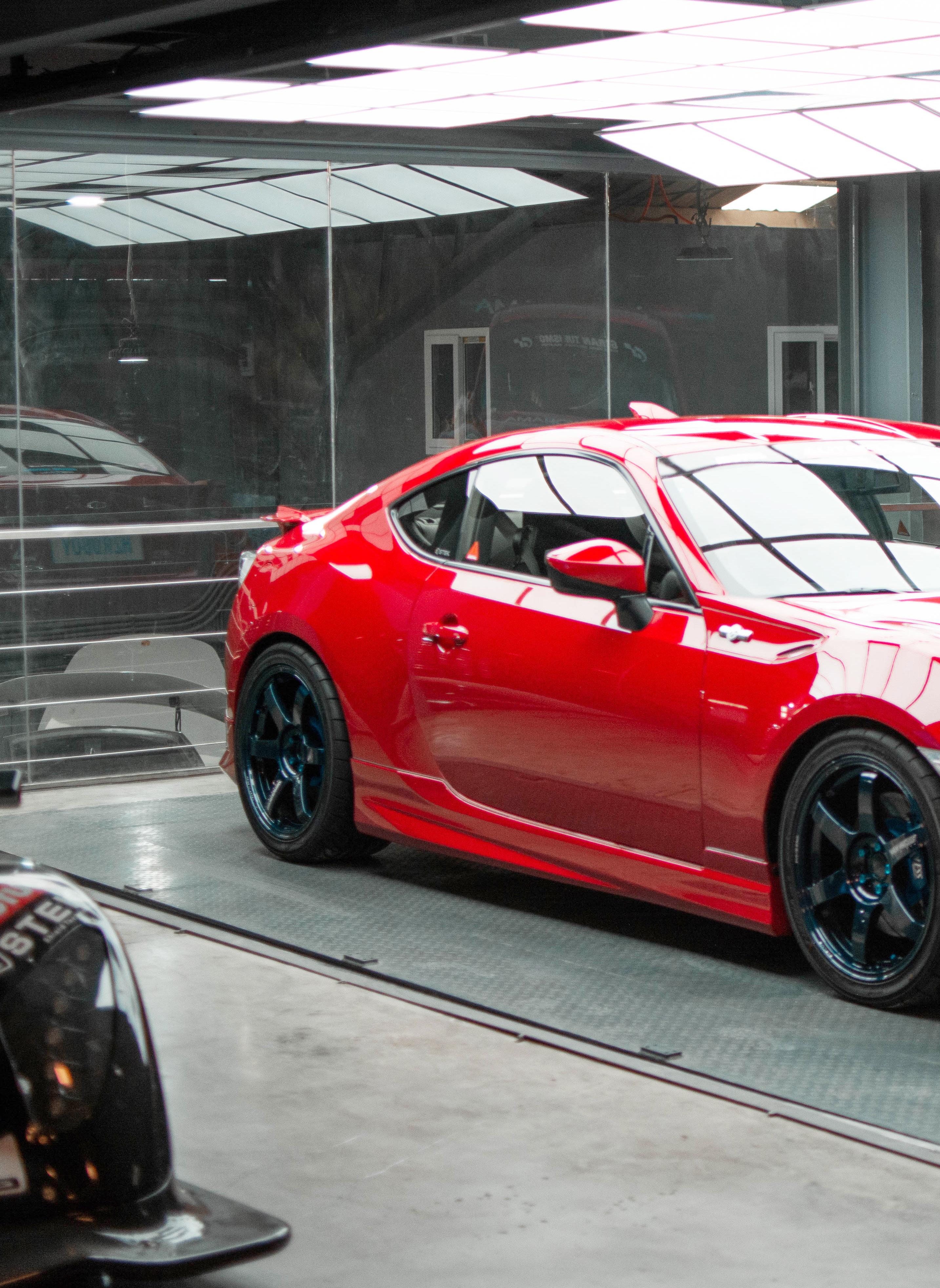
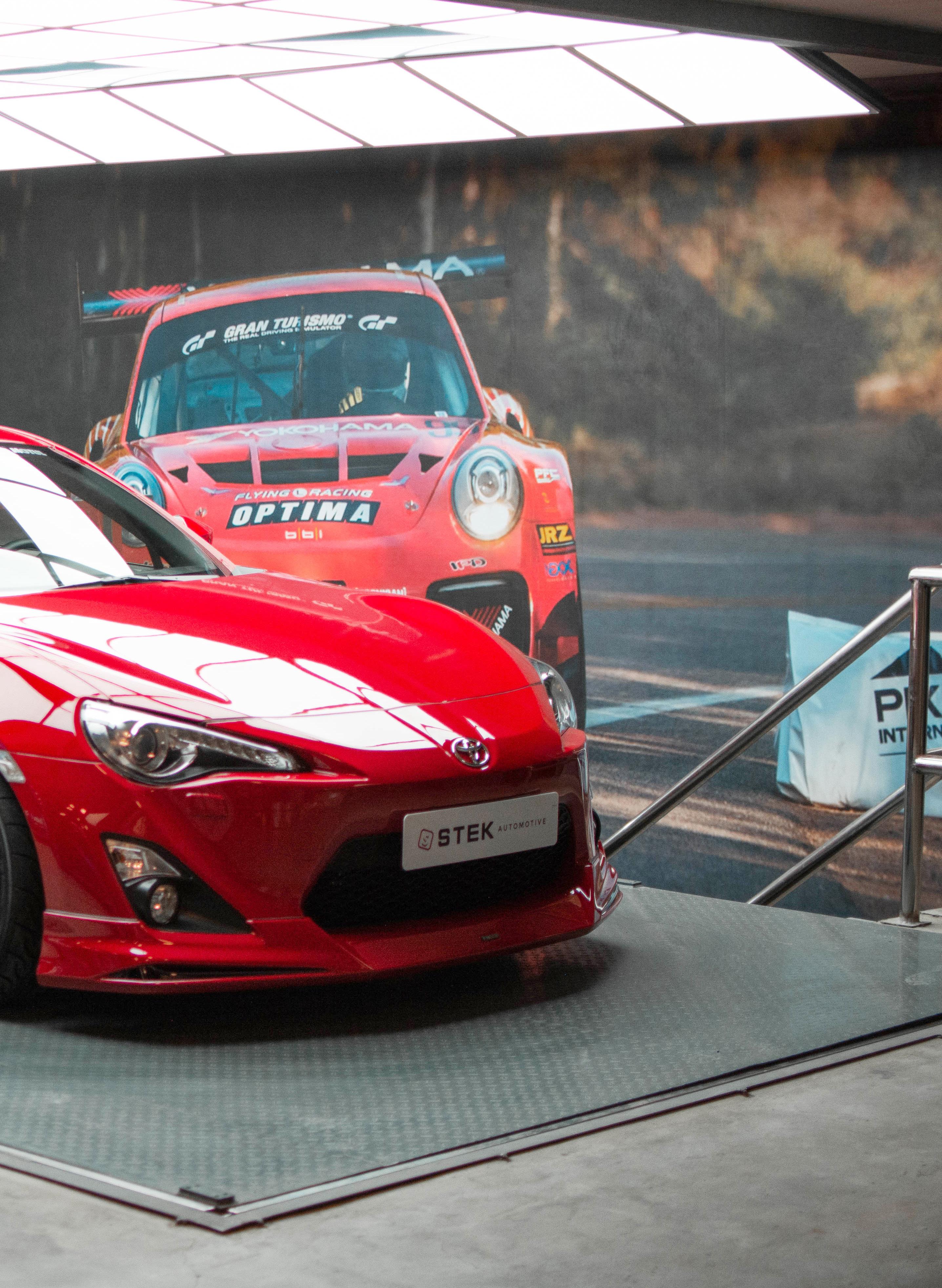
Whether it’s the first or second generation Toyota 86, it doesn’t matter really as the lightweight coupe continues to be a great car for performance enthusiasts. It offers a fun driving experience, it’s got rear-wheel drive, and practical enough to use even as a daily driver. What’s more, the 86 coupe offers a balanced platform with a highly communicative steering. Arguably, its naturally aspirated flatfour may not be the most powerful in its segment. But that’s not what the engineers and designers were aiming for. In my opinion, they just wanted

the 86 to carve corners without any drama. If you think about it, the 86 is characteristically similar to the iconic AE86 from the eighties. Having established that, it now becomes obvious that the engineers and designers had already established who this car was built for and the type of driving that it would be engaging in.
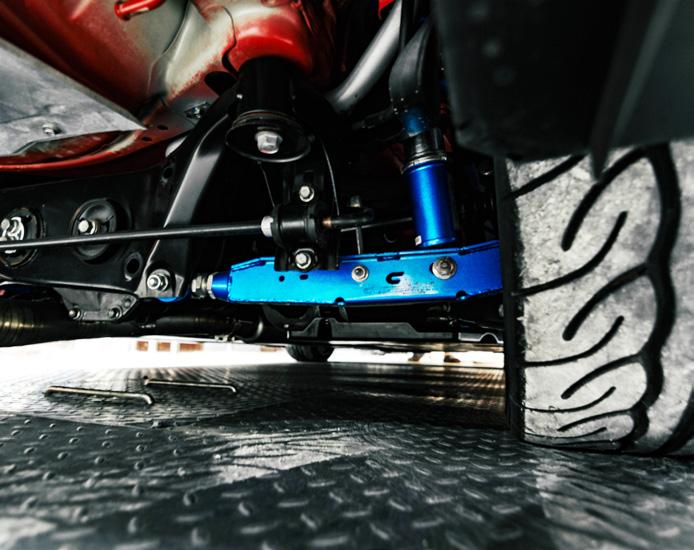
Something that Mark Anton David found out first hand as he recalls, “During a trackday at Clark International Speedway with Autoplus Motul, WRX STi Club Philippines, Magtroc and Supercar Club, Subaru Asia Motor Image allowed me to use and drive their media/demo car BRZ

▼
01 for that event. I immediately fell in love with the car after driving it flat out on the track. It’s not as powerful as my Subaru STi but that all-stock BRZ gave me a lot of smiles because of its agility and handling. Truly, it’s a driver’s car as created by Tetsuya Tada. A lightweight 2-door, front-engined, rear wheel drive coupe. In stock form, it has perfect balance and a near 50/50 weight distribution. For me, it’s a fun and rewarding car to drive. You can easily make it turn using brake, steering and throttle control. It develops your skills as a driver and improves your driving IQ.”

This 86 coupe comes with a long list of aftermarket parts that are mostly functional so it’s all underneath the body. However, they also put some thought into the exterior with a Modellista body kit that doesn’t draw attention to itself.
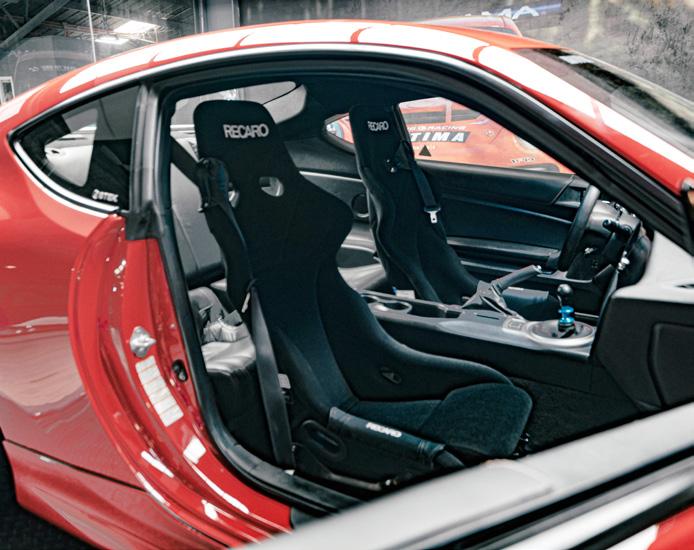
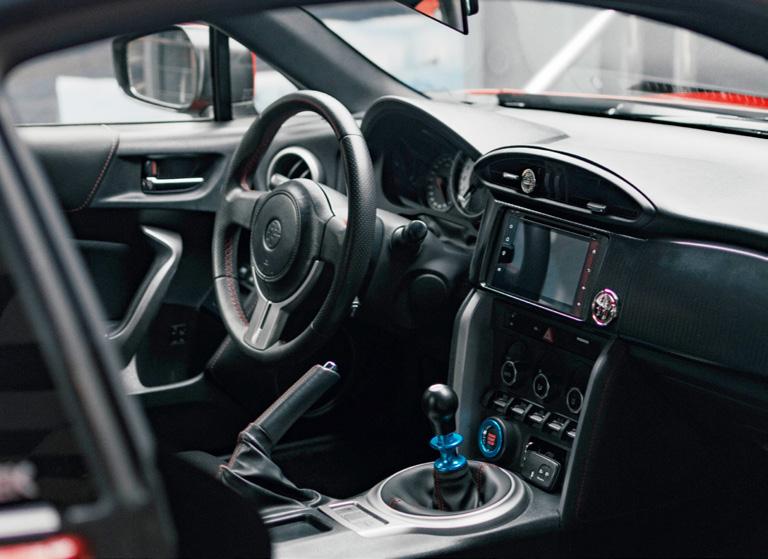
It did take a few years until Mark was able to source a pristine 86 coupe and just like any performance enthusiast it starts with this and that until it all snowballs as he recalls, “What I saw was a blank canvass. A car that I can modify and customize according to my taste and need. To preserve the car’s original paint from the factory, it was immediately brought to Detail Plus for paint correction, complete detailing and whole body installation of paint protection film. The Donut Shop was tasked to maintain the car and change all fluids.” All was well and good for the 86 until the darned pandemic came. Instead of putting
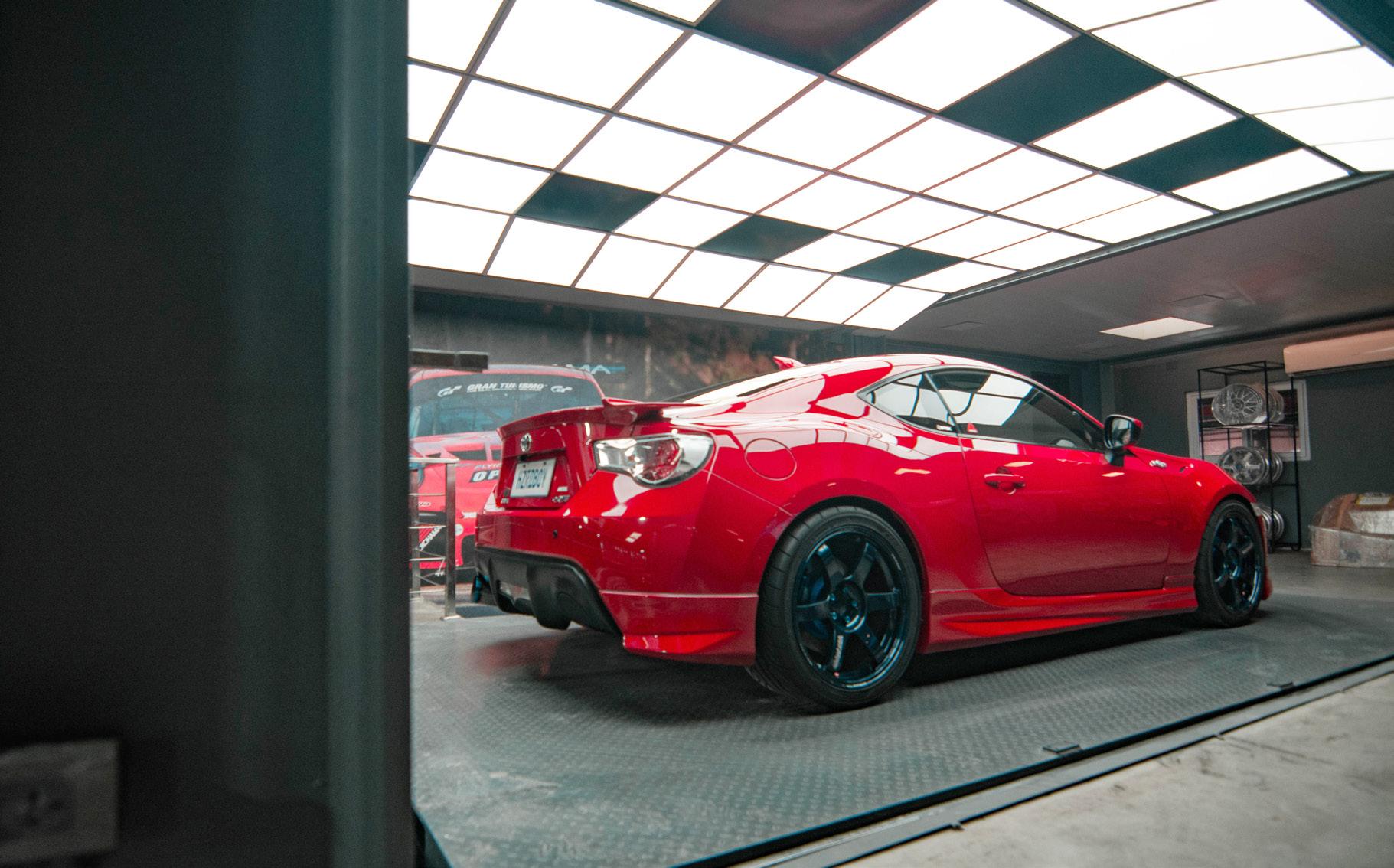
the 86 build on hold, Mark saw it as a perfect opportunity to bond with his son Zach by embarking on a pandemic build. “It was sort of a father and son bonding time for us. We always wanted to keep it N/A for reliability and use purely Japanese made bolt-on parts to keep the JDM theme. We carefully chose all the aftermarket parts and with all of it installed, the car is now more than 70 kilos lighter than stock. The weight savings came from the Tomei full exhaust system, Recaro RS-GE seats, Endless Brake Kit, forged Rays Engineering Volk Racing TE37 Saga S-Plus wheels and Lite-Ion lightweight lithium battery.”

This 86 coupe comes with a long list of aftermarket parts that are mostly functional so it’s all underneath the body. However, they also put some thought into the exterior with a Modellista body kit that doesn’t draw attention to itself. The design and execution is so subtle that it doesn’t alter the character lines and curves of the car, but rather refines it even more. The original paint was then sealed and protected using STEK protective films. After everything was done and installed, the only thing left for the father and son tandem was to enter their 86 coupe build in this year’s Transport Show. “Detail Plus and Hazardboy Performance installed all the parts and prepped the 86 with the support of Autoplus Motul. With the recommendation of Charles Ty from Autoplus Motul, we decided to follow the MF Ghost theme for the show and we tapped Eightdecals to install the livery. With utmost preparation, our 86 won the “Best Contemporary Japanese Coupe” award. We wish to thank all the people who helped us with this build.”
The serious and lengthy selection of aftermarket parts on this 86 coupe are all well-thought of and requires solid commitment. The spec list below is rather long so it’s hard not to miss.


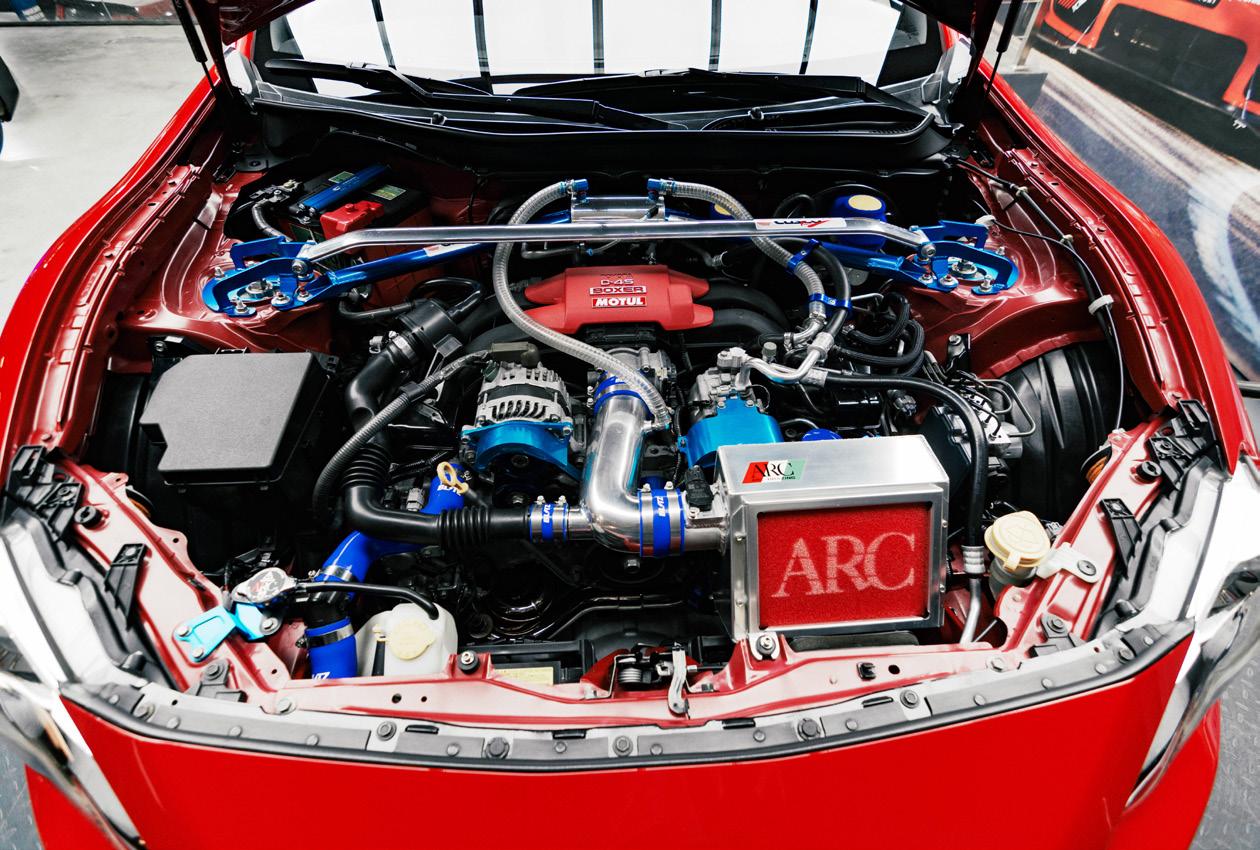
It’s pretty extensive to say the least, but another thing that really sets it apart is the overall build quality and clean execution that’s evident literally from top to bottom. It’s a personal build that reflects the owners taste and vision of what an ideal 86 coupe should be.
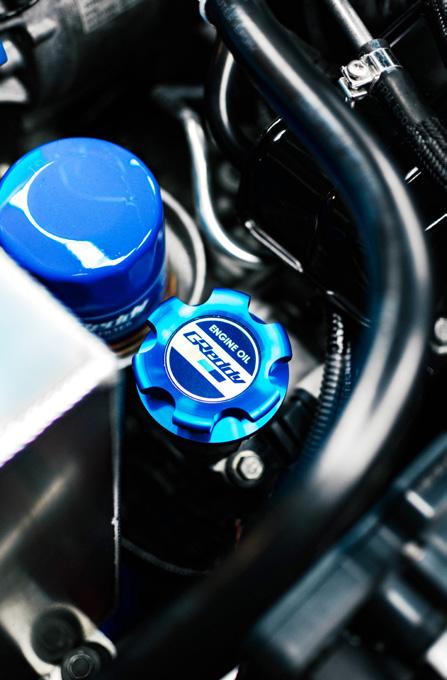
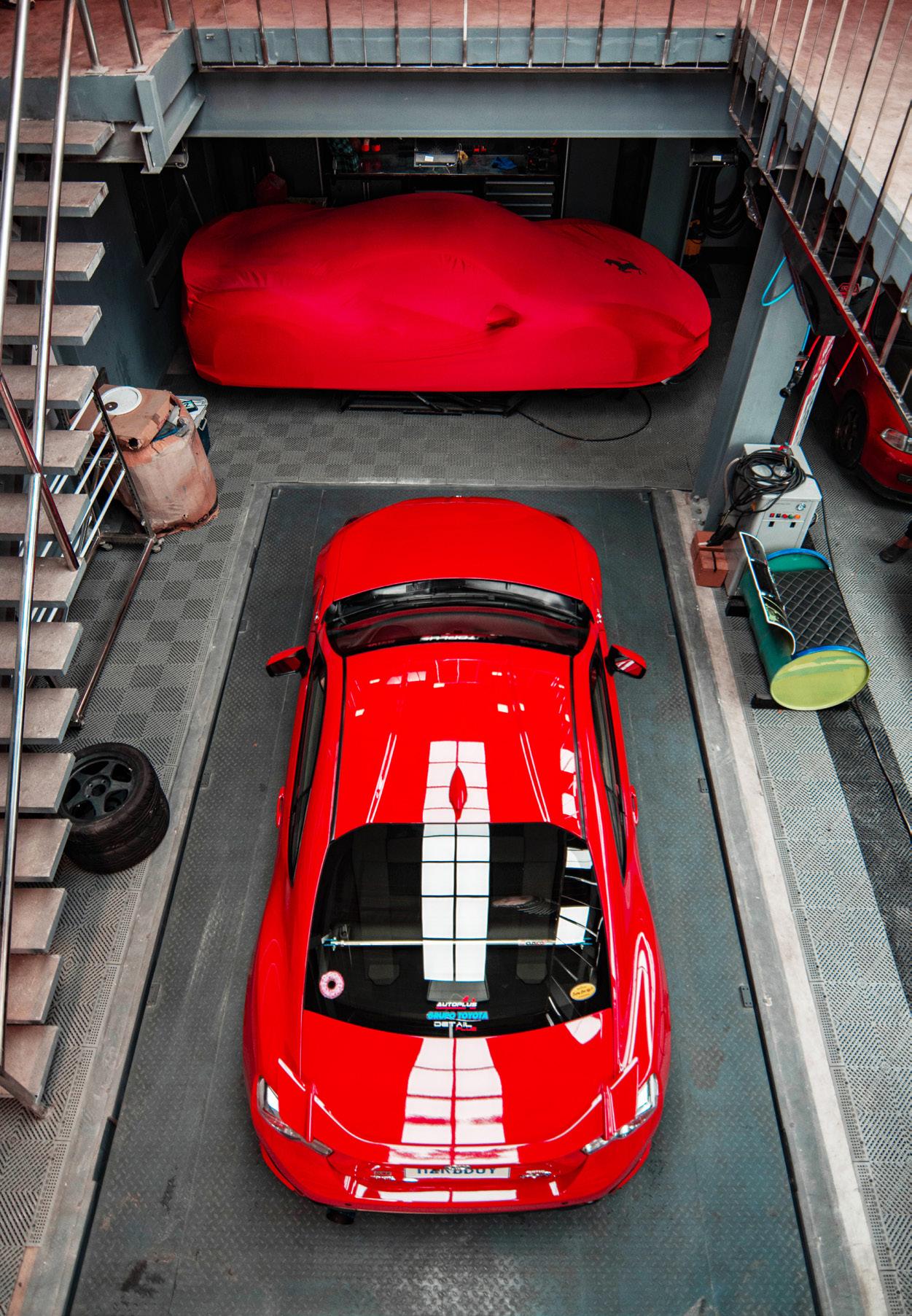

“The serious and lengthy selection of aftermarket parts on this 86 coupe are all wellthought of and requires solid commitment.”

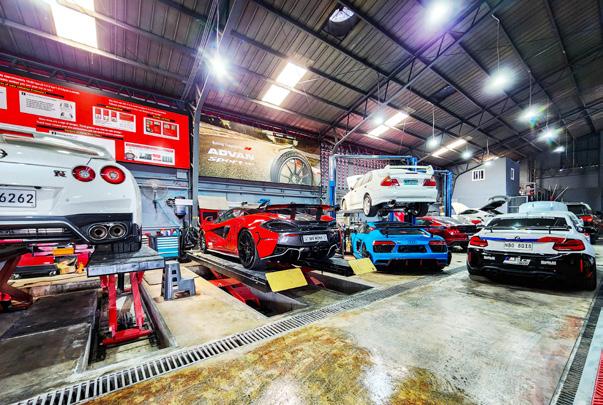
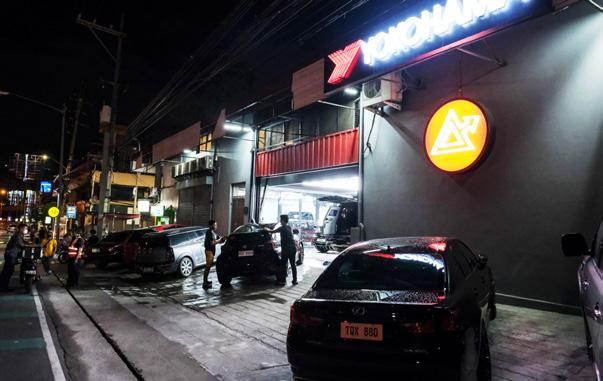

It’s an appalling thing these tragic accidents that happen on our favorite riding destination.
Marcos Highway, A. K. A. Marikina Rizal Laguna Quezon Road, A. K. A. MARILAQUE, for all intents and purposes is truly a road to behold. Its scenic views, smoothly paved tarmac, challenging variety of corners and cool climate leaves nothing to be desired.
MARILAQUE was a safe haven and riding paradise for those of us who started their love affair with the motorcycle a while back.
During the pandemic, a phenomenal surge in motorcycle sales stemming from the need to get around without dependency on public transportation, a surplus of un-utilized travel funds and time to kill paired with the wide variety and availability of makes and models at every price point filled our streets with new riders on fast and powerful motorcycles.
This was such a welcome boost to the motorcycle community drumming up the market for new brands of gear and machinery. Sadly, it came at a cost. Moto-vlogging was suddenly the hot trend with new motovloggers trying to capture the latest viral videos aspiring to be the next internet superstar.
Suddenly, our beloved mountain road was being crowded with this circus of new riders getting into accidents or causing them by their ambitions outweighing their talents and moto-vloggers or content creators hanging out at every corner waiting to capture these unfortunate circumstances for posts online.
While I appreciate the photographers that hone their skills by taking pictures of motorcyclists enjoying the road and their bikes, some riders do tend to go beyond their skill level just to ham it up. Some of them go around certain bends several times
making dangerous U-turns that cause even more accidents after they’ve survived going into a corner way over their heads. Don’t get me wrong, I acknowledge that these photographers are doing us a service and a favor by taking beautiful shots of us on the go. I remember the days when we literally had to screen shoot stills from our action cam footage just to get crappy photos of our riding not to mention the rides that we were not able to document before the advent of action cams. Due to the rise of the number of accidents in MARILAQUE, people have started to call the route the most dangerous road of all. Law enforcement is now regularly there to police anyone hanging off or dragging knee through a corner. (Side note: “Hanging off” is part of correct body positioning when taking a corner. Its purpose is to decrease the bike’s lean angle while cornering, a technique that makes the act safer. Dragging knee is not a crime, it is simply a result of correct body positioning. I do not understand why the police are fining riders for doing so when the act is universally known to be the result of the proper way of cornering a motorcycle. The police can fine
us for going over the speed limit or crossing over double solid yellow lines but not for using the correct riding technique for a safer ride.)
“Content creators” now flock to the curb side awaiting their latest accident video.
Let us remember that MARILAQUE is just a road. Left by itself it will have zero accidents happen on it. It is always the rider or riders who are responsible for their fates. No, it’s not the photographers nor vloggers either. They’re just there to document. It is every rider’s responsibility to ride sensibly. Do not ride beyond your limits, not on public roads at least. Photos are great but be courteous to other road users, do not go around in circles trying to pose on one corner when there are hundreds to be enjoyed.
Most importantly, develop your skill and practice in the track. If you enjoy performance riding, then you should invest in a good riding school like Zero to Podium, Mel Aquino’s Yamaha Off-Road Training Camp or Watanabe Racing Development so you can have the proper know-how and techniques to be a safe rider.
You can’t be a safe rider without having practiced the fundamentals of riding inside a safe environment. You should have some level of mastery of the riding skillset before you unleash yourself on MARILAQUE.
The recent tragic death of a couple riding up there could’ve been easily avoided by just one fundamental steering technique and yet people online keep commenting on the video saying that the mountain is dangerous.
John O. Mendoza WHEEL2WHEEL ASSOCIATE EDITORStop clowning around! Let’s not make MARILAQUE safe again as it is already inherently safe, rather let us keep each and every road user safe by learning the craft that is motorcycling and by being considerate lawabiding riders.



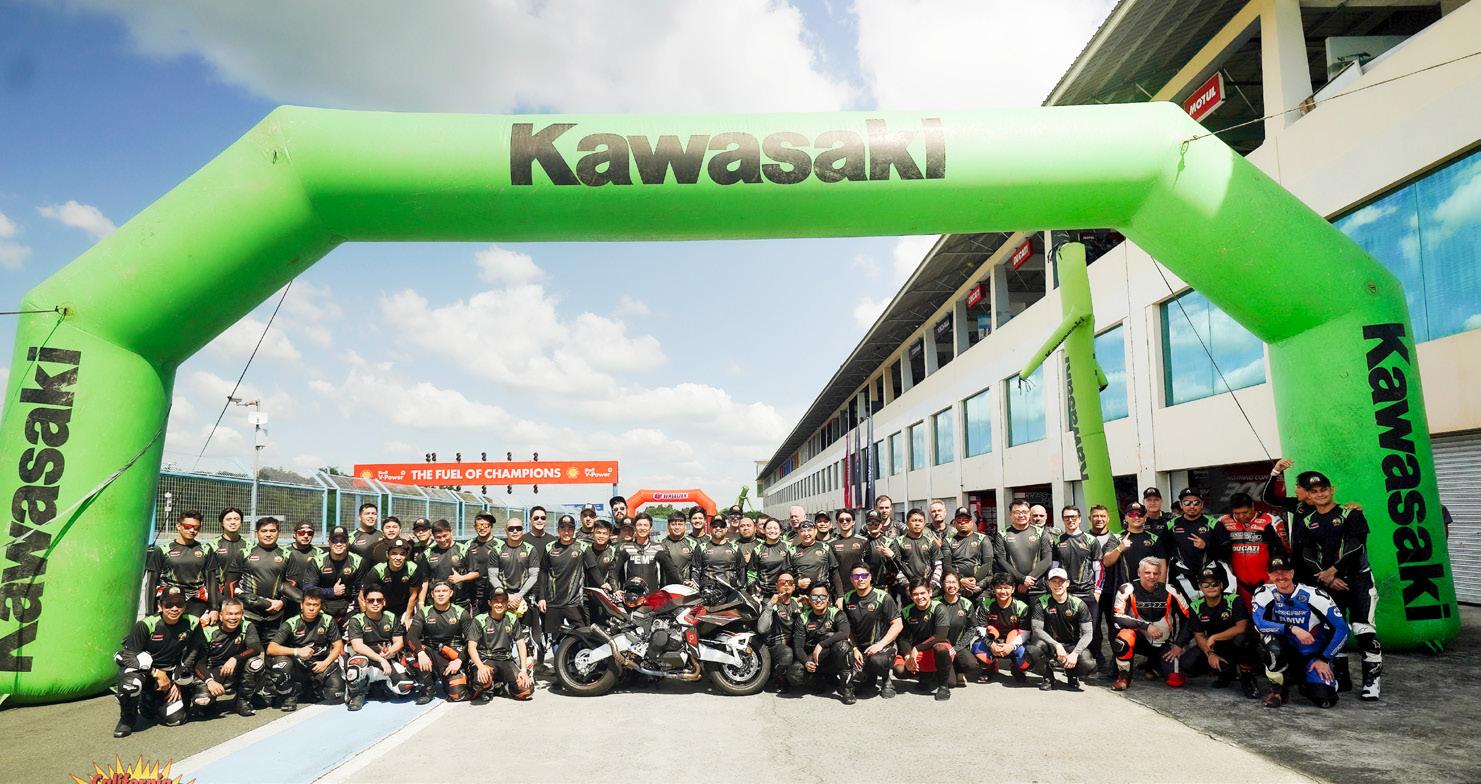
Safer, faster, and more intelligent riding. The art and science of mototcyling in 2 action packed days.
Words: John O. Mendoza Photos: California Superbike School
One of the most important things I consider in my riding life is the development of my skills as a motorcyclist. I find the science and the art of riding genuinely fascinating and make it a point to continually build, develop and sharpen my riding abilities.
Many eons ago, before the advent of YouTube, I would scour the internet for downloadable copies of riding books. The most notable of those I found were Sport Riding Techniques by Nick Ienatsch and Twist of the Wrist I and II by Kieth Code. Now I’ve read and have been practicing what I’ve learned from these books for years to a point where I could confidently say that I had a good grasp of the techniques and concepts laid out within them. Well, that thought got completely shattered once I had a taste of the California Superbike School Philippines back in 2016. Back then, I
only had level one and it blew my mind how much more I learned from the actual school compared to just reading the books.
Some of the stuff I learned then felt like an epiphany. It was a dark cloud opening up to a warm ray of sunshine moment for me. I was shocked at how some of the things I thought I knew and practiced turned out to be something I wasn’t doing correctly. My riding which some considered to be good was drastically improved to a point where I can personally say that it wasn’t up to snuff at all.
Fast forward to 2022, it was finally time to go back to school and I was hoping to take levels 2 and 3 as I already had level 1 years ago. As luck would have it, levels 1 and 3 happen on the 1st day and levels 2 and 4 on the last so it wasn’t possible as they wouldn’t allow anyone to take a level without having passed the course below.
I was thinking “what the hey,” it’s been years anyway, might as well retake level one to refresh everything then finally move on to level 2 the next day. I was surprised at how much of the techniques I learned back in 2016 I wasn’t consciously practicing. Though I was doing them subconsciously, I wasn’t applying enough of some of the techniques to utilize them to their maximum effectiveness.
The personalized coaching from our instructors from the UK, USA and Australia makes all the difference. Even minute adjustments to my application of the lessons made a huge improvement in my riding.
Come to the last 2 sessions of level 2, I was lapping noticeably faster and was hitting apexes with sniper-like precision tracing lines ever so consistently. Because of the nature of my profession, I ride all sorts of motorcycles from cruisers to sportbikes, scooters to underbones, and everything else in between. The lessons from CSS don’t only apply to superbikes, mind you, rather it applies to all no matter what type of bike you ride. Yes, even to cruisers.
The friendships you build and acquaintances you make during the time you spend in school make the experience even more special. You get to mingle with well-known personalities and may even strike up a personal relationship with some. I’m super glad to have met new people during my time at CSS, especially the kids who were younger than my own son and some his age as they surely will be properly trained and capable safe riders I may one day be riding out with in the real world.
To some, the tuition fee for California Superbike School Philippines may seem too steep. The reality is that it is but a small amount to pay for something so valuable it might save your life someday. The skills you acquire from the school will last you a lifetime of safe riding. Riding with full control of any motorcycle will make you enjoy the world of motorcycling to the fullest making every activity so much better whilst giving your loved ones the added assurance of your competence behind the handlebars.
I would like to commend Roscoe Odulio of Wheeltek, JP Tuazon of Tuazon Racing School, Raniel Resuello and Emil Bano of the Euro Monkeys for bringing the California Superbike School to the Philippines for Filipinos to experience and learn from. By doing this, dear sirs, you are making better and safer Filipino riders one level at a time. Cheers!
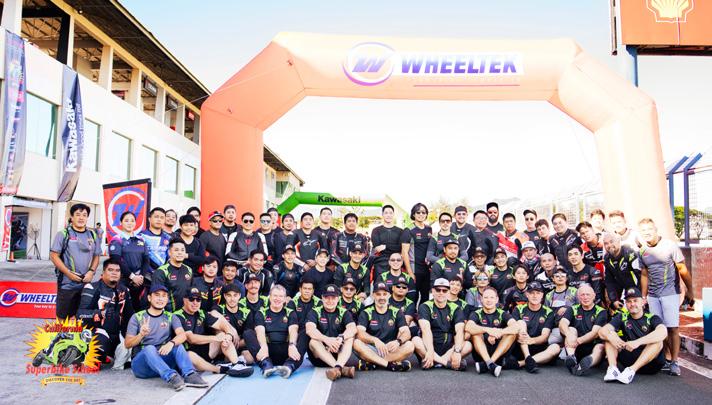

For motorcycle enthusiasts who are of my age, Bimota is legendary. Bikes that I would imagine to own in my teens sometime in the late 70’s. They had stunning expensive billet aluminum components, one of a kind chassis of the era, and of course, an unattainable price tag for a teenager like me at that time. If I remember correctly, I once saw a Bimota parked in front of a popular Makati club sometime in the mid eighties. The bike was owned by the son of a famous politician back then. My jaw dropped as I was stunned by the look and overall design of that Bimota. I was 22yrs old then.
Bimota used the name Tesi, which in Italian means "thesis." That name reflects the fact that this bike was originally designed as a thesis by an Italian engineering student Pierluigi Marconi, who was interested in hubcentered steering so he could earn the mechanical engineering degree he was pursuing. He eventually got his degree and went on to implemented the design in the first Bimota Tesi in 1990. Fast forward some 30 years and the Front Hub steered bike has been perfected and hailed as an engineering marvel. Though Yamaha followed with their own front hub steered sport touring GTS1000 in 1993 and discontinued in 1999.
So when Kawasaki Heavy Industries, Japan purchased 49% of Bimota in 2019, I believed that partnership would revive this old Italian company. As Bimota for a time went bankrupt and
closed its doors due to the introduction of a motorcycle with its own Bimota engine called the V-Due. It had a lot of fuel injection issues and didn’t sell well.


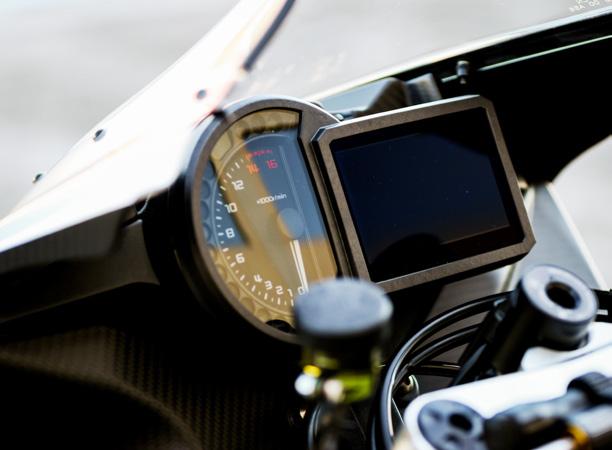
About 360 units were built and Bimota owed a great deal of money due to that venture. Building their own engines didn’t work out hence the company’s closure in the early 2000’s.
Their forte really comes with the use of Japanese and Italian motors with wiring harnesses supplied by the respective manufacturers. These were far better bikes in terms of performance and weight than the Japanese and Italian counterparts. Their lighter chassis design, high quality components and beautiful looks were what they were
known for and that brought Bimota to Iconic Premium brand status at that time. I was awed by their design when I was in my early twenties.
Now Kawasaki and Bimota have combined forces to bring to the industry top-of-the-horsepower chain with the Kawasaki’s Supercharged 998cc H2-derived engine mated with an Italian chassis and design ingenuity.
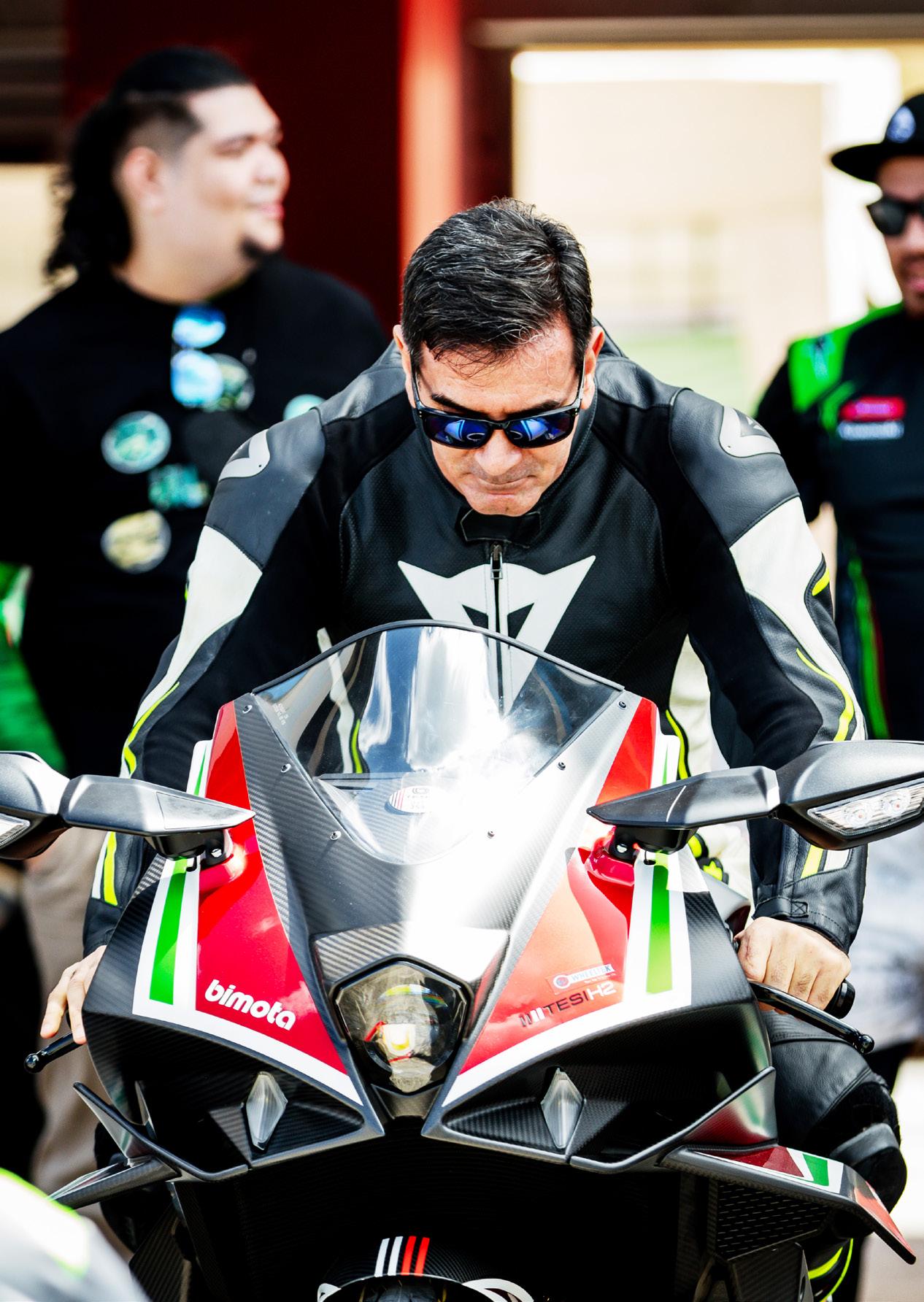
Bimota's Tesi H2 is an absolute dream for any motorcycle enthusiast with its unique and captivating design. Bimota's distinctive layout can be attributed to its unconventional Tesi front-hub steering and front suspension as you see in the photos.
I remember reading way back in the
early 90's about the first Bimota that came out with a hub centered steering front end was powered by a Ducati 851. So this is not a new design or concept. Bimota had this design engineered way back 4 decades ago. Nothing new to Bimota. So when Kawasaki sent out a press release announcing that they has backed "Bimota's revival" making 250 units of an updated Tesi, but this time with a power output far higher than previous Bimotas (in the past, Bimota engines barely made it past 150hp), I was elated.
Most engines supplied were all low HP and Naturally Aspirated variants. This generation of the Tesi comes with an engine that can match the striking appearance. Bimota states that the Kawasaki H2 derived supercharged Godzilla 998cc motor supplied can produce 240 horsepower, thanks to a ram-air intake.
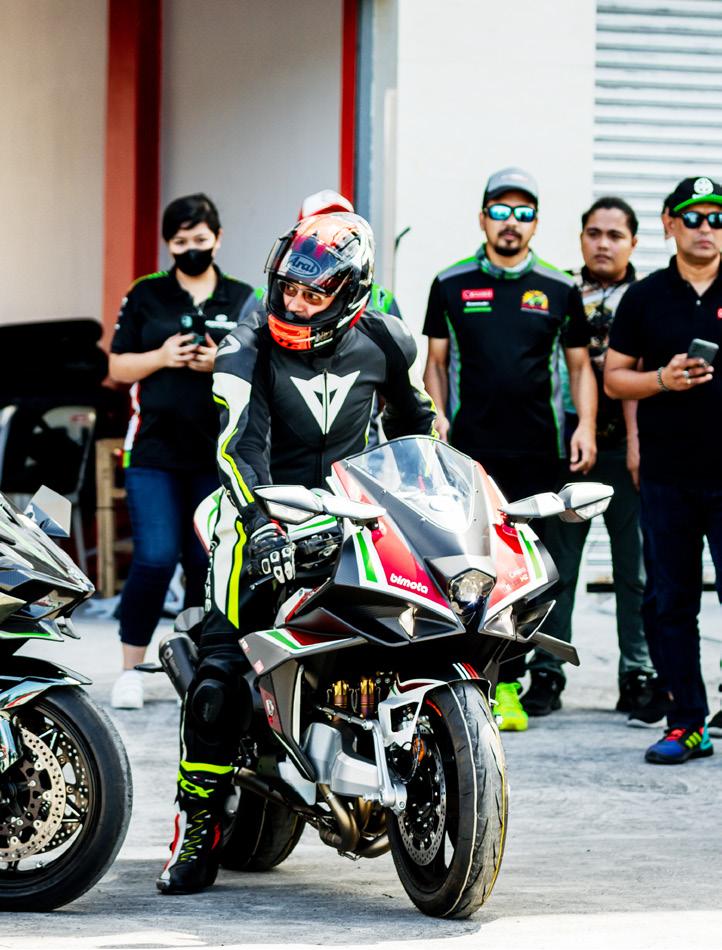
When I tested this Bimota Tesi H2 around the Clark International Speedway, I was stunned by how demonically fast this bike picks up speed like no other bike in its class. Thank God for life saving electronic rider aids. This is certainly not for the faint-hearted novice rider. At first, I had to do 3 laps to scrub-in the brake pads and tires in order to get the initial braking power needed to slow this beautifully designed and ultra expensive motorcycle from warp speeds in the test laps to come. The bike was brand new with almost zero kilometers on it when I tested it. In short, I was the first person in the Philippines to test this bike. So I had to make sure all was in check before heading out to the track. I had them adjust the angle of the shift and the handlebar levers as well.

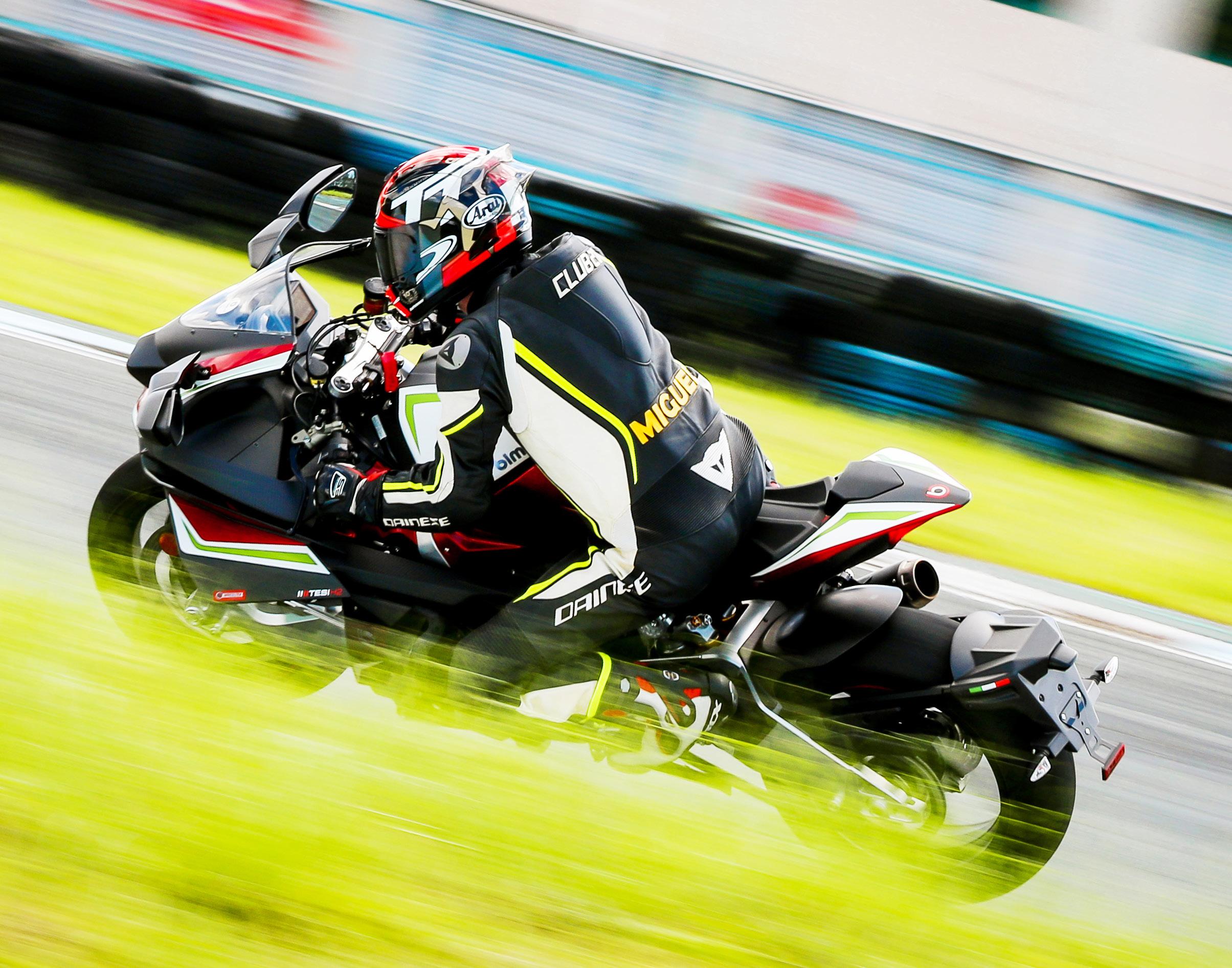
So while the Kawasaki Mechanics were doing all the adjustments per my request, I was meticulously inspecting each component of the bike.
The Tesi H2 can be described as a top-of-the-line motorcycle from top to bottom. With hand-painted carbon fiber bodywork all around, this exquisite material is extensively used in every bit of the Tesi H2, including two extensive wings on each side of the front cowl and Supercharger intake and runner. It's built on an advanced aluminum chassis and features the
▼
rear, and front swingarms that are CNC-machined from billet aluminum, Brembo brakes, and 17" forged wheels. According to Bimota, this weighs lighter than the bike it was based on: the standard Ninja H2.
The Tesi H2 is 472 lbs dry and is 53 lbs lighter than a Ninja H2. Now this is what got me - The suspension! As you feast your eyes on the rear suspension, the rear gets not one but two electronically adjustable Ohlins shock units. It’s strange at first to see two rear shocks side by side just inches apart. Well I found out that one rear shock is mated to the front hub steered suspension arm and the other to the rear wheel’s swingarm. Strange design
but it works excellently. The brakes are top shelf 4 piston Brembo Stylema calipers. The same brakes also used on my personal Super Naked bike. Another strange aspect is how the Brembo calipers are covered in the front fender giving it that clean aerodynamic look.
The next striking feature is the massive aluminum front swingarm, which has hub-center steering activated through Heim joints. While earlier Tesi models featured HubSteering, which was created in-house by Bimota, the one featured for Tesi H2 is a new and updated design. The Tesi H2 is an entirely new breakthrough, pushing boundaries while taking on corners and braking capabilities with
full force. The front suspension has a more compact layout and keeps brake forces away from the front suspension. Taking the bike out on track didn’t give me the feeling of isolation with the front end feedback, as in the beginning, I was reluctant to believe a hub steered bike would steer just as good as a regular upside down fork equipped superbike. As you have many heim and moving joints that may take the feel away. Surprisingly, I could feel what the bike was doing and it steered wherever I pointed with pinpoint accuracy. I was impressed by the steering and feedback it was giving me while braking, taking fast corners and accelerating hard off the corners. A true marvel of engineering I must say.

Though I was hoping to see a single swingarm just like the standard Kawasaki H2’s. But from a singlesided swingarm, Bimota went for a conventional type and a massive one at that. I was also expecting to see the enormous dual-canister exhaust of the Ninja H2 but this particular Tesi H2 had a full titanium Arrow exhaust in place. She sounded so good at high revs as the forced induced 998cc motor would make it scream at a much higher pitch than conventional normally aspirated motors. Overall, I was literally blown away by the performance this Bimota Tesi H2 delivers. Handling is excellent. The bike did everything I asked of her and she did it so well. I was very impressed. Combining Japanese and Italian engineering at its highest form.
Also missing though, is Kawasaki's iconic trellis frame seen on all H2’s which is replaced with what seem to be a beam frame taking its place. I did expect the same kind of electronic wizardry in this model like in the Kawi H2, which includes the latest 6-axis IMU ABS traction control, quick-shifter, auto-blipper, and 3-step launch control. The final and the oddest part of the bike that I like are the tiny front-mounted DRL light fixtures
between the fairing. They really look like vampire fangs that are hanging out of the fairing. Signal light indicators are mounted on the wing mirrors on this latest machine. If this bike was all blacked out, this is what Batman should be using in his next film.

Apart from the fact that this is such a beautiful machine, it also offers exclusivity. Bimota has only put just a few of the new bikes on the market, and only 250 of them will likely be made for the initial batch of bikes, with prices set at around PhP 4.950M.

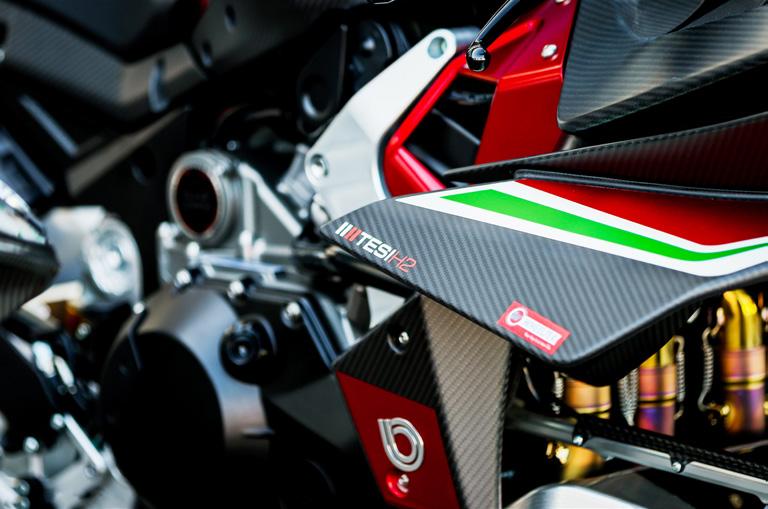
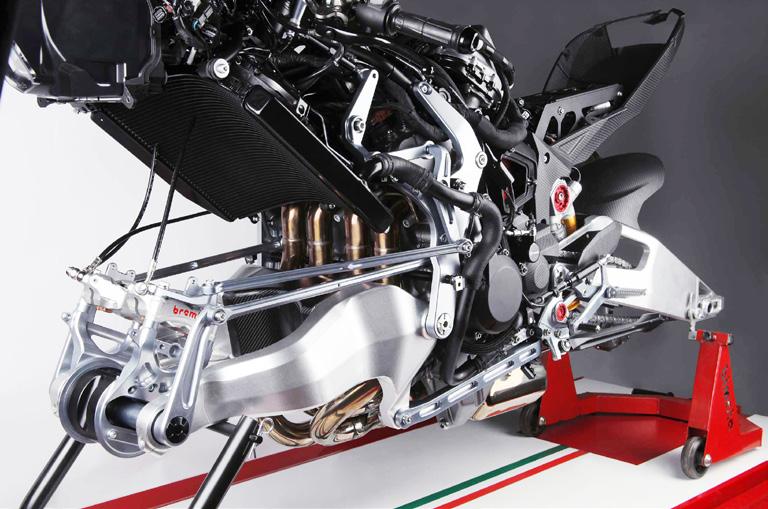
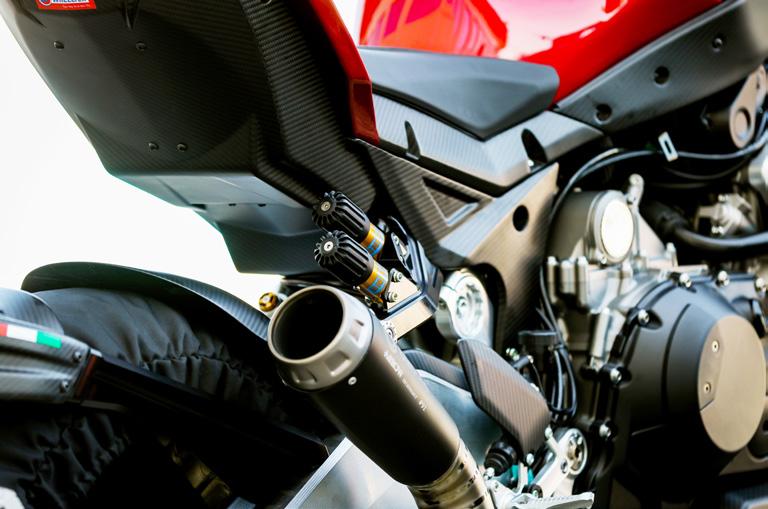
You want exclusivity on the road or while sipping coffee in a café, this is the bike to buy. This is one bike a true sportbike enthusiast should invest in. It’s worth every centavo. Now, time to go to the bank and make a loan. Hmmmm or do they have inhouse financing? I better head to the Bimota dealer and ask. Or should I inform the wife first?
Exotic Italian chassis design combined with dependable Japanese power and technology. Ultra-exclusive, otherworldly power and rarity. Minus The price.

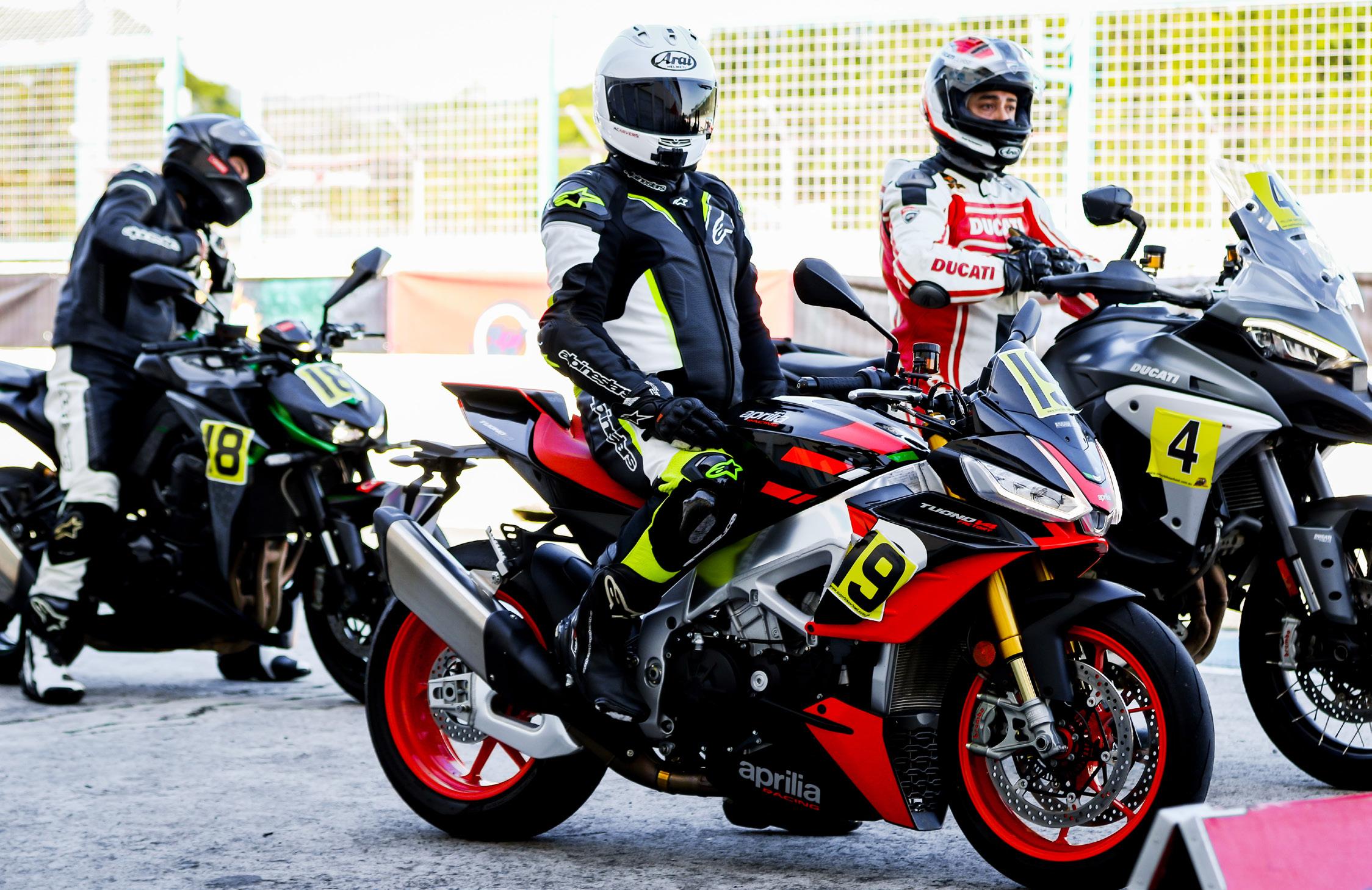 Words: John O. Mendoza Photos: Norbert Poquiz (CIS), Darwin Zialcita (CIS/ CSS Official) and Marlon Biscocho (On Road)
Words: John O. Mendoza Photos: Norbert Poquiz (CIS), Darwin Zialcita (CIS/ CSS Official) and Marlon Biscocho (On Road)
My love affair with the brand Aprilia began when I owned an RSV 1000 Mille R in the early 2010s. That bike was already almost a decade old back then. I chose between that and a 2006 Yamaha YZF-R6. Having had one problematic euro motorcycle prior, made me lean towards the Japanese bike more. Having said that, the deciding factor boiled down to an article in my favorite publication Fast Bikes magazine. The article featured the Aprilia RSV 1000 Mille R in contrast to a Honda CBR929RR Fireblade. The article opened my eyes to how far superior Aprilia’s chassis building know-
how is as compared to other brands. Even today, Bike World revisited the Mille R and had this to say: “it feels like a 250cc GP racer on steroids.”
See back then, I wasn’t convinced outright. The Mille R looked huge, heavy, and cumbersome. Although it was dripping in exotica bling such as Ohlins suspension, OZ forged wheels and carbon fiber panels, the horrors of my previous euro bike experience were still fresh. So I contacted Rootsy of Fast Bikes magazine since he was the author of the article and let him know of my dilemma. Rootsy assured me that the Aprilia RSV 1000 Mille R is the more rewarding bike. I then closed my eyes and pulled the trigger on the Mille R.
Rootsy was right! I was so happy with the bike even though it looked too big for me. The Mille R’s weight magically disappears once you get going. On the track, it felt like a small 600 with huge power despite its heft.
After years of happy ownership, time caught up with me. I wasn’t doing that many track days anymore and was on more mountain-carving escapades getting stuck in traffic on the way home. The low clip-on bars were killing my wrists and breaking my back. I wished I could convert it to a Tuono since the only difference was the bars. The decision to sell it was made when I low-sided at Clark International Speedway on a track day. As much as I loved that bike, I had to let it go and find something more comfortable and better suited to carving up mountain roads instead of a full-on track weapon.
Fast forward to 2022, Biker Box let me take home the latest Aprilia Tuono V4 Factory. Like my old Mille R, it was dripping in exotic bling. Semi-active Ohlins TTX rear shock and Ohlins NIX front fork keep the tires in contact with the road surface while soaking up imperfections adjusting itself to better suit every riding situation, and
The Sublime Italian Thoroughbred Bike Review

a Magneti Marelli throttle body, rideby-wire system and ECU to manage all inputs and fueling.
For those who aren’t “in the know,” Magneti Marelli is the same system they run on MotoGP and World Superbike machines. It is the best of the best. Ohlins suspension is also in the same league.
The electronics package is extensive with the APRC (Aprilia Performance Ride Control) handling Traction Control, Wheelie Control, Launch Control, Quick Shifter, Pit Lane Limiter, Cruise Control, and Multilevel Engine Brake Control. All these parameters are easily accessible mainly on the left-hand switchgear and displayed on the full TFT color dash.
The Tuono V4 Factory is pretty much a stripped-down version of the Aprilia RSV 4. The two main differences aside
from the fairings and upright bars are the engine displacement being sleeved down on the Tuono to 1077cc from 1099cc bringing the power down to a more manageable 175 horsepower from 217 and the Brembo M50 front calipers in place of the Stylemas on the RSV4.
Now I’ve ridden the RSV4 in Batangas Racing Circuit and I must say that for someone who has no intention of racing and keeping it as a dedicated track bike, it can be a bit of a handful to live with if you have to go through city traffic and long rides.


The Tuono V4 Factory’s lower power is easier to manage and the riding position is more comfortable. Aggressive for something with standard bars but way more relaxed than the clip-ons on the RSV.
So I brought the Tuono with me to Clark International Speedway to serve
▼ It's so hard to contain that silly grin on my face because of how well the Tuono performs.
as my steed in California Superbike School Philippines. I hauled it in my van so I had no experience riding it prior to those two days at the track.
Having owned an Aprilia before, it came as no surprise to me that I would get along with it right from the get-go. As soon as I swung a leg over, I knew I was home. I was so comfortable and confident on it that I was dragging knee on the first outing without even fiddling around with the power and suspension settings. That 65-degree V4 engine delivers power so smoothly with a flat spread all throughout the rev range. That unmistakable V4 growl and induction noise made me feel like a hero, egging me to keep the throttle pinned on the straights. I was feeling Moto GP gunning it every chance I got just letting the electronic nannies save my butt as I saw the traction control light flickering on the dash.
For the more technically savvy of you, you’re probably wondering why Aprilia went with a 65-degree V instead of the more naturally balanced 90-degree configuration. Well, Aprilia’s forte is chassis design. Much like my old Mille R which had a 60-degree V Rotax twin, they did that to make the engine more compact to better position it in the chassis as well as to enable them to have more leeway with chassis geometry. I must say that this really makes the Tuono super compact without feeling cramped. The chassis just feels like a ball smoothly rolling from side to side under me. It is agile with telepathic steering with no problems keeping a chosen line and even lets you get away with abrupt adjustments mid-corner. It’s so easy to handle and steer even though it feels like it has the power to melt my face on the straights while being rock-solid stable. Front and rear ends both give great feedback letting you feel every interaction between the road and the tires giving the rider a huge confidence boost.
The M50 calipers are more than capable of stopping the bike from high speeds with good feel and a strong initial bite without the ABS intruding so much. It didn’t leave me wishing they were the higher-spec Stylemas which is a good thing because I know how much
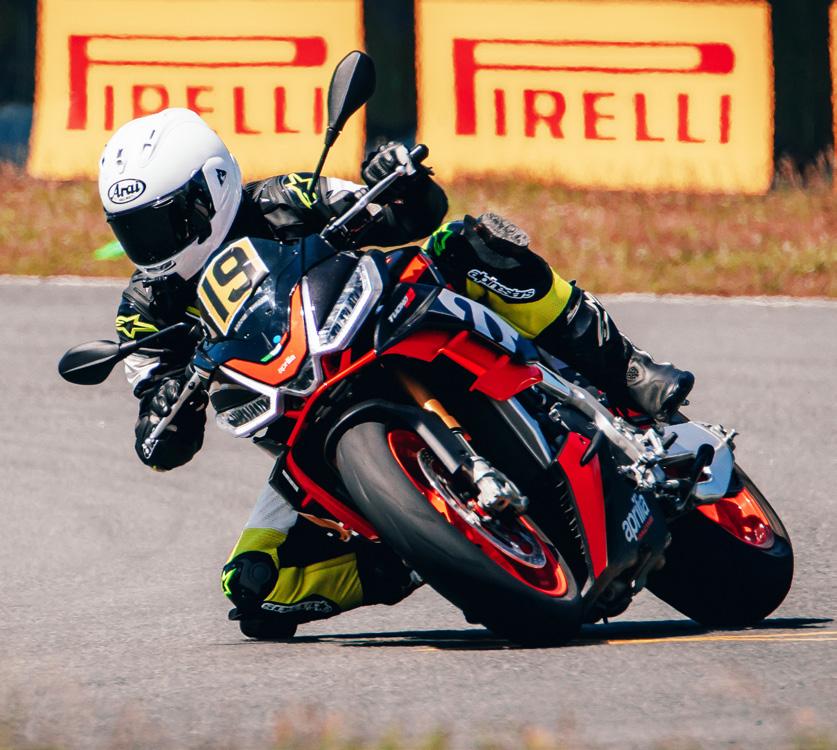
more expensive the Stylema brake pads are compared to the M50’s.
By the second day of California Superbike School, I was hitting apexes with sniper-like precision and consistency. That was due to the lessons I learned from the school and to the Tuono’s scalpel-like sharpness on the corners.


Of course, I wouldn’t end my time with the Tuono without a date up in the mountains. On the road, the bike feels aggressive while managing to be comfortable not only to me but even to my friend who’s about an inch shy of being a 6-footer. I was expecting him to feel cramped judging by the way the Tuono looked but to our surprise, he was really comfortable on it.
The Tuono V4 Factory’s looks are so appealing to me. I mean it may be Italian which we expect to be loud and fashion forward yet to me, the details are just so subtle with smoothflowing lines. There’s nothing there to suggest anything to be an afterthought. Even the winglets are so tastefully incorporated into the front cowl fairing assembly. The livery is so classically Aprilia with the red, black, and silver grey scheme.
With a price tag of PHP 1,560,000, the Aprilia Tuono V4 Factory is unquestionably worth every centavo to me. It would be very hard to find a bike as rewarding as the Tuono V4. Unlike other Italian supermodels, this is one you can expect to get along with your mother while taking care of you at the same time. Yes, I’m in love with it and it is now my new benchmark for a proper track hack roadster.
Plus Sublime handling with a strong characterful engine.
Minus May look too small for tall and large framed riders.
“It's so easy to handle and steer even though it has the power to melt my face on the straights while being rock-solidly stable.”
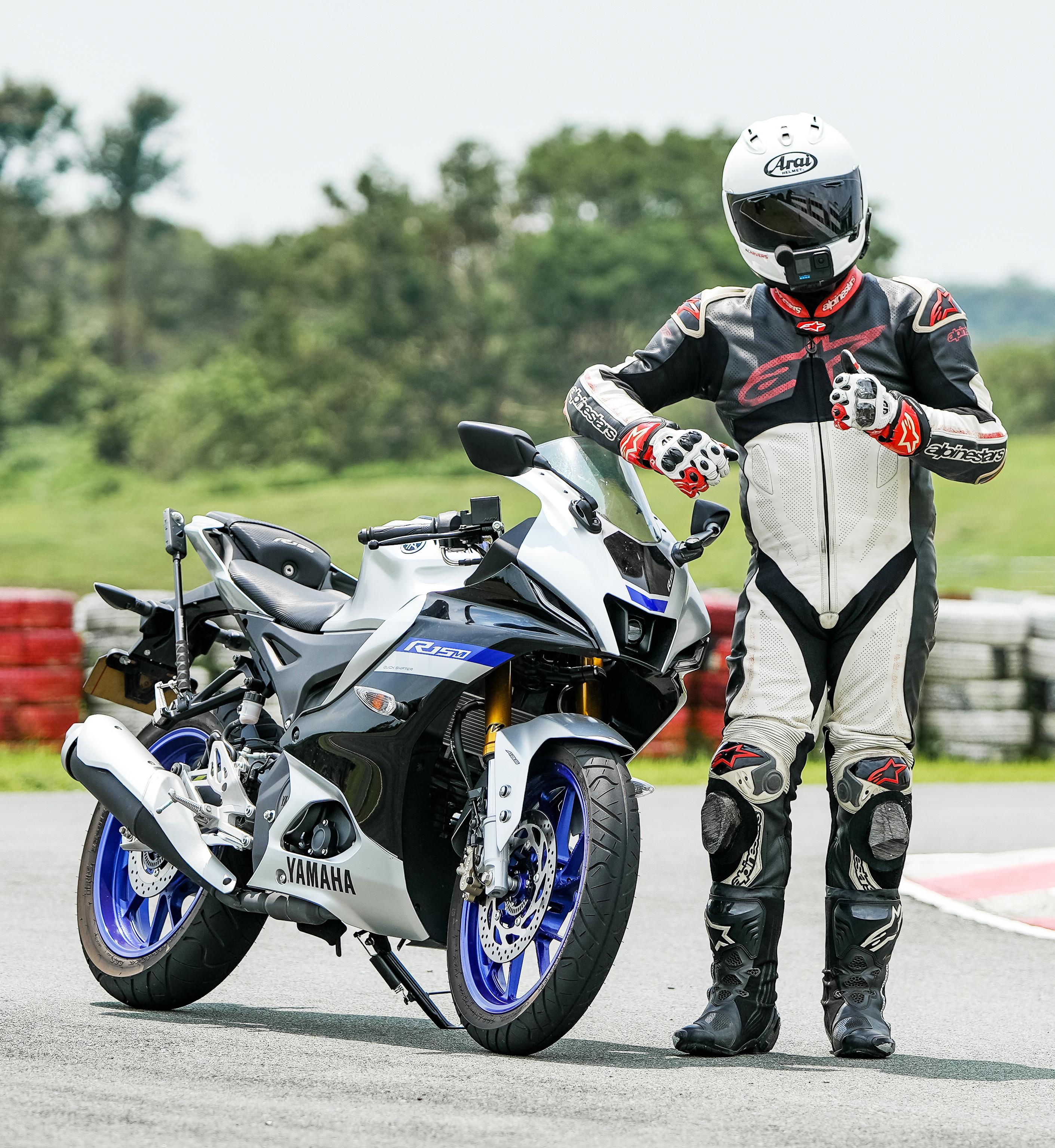
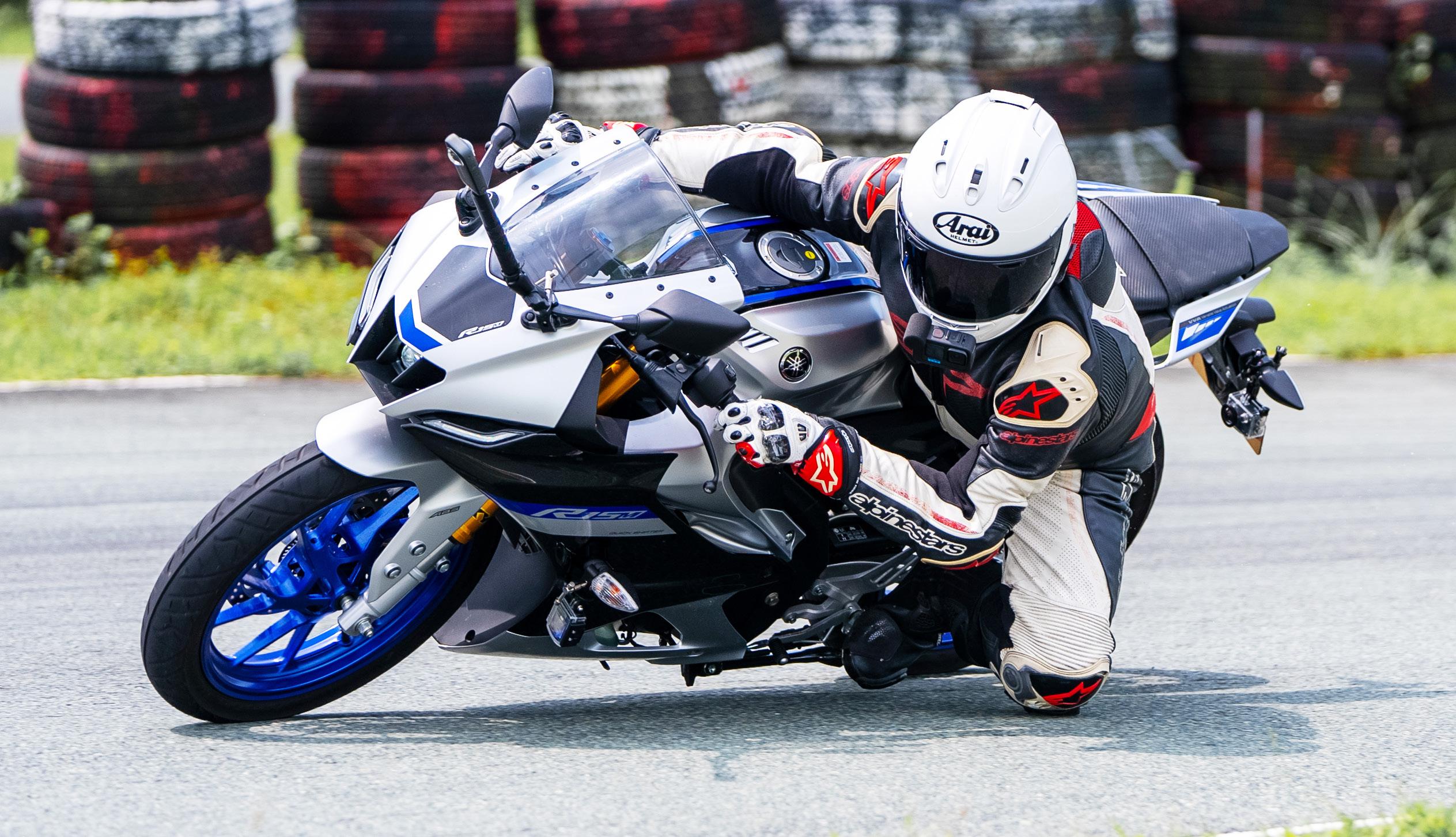 Words: John O. Mendoza Photos: PJ Tavera
Words: John O. Mendoza Photos: PJ Tavera
The Yamaha R15M is the fourth iteration of the R15 series. Now more than ever, the R15M is heavily laden with advanced technologies more commonly found on bigger, more expensive bikes. The major updates to this model are as follows:
Y-connect phone connectivity system that allows the rider to pair a smartphone via Bluetooth and alerts him or her to calls, messages, and emails. The Y-connect feature also allows the user to use his or her phone as a secondary instrument cluster and can record data not to mention indicating service intervals.
A new instrument cluster with 2 display modes, track and street conveniently displays a lap timer for those who want to chase down lap times on the track in track mode and displays coolant temperature, average speed, mileage, and battery power in street mode. Of course, the speedometer, rev counter, and gear position indicators are constantly on display.
The R15M is equipped with a switchable traction control system, an up-only quick shifter, Bybre (By Brembo) front caliper, a slip-and-assist clutch, and styling that trickled down from the R1M.
Also new for the latest generation is the full LED lighting system with
daytime running lights as an added safety feature.

Much like its bigger siblings the Yamaha R1M, R7, and R3, the R15M legitimately inherits Yamaha’s proud racing DNA. Rather than being just another stylized street bike hyped up by marketing mumbo-jumbo pretending to be something it is not, the R15M certifiably wears its racing heritage on its sleeve.
Make no mistake, this is a serious sports bike that delivers the thrills in a small displacement package. Highly capable on both street and track.
On the track, the R15M engine packs a good punch for a 155cc lump. Paired with the standard quick-shifter, acceleration is lively and quick. Vibrations from the variable valve actuated engine is practically negligible and are not particularly noticeable bearing in mind that it is a thumper. Abrupt down-shifts glide smoothly as the slipper clutch lets the basket catch on to the crank speed with just the right amount of friction not to throw you off in case of a miss-shift.
The R15M falls to its ears from side to side with much poise and neutrality.
Once on point, it follows your intended line with no drama allowing for controlled corrections mid-corner.
The suspension and OE tires are adequate for normal track days if you’re only out for a good time and not chasing after lap times. For serious track work, I recommend replacing the rear shock with a fully adjustable aftermarket unit and improving the front with stiffer springs and thicker fork oil for better damping. The brakes could benefit from better pads as it lacks a huge amount of initial bite. The ABS may feel
quite intrusive on the track as well.
On a small track like Tarlac Circuit Hill, the R15M has the potential to be an absolute tool of precision operation carving up corners with pinpoint accuracy making it a perfect training tool for someone who’s looking to get into performance riding without having to break the bank.

It makes so much sense to train with a bike like the R15M. The tires are much cheaper and last longer, the track fees are significantly more affordable (Tarlac Circuit Hill track fee
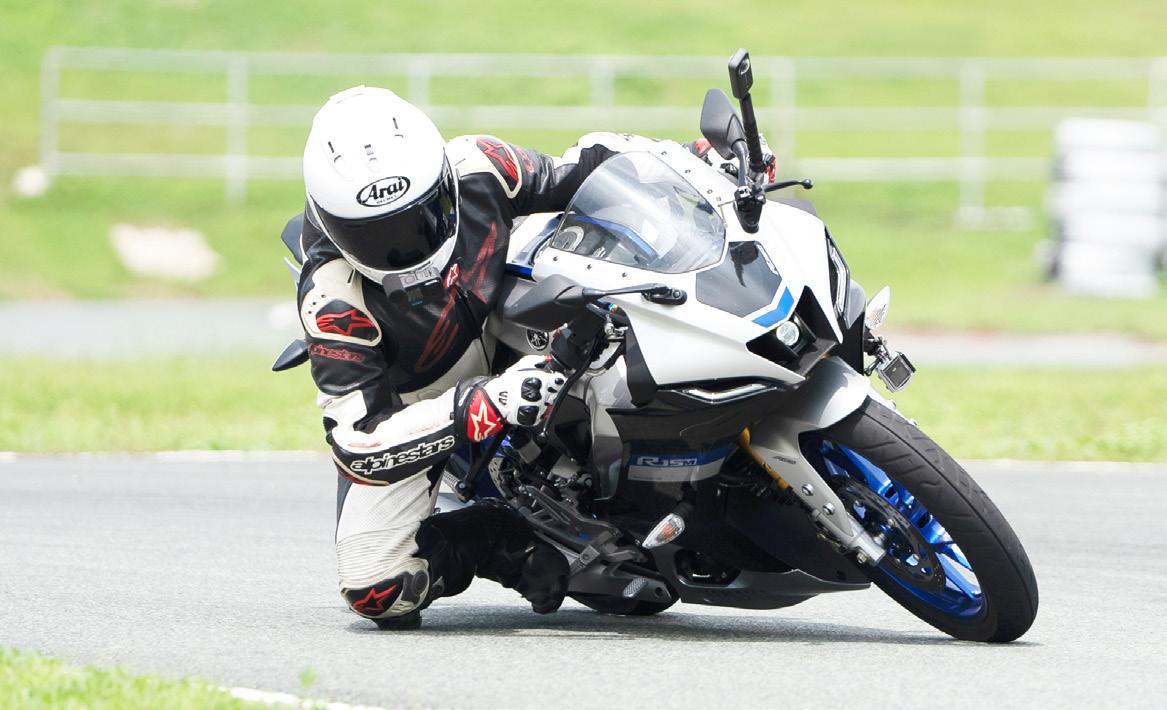
“This is exactly the kind of bike I would salivate over if I were a 17-year-old dreaming of racing superbikes one day.”
is just a thousand bucks as opposed to 3,500 smackers in Clark International Speedway), and parts in case of a spill are also cheaper to replace or fix compared to bigger bikes and the potential for catastrophic injuries are significantly less compared to ultra-fast bikes on bigger tracks.
The riding position is more aggressive than your run-of-the-mill street bike but isn’t so uncomfortable not to do long distances with. It has a nice triangle with a short reach to the bars. The foot peg position is at a good balance for ground clearance and roominess so as not to cramp taller riders.
Veteran riders who’ve owned big displacement motorcycles may find this 155cc sports bike lacking a bit in power but that is simply missing the point. What they wouldn’t be able to deny is the sharp handling and agility of the bike. The R15M will be enjoyed not just by new riders trying to get their start in motorsports, rather it can also be enjoyed by veteran motorcyclists who appreciate a highly capable mini repli-racer for the road.
At PHP 195,000 the Yamaha R15M is a powerful proposition for a serious track learning tool as well as a weekend warrior’s twisty road scalpel.
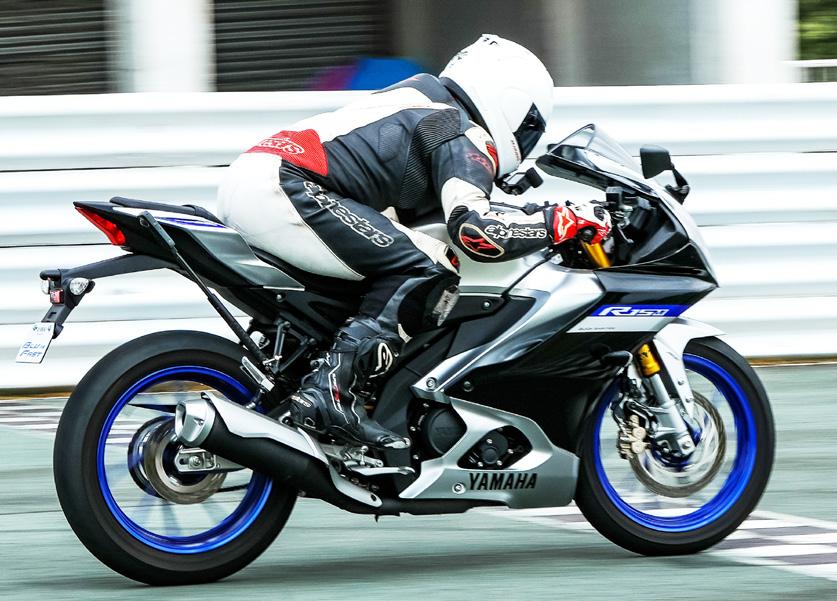

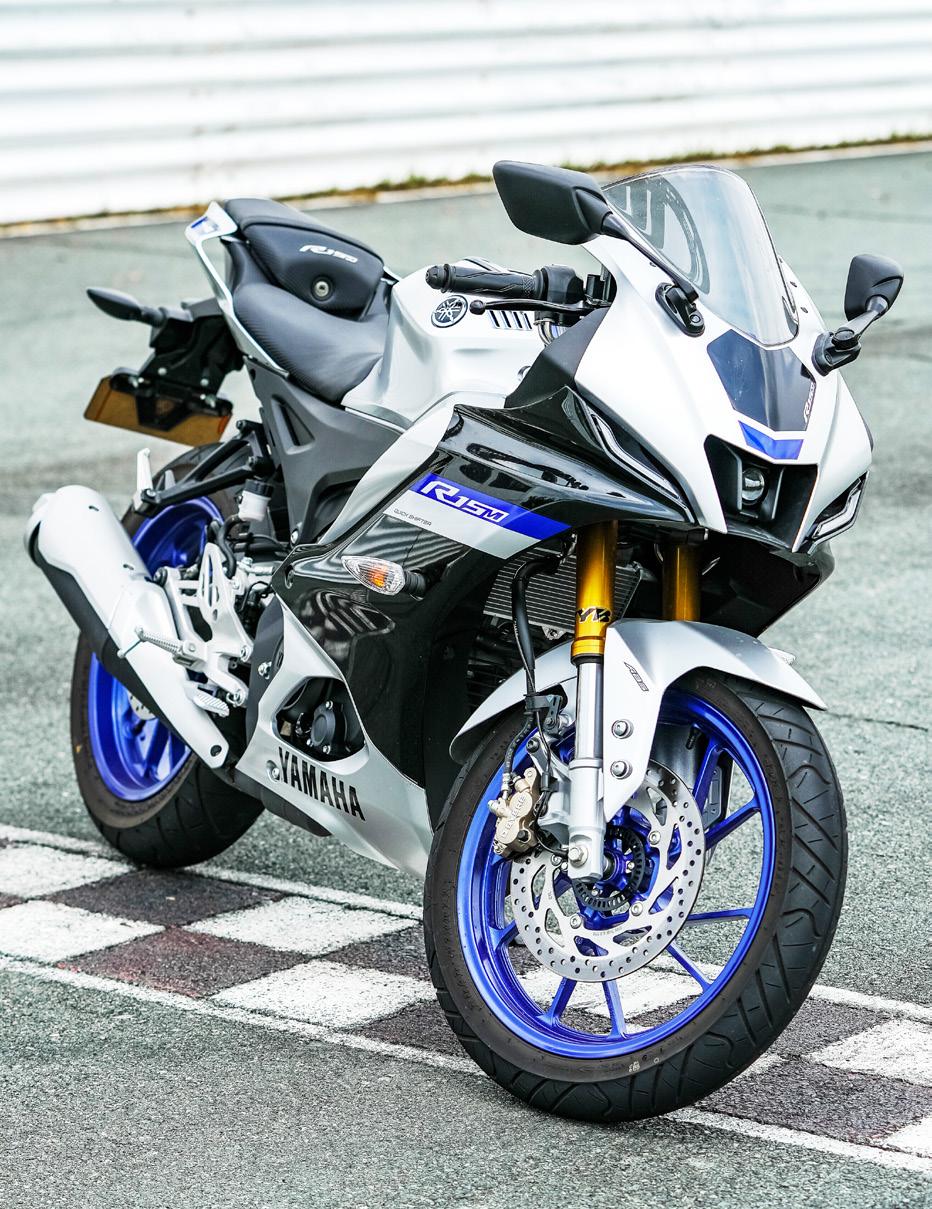

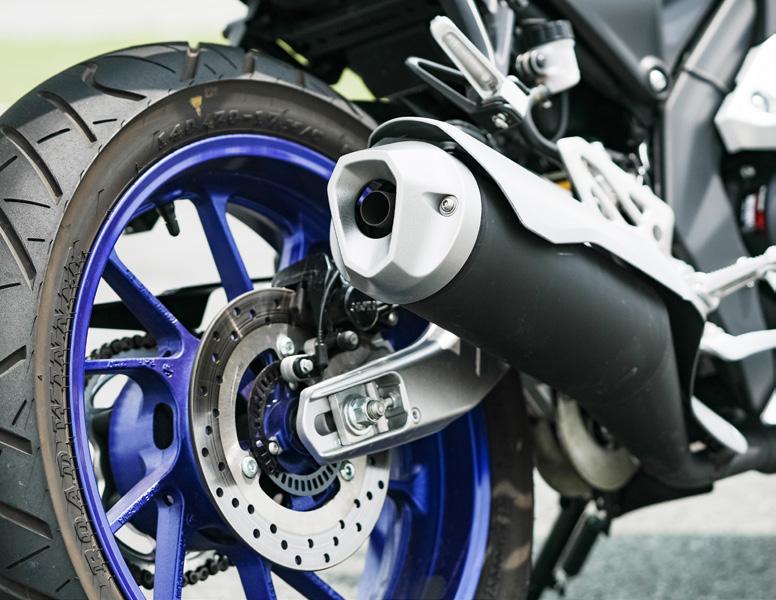


This is exactly the kind of bike I would salivate over if I were a 17-yearold dreaming of racing superbikes one day. I even want one now just to thrash around the small tracks to keep my skills up to scratch.
Plus Feature packed smalldisplacement sportbike with good track manners. Minus Super cheap side mirrors, and suspension shows discomposure if pushed on track.
Share the road. Ride safe. Stay alive. Check your mirror for motorcyclist.

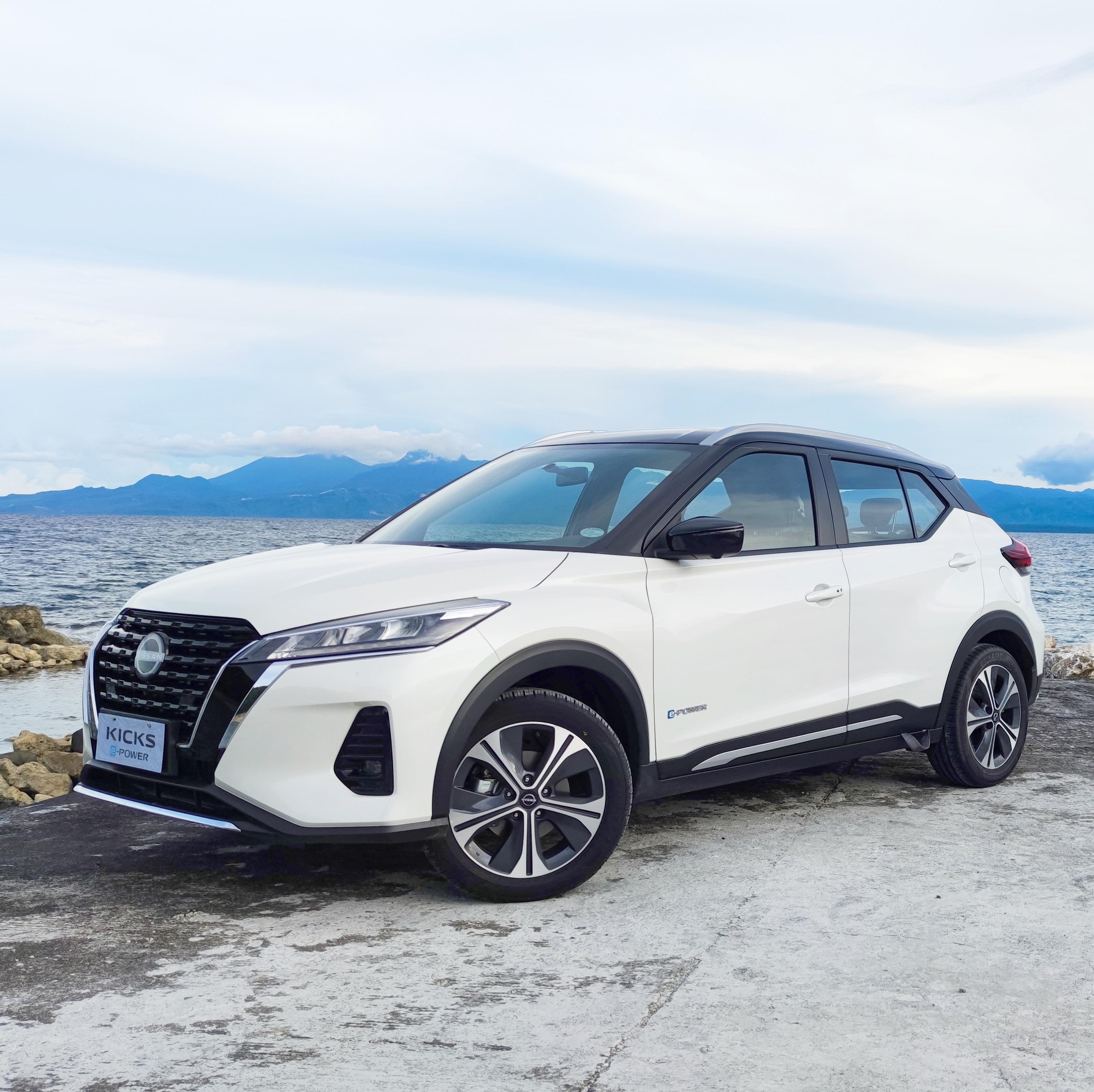
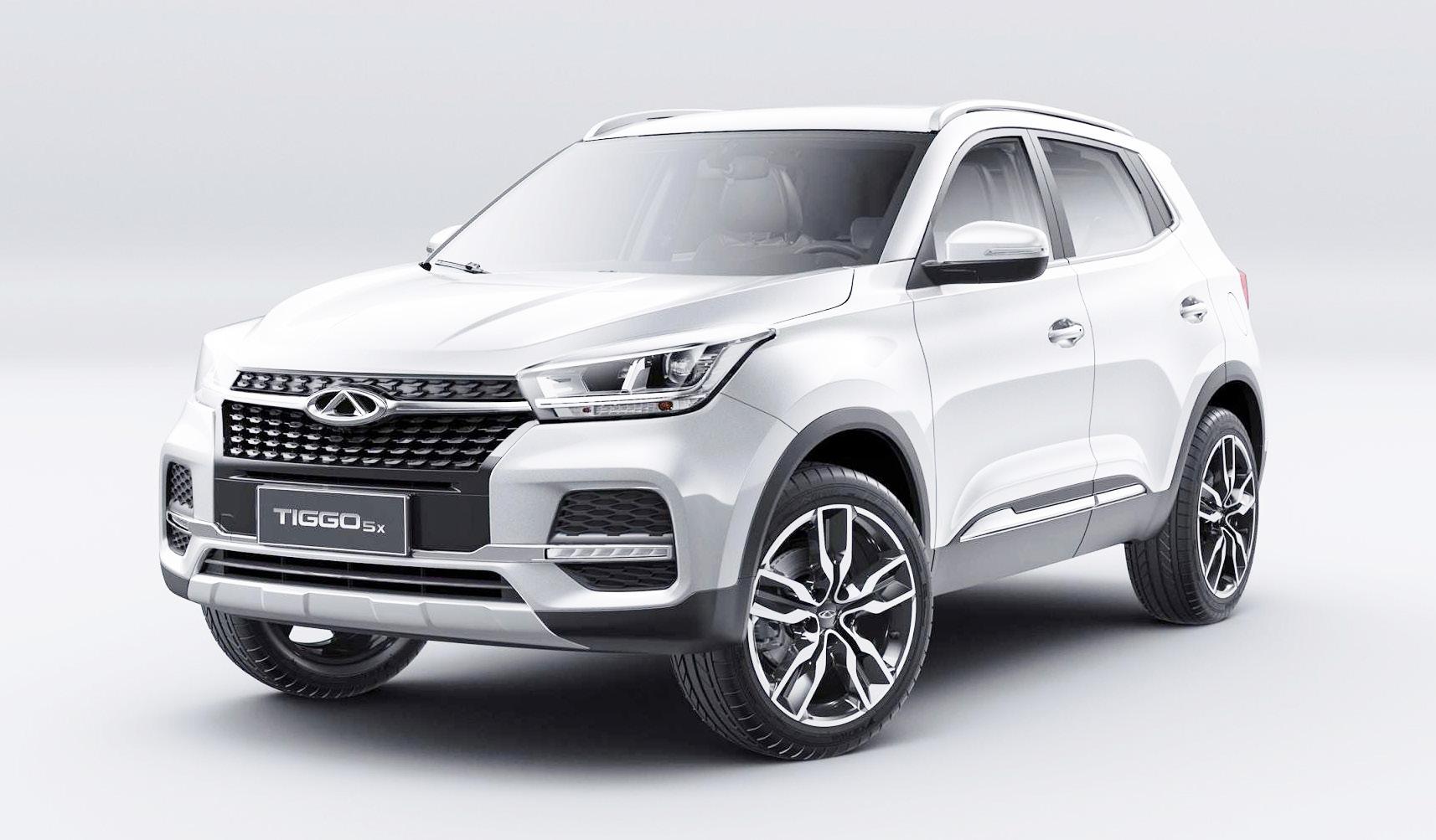
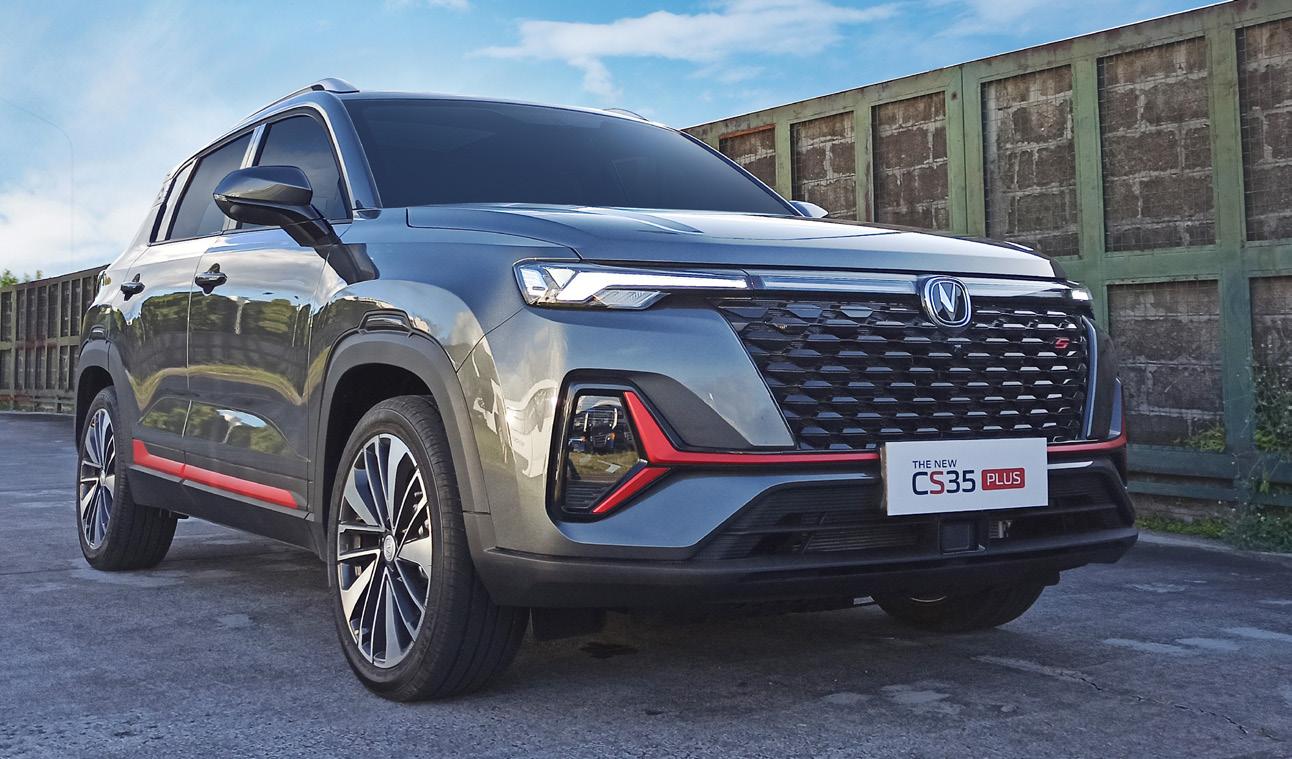
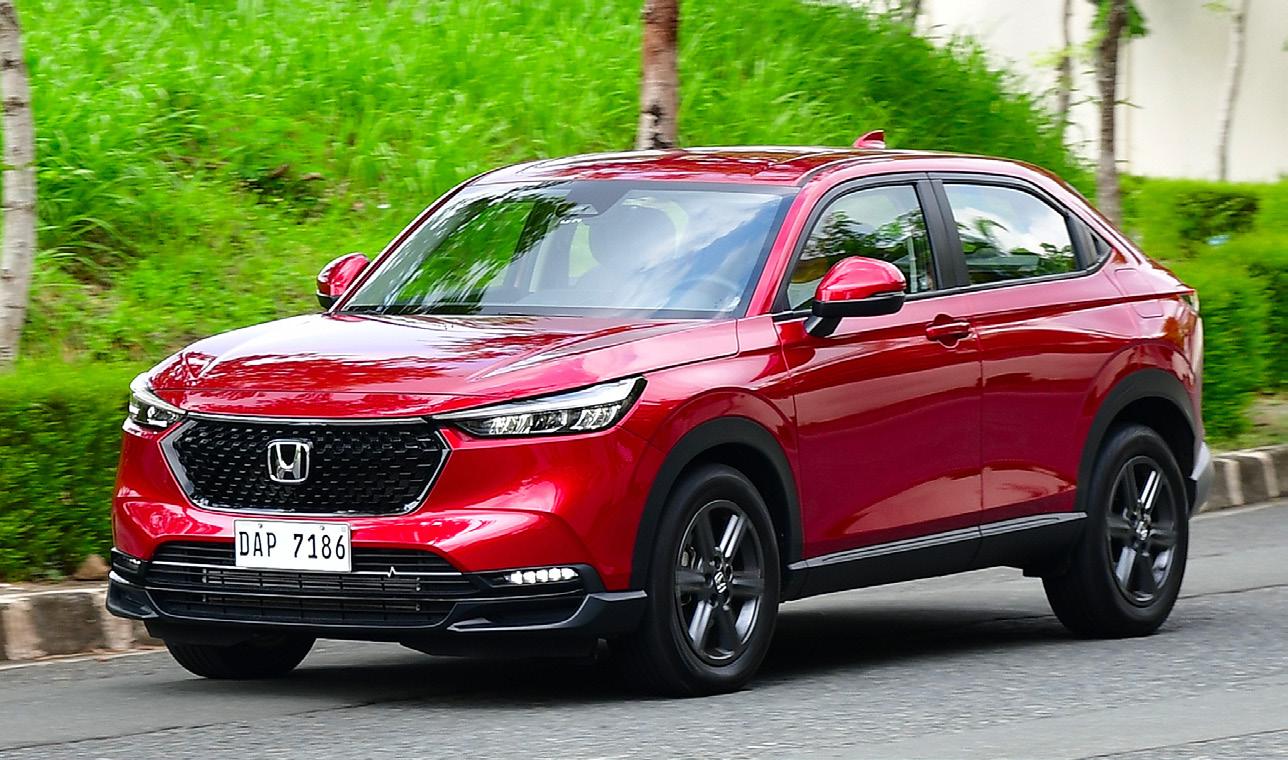
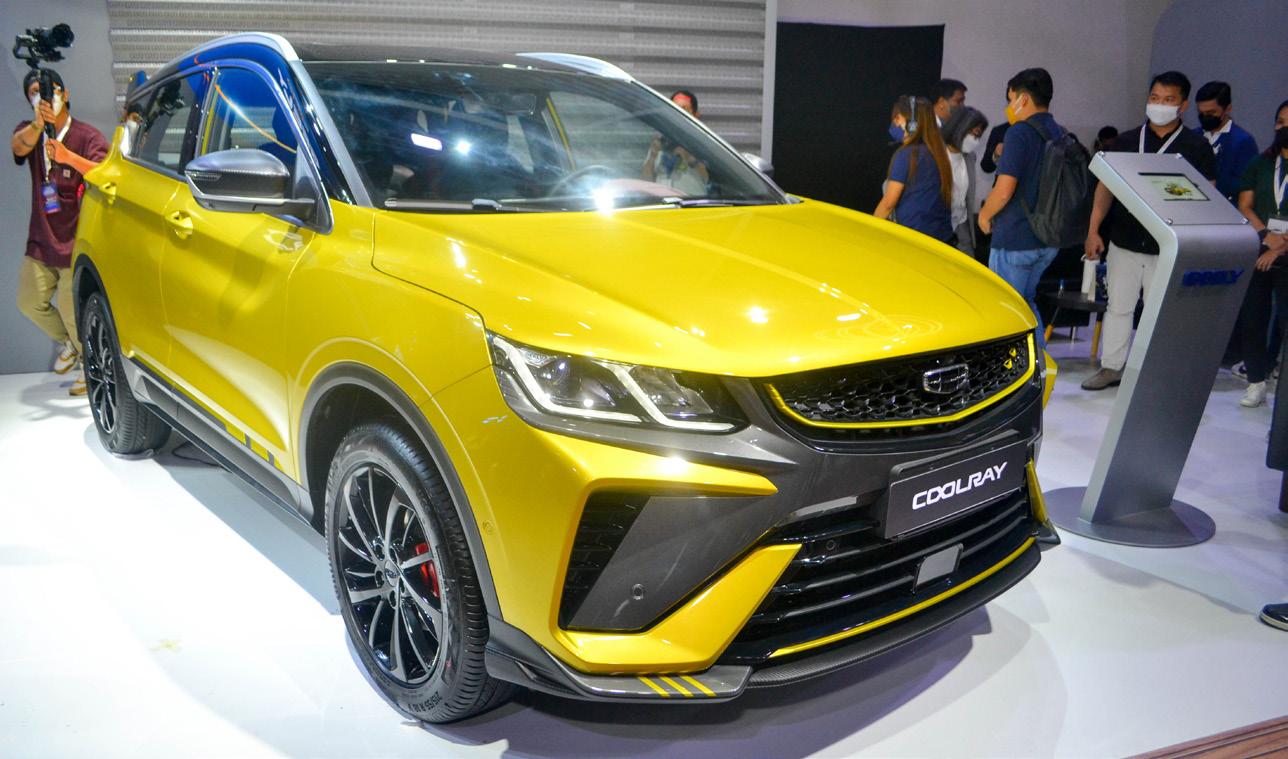
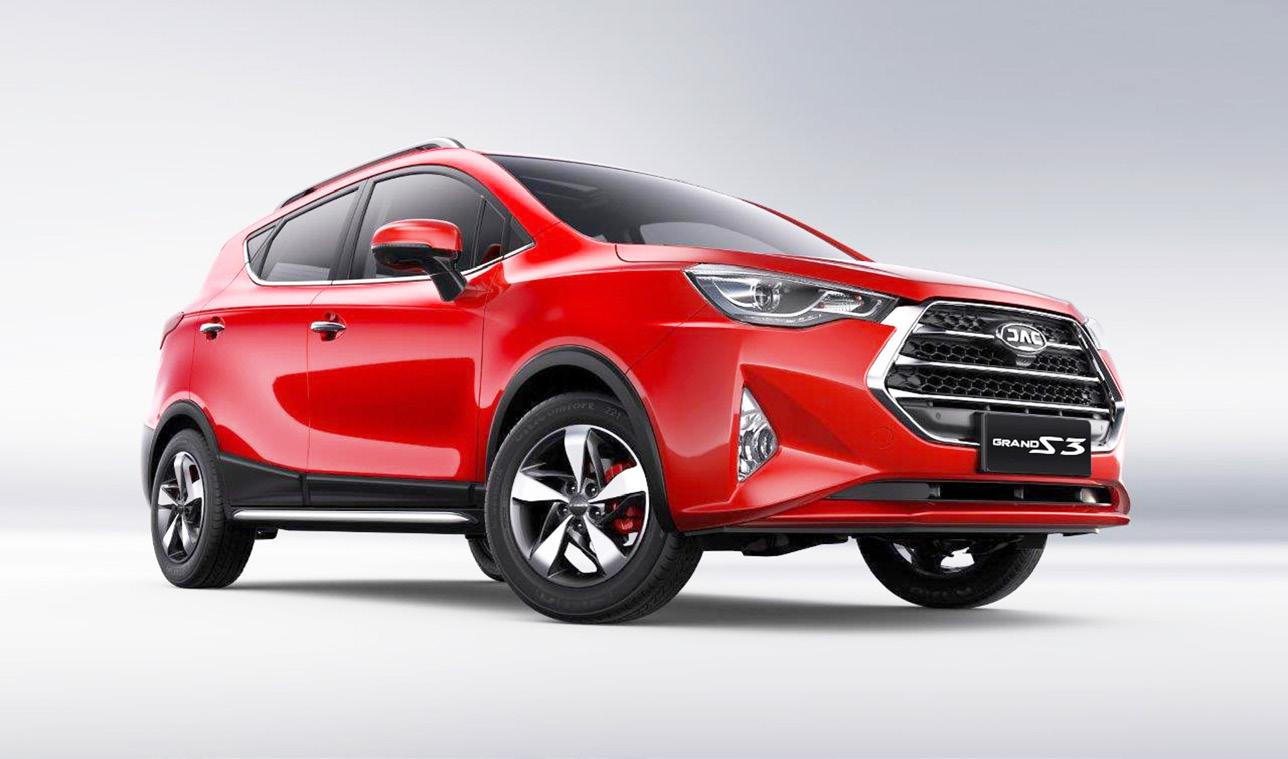
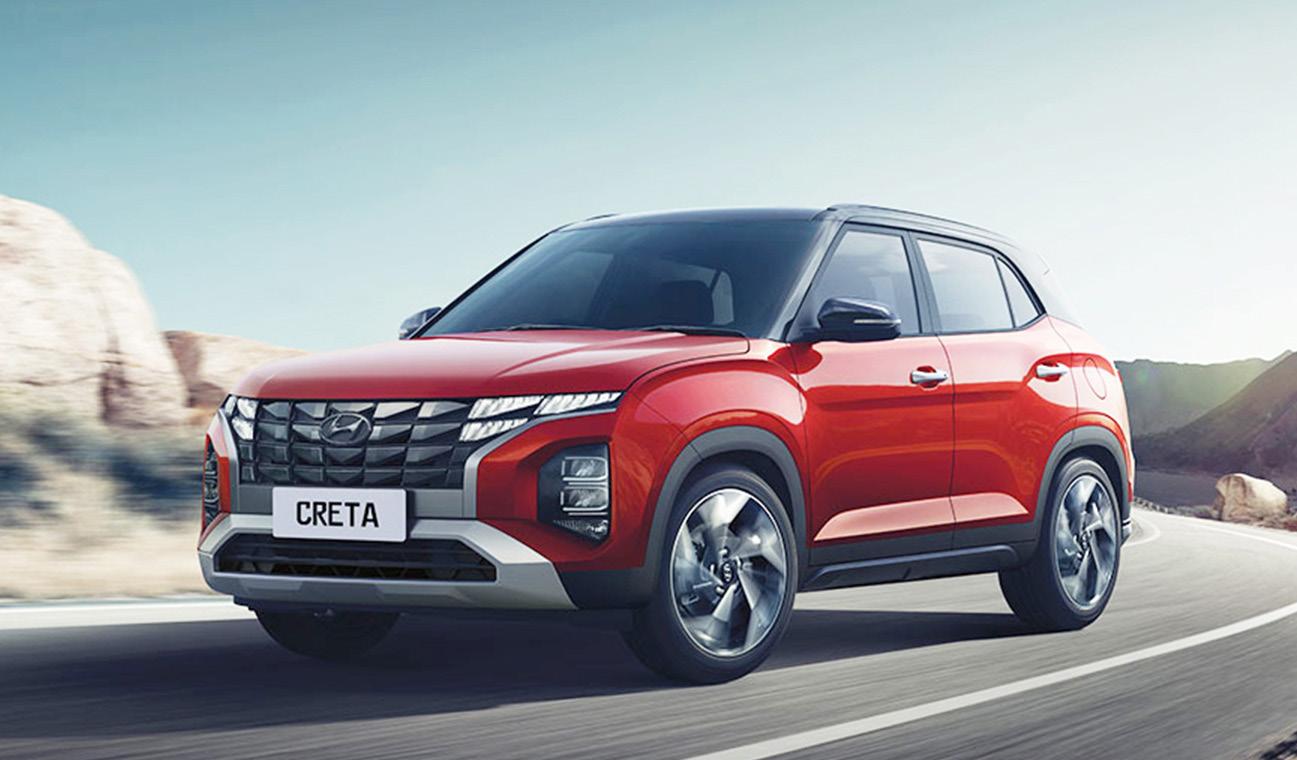
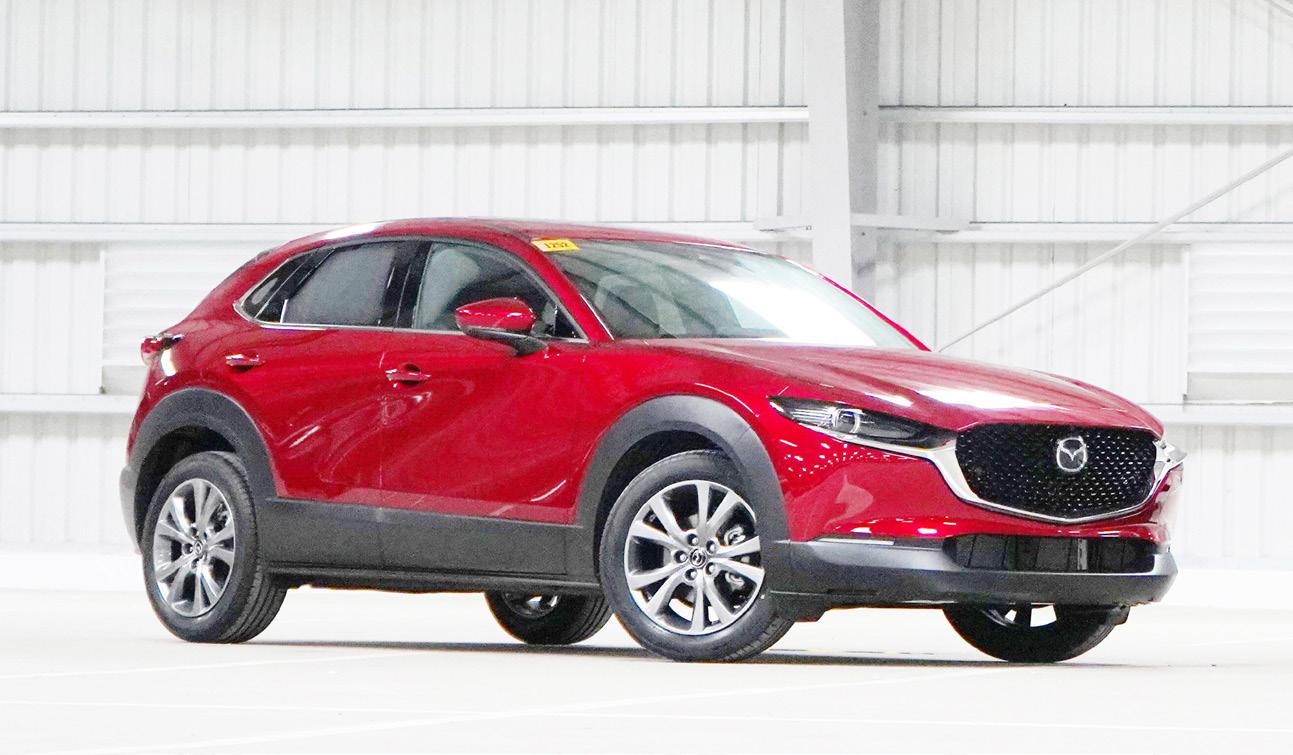
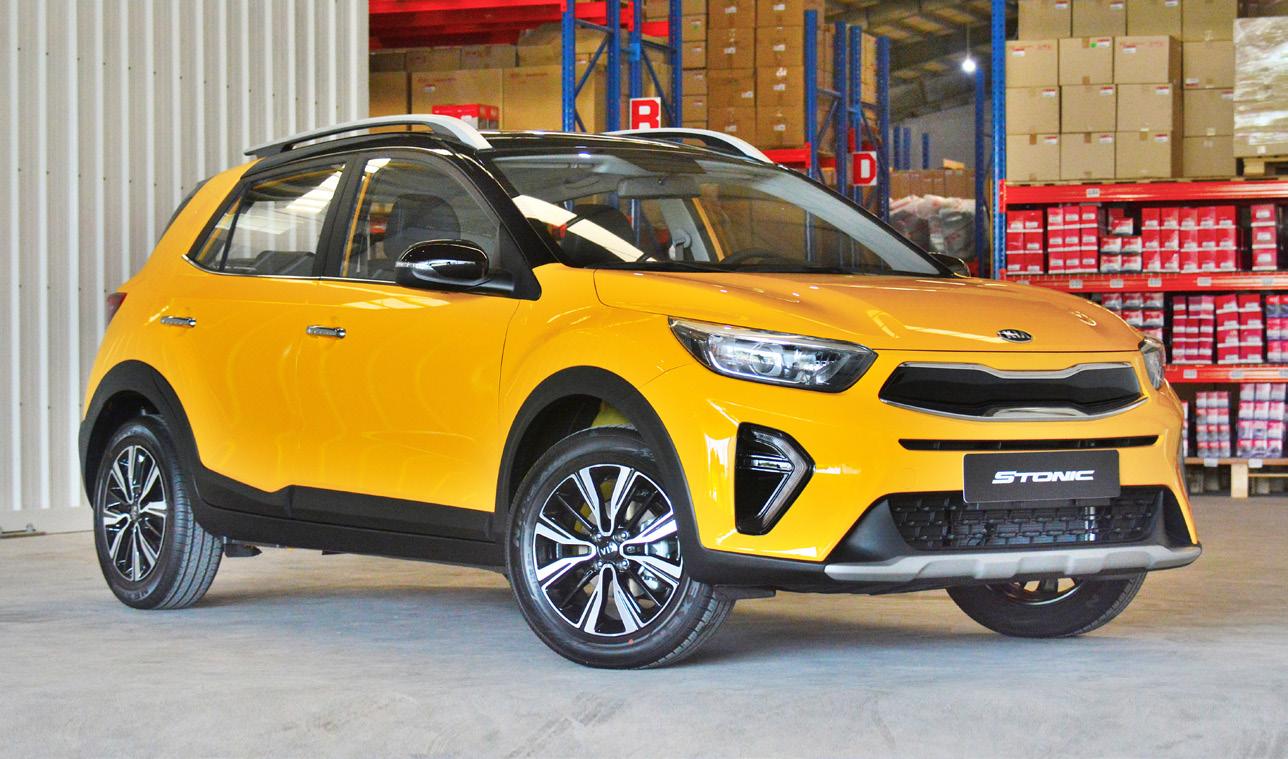
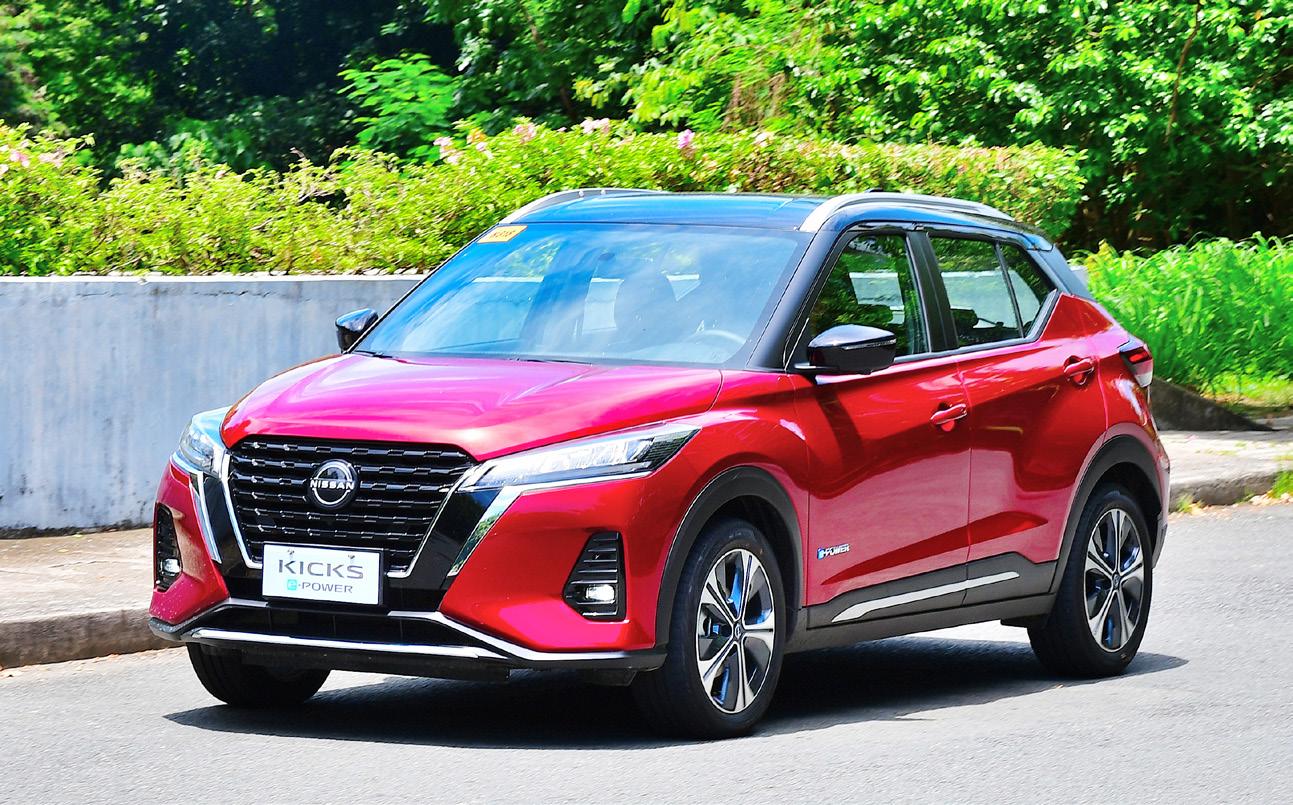
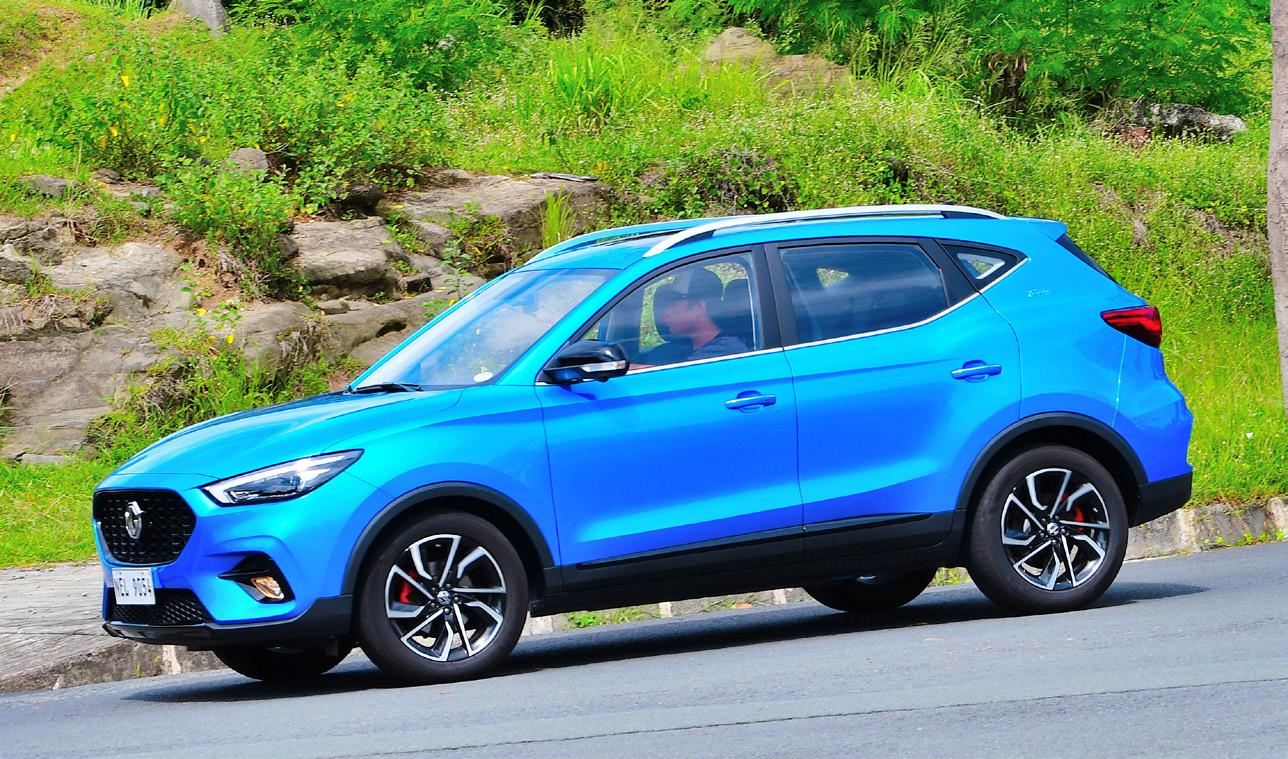

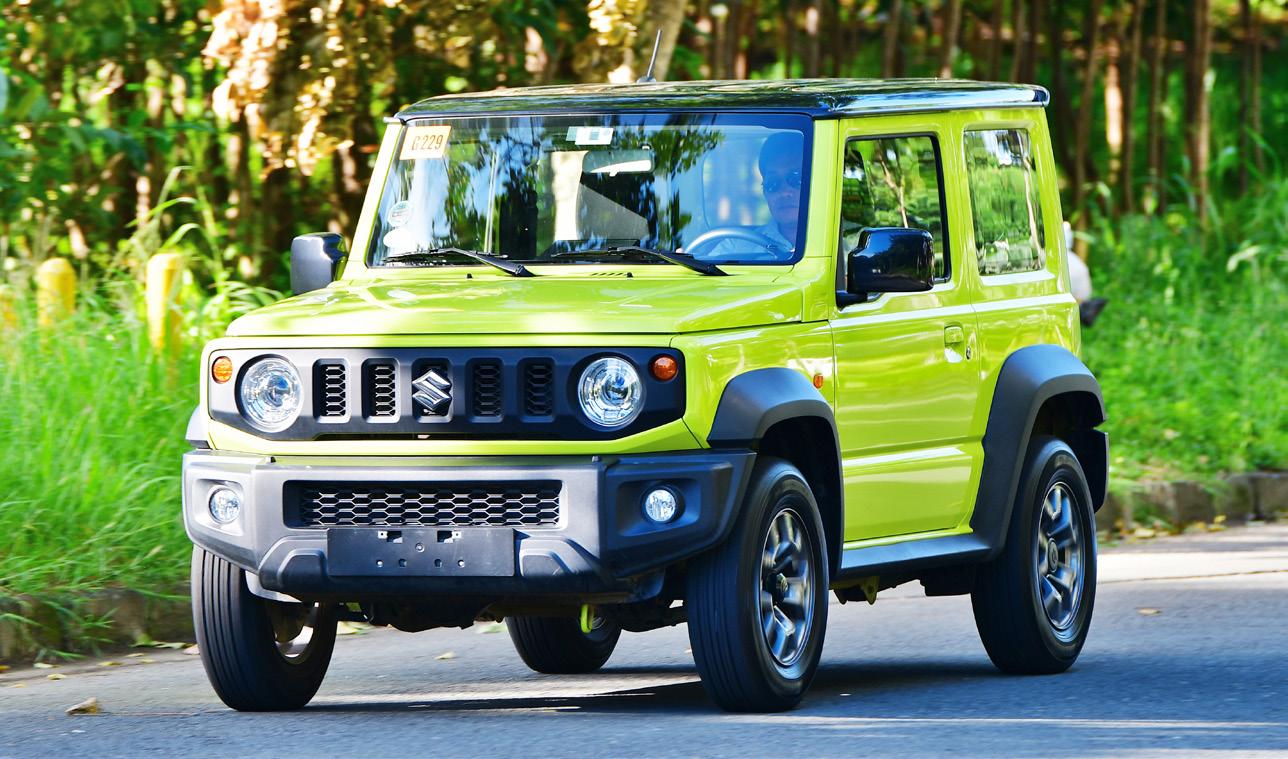


Safety Reminder From It sounds wrong because it is wrong.
Let’s not turn our public roads into racetracks.
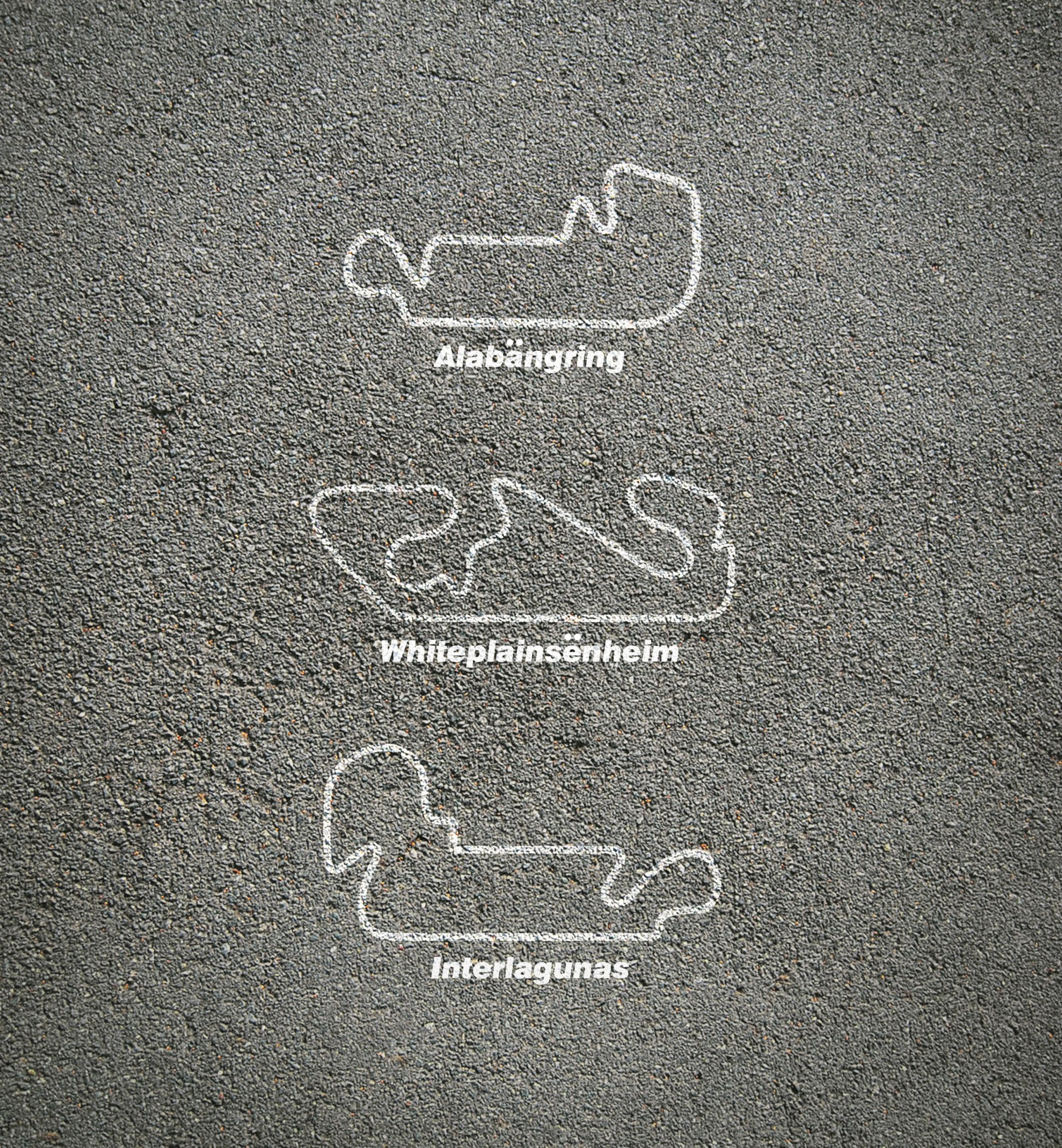 A
A


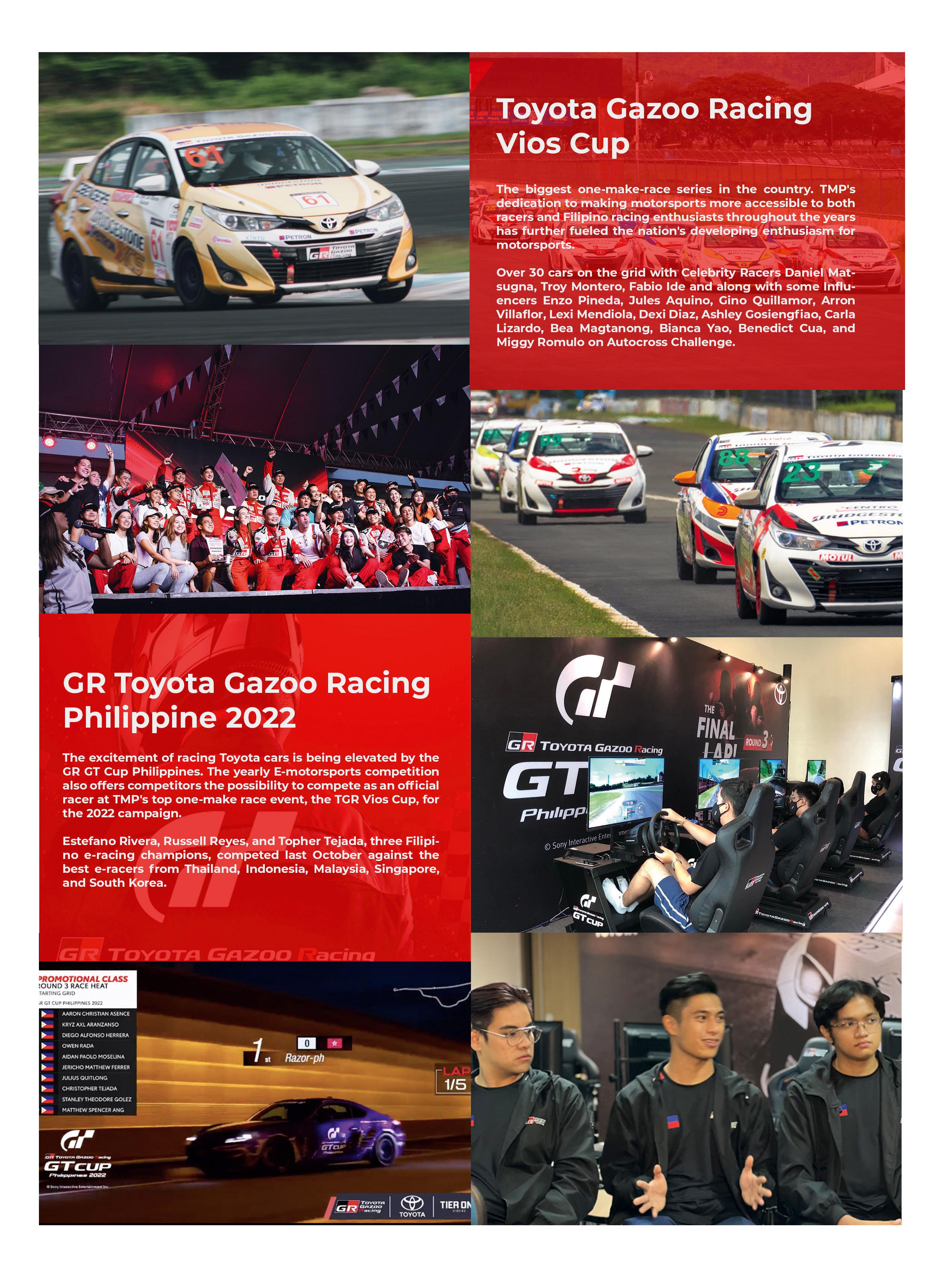
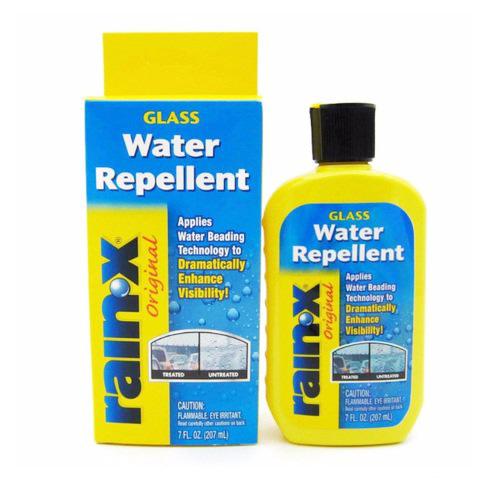
If you’ve ever been caught driving in the middle of torrential rain you’d know how annoying it is to have water droplets impeding the visibility of your car’s windshield. Well, thanks to even just a light dab of some Rain X water repellent, you will never have to worry about this problem again — not for another month or so, that is.

While there are many car freshener brands and scents available at your local auto parts store, Air Spencer has amassed somewhat of a cult following in the tuner scene. Most people claim that the brand, although more pricey than other fresheners in the market, lasts significantly longer — sometimes for over a year. Not only that, if you’re a JDM enthusiast, the aesthetic of the packaging itself gives your car a very Japanese vibe.
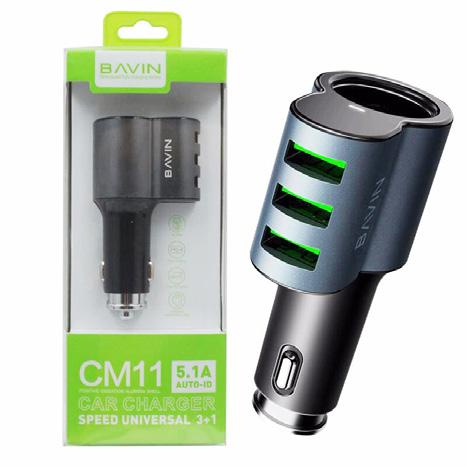
Cool as your 90s rice-rocket may be, the one thing that modern cars have an advantage over it is connectivity. Thankfully you can now maximize its virtually obsolete cigarette lighter by sticking in a USB adaptor to charge your gadgets. This particular fast charger lets you charge three separate things at once and still provide you with a cigarette lighter port.
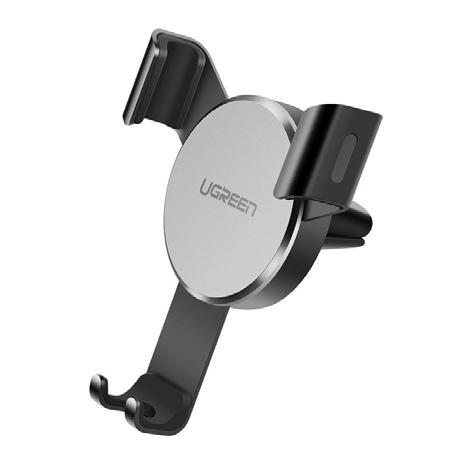
This nifty little gadget slots into your car’s air conditioning vent and, with the use of gravity, holds your phone. Slide your phone in and the arms on the side lock it in place, even when it's bumpy. It’ll fit most phones — except for maybe the newer flip variety — and most rectangular air vents.
With Christmas fast approaching, everyone is frantically searching for presents to give that are not only useful but also come with a personal touch. Fortunately these days, the rise in online shopping has made this pursuit rather more convenient. If you’re ever in a pinch to give your car-loving friend or family member a Christmas present that’ll warm his or her heart, we’ve got you covered!
Dash cam these days are more than just an added luxury, they’re quickly becoming a necessity. The technology and their resolution over the last few years have improved by leaps and bounds and now even the most affordable ones can shoot in full high-definition. Xiaomi, one of the leading brands in Technology over in China, now has a dashcam that has voice command. Not only that, it has the ability to connect to your phone so you can play back your footage instantaneously.

Every new car has a periodic maintenance schedule that lessens the need for repairs in the future. So it pays to follow the schedule.

An ounce of prevention is better than a pound of repairsA Safety Reminder From
